Sue Clayton Looks Back at Her Career With Agriculture in the Classroom-Manitoba
BY ANGELA LOVELL
After seven-and-a-half years with Agriculture in the Classroom Manitoba (AITC-M), Sue Clayton has retired as its Executive Director, and Cattle Country caught up with her recently to reflect on a career where she has focused on ensuring students graduate high school agriculturally literate.
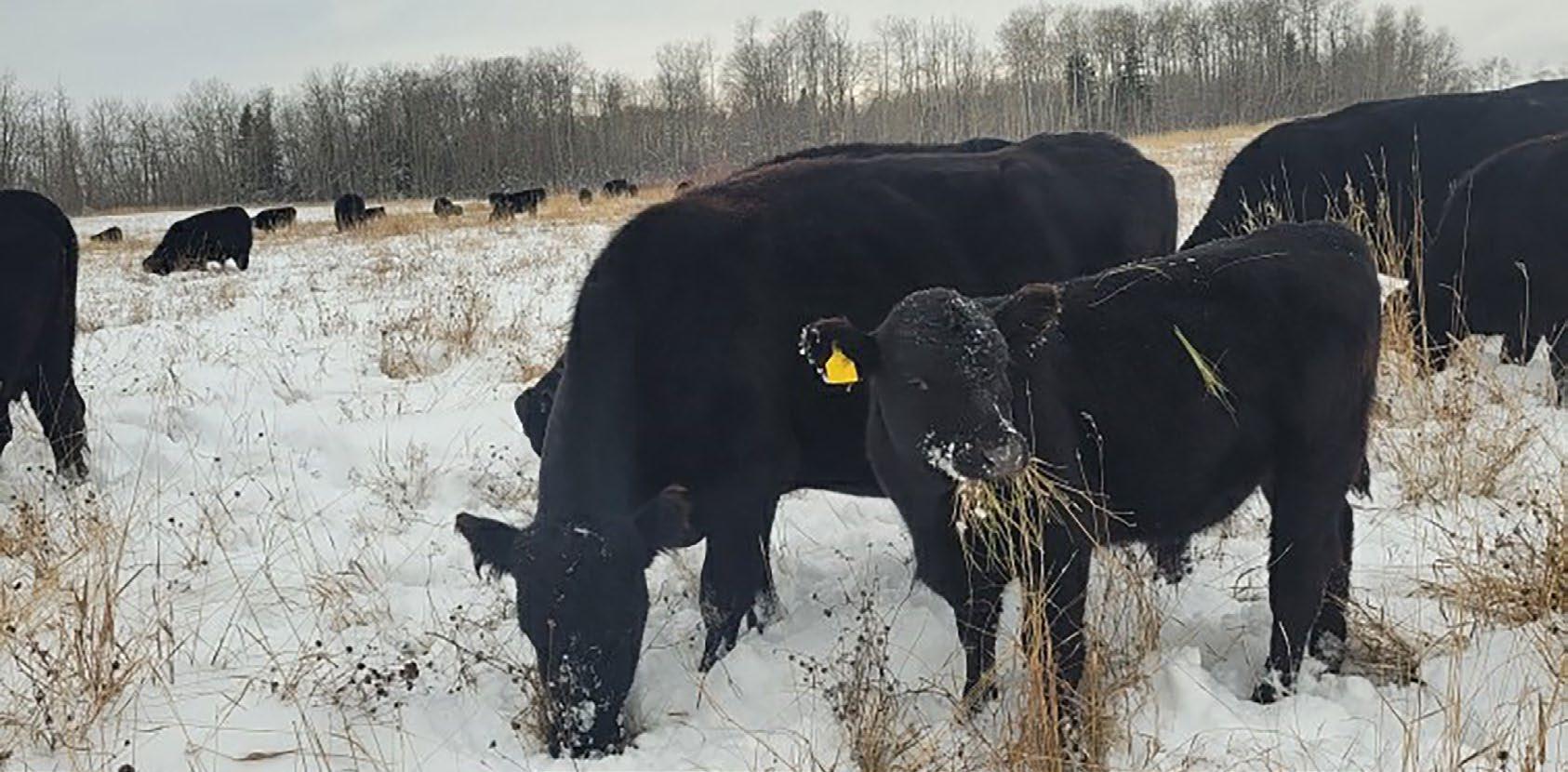
“Agriculture in the Classroom Manitoba’s goal is that when students graduate from high school, they are agriculturally literate citizens,” Clayton says. “What that means is that when they go to the grocery store, they understand what labels mean. That when they go to vote, they understand that agriculture is a huge driver of our provincial and federal economy, and that one in eight jobs in Canada are directly linked to agriculture. And when they graduate, because they are aware of our industry, they are potentially interested in working in our industry, or at least know that it’s important to support the industry.”
The path to Agriculture in the Classroom-Manitoba
Clayton has a degree in Agricultural Economics from the University of Manitoba, and her career took
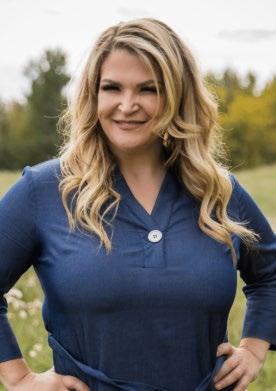
many turns before she ended up with AITC-M. She worked in the crop protection industry in Saskatchewan before spending a few years in Europe as head of international marketing and regulatory affairs for a division of ConAgra. After taking a break to raise her young children, she returned to the ag industry in a different role as the Community Liaison Coordinator at the University of Manitoba, where she first made her connections with AITC-M.
“At the U of M my job was student recruitment and marketing, and that’s where my path started to cross with Ag in the Classroom Manitoba,” she says. “I became interested in what they were doing because they were trying to educate students in schools about agriculture and where their food comes from. It made sense to me to work in partnership with them at the university level, so that by the time we were trying to recruit students coming out of high school, they would have more of a knowledge of the agriculture industry.”
That led to collaborations that continue to this day, including hosting school classrooms at the university faculty and professional development about agriculture for teachers. Clayton eventually joined the AITC-M board of directors, and was offered the position of

Executive Director a few years later.
Clayton has always been strongly committed to partnerships and collaborations. “You often see that two plus two equals five,” she says. “When people and organizations work together, we can be so much more efficient and accomplish more.”
Strong ties to the beef industry
Ag in the Classroom-Manitoba works with all commodity groups in Canadian agriculture, but has a strong history of working with the beef industry, something that Clayton has built on during her career. There has always been a beef station at the annual Amazing Agriculture Adventure (AAA), held at the Richardson’s Kelburn Farm and the University of Manitoba’s Glenlea Research Station near Winnipeg, that gives students in Grades 3 to 6 a hands-on, interactive ag experience.
At Brandon’s Manitoba Ag Days, Manitoba Beef Producers (MBP) partners with AITC-M to offer activities at their booth for Grade 7 and 8 students. It’s through these events that Clayton has made strong connections with producers, including Dianne Riding, past president of MBP.
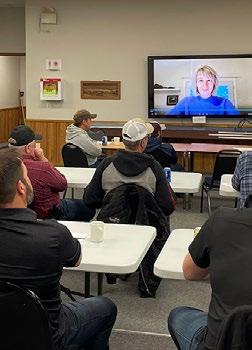

www.mbbeef.ca PUBLISHED BY MANITOBA BEEF PRODUCERS DECEMBER 2022 POSTMASTER PLEASE R ET URN UNDELIVERABLE C OPIE S TO MB P, UNI T 220, 530 CENTU RY S TREE T, W I NNIPE G, M B R3H 0Y4 CANADIAN PUBLIC AT IONS MAIL P RODU CT SAL ES AG REEMEN T NUMBE R 40005187 P OS TA GE P AID IN W INNIPE G.
Column Page 2 District Meeting Resolutions Page 4 Fixing the Disconnect Problem Page 5
President’s
Winter arrived in Onanole near Riding Mountain National Park in early November. (Photo credit: MBP)
Page 3
It’s the most wonderful time of the year… and quite possibly, the busiest! In talking to many producers at our recent fall district meetings, it was a pretty consistent story that we all felt like we were a few weeks behind in our preparations for winter. Considering this, it was great to meet and catch up with many of you who attended, but also provided some rationale as to why many regular attendees were not able to make it.
For me, the biggest takeaway from the district meetings was the collective concern about shrinking cow numbers in the province and the long-term implications for our industry and communities. While this sentiment is not new, especially after the adverse weather events of the last few years, the number of herd dispersal sales that have taken place this fall seems to be easily the largest in a decade. I have firsthand experience with this trend as two of my cattle producing neighbours sold most of their cows this fall.
I can understand the pressures that have led to this disturbing trend. Rising input costs, a shrinking skilled labour force, extremely challenging weather events and, until this year, stagnant fall calf prices have all contrib-
 TYLER FULTON President’s Column
TYLER FULTON President’s Column



















































uted to the trend of selling cows. Honestly, it’s a wonder we did not experience this selloff even earlier.

















Cattle farmers and ranchers are a persistent bunch. We take pride in raising healthy animals, at times in extreme conditions. For many of us, raising cattle in Manitoba is a legacy and a lifestyle that we love and are willing to sacrifice our time and resources to sustain. But I personally wonder if this “resilient cattle culture” contributes to a bias to a more stable supply as compared to other commodities that would not tolerate the same challenges and risks? We may call it resilient, that we can experience droughts and floods and keep operating, but the collective effect of maintaining a relatively stable supply of cattle to the marketplace must be significant and could possibly be a factor that impacts our cattle prices.
In any case, I believe our industry is at a turning point in profitability if we see a moderation in the extreme weather we have experienced in the last two years. Calf prices are up 25-30% from year ago levels, which represents the biggest gain we have seen in about eight years. Going forward, I think we can expect even stronger prices as US feeder cattle futures prices have a 15% rally built into them over the next year. Market analysts have an expectation of a North American wide long-term reduction in the cow herd, a response to the drought of the last two years that has yet to break its hold in many areas of the US.

In closing out 2022, I am thankful for our resilient producers who stick with it through all the challenges and I am hopeful that we will be rewarded for our efforts. We do have new producers starting their cattle career every year that see opportunity in our industry, and this gives me optimism for the future. Merry Christmas from all of us representing you at Manitoba Beef Producers and here’s to a prosperous 2023!
Committment to the land, water, air, and wildlife is a prerequisite to raising healthy cattle. Sustainability is not a buzzword... it's a way of life.
Committment to the land, water, air, and wildlife is a prerequisite to raising healthy cattle. Sustainability is not a buzzword... it's a way of life.

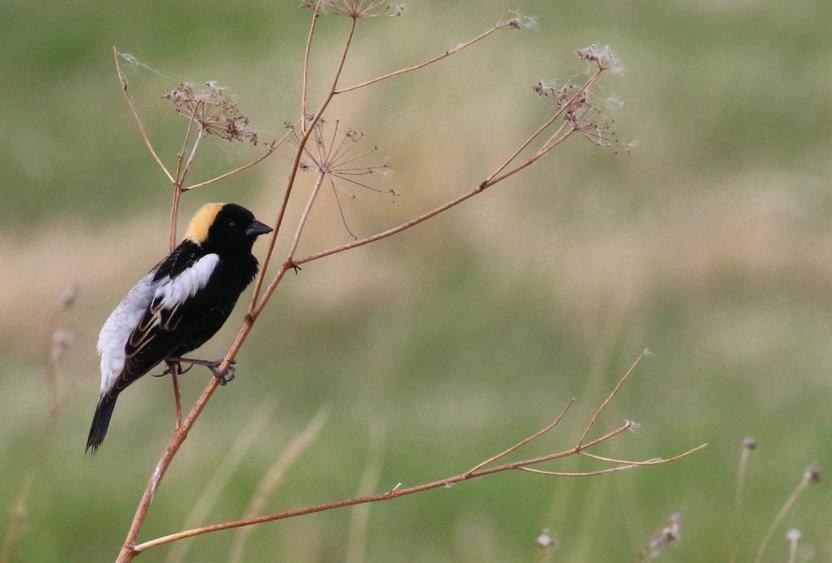

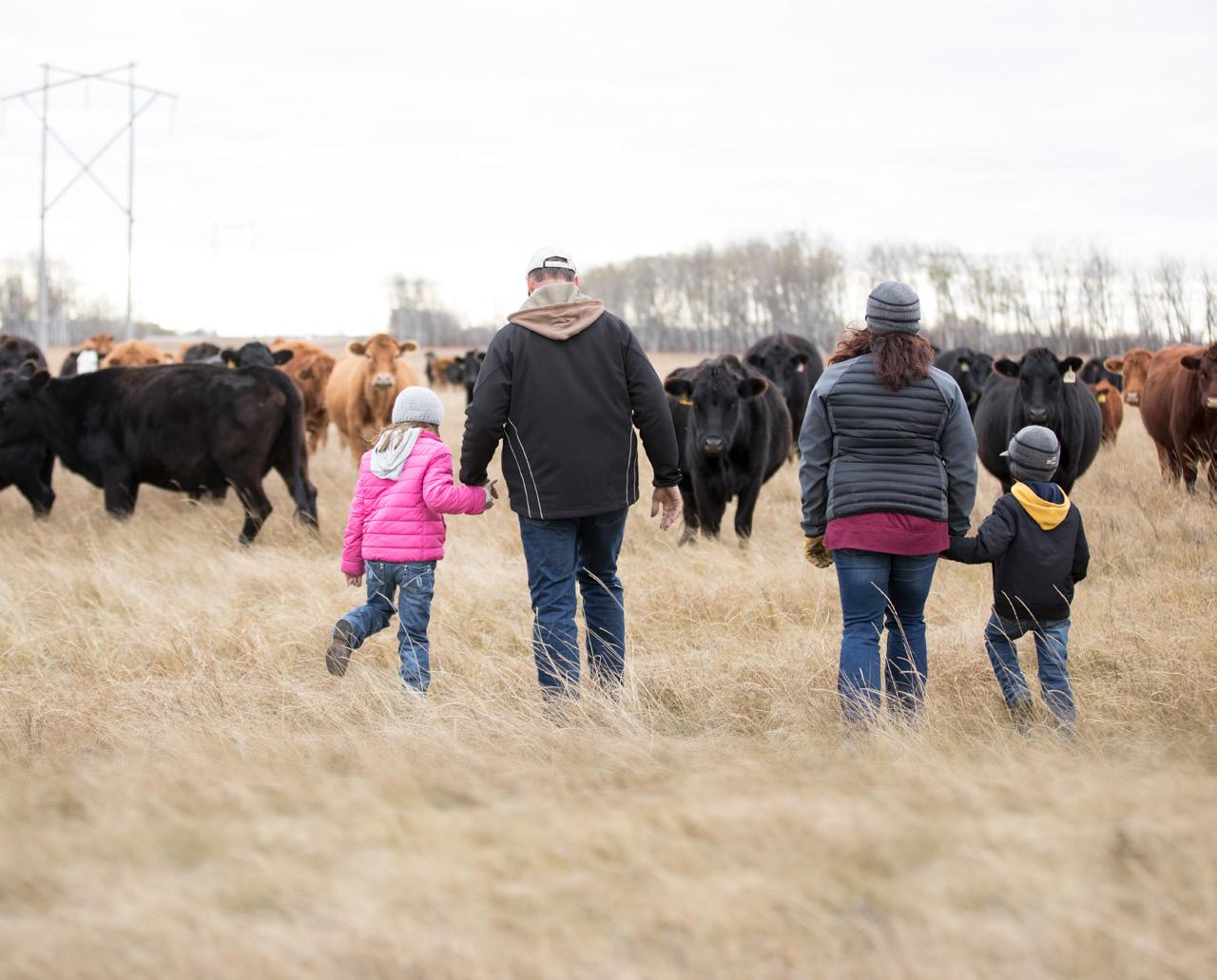

2 CATTLE COUNTRY December 2022 www.mbbeef.ca T 13 ZIUK Dauphin, Ethelbert, Gilbert Plains, Grandview, Roblin and Mossey River COMMUNICATIONS AND MARKETING LEAD David Hultin RESEARCH AND EXTENSION SPECIALIST Melissa Atchison D ES IGNE D B Y Print Studio One C AT T L E CO U N TR Y E D I TO R David Hultin LIVESTOCK PREDATION PRE VENTION PROJEC T COORDINATOR Ray Bittner O F FIC E A SS I S TA N T Jennifer Patryluk FINANC E Deb Walger DISTRIC T 14 VACANT Minitonas-Bowsman, Mountain, and Swan Valley West NI TOB A BE E F PROD U C E R S Ph: 1-800-772-0458 t 220, 530 Ce n t u r y S t ree t Wi nn ipe g, MB R 3H 0Y 4 PH - (204) 772-4542 FX - (204) 774-3264 info@mbbeef ca www.mbbeef ca Carson Callum GEN E RA L M AN AG E R R.M. of Piney and Reynolds Maureen Cousins POLI C Y AN A LY S T
Reflecting on our Resilient Cattle Culture
raise the
on raising beef TESA NOMINATION & APPLICATION PACKAGE Photo credit: Jenna Loveridge Applications for Consideration for the Environmental Stewardship Award Due to MBP by December 9 Please Visit www.mbbeef.ca/our-news/applications-for-consideration-for-the-environmental-stewardship-award-due-to-mbp-by-december-9/ FOCUSED ON BREEDING MATERNAL GRASS BASEDgenetics MARCH 11 . 2023 ASHERN, MANITOBA | SALE STARTS AT 1PM 50 RUGGED 2 YEAR OLD BLACK & RED ANGUS BULLS EDIE CREEK GREAT ONE 77F (204) 471-4696 JONATHAN (204) 232-1620 STEFAN Merry Christmas! MODERATE MATERNAL EASY CALVING EASY FLESHING MHHC PAYS Landowners to Conserve Wildlife Habitat On Private Lands. TREHERNE OFFICE: Kathy Murray (204) 871-1569 RESTON OFFICE: Carol Graham (204) 821-4943 BOISSEVAIN OFFICE: Tom Moran (204) 305-0276 BRANDON OFFICE: Kasie Cullen (204) 724-0583 FOR MORE INFORMATION CALL: Find out more: www.mhhc.mb.ca
bar
Importance of Beef Industry Engagement
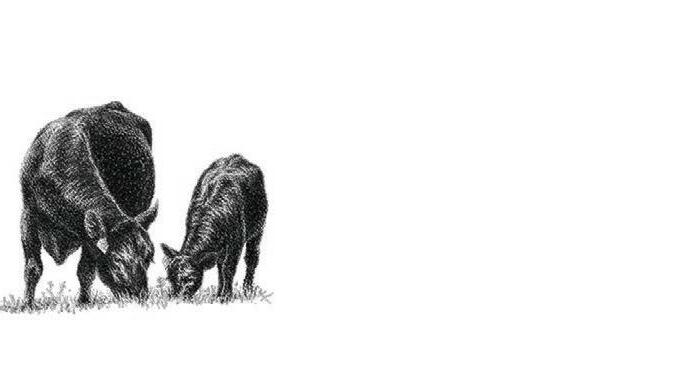
Season’s greetings everyone! I hope you were able to get as much fall work completed as possible before the snow came in mid-November. We got a major dump of it in Winnipeg that looks like it is here to stay. Good winter moisture for next year is great, but let’s just hope we do not get another hammering of spring storms.
What a year we have seen again. Just when we thought the winter snow was going to get us past the recent drought, Colorado decided to send us three consecutive spring storm systems that were devastating to cattle producers. The influx of moisture was a double-edged sword. We needed it for soil and pasture health, but it was a cause of many livestock losses, mainly of young calves. The summer saw an incredible bounce back of pasture and forage stands, to the point where some producers said cattle were being visually lost in fields of grass. As well, prices have improved for the fall run of calves compared to previous few years. This is a good step forward, although input costs still make profitability challenging in the sector overall.
After reviewing our advocacy efforts with producers during our fall district meetings, I want to end the calendar year with a comment on the importance of sectoral representation and having involvement from producers. Over the last two challenging years, MBP has been able to get support for our producers through various levels of government, the top two being AgriRecovery pro-
Page 1 Sue Clayton Looks Back at Her Career
“Dianne is a huge advocate for beef education with students, and she has been fantastic about bringing her cows to AAA,” Clayton says. “We surveyed the teachers and students afterwards, and they always mentioned they loved seeing the live animals. We often had comments about Dianne and how wonderful she was with students, so that goes a long way.”
Clayton says beef is also featured in a new resource that Ag in the Classroom Manitoba is launching in fall 2022 called Eat Well, based on the new Canada Food Guide aimed at Grade 5 science teachers and Grade 7 and 8 home economics teachers.
“One activity in particular looks at proteins and contains accurate information about protein foods, nutrition and sustainable protein food production in Canada,” Clayton says. “Sirloin steak is used to represent the beef protein, and students discover the progress beef producers have made in decreasing the environmental footprint of cattle production.”
As part of the program, teachers show students the Canadian Cattle Association Guardians of the Grasslands video, and MBP’s Manitoba Species at Risk Partnership of Agricultural Land videos. Agriculture in the Classroom Canada has developed resources in French and English to accompany the videos, so teachers can do activities with the students to solidify their learning.
Another program Clayton helped develop, called Follow the Farmers, will feature Manitoba beef producer, Andre Steppler and his family this year.
“Classrooms dial in or participate via Zoom and we show a video that’s been premade of Andre’s farm where he talks about sustainable beef production,” Clayton says. “Andre is there live to answer the students’ questions. Last year we had about 6,000 students involved from all across Manitoba. It’s like a field trip happening right in their classroom.”
To accompany the program, AITC-M has worked with MBP to update its Beef-it-Up activity booklet that will be available to schools this year.
Beef is also prominently featured, says Clayton in AITC-M’s new virtual resource hub called Foundations of Manitoba Agriculture, developed with the industry.
“With the virtual hub, there are three different things for each commodity, and one is an in-depth, deep dive into the commodity,” she says. “That is aimed at high school students and teachers, and there’s a short form version that’s more for younger kids with diagrams and lighter information, and then there’s an e-learning activity to help kids learn more about that particular commodity.”
A lot more interest in food production
Since Clayton first got involved with AITC-M, she has seen numbers of teachers and students participating
CARSON CALLUM General Manager’s Column

gramming for drought impacts and Disaster Financial Assistance (DFA) for livestock mortalities and winter storm damage. These “wins” show the importance of beef sector-specific advocacy work. MBP’s board of directors and staff advocate on many different fronts, and without the great involvement of the whole team at MBP, producers may not have seen support. To ensure we are working on the priority issues and topics in the sector, we need to have continued engagement with you, the producers on the landscape to help inform our advocacy work. I greatly thank all those who are engaged in the sector’s issues provincially and nationally, and I look forward to seeing where we go from here with the great leadership of producers from Manitoba’s beef industry.
With the impacts of the pandemic lessening, I also consider this year as the “we can meet again” year. I have had so many phenomenal in-person engagements again, such as lobby fly-ins with MPs in Ottawa to discuss beef industry issues and opportunities. Thanks to the Manitoba Forage and Grassland Association (MFGA)
staff and board of directors for putting on another great Regen Ag conference in Brandon mid-November. The level of attendance and engagement was very impressive. Lots of great topics were discussed, such as soil health, biodiversity, carbon, and metrics to gauge the outcomes from various practices. All of these tie into the importance of having cattle on the land. Great job MFGA!
We look forward to continued engagement with you in the production, policy and legislation realms at our 44th Annual General Meeting on February 2-3, 2023, this time at a different venue, the Victoria Inn in Winnipeg. We will be looking at a wide range of topics in the sector, such as research and managing risks on farm. We also have two thought-provoking and entertaining slots filled on the agenda. The keynote speaker for Day 1 after the business component will be Tim Hague Sr., winner of the Amazing Race Canada several years ago. He will touch on motivation and perseverance in tough times, something that producers will certainly be able to relate to. For entertainment, following the president’s banquet we will have a comedic husband/wife duo. I know ending the day with shared laughs is some of the best mental health therapy anyone can have. I am greatly looking forward to our AGM in February, minus the cold weather.
Merry Christmas to all of you and your families, and cheers to the New Year!
in its various programs double.
“We have seen a lot more interest,” she says. “During Canadian Agriculture Literacy month in March, we ask producers and industry representatives to go into classrooms across the province and tell their story. When I’ve talked to beef producers that have done this, they say the most amazing thing for them is talking to kids and telling their story about how they care for their animals. There has been a lot of misconception around the animal care issue, specifically, that I believe has started to be rectified by telling the accurate, balanced and current story, and a lot of that is through direct interaction between producers, industry people and kids.”
That growing interest in food and agriculture has been the biggest change Clayton has seen over her career, so there is no end to the work and resources that AITC provides across Manitoba and the rest of Canada.
“During COVID there was a lot of interest in where our food came from, especially with the sudden supply chain issues,” she says. “People want to know how our food is grown, where it comes from, is it local or not local, about food safety and what is in our food. That is what we are trying to help students and teachers understand.”
Encouraging agricultural literacy
Looking back over her time at AITC-M, Clayton says one of the things she is most proud of is the Pillars of Agricultural Literacy that she helped develop about four years ago.
“There are six pillars that we focus on; agriculture and the environment, food, fibre and energy, animals, lifestyle, technology and the economy, and we have an educator on staff, Karen Hill, who is also a cattle producer,” Clayton says. “Karen and the staff went through the whole kindergarten to grade 12 curriculums in Manitoba, every unit, every grade, every subject, and explored where agriculture could weave into that curriculum because it’s not specifically taught anywhere. Our challenge is to weave agricultural content into curriculums so that when teachers are teaching the subject to students, they’re legitimately teaching what Manitoba Education has mandated they must teach in that subject matter. Everything that we do has to be linked to Manitoba curriculum.”
The pillars, says Clayton help AITC-M ensure its resources and programs are better focused and targeted for specific grades and subject areas.
“The idea is that eventually over many years, we will have a full complement of resources, activities and programs under every single pillar so that we can legitimately say students in Manitoba will be
agriculturally literate when they graduate from high school,” Clayton says. “It took us a long time to do this work and we hold this up constantly when we’re developing a new program, resource or activity to say where does this fit or does it fit?”
Clayton is also proud that AITC-M created a new position to work on career exploration for students.
“We were getting many phone calls from schools and school divisions saying can you come and talk to our career counsellors, or our high school students about careers in agriculture, and we had had some great resources from Ag in the Classroom Canada, and locally, but we didn’t have anyone that we could spare the time to go and do that,” Clayton says. “We hired Adelle Gervin (also a beef producer) and this November, AITC-M is launching a Careers Exploration Program across the province. It’s been in the works for a long time and I’m proud that we’re accomplishing something that both the ag and education industry have been asking for.”
Coming full circle
Clayton is coming full circle in her career, as she heads back to the University of Manitoba in the role of Director of the School of Agriculture. She is excited to be working again with students who want to make their careers in the ag industry, and is positive about the future of ag in Manitoba and Canada.
“There are amazing people working to educate students across the province; teachers and people from all of the commodity associations and industry groups that we work with, and hundreds of volunteers,” she says. “When you see people in the industry getting passionate about what they do and educating kids, it’s really inspiring. It gets me excited about a bright future. I think that the general public is becoming more aware of the importance of farmers, producers and the industry in general, and are becoming more supportive of food production. And I see more students becoming interested in the science and the business of agriculture, and seeing a bright future for themselves.”
3 CATTLE COUNTRY December 2022 www.mbbeef.ca
Keystone livestock specializing in livestock insurance for over 45 years LIVESTOCK INSURANCE Lois McRae & Joyce Gordon RR 1 Box 57 Brandon,
h:
c:
f:
marmacfarms1@gmail.com SERVICES
Manitoba R7A 5Y1
204-728-3058
204-573-5192
204-727-7744
Resolutions Arising from the 2022 Fall Manitoba Beef Producers District Meetings

Five resolutions came forward from Manitoba Beef Producers’ fall district meetings which were held in odd-numbered districts where director elections were required.

Resolutions will be debated at MBP’s 44th Annual General Meeting (AGM) set for February 2-3, 2023 at a new location: the Victoria Inn at 1808 Wellington Avenue in Winnipeg.
MBP’s board of directors is also accepting in writing suggested late resolutions for potential debate at the AGM. Details on how to submit those can be found in this article after the list of resolutions arising from the district meetings. In consultation with the resolution’s author, proposed resolutions may be subject to editing by MBP for clarity and to ensure consistency of formatting across all resolutions.
Resolutions Arising From the District Meetings
District 9 – Oct. 19, Stonewall
9.1 Whereas wildlife such as deer and elk cause irreparable damage to stockpiled feed during the winter months.
Be it resolved to recommend that Manitoba Beef Producers lobby the provincial government to provide financial assistance for a fencing program to reduce the risk of wildlife eating stockpiled feed.
District 11 – Oct. 20, Ashern
11.1 Whereas predation issues continue to be a major concern for producers in Manitoba.
Be it resolved to recommend that Manitoba Beef Producers lobby the provincial government to investigate reinstating resources specific to addressing predation related to problem predators, including a rapid response process.
District 7 – Oct. 25, Miniota
7.1 Whereas labour challenges, including the availability of skilled labour, continue to be a major issue in the agriculture sector.
Be it resolved to recommend that Manitoba Beef Producers lobby the provincial and federal governments to streamline and/or simplify programs to secure timely access to agricultural workers for Canada.
7.2 Whereas some beef producers have been experiencing issues getting timely access to Manitoba Agricultural Services Corporation’s (MASC) staff to answer program questions, to process claims, etc. due to MASC office consolidations in recent years.

Be it resolved to recommend that Manitoba Beef Producers lobby Manitoba Agricultural Services Corporation and the Government of Manitoba to consider reopening some previously closed MASC service centres in order to improve customer service levels to agricultural producers.
District 5 – Nov. 2, Austin
5.1 Whereas during August 2022 Keystone Agricultural Producers (KAP) announced its intention to expand its membership base by applying a 1% levy on cattle producers’ initial $26,225.50 in sales, resulting in the deduction of a $262.50 KAP membership fee plus $13.12 GST ($275.62); and

Whereas Manitoba cattle producers already provide financial support for both national and provincial organizations; and
Whereas producers providing KAP with a written “Notice of Objection” as described under Section (26) of The Agricultural Producers Organization Funding Act will be exempted from having the KAP membership levy deducted from their sales for a two-year period (any KAP membership levy collected during the two-year exemption period must be refunded).
Be it resolved to recommend that Manitoba Beef
Producers utilize its publication Cattle Country to publish a copy of Section (26) of The Agricultural Producers Organization Funding Act, accompanied by a brief explanation reminding producers that by providing Keystone Agricultural Producers with a written notice of objection they will become exempt from have the KAP membership levy deducted from their sales for a period of two years.
Be it further resolved to recommend that Manitoba Beef Producers shall make available to its membership a standard fill-in-the-blanks form that could be used by producers wishing to notify KAP of their objection to having KAP membership fees deducted from their sale.
Submitting a Late Resolution
Late resolutions will be accepted for consideration until 9 a.m. Friday, January 27, 2023. If the resolution is deemed to be in order by MBP’s Resolutions Committee it will be considered for debate at the end of the regular resolutions session, time permitting.
Please note: If the resolution covers off matters on which MBP is already conducting advocacy work, it may be deemed to be redundant and not taken forward for debate so as to ensure there is time to debate resolutions on emerging matters. As well, it is also important that proposed resolutions deal with something that is potentially achievable and clearly state the actions you are asking MBP to consider taking.
Send late resolutions to info@mbbeef.ca to the attention of General Manager Carson Callum and Policy Analyst Maureen Cousins. Or, you may fax them to 1-204-774-3264 or mail them to 220-530 Century Street, Winnipeg MB R3H 0Y4. All resolutions for debate will be posted on MBP’s website at www.mbbeef.ca to help ensure Manitoba’s beef producers are aware of them in advance of the AGM.
A sample resolution template can be found on MBP’s website at https://mbbeef.ca/events/save-the-datemanitoba-beef-producers-44th-agm/
We look forward to your participation and ask that you register in advance for the 44th AGM. For more details visit: https://mbbeef.ca/events/.
As a reminder, voting on MBP resolutions is restricted to producers who are members in accordance with MBP’s bylaws. As per the Section 1(1) (b) of the bylaws, membership refers to “Every person who is determined by the Board of Directors to be actively engaged in the raising of cattle in Manitoba, and who pays all fees to the Association in the manner and in the amount imposed on sellers of cattle pursuant to regulations made by the Board of Directors from time to time.” What does this mean? It means that if you have requested a refund in the last 12 months you have not paid all fees to the association as set out by the regulations and are not considered a member in good standing.
4 CATTLE COUNTRY December 2022 www.mbbeef.ca
WEDNESDAY, December 14 Victoria Inn Hotel & Convention Centre WINNIPEG, Manitoba, Canada For info see our website or E-mail: info@prairie livestockexpo.ca prairie livestockexpo.ca Where the LIVESTOCK industry CONNECTS u More than 140 exhibits u MULTI-SPECIES LIVESTOCK SHOW featuring: hog, beef, dairy, sheep, poultry, bison, goat u New & Evolving Technologies: expert presentations for today’s producers u Canada’s largest PORK QUALITY COMPETITION u Latest in livestock production techniques FREE admission FREE parking PLE_AdExhib22_CC_3.15x5.8_ final_pr_.indd 1 2022-08-15 3:52 PM
MBP’s District 1 meeting in Deloraine on November 3. (Photo credit: Melissa Atchison)
Fixing the Disconnect Problem
BY ANGELA LOVELL
One of the biggest problems that people face today is disconnection; the ability to look someone in the eye and make a connection with them.
“The development of technology has allowed for so many things but what it has also given us is the opportunity to look away,” said Dr. Jody Carrington, a psychologist based in Olds, Alberta that has spent the last 20 years working to help people build healthy relationships and effective teams. “The hardest thing we will ever do – despite the fact that we are wired for connection – is to look into the eyes of the people we love.”

It’s a big reason why divorce rates in North America and Europe have increased by 33 per cent, and child maltreatment and domestic violence has never been as high, Carrington explained in her keynote presentation at the 2022 Canadian Beef Industry Conference in Penticton, B.C. in August.
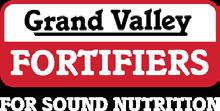

“When we didn’t have exit ramps; when my grandfather was raised in a one-bedroom, 700-square-foot house, there was little opportunity to look away,” she said. “The idea is when we have so many more exit ramps, we will take them.”
bones, and when we get tired, and our resources are down, we lose compassion for people,” Carrington said. “Then, the futility sets in. What’s the point? It’s all too much. So, you see how difficult this is in an industry built on relationships, when burnout becomes really prominent. The ability to stay connected is the thing we need to talk about.”
What has changed since grandpa’s time?

What’s changed over the last couple of generations is that people, in all aspects of society, have been subjected to a system of reward and punishment to try and regulate their behaviours, but it has had the effect of making people even more disconnected than they have ever been.
“The truth is you can’t take enough stuff away from anybody to make them be kind,” Carrington said. “This strict idea of behaviourism, of rewarding and consequences, worked so much better two generations ago because we had one thing present that we didn’t know we had to measure. Proximity to each other.”
People grew up in households where they sat down to dinner as a family every Sunday and showed up when people were going through crises in their lives, whereas today we don’t do these things as often or as instinctively.
their team, whether that is a family, a business team or an organization? There are three things that matter and they need to be addressed in the right order, says Carrington.

Can’t tame what you can’t name
The problem is that no one can address what they don’t acknowledge, and many people simply don’t like to admit when something is wrong.
“The highest rate of suicide in this country is middle-aged men,” Carrington said. “What we like to do is just say everything is OK, but you have got to be able to name it to tame it. When you feel disconnected and overwhelmed, if you have nowhere to put it, it’ll eat you from the inside out. Anxiety and depression won’t kill you but not talking about it might.”
Emotional regulation
The only way that people learn how to regulate their emotion is when they are connected to another human being to show them and walk them through the hard things in life. “One of my favourite philosophers, Ram Dass, said ‘we are all just here walking each other home’,” Carrington said.
Emotional regulation is about being at your calmest.
“We like it best when people are calm,” Carrington said. “An emotionally dysregulated person is like a twoyear-old having a temper tantrum. When children are emotionally regulated, they have access to everything they know to be true; when they flip into emotional dysregulation, they haven’t lost their ability to be kind, they have lost access to it. When we are emotionally dysregulated and overwhelmed, we lose access to all the good parts of us.”
Pandemic has made disconnection worse
The world today is emotionally dysregulated, Carrington said, especially after two years of a pandem ic that took away many of the opportunities for people to connect with each other and regulate their emotions.
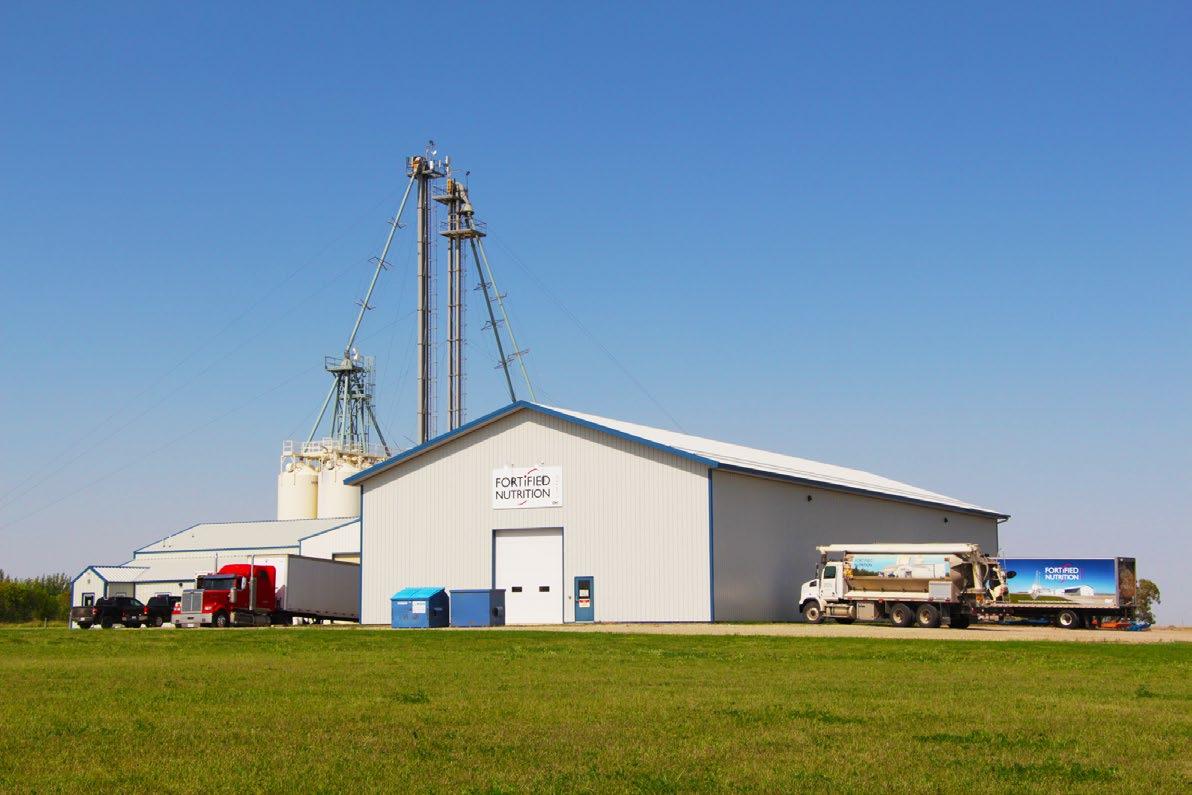
“You learn emotional regulation through faceto-face connection with another human being,” she says, giving the example of putting a crying infant into someone’s arms. Their first instinct is to rock and try to sooth the baby. “There is a rhythmic exchange between the big person and the baby in an attempt to regulate their emotions. This is a universal experience. We es sentially understand what it means to be calmest, to be emotionally regulated, because we feel it in our bones.”
When people are dysregulated and going through the hardest times in their lives, what they don’t need is someone telling them something; they need somebody physically present. “Typically, no words fix emotional dysregulation; human connection does,” Carrington said.
The three things that characterize emotional dysregulation are uncertainty, fear and no end in sight. That leads to burnout. The three prominent things when people reach the burnout stage is emotional exhaustion, lack of compassion and an experience of futility.
“Emotional exhaustion means I am tired to my
“Right now, as a globe, we are tired,” she said. “And we are only OK when the people around us are OK, because we were never meant to do this alone. Right now, we have lost our ability to just show up and go for a coffee, or jump in the truck and go look at the cows today – and that is the thing that we need.”
How to fix disconnection
How to deal with disconnection is to acknowledge each other. “When we are acknowledged we will rise,” Carrington said, adding that she has learned three things about acknowledgement: it is not an apology, it is never a one-shot deal, and it must be genuine.
“Research in the world of human resources and building strong teams has shown that the magic number for acknowledgment is 12 times a year,” she said. “It doesn’t have to have a monetary value. You allow people
“Reconnect as much as you can to your people, your breath and your why,” she says. Your people are a very small, select group that know your soul and who you can always lean into. “Your people are the only reason that we do these things – when you can reconnect with your people you will be okay.”
Next, practice breathing and relax your body. “When you are in a relaxed body, anxiety cannot live there,” she said. “When do this you have access to the best parts of yourself so you can lead your team or family.”
And finally, reflect often on why you are here, what is your legacy? “If you can sink into those three things at least once a week, you are going to be okay,” Carrington says. “Once in that state, you can worry about your team or whatever you are a part of, and then finally the people
5 CATTLE COUNTRY December 2022
WE’RE HERE TO HELP YOU ACHIEVE YOUR BEEF PRODUCTION GOALS. has a complete line of beef products to suit you and your cattle’s needs. From high quality grower- nisher feeds, GVF has products that Gilles Chappellaz 204-805-2094 will maximize your cattle’s performance. Both Vicki, Doug and Gilles o er on farm consultation with regular service and support to ensure that your herd is performing to it’s maximum potential. The three things that characterize emotional
are uncertainty, fear
in
That
to burnout.
things
people
is emotional exhaustion, lack of compassion
dysregulation
and no end
sight.
leads
The three prominent
when
reach the burnout stage
and an experience of futility.
Dr. Jody Carrington
Excess Moisture Insurance Coverage Increasing for the 2023 Crop Year
(October 6, 2022 Joint Federal/Provincial News Release) Manitoba producers will receive higher Excess Moisture Insurance (EMI) coverage levels as part of the AgriInsurance program for the 2023 crop year, federal Agriculture and Agri-Food Minister Marie-Claude Bibeau and Manitoba Agriculture Minister Derek Johnson announced.
“Extreme weather conditions continue to challenge and threaten the viability of many producers,” said Bibeau. “With the increasing cost of inputs, these enhancements to the AgriInsurance program’s Excess Moisture Insurance will allow for greater coverage in the event of financial losses.”
Basic EMI coverage is a standard feature of the AgriInsurance program that provides protection against the inability to seed due to wet conditions. Producers can choose increased coverage options at higher premi-
ums. Since 2000, basic EMI coverage has been $50 per acre, while higher coverage options increased in 2014 to $75 and $100 per acre. For 2023, basic coverage will increase to $75 with higher coverage options increasing to $100 and $125.
These changes were made in consultation with producer groups that have expressed interest in higher coverage levels due to rising farming costs. The province’s share of premiums for the 2023 EMI program is estimated to be $8.6 million.
Manitoba Agricultural Services Corp. (MASC) reports there were 866,000 unseeded acres in Manitoba this year (approximately eight per cent of the total acres), resulting in estimated EMI indemnities of $53.5 million.
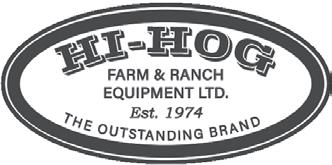
“The excessive moisture during the growing season this year brought extremely challenging conditions for producers across our province,” said Johnson. “The
AgriInsurance program exists for them in these kinds of situations. The newly increased coverage provided through Manitoba Agricultural Services Corporation will bring further assistance and relief to those who need it most.”
MASC will send EMI confirmation letters to all existing AgriInsurance clients later this month to reflect the new coverage levels and premiums. Producers have until Nov. 30 to make changes to their EMI coverage for 2023 by contacting a MASC Service Centre.
Under the Canadian Agricultural Partnership, AgriInsurance premiums for most programs are shared 40 per cent by participating producers, 36 per cent by the Government of Canada and 24 per cent by the Manitoba government. Administrative expenses are paid 60 per cent by Canada and 40 per cent by the Manitoba government.
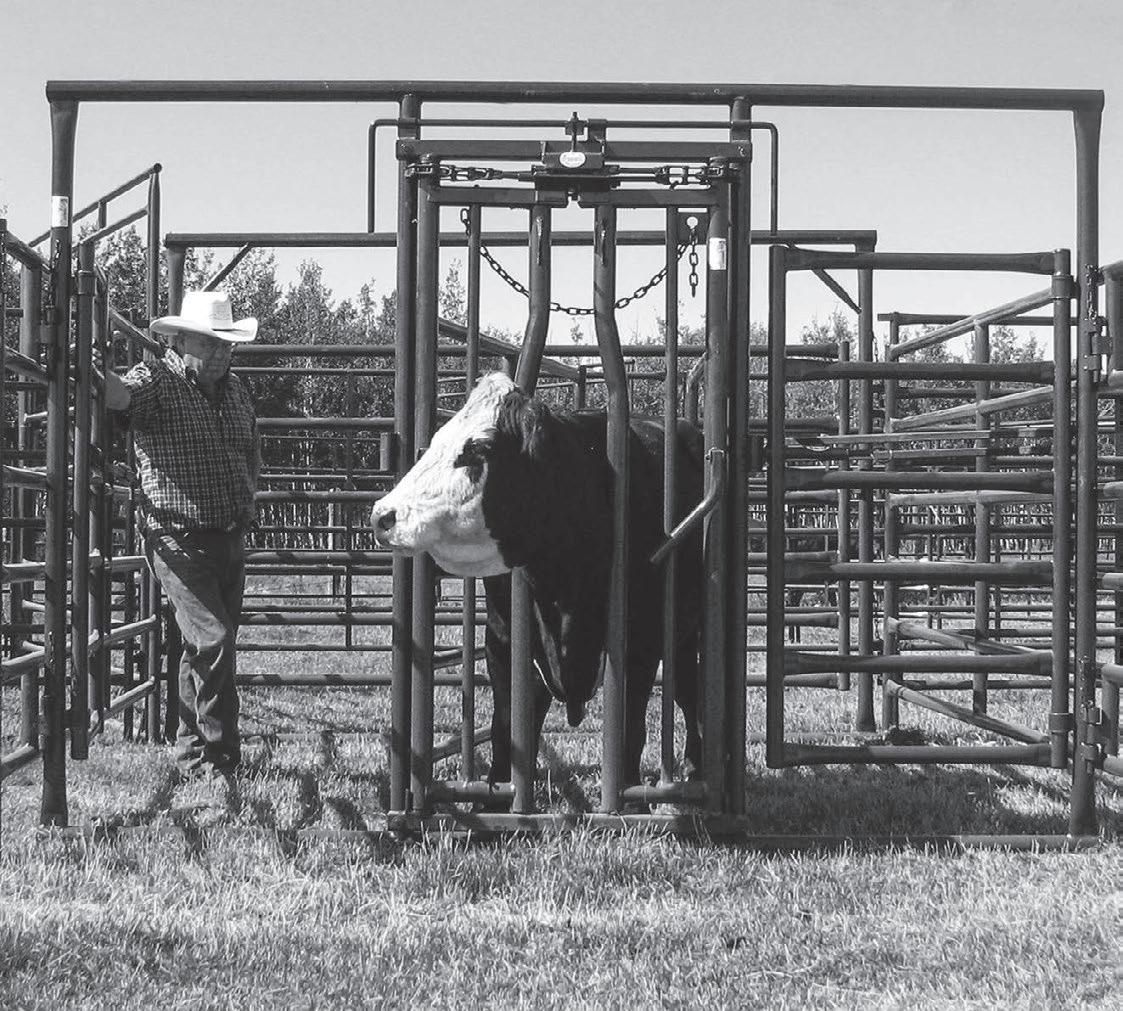
Manitoba Government Launches Its New Water Management Strategy
(Nov. 8, 2022 Province of Manitoba News Release)
The Manitoba government is unveiling a new water management strategy – the first of its kind in nearly 20 years – to guide future actions, decisions and investments to protect the province’s water resources and ecosystems while sustainably growing the economy and communities, Premier Heather Stefanson and Environment, Climate and Parks Minister Jeff Wharton announced.
“Our collective water needs are changing. Our growing communities, vibrant agriculture sector and expanding industries all depend on continued access to water,” said Stefanson. “At the same time, climate change and extreme weather, such as floods and droughts, have a significant impact on water availability and security. Manitoba’s new water management strategy balances environmental, social and economic needs, and creates opportunities to partner with industry, communities and all Manitobans to unlock future growth while ensuring the province remains a leader in sustainable
water management.”
As Manitoba’s first whole-of-government water strategy since 2003, the new water management strategy provides a comprehensive framework to conserve and protect the environment, enhance resiliency, improve water quality and availability and foster economic development opportunities, the premier noted. The water management strategy will help support innovative solutions, best practices and new technologies to help address the shared water needs of Manitobans.
A water action plan for fulfilling the vision and objectives of the strategy will be developed this winter through further engagement with the public and interested stakeholders, the premier added.
“We have heard from Manitobans that developing a priority-based strategy now will set the stage for thriving and resilient ecosystems, communities, and our economy,” said Wharton. “The water management strategy is the starting point for this critical work to address water
security. Together, we will chart a path to meet the water needs and priorities of Manitoba’s communities and economy in a way that will be resilient and sustainable for generations to come.”
Focus areas within the water management strategy incorporate specific strategic objectives to guide and prioritize actions, initiatives and investments including:
• maximizing water resource potential through conservation and efficient water use;
• addressing water infrastructure challenges and opportunities;
• meeting water supply needs of current and future generations sustainably;
• protecting biodiversity and aquatic ecosystem health;
• building Manitoba’s preparedness and resilience to a variable and changing climate;
• protecting the quality and quantity of groundwater;
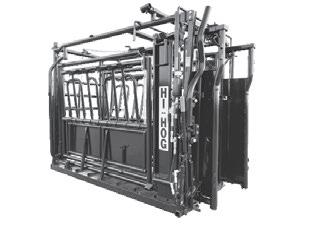
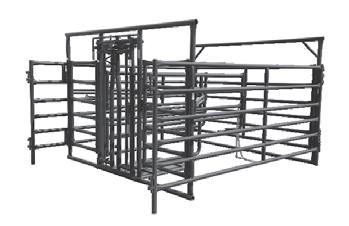

• protecting and improving surface water quality;
• improving co-ordination of water management and governance across watersheds, basins and aquifers;
• improving data information and knowledge available on water;
• advancing Indigenous inclusion in water management; and
• enhancing engagement and participation of Manitobans in water stewardship.
The Manitoba government’s new water management strategy builds on extensive input from Manitobans including the Expert Advisory Council, citizen engagement through EngageMB and stakeholder engagement administered through Enterprise Machine Intelligence and Learning Initiative (EMILI). All areas of input recognized water security as both a challenge and a competitive opportunity for communities and industry alike.
“Manitoba is fortunate to have excellent water resources at a time when water security and resilience are a growing factor for companies considering where to invest,” said Ray Bouchard, co-chair, Integrated Water Strategy Committee and board chair, EMILI. “In a changing climate, sustainable water management and smart water investments will be a strong part of Manitoba’s competitive advantage in agriculture, industry and future growth sectors.”
The premier and minister noted the strategy builds on a strong foundation of water management enhancements and significant investments in recent years including over $200 million in the Conservation GROW and Wetlands GROW trusts and many actions under the Climate and Green Plan and the Sustainable Watersheds Act.
To read the water management strategy and learn more about next steps visit: https://manitoba.ca/sd/pubs/ water/water_mgmt_strategy2022.pdf.
6 CATTLE COUNTRY December 2022 www.mbbeef.ca
Trimming Chutes Calving Enclosures Squeeze Chutes 1-800-661-7002 www.hi-hog.com Hi-Hog provides design assistance for your Calving Barn and Corral set-up. Come see us at Manitoba Ag Days January 17 - 19 Plan Ahead For Calving Season
Manitoba Cattle Producers Support Grasslands Stewardship Program
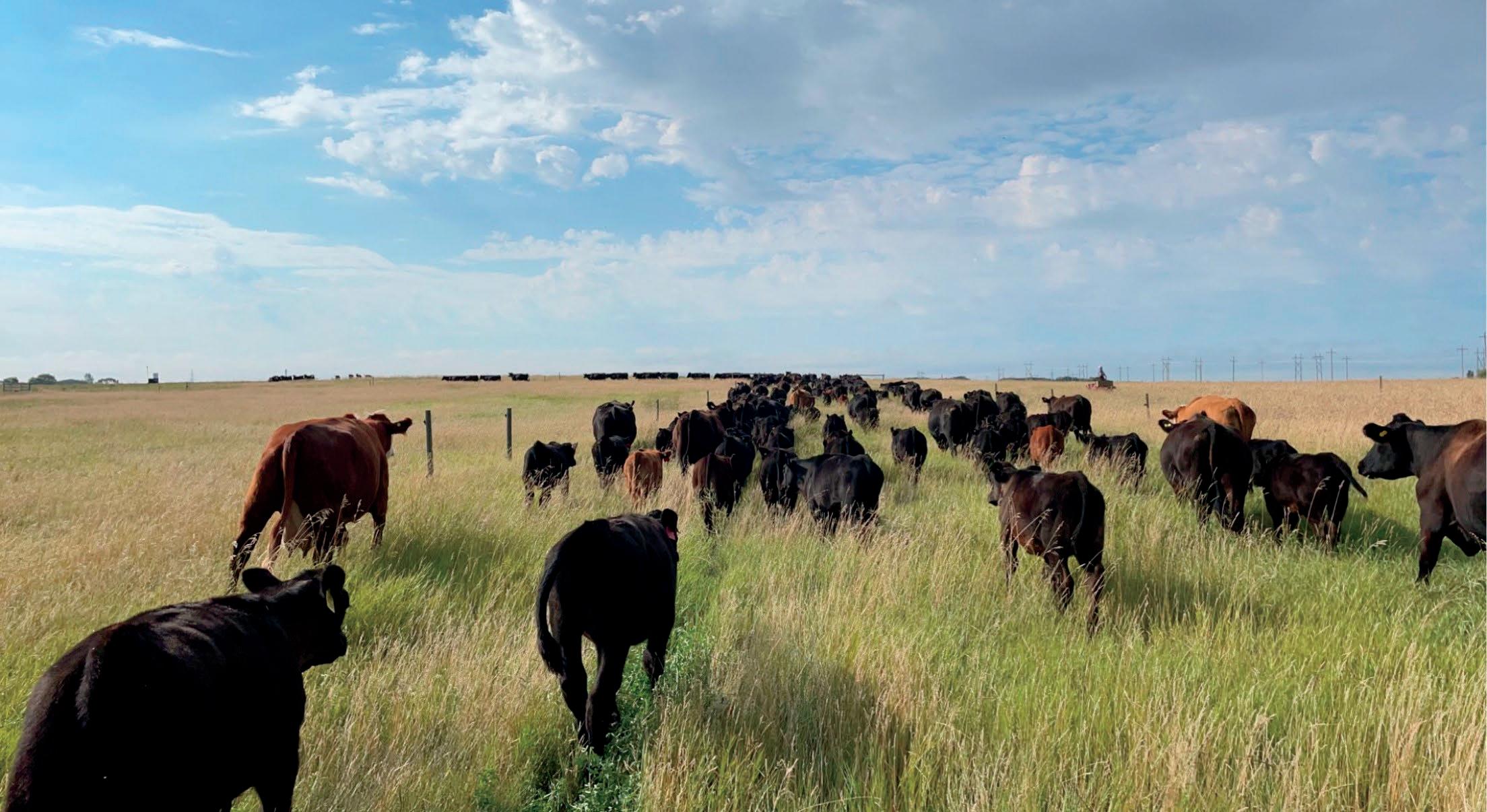 BY WAYNE HILDEBRAND
BY WAYNE HILDEBRAND
There was tremendous interest from cattle producers in 2022 for a new grasslands incentive program.
Manitoba Beef Producers teamed up with Manitoba Habitat Heritage Corporation to offer a program that provides incentive funding for cow-calf operators to upgrade pasture infrastructure, improve grass quality and maintain wildlife habitat.

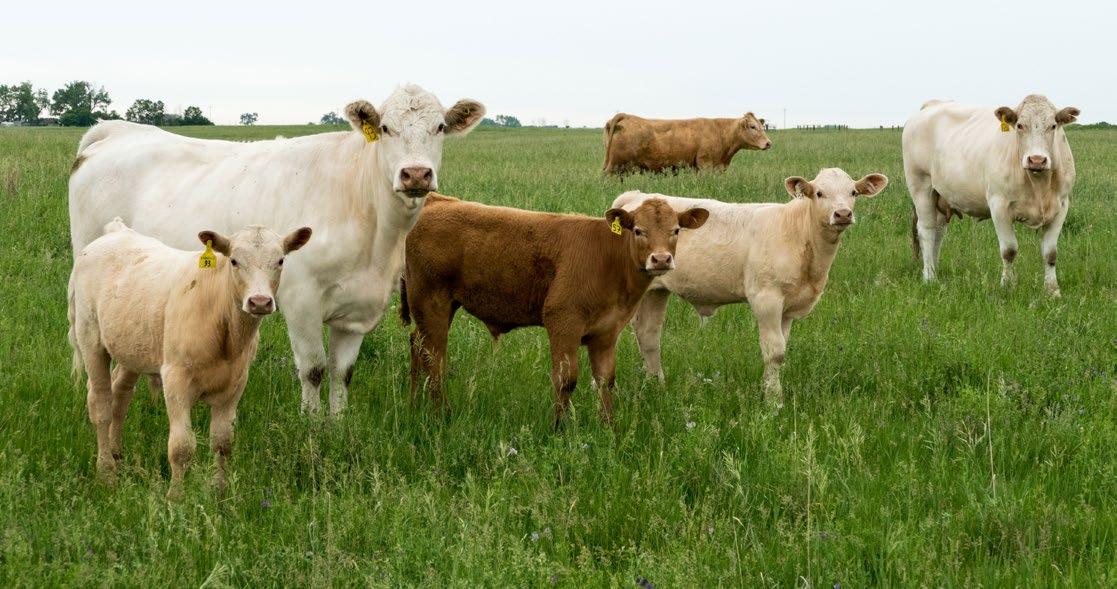
“In short, the program sold out,” said Manitoba Beef Producers General Manager Carson Callum. “The $972,000 budget was fully allocated. The funding impacts 24,000 acres of grazed pasture in Manitoba with projects that include fencing, watering systems, shrub control and grassland improvements. A total of seventy-four cattle producers participated in the program in 2022.”
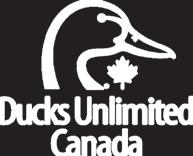
Manitoba Habitat Heritage Corporation (MHHC) delivers the Grassland Stewardship Program on behalf of Manitoba Beef Producers (MBP). “We are happy to partner with The Manitoba Beef Producers and cattle farmers to deliver this program,” said Curtis Hullick, Field Manager of MHHC. “We recognize that having livestock on the landscape is essential to managing and enhancing grassland ecosystems and wildlife habitat. The key is to support cattle producers to ‘keep grazing’.”
The Manitoba cattle industry forecasts future declines in the cow-calf sector. Stats Canada has shown that marginal lands (pasturelands) are increasingly being converted to cultivated cropland. This is a concern for the future of prairie grasslands and species at risk in Manitoba.
The Grasslands Stewardship Program provides $13,000 incentive funding per quarter section up to a maximum of $50,000 per landowner. The funding comes with a 10-year commitment from the landowner to conserve the grasslands and maintain the infrastructure within the project. Landowners can also participate
in Range Management Planning, which evaluates the health of the pasture and provides recommendations to maximize productivity, while balancing the benefits to wildlife.
Valerie and Jarret Sollner operate a mixed farm near Plumas and participated in the Grassland Stewardship Program this year. “Our cow-calf business includes 9 quarter sections that we graze,” said Valerie. “We liked that the incentive funding included fencing materials and cattle watering systems. Jarret and I wanted new fencing that would allow us to rotate the cattle to improve our grass management and prevent overgrazing. We installed almost 10 miles of 4-strand barbed wire fence along with a new dugout.”
“Applying to this program was easy,” Valerie re-
layed. “There was very little paperwork. The incentive payment from Manitoba Beef Producers worked well for us and really helped with the cost of materials. We feel this is the best support program for cattle producers in the province.”
“We have very good news for 2023,” said Callum. “Manitoba Beef Producers is working to secure funding to offer the Grassland Stewardship Program again in 2023. We are pleased that Manitoba Habitat Heritage Corporation will continue to deliver the program. Our goal is to ensure a sustainable future for the beef industry in Manitoba for the benefit of our beef producers and all Manitobans. For program details go to MBP or MHHC websites at https://mbbeef.ca or www.mhhc. mb.ca or call MHHC at 204-784-4350.”
7 CATTLE COUNTRY December 2022
Save the Date - Women in Beef J o i n u s f o r a n e v e n i n g t o s h a r e e x p e r i e n c e s , n e t w o r k , a n d h e a r f r o m a s p e a k e r & p a n e l i s t s s h o w c a s i n g t h e d i v e r s e r o l e o f M a n i t o b a w o m e n i n t h e b e e f c a t t l e i n d u s t r y J a n u a r y 1 8 t h - P r o v i n c i a l E x D o m e B u i l d i n g 5 : 0 0 P M C o c k t a i l s / 5 : 3 0 D i n n e r / 6 : 0 0 P r e s e n t a t i o n & P a n e l D i s c u s s i o n / 8 : 3 0 C l o s i n g R e m a r k s F o r m o r e i n f o r m a t i o n : C h a r l o t t e 2 0 4 - 8 6 8 - 5 5 9 9 M a r y - J a n e i n f o r m a t o n @ m b f i . c a
Photo credit: Lynnea Parker
StockTalk Q&A Feature Brought to you by Manitoba Agriculture
 Elizabeth Nernberg Livestock Specialist Manitoba Agriculture
Elizabeth Nernberg Livestock Specialist Manitoba Agriculture
elizabeth.nernberg@gov.mb.ca
Question: I took inventory of all my feeds and am now trying to determine how much feed I will need for my cow herd. I heard that adequate feed supplies can be estimated by the rule of seven. What does this mean?
Answer: When determining how much feed is required, the rule of seven is a quick calculation for an average operation where the combination of tons of silage, average bales of hay and average bales of straw required add up to seven per cow. For example, it may be three tons of silage, two bales of hay and two bales of straw per cow per winter.
This rule is based on the general guideline that cattle will eat good quality hay at the rate of 2.5 per cent of their body weight (on a dry matter basis) per day. A 1,300 lb cow would consume 32.5 lb of hay at 0 per cent moisture or 38 lb of hay at 15 per cent moisture (as fed basis). Over a 220-day winter feeding period, the cow would consume 8,412 lb of hay or 6.5 round bales; based on a typical 5x6 ft round hay bale weighing 1300 lb (at 15 per cent moisture). If you have one hundred 1,300 lb cows, they are going to need about 650 bales to over winter. You can use the dry matter intake (DMI)

guide of 2.5 per cent of body weight for all classes of beef cattle to figure out how much hay or feed you will need for the winter.
DMI is affected by many factors, including the age and condition of the animal. Frame size and percentage of body fat are often considered in equations to predict feed intake by beef cattle. Condition scoring your cattle is also a useful management tool, as a thin cow (condition score = 1 or 2 on a 5 point scale) will consume more than a good conditioned cow (condition score = 3). Sex of the animal has a limited affect on DMI, whereas, one of the most important factors that affects intake is the reproductive status of the animal. A lactating cow will eat 40 to 60 per cent more than a dry cow. The age of the animal also affects intake, as older animals will consume more feed than younger animals as young cows have less rumen space.
The animal’s environment affects DMI as well. Adverse conditions such as mud and snow can decrease intake by up to 15 per cent. Intake can be depressed by 30 per cent under hot/humid conditions and can increase up to 30 per cent in colder temperatures. It is recommended that for every 10°C decrease in temperature below -20°C, feed should be increased by 15 per cent or an extra 6 ½ lbs of hay or 4 ½ lbs of grain per day.
In addition, nutrient deficiencies can decrease feed intake by 10 to 20 per cent. Adding ionophores can also reduce feed intake, but this will depend on how much is added to the feed with the higher the dose the less feed consumed, whereas growth-promoting implants tend to increase feed consumption.
The following are some feed intake guidelines:
Forage* Intake Guidelines
(as per cent of body weight per day)
Straw and Poor Forage
Medium Quality Forage
Excellent Quality Forage
Dry Mature Cows & Bulls 1.4 to 1.6% 1.8 to 2.0% 2.3 to 2.6%
Lactating Cows 0% 2.0 to 2.4% 2.5 to 3.0%
Growing and Finishing Cattle 1.0% 1.8 to 2.0% 2.5 to 3.0%
*Forage 90% dry matter basis; adapted from The Beef Cow-Calf Manual, Alberta Agriculture and Food, 2008 Agdex 420/10.
Some other factors that will affect the voluntary consumption of forage are:
• Stage of maturity - the fibre component of forages increases with maturity reducing intake
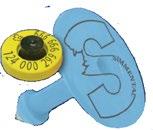
• Weathering - mould growth usually reduces consumption
• Species – grasses are usually consumed in lesser amounts than legumes
• Physical form – processing increases forage consumption, particularly with low quality forages
• Grain feeding – will usually depress forage intake, especially when grain is fed before forage
• Fermentation – consumption of dry matter from silage is usually less than if the same quality of feed were fed as hay
DMI is an important part of balancing diets to meet the animal’s needs. However, it needs to be monitored on farm because ration adjustments may be required if the actual intake is different than recommended. For example, if the animal is consuming more than expected, it could be gaining more weight as a result of the higher total nutrient uptake. If it is consuming less, performance will be lower than expected as it is unable to consume the required amounts of nutrients.
Not only do we need to ensure enough feed is being provided to the animal, but that enough of the right feed is being provided. Feed testing is required to determine the quality of the feed and if it is the right feed to match to what the animal requires based on its stage of production.
The rule of seven can give you a good starting point to determine your herd’s requirements for the winter months keeping in mind cow size, length of winter feeding period and wastage can cause variations to this rule. Feed testing and balancing rations will more accurately define your feed requirements for the wintering period.
Share your Voice
In the next issue of Cattle Country, a Manitoba Agriculture forage or livestock specialist will answer a selected question. Send your questions to Elizabeth. Nernberg@gov.mb.ca.


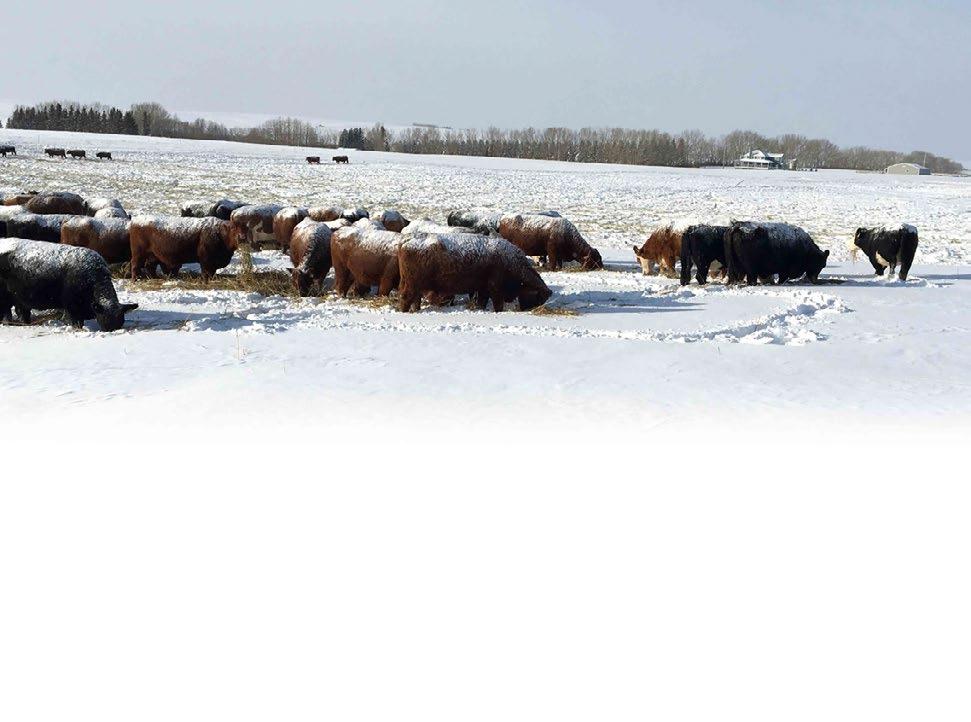
StockTalk for Cattle Country is brought to you by Manitoba Agriculture. We encourage you to email your questions to our department’s forage and livestock team. We are here to help make your cattle operation successful. Contact us today.
Andrea Bertholet Killarney 204-851-6087
Kristen Bouchard-Teasdale Beausejour 431-337-1688
Shawn Cabak Portage 204-239-3353
Pam Iwanchysko Dauphin 204-648-3965
Andrea.Bertholet@gov.mb.ca
Kristen.BouchardTeasdale@gov.mb.ca
Shawn.Cabak@gov.mb.ca
Pamela.Iwanchysko@gov.mb.ca
Cindy Jack Arborg 204-768-0534 Cindy.Jack@gov.mb.ca
Juanita Kopp Beausejour 204-825-4302
Elizabeth Nernberg Roblin 204-247-0087

Juanita.Kopp@gov.mb.ca
Elizabeth.Nernberg@gov.mb.ca
8 CATTLE COUNTRY December 2022 www.mbbeef.ca
www.mbsimmental.com WISHING EVERYONE A SAFE & HAPPY HOLIDAYS Merry Christmas Box 274, Austin, MB R0H 0C0 President: Melissa McRae 204-573-9903 Secretary: Laurelly Beswitherick 204-637-2046 b2@inetlink.ca watch our website for all the Manitoba Simmental Bull sales order at canadaid.ca 877-909-2333 INDUSTRY www.liphatech.ca Supporting the Ag Industry GRAZE YEAR ROUND Perennial Forages | Annual Forages High Performance Alfalfa | Hybrid Fall Rye Toll Free: 1-877-COW-CHOW WWW.UNIONFORAGE.COM Graeme Finn 403-312-2240 | Grant Lastiwka 403-350-6394 | Amber McNish 204-264-0609 Ben Stuart 780-888-7303 | Roger Meyers 306-221-1558 | Mark McNich 306-845-8036 | Mike Witt 250-558-9577 WATCH FOR IT! UNION FORAGE CROP MANUAL 2023! COMING SOON!
Now Looks Like a Good Time to Restock Bred Cow Inventory

By the time this edition of the Bottom Line goes to print we will be into the final quarter of the fall run in Manitoba. As predicted, the fall run has been more congested than previous years. That, combined with poor weather in the peak marketing weeks, had deliveries behind schedule.

With that in mind, there are still plenty of calves left to sell. The bred cow sales are ramping up, and there are lots of herd dispersals to pick from. In my opinion, the current prices for bred cows make them a pretty good investment, providing you have pasture to put them on next spring. The majority of the cow-calf operations have more than adequate feed, and it now looks like a good time to restock the bred cow inventory. Butcher cow prices really took it on the chin in November, dropping 14 to 16 cents per pound as supplies outnumbered demand. The American cow market saw huge numbers on offer, and that lowered the floor price on the Canadian cows. We might see a slight increase in the Manitoba market in December as some investors buy cows to feed for tax purposes. The cost of feeding cows anything more than hay, with the current price of grain, makes it profit prohibitive. The packers traditionally store up a few cows to have on hand during the holidays, and that could help cull prices as well.
The feeder cattle market continues to be strong despite grain prices not dropping as predicted. There seems to no reason for the grain prices to drop in December. Barley in Alberta is $10.00 per bushel. Corn in the USA is $1.50 higher per bushel than last year. The Canadian feedlots lost the cost of feed advantage over the USA in November and have now started to import corn from the south. Even with higher feed costs, there are very few feeder cattle going south out of Manitoba. There have been a few loads of yearling heifers exported out of Manitoba and a small percentage of British-type heifers have found their way south of the border in November. Year-to-date, Canadian feeder cattle exports to the USA are approximately 175,000 head.
Driven by Ontario demand and strong local support, Manitoba cow-calf producers have enjoyed the highest priced feeder cattle in western Canada this fall. Manitoba has been running six to eight cents per pound on average higher than Alberta and Saskatchewan feeder calf markets. Freight to Ontario from western Manitoba is running 16 to 18 cents per pound, and there is a severe shortage of trucks.
Once fall work was complete, local feeders stepped into the market and have made a positive impact on the light steers under 500 pounds and on the heifer market. It looks like a few more producers are holding back heifers than last year. With the extra feed available, that is not a surprise. There are not many heifers being purchased as replacements to breed in the spring; most are going into the backgrounding lots for resale in the spring.
In Manitoba, we are running about 12% to 14% fewer feeder cattle marketed than last year. That percentage should tighten up when the markets finish the fall run in mid-December.
Manitoba prices on steers less than 500 pounds averaged $3.23 per pound, up 69 cents per pound over last year in mid November. The 500 to 600 pounds steers averaged $2.73, up 61 cents per pound from last year. The heavy steers over 600 lost a little steam from the end of October, but still averaged $2.50, up 60 cents from last year in mid-November. Heifers averaged between 40 and 50 cents per pound higher than last year, with the strongest demand for the 550-pound heifers, which were trading 50 cents per pound higher than last year at $2.28 per.

Last year the prices dropped in December for the feeders, but this year looks slightly more promising for the December market. The packers are still slow in moving finished cattle out of the feedlots, and there will be pen space in December. A lower Canadian dollar will keep the Americans looking north for feeder cattle. In mid- November last year, the Canadian dollar was trading at approximately $80.30 while this year, during the same week, it traded at approximately $73.50 in US funds.
Prices for the first quarter of 2023 are looking promising for the feeder cattle. Backgrounders will have a tough time making expected returns unless the prices move higher. Fed cattle prices are currently around $3.00 per pound dressed and will need to move north to support the current calf prices and costs of gains at the feedlots.
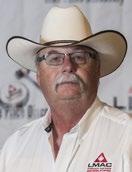
There is starting to be some consumer resistance at the meat counter and in the restaurants for beef at the current prices. Canadians will have to get used to the higher prices for beef and other food products, as it looks like higher prices are here to stay. In the past, we have enjoyed cheap food in Canada compared to the rest of the world. Things have changed! In the past, we could use about 60% of the beef we produced in Canada domestically and sold the surplus to the US at a discount. Over the past 10 plus years, Canada has done a great job of promoting and marketing Canadian beef abroad. Demand for Canadian beef has soared around the world and exports are up considerably. We now have to outbid the export demand to purchase our own beef products. This should be a happy story for beef producers, but the profits from these overseas markets, and sales to the USA and Mexico are not being shared with the primary producers and the cattle feeders. The packers are the major benefactors of this increased demand.
See you in 2023!
Until next time, Rick
9 CATTLE COUNTRY December 2022 www.mbbeef.ca
The
Line FEBRUARY 2-3, 2023 Victoria Inn Hotel & Convention Centre | Winnipeg, MB SAVE THE DATE AGM ANNUAL GENERAL MEETING TH StockTalk_Cattle Country_4.67 x 7.75.indd 1 2022-11-02 12:28 PM StockTalk_Cattle Country_4.67 x 7.75.indd 1 2022-11-02 12:28 PM Registration now available – please visit www.mbbeef.ca/events/
RICK WRIGHT
Bottom
Closing the Loop: The Role of Food Waste in a Circular Bioeconomy
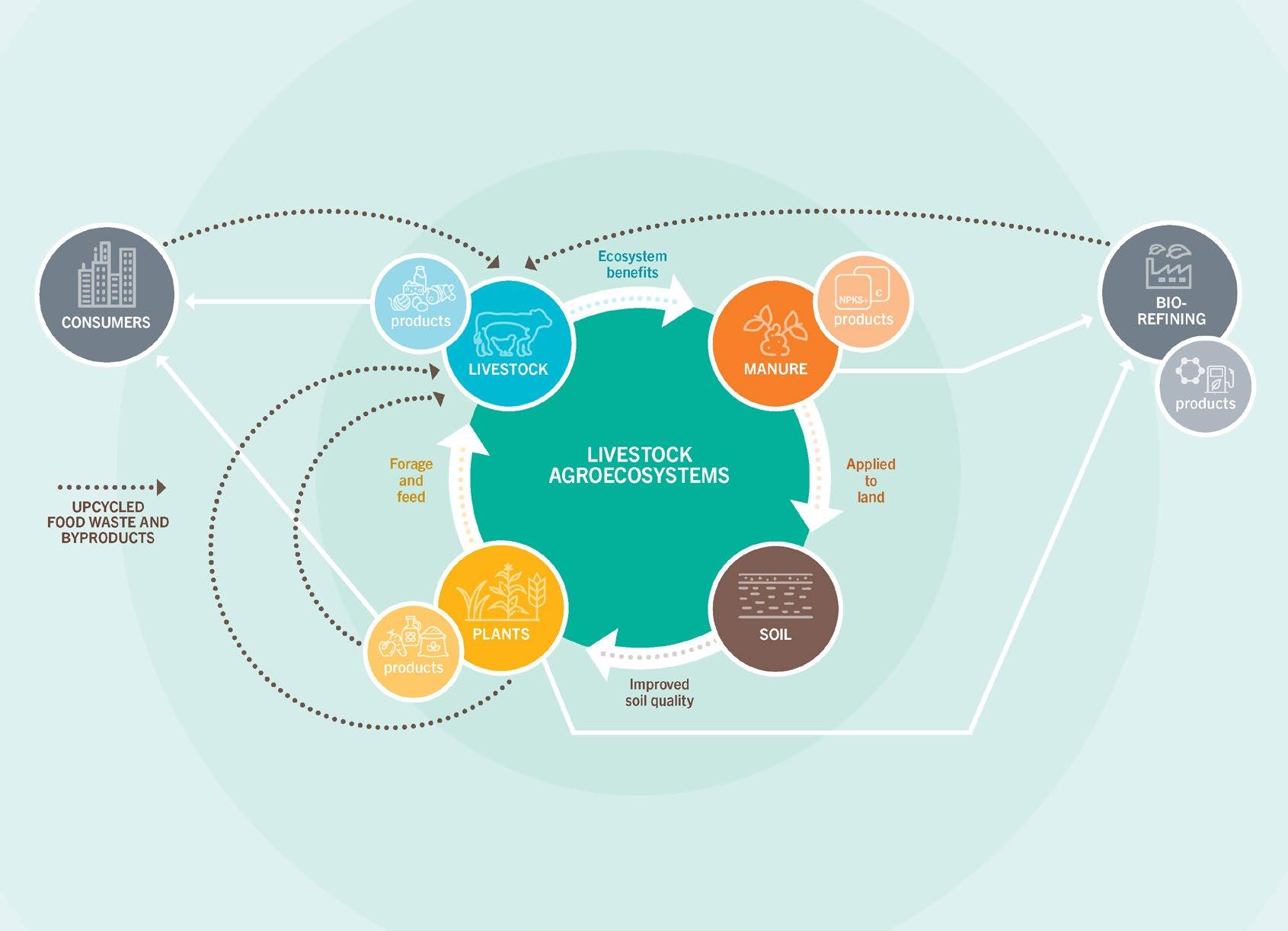 BY THE NATIONAL CENTRE FOR LIVESTOCK AND THE ENVIRONMENT, UNIVERSITY OF MANITOBA
BY THE NATIONAL CENTRE FOR LIVESTOCK AND THE ENVIRONMENT, UNIVERSITY OF MANITOBA
Food waste in Canada is substantial – making up roughly 32% of all food dollars spent in retail and valued at approximately 49.5 billion dollars. At the global level, the Food and Agriculture Organization (FAO) at the United Nations suggests that one third (1.3 BMT) of potentially edible, nutrient rich waste is discarded annually. In efforts to improve global food security, and retain the lost nutrients, FAO has set a goal to halve the per capita global waste during food production, retail and consumption by 2030.
What is food waste?
Food waste falls into two categories. Food loss is associated with production, processing and distribution and includes by-products produced during grain and oil-seed, fruit and vegetable processing. The second category includes food wasted at the retail and consumer level. This waste is mostly attributed to consumer behavior.
The role of livestock in a “circular bioeconomy”
The concept of a “circular bio-economy” focuses on the production of agricultural commodities with minimal external inputs, closing nutrient loops, and reducing negative impacts on the environment in the form of wastes and emissions, as seen in the figure. Cattle play a particularly important role as they can convert human-indigestible biomass, including grasses and forages, crop residues, grain screenings, by-products from commodity processing, as well as foodstuffs that fail to meet the quality standards for human consumption into high-quality protein in the form of meat and milk. As a consequence, cattle are often referred to as “up-cyclers”, upgrading inedible plants and plant by-products to high-quality protein and essential micronutrients, vitamins, and minerals. Numerous by-products are garnered from livestock including hides, tallow, blood, hooves, horns, organs, and bones. These by-products are
utilized to produce marketable commodities including pharmaceuticals, cosmetics, leather, brushes, adhesives, charcoal, shampoo, glass, and pet food. Using the entire edible protein content from farmed animals, including currently underused meat co-products to meet the protein requirements of the global population could further improve environmental sustainability.
Challenges and solutions to re-using food waste.
Transportation
Researchers, industry and governments are continuing to work together to provide solutions to minimize food waste, however there are challenges. It can be costly to deliver by-products from food processing operations to the farm, particularly if they have a high moisture content. To offset high transportation fees, some Canadian processors and retailers provide products at reduced or no cost to farmers. Increased regional processing of commodities has also resulted in increased use of co-products as feed as livestock operations are located close to the source and further offset the transportation fees resulting in significant decreases to the overall costs of feed.
Canadian regulatory framework
Canada’s regulatory framework can also act as a barrier to reusing food waste in livestock feed. At present, all livestock feed materials must be included in the Feeds Act. According to CFIA, the Feeds Act supports the use of several by-product ingredients however smaller volume and emerging novel ingredients are still not a part of the Act and hence not allowed for use. To move forward, we need to use evidence from sound research to influence and re-examine regulatory frameworks to ensure that these regulations are accommodating the changing needs of agriculture production.
Addressing food safety and nutrient quality
Some processing by-products can contain chemical
or physical contaminants, antinutritive factors, and high moisture that can promote bacterial growth. Research and industry have responded to address these challenges by exploring technology to eliminate food safety concerns including the physical separation of contaminants, heating, heat sterilization, ensiling and others. These technologies require investments in labour and equipment, but they are examples of how research and ingenuity can help to ensure we reuse by-products generated in food processing systems.
Finally, as an industry we need to invest in the characterization of nutrients contained in food processing by-products. Ensuring nutrient consistency and high ingredient quality will increase uptake and subsequently the use of these products in livestock feeds.
Industry is committed to minimizing food waste
Food waste is a global issue. It is a diverse challenge that requires a diverse solution. Several life cycle analyses have assessed the impacts of food waste destined for landfills versus the recycling and repurposing of this nutrient dense material. The message is clear, redistribution of food waste from landfills is essential to minimizing environmental impacts, ensuring resource sustainability and advancing global food security. Since cattle can successfully up-cycle low quality feedstuffs they are key in converting lower quality ingredients and wastes from novel food processing activities into high quality protein-based materials. As researchers work through the challenges and uncover opportunities, it is evident that integrating food waste in livestock production is a large part of the solution. Industry leaders are engaged and Canadian farmers have demonstrated interest, ingenuity and investment to replace traditional feeds with by-products and even food waste, setting new standards that ensure the development of sustainable food systems in Canada.
10 CATTLE COUNTRY December 2022 www.mbbeef.ca
Vet Column: A Look at Lump Jaw and Wooden Tongue in Cattle
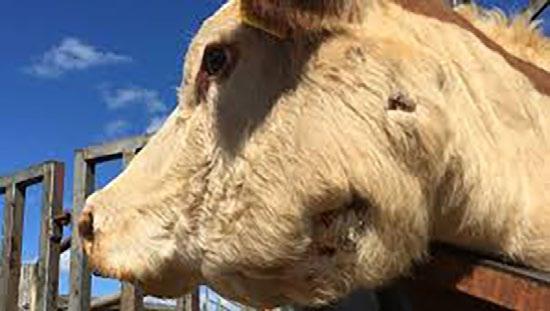 BY DR. TANYA ANDERSON, DVM
BY DR. TANYA ANDERSON, DVM
Lump jaw and its “cousin” wooden tongue have been more prevalent in herds this fall and I thought I would do a brief overview of the causes and treatments, especially since many producers had not previously seen the condition in their herds.
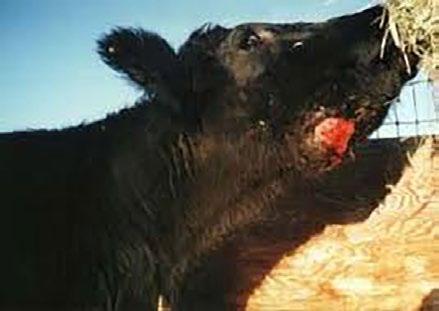

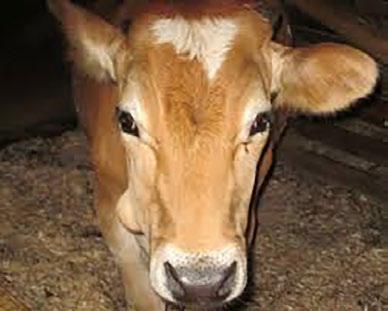
Lump jaw is, just as it sounds, a bacterial infection of the jaw bone, usually the lower jaw, although the upper jaw can also be affected. Wooden tongue is a bacterial infection of the tongue that causes the tongue to become stiff (“wooden”) such that it does not work properly and prevents the animal from using its tongue to grasp grass and move food back into the mouth while eating.
Sometimes the bacteria can also cause infections of the soft tissues of the face ‒ under the skin, in the muscle or involving the lymph nodes if the infection gets into the lymphatics (like “blood” vessels that carry infection fighting lymph between lymph nodes). These animals can develop huge heads with swelling extending down the neck and into the brisket area. Early detection and treatment of these conditions is critical to ensure recovery and avoid weight loss due to inability to eat.
Actinomyces bovis and Actinobacillus lignieresii are the causative bacteria for lump jaw and wooden tongue, respectively. Both are normal inhabitants of the bovine mouth and both respond to similar treatment so differentiating which is the problem is not that clinically important.
Usually only one or two animals are affected, but

in some herds and in certain years, as in this year, outbreaks can occur due to a common environmental factor. Usually the infection starts as infection of the gums and inner tissues of the mouth due to trauma from rough hay, coarse feed (think slough grass, overly mature forage), sticks or foreign material like wire baled up in hay. Occasionally a penetrating wound from the outside through the skin causes ideal conditions for bacterial proliferation. Younger animals (two to three years old) seem to be more prone as this is the time when they are shedding teeth so there is a “natural” wound in the bone sockets where the teeth are rooted.
Regardless of the cause, the bone can only respond one way to infection ‒ by growing more bone or losing bone. Bone loss (osteoporosis) results in loosening of the teeth and either bone change causes jaw distortion which can lead to maligned teeth and resultant pain and difficulty chewing. Consequently, both lump jaw and wooden tongue result in weight loss and animal suffering.
Early treatment is important before bone changes become severe as the new bone that develops and the moth-eaten diseased bone never subsides. It is for this reason that cattle that recover should be candidates for potential culling during the next cull cycle (after weaning or the breeding season if bulls are affected). However, if poor cull prices or higher value (as in bulls), these cattle can remain in the herd for several years as long as their dentition and body condition are good. Occasionally, infection flares again and additional treatment may
be needed. It is also important to consider that these animals may create special management considerations ‒ draining pus onto feed and in the waterer is a source of infection to other animals.
How to treat? If early where there is only a small lump or if noted on pasture, treat with a long-acting oxytetracycline. If an animal has more severe symptoms like large and/or multiple swellings or is losing weight, intravenous treatment with sodium iodide is needed in addition to long-acting oxytetracycline. One dose in early cases works well in my experience with two doses one to two weeks apart for more severe cases. If there are abscesses, flushing with a dilute betadine solution is also advised. Animals noted to be drooling or with swellings in their cheeks should be assessed for wooden tongue. In some of those cases, the swelling has been caused by a bone lodged at the back of the mouth ‒ one reason to avoid open sky burial! Examination of the mouth may also be needed to pull compacted feed material out of the cheeks and remove loose teeth if present. In some severe cases, I have had to use anti-inflammatories if there has been pharyngeal nerve damage such that an animal appears unable to swallow properly and repeatedly builds up “food balls” in the cheeks.
As with most everything to do with disease, early detection and treatment results in best outcomes. Don’t hesitate to reach out to your vet if you see something new to you and ensure that your approach and management of the problem is correct.
Manitoba Government Introduces Official Time Amendment Act; Legislation Would Enable Shift to Permanent Daylight Saving Time
(November 17, 2022 Province of Manitoba News Release)
The Manitoba government is proactively introducing the Official Time Amendment Act, which would allow the province to consider adopting permanent daylight saving time should neighbouring jurisdictions enact similar legislation and the majority of Manitobans support this change, Municipal Relations Minister Eileen Clarke announced.
“The Official Time Amendment Act would allow our province to maintain a consistent time zone approach with the United States, if they also adopt yearround observance of daylight saving time,” said Clarke. “Maintaining a consistent time zone approach with our neighbours would ease business relations, trade, transportation of goods and travel.”
The United States is considering a shift to permanent daylight saving time. Other Canadian jurisdictions, including Ontario and British Columbia, are also proactively preparing to make the shift if the United States adopts year-round observance of daylight saving time.
Recognizing that many Manitobans have deeply held views on time change, the Manitoba government plans to engage with residents and stakeholders to hear how permanent daylight saving time would affect them. The engagement will help identify potential supports that could be implemented to facilitate a smoother transition, noted Clarke.
11 CATTLE COUNTRY December 2022 www.mbbeef.ca
everyone an enjoyable Holiday Season and a Happy New Year
Wishing
Going to the Auction Mart? Have the Right Transportation Documents Ready
BY ANGELA LOVELL
Updated federal livestock transportation regulations came into effect in 2020, but despite a two-year transition period that was supposed to prepare and educate the industry about the new changes, many Manitoba beef producers remain unclear about the documentation they need to transport their cattle to auction marts or feedlots.

“Many producers still don’t have a clear understanding of what is required for documentation and what format the documentation needs to be in,” says Carson

Manager.
The main changes to transportation requirements under the Health of Animals Regulations were shortening the maximum length of the transport period for cattle from 48 hours to 36 hours and lengthening the duration of feed, water and rest breaks from five to eight hours. With a lot of the discussion centering around these changes, producers may not have been as focused on the documentation they now need to transport their animals.
“The educational program to inform the producers on the documentation required has been a little slack,” says Rick Wright, Executive Secretary of the Manitoba Livestock Marketing Association (MLMA). “The com-

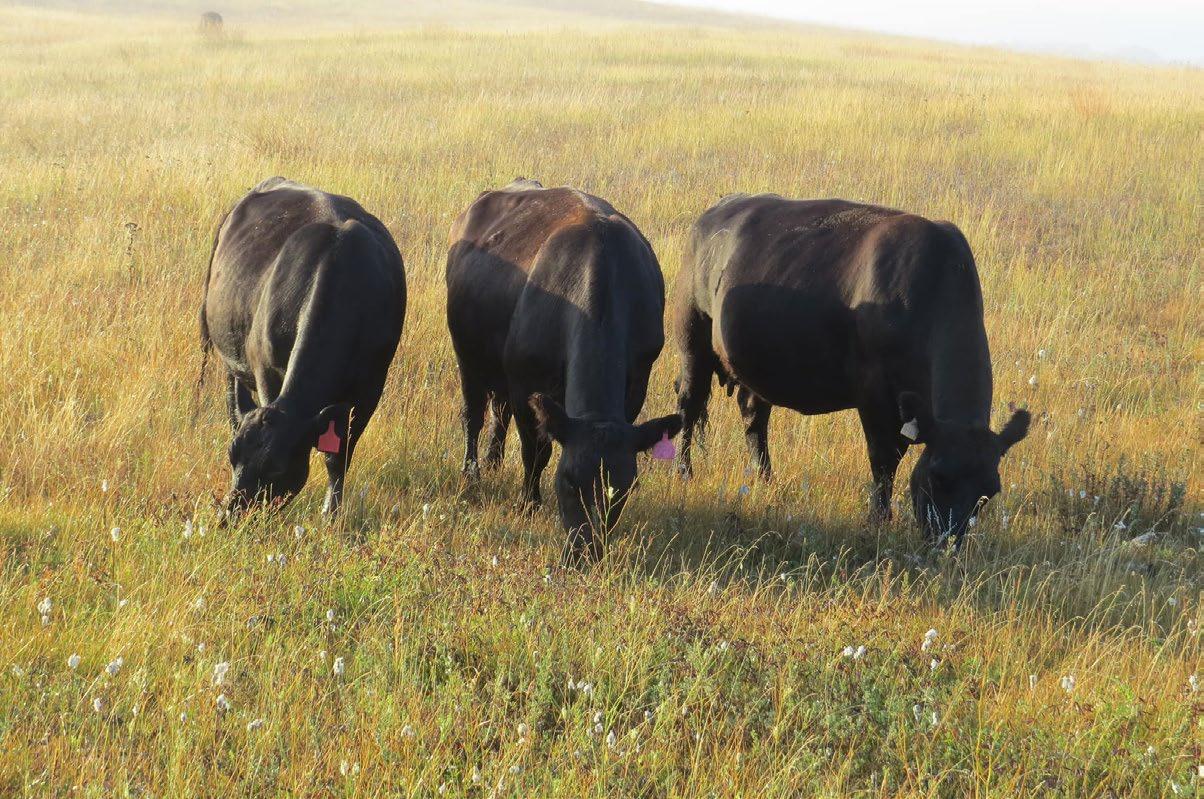
mercial truckers are pretty aware of what they need, but probably 85 per cent of Manitoba producers don’t know that if they are hauling their own cattle, or a neighbour’s cattle, to a place of commerce they need a Transfer of Care (TOC) document.”
How a Transfer of Care document works
The new regulations require that producers who are transporting cattle to any destination where a change of ownership takes place, such as an auction mart or abattoir, must fill out a TOC document to be handed to the receiver of the animals, who is responsible for their care from that point on.

www.mbbeef.ca PUBLISHED BY MANITOBA BEEF PRODUCERS NOVEMBER 2022 POSTMASTER PLEASE R ET URN UNDELIVERABLE C OPIE S TO MB P, UNI T 220, 530 CENTU RY S TREE T, W I NNIPE G, M B R3H 0Y4 CANADIAN PUBLIC AT IONS MAIL P RODU CT SAL ES AG REEMEN T NUMBE R 40005187 P OS TA GE P AID IN W INNIPE G. General Manager’s Update Page 3 Stockpiled Forage Page 11 Get Set For the Big Game Page 12
Morning grazing in the Assiniboine Valley near Shellmouth, MB. (Photo credit: Nerbas Bros. Angus)
Callum, MBP General
Page 5
The World is Better With Cattle on the Landscape
After a challenging spring and early summer across most of the province, the relatively dry fall allowed many of us to play catch up after the delayed growing season and to get some late feed production done. Corresponding with the late season scramble are Manitoba Beef Producers’ district meetings, now underway as I write this column. I look forward to catching several of them where I hope we can reconnect after the last two years of mostly virtual meetings. There is no substitute for in-person discussions on topics that matter to all of Manitoba’s beef producers.
Over the last several months, I have spoken with dozens of producers both within Manitoba and across the country and some common themes have emerged. Most agree that the beef business has been difficult with the weather challenges of the last few years, and due to profitability that simply has not kept up with other segments of agriculture. Many producers have shared their
| plister@hls.ca Oct 13, 25; Nov 8 Swift Current 306-773-3174 | info@hls.ca Oct 13, 15, 22, 29; Nov 5, 12, 19, 26 Yorkton 306-783-9437 info@hls.ca | Oct 19; Nov 2, 23
Kelvington Stock Yards 306-327-8325 | Contact for sale dates
Mankota Stockmen’s Weigh Co. 306-478-2229 | mankotastockmens@sasktel.net Oct 14 (Rancher Endorsed Sale), 21, 28; Nov 4

Northern Livestock Sales brent.mlsstockyards@sasktel.net Lloydminster 306-825-8831 | Nov 7, 21 Meadow Lake 306-236-3411 | Oct 26; Nov 9 Prince Albert 306-763-8463 | Oct 10; Nov 7
Saskatoon Livestock Sales Ltd. 306-382-8088 | ptellier@nbine.com | Nov 11
Shaunavon Livestock Sales (88) Ltd 306-297-2457 | Contact for sale dates
Spiritwood Stockyards 306-883-2168 ssy@sasktel.net | Oct 19; Nov 2, 16
Weyburn Livestock Exchange 306-842-4574 | wle@weyburnlivestock.com Oct 17, 31; Nov 14
TYLER FULTON President’s Column

experiences of dealing with drought, spring storms, or the impact of the hurricane in the Maritimes and forest fires in BC. Quite simply, more beef producers are being exposed to more risks but have not seen a corresponding increase in reward for their efforts.

As a result, we are seeing more herd dispersal sales and an increase in the hay and pasture acres being converted to crop production or other uses. It can be disheartening for those of us who are invested in the industry and know the value that cattle bring to the landscape.
Whitewood Livestock Sales 306-735-2822 | whitewoodlivestock@sasktel.net Oct 11, 25; Nov 8, 15
MANITOBA Interlake Cattlemen’s Co-Op Assn Ltd. (Ashern) 204-768-2360 icca@mymts.net | Oct 26; Nov 9 Gladstone Auction Mart 204-385-2537 auctmart@mts.net | Oct 18, 2022; Mar 7, 2023 Grunthal Livestock Auction 204-434-6519 grunthallivestock@gmail.com| Nov 15 Heartland Livestock Brandon 204-727-1431 info@hls.ca | Oct 18; Nov 8 Virden 204-748-2809 info@hls.ca | Oct 26 Killarney Auction Mart Ltd. 204-523-8477 | killarneyauctionmart@gmail.com Nov 14 Ste. Rose Auction Mart Ltd. 204-447-2266 | Nov 10 Taylor Auctions 204-522-3996 | taylorauctions568@gmail.com


Contact for sale dates Winnipeg Livestock Sales 204-694-8328 | Oct 7, 28; Nov 18 ONTARIO Brussels Livestock 519-887-6461 | Nov 4 Ontario Stockyards Inc. (Cookstown) 705-458-4000 | Oct 6 Ottawa Livestock Exchange (Greely) 613-821-2634 | Contact for sale dates Kawartha Lakes Community Sale Barn Inc. 705-439-4444 | Contact for sale dates Keady Livestock Market (Blue Water) 519-934-2339 | Oct 27
Ontario Livestock Exchange Ltd. (Waterloo) 519-884-2082 Oct 19
QUEBEC Contact the Feeder Calf Sales Agency 450-697-0540
NOVA SCOTIA Atlantic Stockyards Ltd. 902-893-9603 | Oct 4, 18

Through our advocacy work over the last few months, we have met with staff from both the provincial and federal governments, bankers, reporters, MLAs, MPs and Senators and the general public. Over and over again, we share the same message: The world is better with cattle on the landscape! In particular,
• Cattle utilizing perennial hay and pasture sequesters carbon to help combat climate change;
• Cattle and their grasslands provide habitat for wildlife which ensures greater biodiversity;
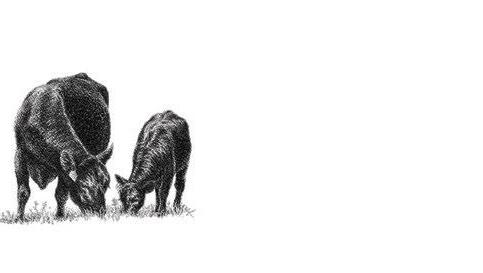
• Cattle production supports small towns and the rural economy; and
• Cattle utilizing grasslands makes the landscape more resilient to floods and fires.

The one thing all of these points have in common is that while there is a societal good that accrues from having cattle on the landscape, these positive outcomes are not impacting our bottom lines. In short, if we lose cattle farmers and ranchers due to unprofitable times, we lose the environmental benefits that come with cattle.
There is a connection to this sustainability message in almost everything on which MBP works. For example, our advocacy efforts that helped lead to the recent Crown land rent reductions announced by the Manitoba government and our ongoing effort for changes to the Crown Lands Act have these positive environmental outcomes by keeping these lands in beef production.
So too, would more equitable treatment of beef producers when compared to crop producers in the context of business risk management programs like Livestock Price Insurance (LPI) and AgriStability. This is another area on which MBP has been extensively working.
The environmental sustainability message resonates among most who hear it, and when it does, it makes more advocates for beef cattle. So please, take the time to tell your farm’s environmental story to friends and family so that everyone understands that the world is better with cattle on the landscape!
2 CATTLE COUNTRY November 2022 www.mbbeef.ca DISTRIC T 13 MARY PAZIUK Dauphin, Ethelbert, Gilbert Plains, Grandview, Roblin and Mossey River COMMUNICATIONS AND MARKETING LEAD David Hultin RESEARCH AND EXTENSION SPECIALIST Melissa Atchison D ES IGNE D B Y Print Studio One C AT T L E CO U N TR Y E D I TO R David Hultin LIVESTOCK PREDATION PRE VENTION PROJEC T COORDINATOR Ray Bittner O F FIC E A SS I S TA N T Jennifer Patryluk FINANC E Deb Walger DISTRIC T 14 VACANT Minitonas-Bowsman, Mountain, and Swan Valley West MA NI TOB A BE E F PROD U C E R S Ph: 1-800-772-0458 Un i t 220, 530 Ce n t u r y S t ree t Wi nn ipe g, MB R 3H 0Y 4 PH - (204) 772-4542 FX - (204) 774-3264 info@mbbeef ca www.mbbeef ca Carson Callum GEN E RA L M AN AG E R DISTRIC T 1 ALFRED EPP Boissevain-Morton, Brenda-Waskada, Grassland, Deloraine-Winchester, and Two Borders DISTRIC T 2 NANCY HOWATT Argyle, Cartwright-Roblin, KillarneyTurtle Mountain, Lorne, Louise, Pembina, and Prairie Lakes DISTRIC T 3 ANDRE STEPPLER Cartier, Du erin, Grey, MacDonald, Portage la Prairie, Rhineland, Roland, Stanley, Thompson, Montcalm, Morris, and Ritchot DISTRIC T 4 VACANT De Salaberry, Emerson-Franklin, Hanover, La Broquerie, Piney and Stuartburn, Montcalm, Morris, Ritchot, Spring eld, Ste. Anne, Taché, R.M. of Piney and Reynolds DISTRIC T 5 STEVEN MANNS Cornwallis, Elton, Norfolk-Treherne, North Norfolk, Oakland-Wawanesa, Glenboro-South Cypress, and Victoria DISTRIC T 6 VACANT Pipestone, Riverdale, Sifton, Souris-Glenwood, Wallace-Woodworth, and Whitehead DISTRIC T 7 T YLER FULTON PRESIDENT Ellice-Archie, Hamiota, Prairie-View, Riding Mountain West, Rossburn, Russell-Binscarth, and Yellowhead DISTRIC T 8 MATTHEW ATKINSON 2ND Clanwilliam-Erickson, Glenella-Lansdowne, Harrison-Park, Minto-Odanah, Oakview, North Cypress-Langford, Rosedale, and West Lake-Gladstone DISTRIC T 9 TREVOR SUND Alexander, Brokenhead, East St. Paul, Lac Du Bonnet, Rockwood, Rosser, St. Andrews, St. Clements, St. Francois Xavier, West St. Paul, Whitemouth, Woodlands, LGD of Pinawa, Reynolds, Spring eld, Ste. Anne, and Taché DISTRIC T 10 MIKE DUGUID SECRETARY Armstrong, Bifrost-Riverton, Fisher, and Gimli DISTRIC T 11 ARVID NOTT VEIT Coldwell, Grahamdale, St. Laurent, and West Interlake DISTRIC T 12 MARK GOOD TREASURER Alonsa, Lakeshore, McCreary, and Ste. Rose Maureen Cousins POLI C Y AN A LY S T Keystone livestock specializing in livestock insurance for over 45 years LIVESTOCK INSURANCE Lois McRae & Joyce Gordon RR 1 Box 57 Brandon, Manitoba R7A 5Y1 h: 204-728-3058 c: 204-573-5192 f: 204-727-7744 marmacfarms1@gmail.com SERVICES Preference will be given to those students pursuing a field of study related to agriculture or to those acquiring a skilled trade or pursuing a career that would be beneficial to the rural economy. The completed application, supporting documents, references, required essay or video, etc. must be submitted to MBP by 4:30 p.m. Friday, November 4, 2022.
Market your 2022 Angus tagged calves at these Angus feature sales at participating auction markets. These auction markets are recognized supporters and sellers of cattle identified as Angus through the Canadian Angus RFID indicator. BRITISH COLUMBIA B.C. Livestock Producers Co-Op (Kamloops) 250-573-3939 | Contact for sale dates Okanagon Falls Stockyards 250-497-5416 | Contact for sale dates Vanderhoof Auction Market Ltd. 250-567-4333 | Contact for sale dates VJV Dawson Creek Auction 250-782-3766 | Contact for sale dates Williams Lake Stockyards 250-398-7174 | Oct 12 ALBERTA Balog Auction Services Inc. 403-320-1980 | Oct 25 & 28 Bow Slope Shipping Association 403-362-5521 | Contact for sale dates Calgary Stockyards Ltd. (Strathmore) 403-934-3344 | Oct 1, 29; Nov 12 DLMS DLMS.ca 780-991-3025 | Contact for sale dates Dryland Cattle Trading Corp. (Veteran) 403-575-3772 | Nov 7 Foothills Auctioneers Inc. (Stavely) 403-549-2120 Oct 3, 11, 17, 24; Nov 7 , 14 , 21 , 28 Innisfail Auction Mart 403-227-3166 | Oct 3, 17, 24, 31; Nov 7, 14, 21, 28 Medicine Hat Feeding Company 403-526-2707 | Oct 17, 19, 21, 24, 28, 31; Nov 4, 7 North Central Livestock Exchange Inc. (Clyde) 780-348-5893 Oct 18; Nov 15; Dec 13 (Vermilion) 780-853-5372 Oct 19; Nov 16; Dec 14 Olds Auction Mart 403-556-3655 | Contact for sale dates Perlich Bros. Auction Market Ltd. 403-329-3101 | Oct 12 Provost Livestock Exchange 780-753-2218 | Oct 24; Nov 7 Southern Alberta Livestock Exchange (Fort Macleod) 403-553-3315 Oct 13, 20, 27 Stettler Auction Mart (1990) Ltd. 403-742-2368 | Contact for sale dates TEAM Electronic Sale 403-234-7429 | Sept 30; Oct 28; Nov 11 Thorsby Stockyards Inc. 780-789-3915 | Contact for sale dates Viking Auction Market 780-336-2209 | Oct 4, Nov 1, Dec 6 VJV Auctions | 780-336-2209 Beaverlodge 780-354-2423 | Contact for sale dates Ponoka 403-783-5561 | Oct 19 Rimbey 403-843-2439 | Oct 18 Triple J VJV Auctions Westlock (780) 349-3153 | Oct 20 SASKATCHEWAN Alameda Auction Market 306-489-2221 | Contact for sale dates Assiniboia Livestock Auction 306-642-5358 |ala@assiniboiaauction.com Oct 29; Nov 5, 12, 19 Cowtown Livestock Exchange Inc. (Maple Creek)
| cowtown.ls@sasktel.net Oct 18, 20, 22, 25, 27, 29; Nov 1, 3 Heartland Livestock Services Moose Jaw
306-662-2648
306-692-2385
Feeder Sales www.cdnangus.ca To order Canadian Angus RFID indicators, please order directly from CCIA at www.canadaid.ca or call 1-877-909-2333. Canadian Angus RFID Indicator Program Our breeding program is focused on creating fertile cows that efficiently raise calves, are reliably repeatable, have excellent udders and feet and require minimal replacements (longevity); traits required to be profitable in the cow business. www.ediecreekangus.com MH Mina 609, sired by Shoshone Ferrall 6340 We would like to announce our Fall"Grazing & Genetics Tour" to be held Friday, Nov. 4, 2:00pm. Beautiful wedge shaped cow that raised calves into her teens for us PROOF
A Look at Some of the Topics Being Discussed at MBP’s Fall District Meetings
Greetings all,












Firstly, I want to thank all of you who have joined our district meetings these past few weeks. It has been great to be able to get out and see many members across the province to deliver an update on MBP’s advocacy efforts over the last year.
During our district meetings, we cover many areas of advocacy that MBP conducts and I will touch on a few highlights. This year we reviewed all the efforts we put in to the 2021 AgriRecovery Program for drought relief. This program had its challenges but we know it provided the needed support to producers as a result of the disastrous drought. We also reviewed our efforts related to the spring storms of 2022, where producers unfortunately saw many losses due to excess moisture and snow. This, in part, resulted in funding provided through Disaster Financial Assistance for livestock mortalities.
Another advocacy area covered was an important one conducted by MBP, our provincial cattle association counterparts, and the Canadian Cattle Association. Health Canada had proposed implementing warning labels on food products that are high in saturated fat, sugar, and salt. This proposal originally included ground beef. The industry mobilized through many advocacy avenues to counter this proposal. As a direct result of our joint efforts, Health Canada amended the plan to exempt ground meat from these warning labels, which would have led to unnecessary confusion for consumers. It was great to cover these advocacy efforts and more during our district meetings.
A reoccurring topic of discussion and concern for MBP and its members is related to the Agricultural Crown Lands Leasing Program. The changes made to the program in 2019 did not align with MBP’s suggested improvements and have had a major negative impact on producers who utilize these lands. MBP is encouraged to see the changes announced in October by the provincial government relative to temporary rent reductions on
CARSON CALLUM General Manager’s Column




























forage leases and the new EngageMB survey to further consult on future changes. We hope as many producers as possible filled out the survey to advance issues like reimplementation of unit transfers, rental rate calculations adjustments, enforcement and informed access, to name a few.
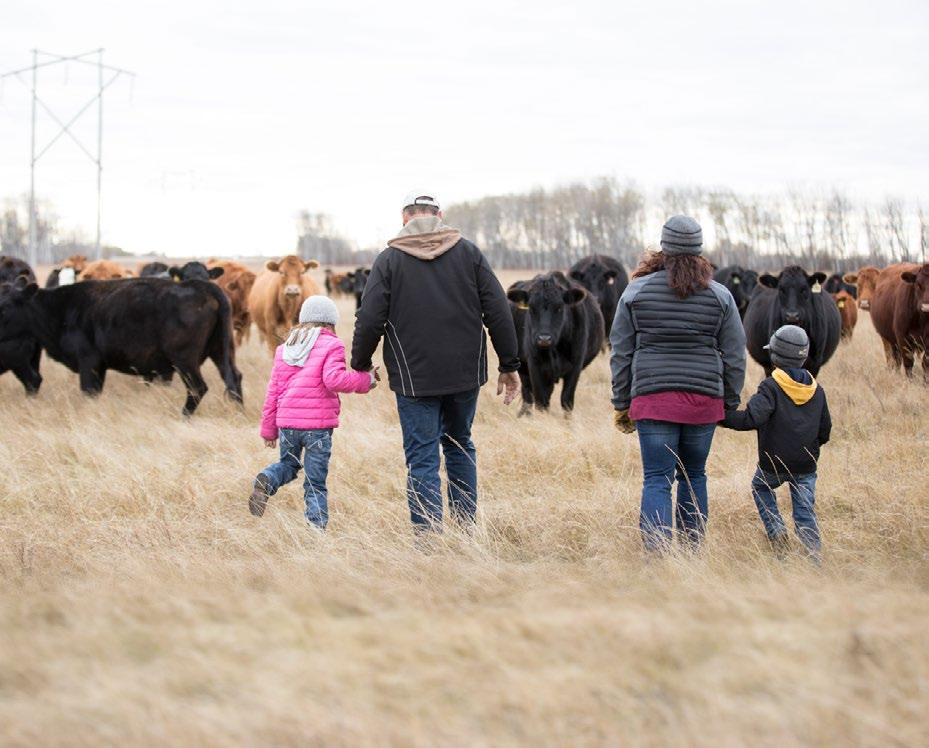

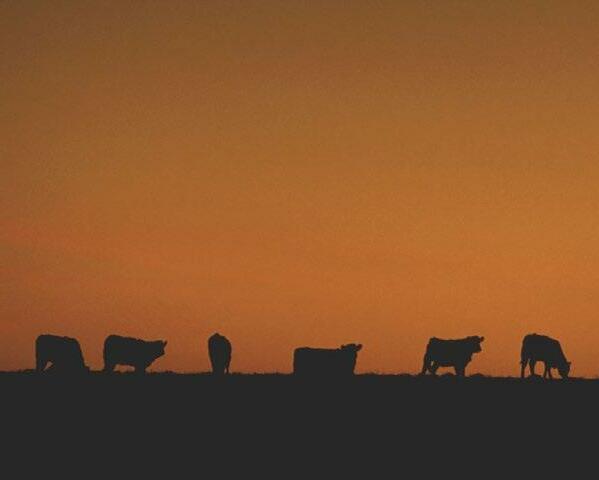
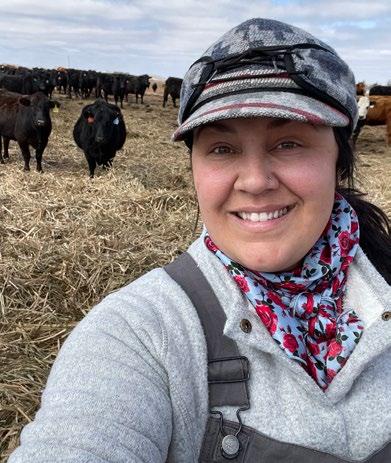
For most of our efforts as an organization in the last few years, there is always a tie to climate change and the environment. This was evident in consultations on the next agricultural policy framework, now entitled the Sustainable Canadian Agriculture Partnership (SCAP). MBP feels strongly that the beef sector has a really important role to play in helping to achieve climate resiliency, and has continually advocated for acknowledgment of the ecosystem goods and services beef producers provide on the landscape. This new partnership needs to provide risk management and programs that are equitable for beef producers to support their operations and all the things they do for the environment.

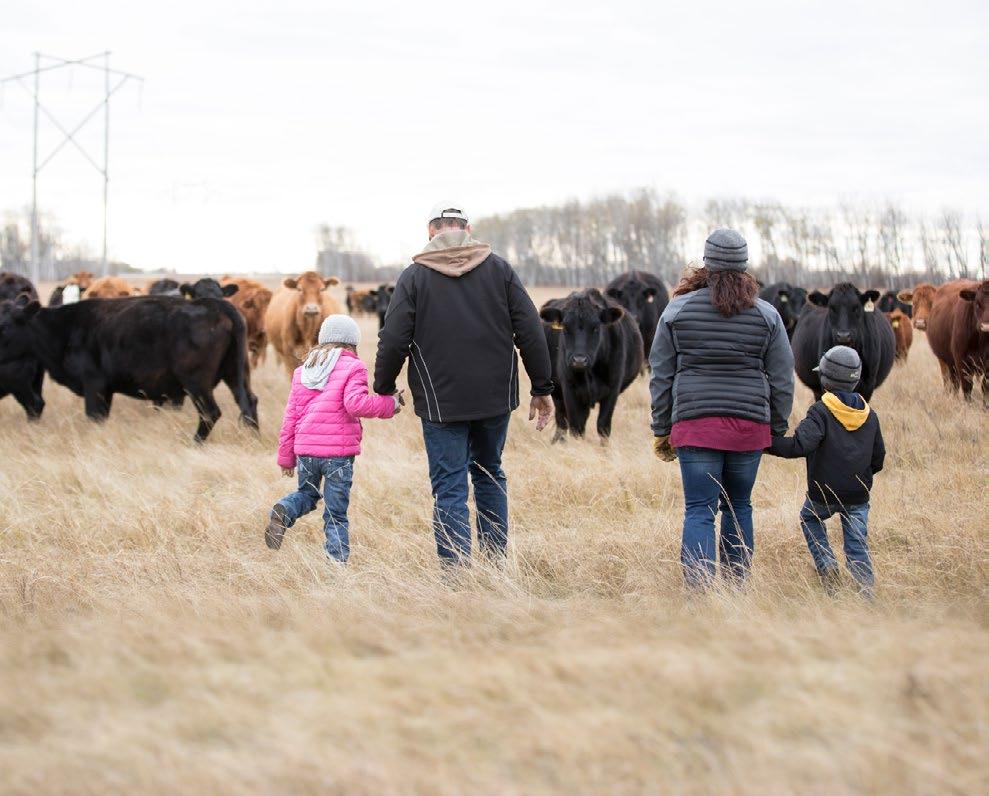

Thanks again for all who attended district meetings over the last few weeks. I hope you can make the time to come our 44th Annual General Meeting taking place February 2-3, 2023. This will be our first in-person AGM since the onset of the pandemic in 2020. The main difference this year will be the AGM will take place in Winnipeg at the Victoria Inn Hotel & Convention Centre. For many years members have been asking for us to try one in Winnipeg to account for those in the east side of the province. We hope many of you can make the trip for interesting speaker sessions, the business component, and fellowship during and after the meeting at the president’s banquet.
Lastly, I want to deliver some wonderful news on the staffing front. In mid-October, Melissa Atchison joined the staff team in the role of Research and Extension Specialist. In order to take on this role, she needed to make the difficult decision to resign as the District 6 director on MBP’s board of directors. Although it is a loss for the board, the long-term benefit for the industry has great potential. Melissa has extensive knowledge in the beef sector provincially and nationally and will be able to help expand MBP’s offerings to producers here in Manitoba through extension services. I greatly look forward to working with her in this capacity.
Cheers, Carson
3 CATTLE COUNTRY November 2022
FEBRUARY 2-3, 2023 SAVE THE DATE AGM ANNUAL GENERAL MEETING TH ers to conserve, restore, or enhance wildlife habitat more information callCarolGraham at 4)821-4943or visit www mhhc mbca
Committment to the land, water, air, and wildlife is a prerequisite to raising healthy cattle. Sustainability is not a buzzword... it's a way of life. Committment to the land, water, air, and wildlife is a prerequisite to raising healthy cattle. Sustainability is not a buzzword... it's a way of life. Photo credit: Jenna Loveridge Applications for Consideration for the Environmental Stewardship Award Due to MBP by December 9 Please Visit www.mbbeef.ca/our-news/applications-for-consideration-for-the-environmental-stewardship-award-due-to-mbp-by-december-9/
Melissa Atchison has joined MBP as a Research and Extension Specialist. (Photo credit: Melissa Atchison)
Manitoba Government Expanding Training Agreement with Western College of Veterinary Medicine to Increase Number of Manitoba Students
(Sept. 29, 2022 Province of Manitoba News Release)
The Manitoba government is expanding an interprovincial agreement (IPA) with the Western College of Veterinary Medicine (WCVM) at the University of Saskatchewan to provide increased annual funding for the acceptance of an additional five Manitoba students per year, Advanced Education, Skills and Immigration Minister Jon Reyes and Agriculture Minister Derek Johnson announced.
“By increasing our annual intake to 20 students from 15, we will support more students to pursue this important career path in order to help build our province’s animal health-care capacity for years to come,” said Reyes. “We are committed to working with the college’s administration to realize this expansion effective in 2023-24.”
Through a funding contribution from the province every year, Manitoba currently receives 15 guaranteed subsidized seats at the Saskatoon-based WCVM for new entrants annually. The Manitoba government will increase its funding contribution to WCVM by $539,200 for the 2023-24 academic year to a total of $7,009,600, raising the number of Manitoba intake students to 20 from 15 and to a student quota – the number in the four years of the program – to 65 from 60. For the 2024-25 academic year, Manitoba’s contribution to the college will increase to $7,642,400 and bring the student quota to 70.
Manitoba’s increasing commitment will bring its intake to 20 seats from 15 seats every year until the province supports a total of 80 Manitoba students annually through the four-year program.
“Our government is committed to increasing the availability of quality veterinary care to all Manitobans, especially for the agricultural sector that is so vital to our provincial economy,” said Johnson. “Animal health enables the success of our province’s agricultural indus-
tries, so investing in the training of more veterinarians, particularly those with large-animal expertise, will ensure this valuable support is available when needed.”
There is a great need for veterinarians in large-animal practice in rural Manitoba to support the agriculture industry, Johnson added. The additional seats for Manitoba students will be targeted for the support of commercial livestock, such as cattle, bison and pigs as well as sheep and goats, in rural areas to address this critical labour market need.
“The Manitoba Veterinary Medical Association (MVMA) applauds the Manitoba government for their investment in veterinary education,” said Dr. Keri Hudson-Reykdal, president, MVMA. “There is currently a large shortage of veterinarians in Manitoba. The commitment to educating more veterinarians will help alleviate the shortage over the long term. In the shorter term, the MVMA will continue to engage with government, veterinary professionals and other stakeholders to address the shortage of veterinary services in Manitoba.”
IPAs are negotiated with post-secondary institutions to secure seats for Manitoba students in programs that are cost-prohibitive to operate in the province, noted Reyes. Manitoba partners with Saskatchewan and British Columbia in providing funding to WCVM through the Veterinary Medicine IPA, established to ensure guaranteed access to veterinary education leading to doctor of veterinary medicine degrees for Manitoba students.
“We welcome this commitment from our provincial partners that will help to address Western Canada’s urgent need for more veterinarians,” said Dr. Gillian Muir, dean, WCVM. “The province’s support allows more students from Manitoba to achieve their dreams of a career in veterinary medicine. It is also a sound investment in
protecting the health and wellness of all animals, from companion animals and wildlife to livestock that plays a critical role in Canada’s agriculture industry and the country’s economy.”
“Increasing the number of students who can attend vet school and enter the profession is the logical first step in addressing the veterinary shortage,” said Michelle Streeter, a fourth-year WCVM student who grew up in rural Manitoba. “I am also hopeful that Manitoba’s decision to increase seats draws more students from the Prairies who are interested in working in rural mixed animal practice, since agriculture is such an integral part of so many local communities.”
The increased support for more Manitoba students at WCVM is consistent with Manitoba’s Skills, Talent and Knowledge Strategy to improve alignment between advanced education and training institutions and Manitoba’s labour market needs. Johnson added it also supports Manitoba Agriculture’s commitment to improve resilience and preparedness for animal disease outbreaks.
Note: Manitoba Beef Producers thanks the Manitoba government for funding five more veterinary student training seats at the Western College of Veterinary Medicine. Having stable access to rural veterinary services is critical to the beef sector and this commitment to additional training opportunities recognizes the critical labour shortage in this area. MBP continues to engage with the provincial government and other stakeholders such as the Manitoba Veterinary Medical Association and other agricultural commodities on related topics around the recruitment and retention of veterinarians. MBP also wishes to thank the veterinarians and allied staff who serve our members across the province. Their work is greatly valued.
Province Develops Criteria to Address Shortage of Vets Supporting Rural Commercial Agriculture

(October 7, 2022 Province of Manitoba News Release)
The Manitoba government has finalized further details of its new plan to attract, train and retain veterinarians to support commercial agriculture in rural areas, Agriculture Minister Derek Johnson announced here today.
“Our government has invested in this new strategy to address the critical shortage of veterinarians providing care for commercial livestock and poultry operations in rural Manitoba,” said Johnson. “The agricultural sector is vital to our provincial economy and we are committed to providing support to address the sector’s needs.”
The government has expanded its inter-provincial agreement with the Western College of Veterinary Medicine (WCVM) at the University of Saskatchewan to provide increased annual funding for the acceptance of an additional five Manitoba students beginning in 2023-24, as part of its strategy to build the province’s animal health-care capacity.
Manitoba currently receives 15 guaranteed subsidized seats at the Saskatoon-based WCVM for new entrants annually. The province will increase its funding contribution to WCVM by $539,200 for the 2023-24 academic year to a total of $7,009,600, raising the number of Manitoba intake students to 20 from 15 and to a student quota – the number in the four years of the program – to 65 from 60. The province’s gradually increasing funding commitment will bring its intake to 20 seats from 15 seats every year until it supports 80 Manitoba students annually through the four-year program.
Given the particular need for veterinarians to support commercial livestock and poultry operations in rural Manitoba and for improved biosecurity, the five new intake seats will be targeted for an expansion of veterinary care for the agricultural sector.
Manitoba Agriculture will work closely with WCVM to attract and select students with the rural background, knowledge and passion to become successful as veterinarians who will return to rural Manitoba to support the livestock and poultry industries.
Along with these attributes, students who are selected will be expected to have:
• an expressed desire to pursue veterinary practices in commercial agriculture in rural Manitoba;
• a solid academic foundation through achievement in a university-level animal science program; and
• practical knowledge and experience in the livestock or poultry industries, gained through significant experience prior to enrollment.
“Our government will collaborate with stakeholders and WCVM in upcoming years to ensure the objectives of this targeted approach are met,” said Johnson. “Manitoba Agriculture will also work with educational institutions, agricultural organizations and other stakeholders to ensure information on the new strategy is shared widely.”
More technical criteria for the new intake seats will be developed for 2024-25 and beyond, Johnson added.
“This is an important step toward addressing the shortage of veterinarians in rural Manitoba,” said Tyler Fulton, president, Manitoba Beef Producers. “We appreciate the focus on recruiting students who have a direct interest and first-hand experience in working with animals, and who have been raised in a rural environment. We thank the provincial government for its investment in training more vets.”
In addition, Manitoba Agriculture is exploring options to work collaboratively with the industry to further support these efforts to address its labour market needs, Johnson said.
Manitoba Agriculture Computer Skills Workshop
Manitoba Agriculture staff will lead free workshops on how to search and find the information you need on the Manitoba Agriculture website. Learn how to:
• find financial assistance information
• fill out online applications
• save, attach and email online applications
• navigate through the site in general
Workshops will be held across the province during the month of November.
Spaces are limited. To sign up or for more information, please call 1-844-769-6224, or email agriculture@gov.mb.ca
4 CATTLE COUNTRY November 2022 www.mbbeef.ca
Manitoba Agriculture – Transformation Navigating the Manitoba Agriculture Website ad Cattle Country 1/3 page Horizontal block (3.15” wide x 5.8 ”deep)
Manitoba Government Implementing Temporary Rent Reduction on Agricultural Crown Lands, Exploring Further Policy Improvements
(Sept. 28, 2022 Province of Manitoba News Release)
In response to the impacts of extreme moisture over the past two years and stakeholder feedback, the Manitoba government is implementing a temporary rent reduction for forage leases on agricultural Crown lands, Agriculture Minister Derek Johnson announced.

“The Agricultural Crown Lands Program supports a vibrant and sustainable agricultural sector, and our government is committed to ensuring it continues to meet the needs of Manitoba’s livestock industry,” said Johnson. “Stakeholders have told us that rental rates on forage lands are challenging with the hardships they are experiencing following the past two years of extreme weather conditions. We are responding to their concerns by implementing this rent reduction program over the next three years, which will provide ranchers with up to $4 million in relief.”
The forage lease rent reduction will be in place for the next three years with a 50 per cent reduction in 2023, a 33 per cent reduction in 2024 and a 15 per cent reduction in 2025. Forage leaseholders do not need to apply for the support, Johnson noted, adding the reduction will be automatically applied to next year’s bills.
Adverse conditions ranging from severe drought
the past two years to excess moisture this year have significantly affected the productivity and forage capacity of agricultural Crown lands. This temporary rent reduction will be in place as the productivity of the land recovers and as further improvements to the Agricultural Crown Lands Program are implemented, the minister noted
In addition to the rent reduction program, Manitoba Agriculture is exploring other policy, program, regulation and service improvements to enhance the productivity and sustainability of agricultural Crown forage lands including mechanisms for leaseholders to invest in productivity and adjustments to the terms and conditions of leases. Page
1 Check to see if you need a Transfer of Care document
The TOC document must provide specific information such as the date and time the animal arrived at the receiving facility, the condition of the animals on arrival and the last time the animals were fed, watered and rested.
Livestock being hauled directly to a certified feedlot do not require a TOC document but do require an Animal Transport Record (ATR).
There is no required format for the TOC information; it can be hand written, emailed or texted. The information just needs to be readable, contain the required information, and be easily found if a Canadian Food Inspection Agency (CFIA) inspector requests to see it.
When a producer (or commercial transport company) fills out the TOC, it provides proof of the condition of the animals when they were delivered. Both the shipper and the receiver should keep the TOC on file for at least two years.
“It is the transporter’s responsibility to provide the TOC, so if it’s a commercial trucker, it’s up to them to fill out the form,” Wright says. “The truckers should be asking for that information, filling out the form and dropping it off at the intermediate site when they drop the cattle off.”
Intermediate sites can still accept cattle without a TOC at the moment, but they must record on the receiving slip that there was no TOC and they won’t have the information it provides available. If CFIA starts to enforce the regulations, intermediate sites may be reluctant to accept livestock in the future without the proper paperwork.
No standardized form
Causing further confusion for producers is the fact that commercial transporters also have to provide an additional form called an Animal Transport Record (ART). The industry, from the beginning of discussions about the transport regulation changes, has been pushing for one standardized form, as the current documents
both require very similar information.
“It’s something we continue to bring forward at a federal level to try and reduce the administrative burden and confusion that producers are experiencing in part related to the TOC document,” Callum says.
In the meantime, MBP is encouraging producers to use the form available on the Verified Beef Plus (VBP+) website (see resources sidebar) that producers can print off and fill in with all the correct TOC information.
Even though the transition period officially ended in February of this year, Callum says discussions with CFIA suggest that they are continuing to focus on educating producers about the regulations and documentation they need, and Wright also doesn’t see a huge increase in enforcement on the horizon just yet. That said, producers need to make sure they know what is required of them.
Making sure everyone is informed
“We are not expecting to see inspectors at every intermediate site, or more inspectors than we have
done in the past, but moving forward this is going to be part of doing business if you’re transporting livestock,” Wright says. “Livestock Markets Association of Canada is working with CFIA right now to try and get some updated pamphlets and information that we can get out into the hands of the producers to prepare them for the future. We have to do our part to make sure everybody’s informed.”
MBP is also continuing to work with CFIA and the industry to educate producers and encourages producers to provide feedback.
“We continue to go into discussions to ensure that these requirements are not overly burdensome for members of the value chain, while ensuring that they meet their purpose of addressing animal welfare concerns,” Callum says. “We encourage producers, if they are experiencing challenges, to reach out to us so that we know what is happening on the landscape and we can forward that feedback to CFIA.”
Don’t Ship Compromised Cattle
The livestock industry has already adopted new federal regulations concerning the transportation of animals that include longer rest periods and shorter maximum haul times, as well as implementing Transfer of Care and other documents to help ensure the humane transportation of livestock.
Many in the industry also anticipate that there will be more enforcement in the future to prevent the transport of compromised animals, which causes potential problems along the value chain and is not beneficial in any way to the livestock industry.
“It’s important that producers understand that we can expect to see an elevated enforcement on the transportation of compromised animals,” says Rick Wright, Executive Secretary of the Manitoba Livestock Marketing Association. “There are very few of them, but when we get animals that are compromised at home and are being offloaded at the markets, we don’t want those animals. Those animals need to be dealt with at home, or sent straight to the abattoir, and that’s something for sure that’s changing in our industry.”
The Canadian Food Inspection Agency (CFIA) has detailed information on its website about how to determine whether an animal is fit for transport and the types of infirmities, illness, injury or conditions that indicate an animal is compromised. These can include lameness, blindness, unhealed procedures like dehorning or castration, and a number of other issues.
Compromised animals should only be transported directly to the nearest place where they can receive care or be humanely killed, and should be isolated during transport. Transporters also need to take measures to care for these animals during transport such as loading last and unloading first, providing additional bedding, water and pain medication of other veterinary care for the illness or injury.
Occasionally, an animal may become compromised during transport and should be taken to the nearest location to receive care or be humanely slaughtered. Compromised animals cannot be taken to assembly centres like auction marts or assembly yards.
Resources: CFIA – Make sure animals are fit for the journey https://inspection.canada.ca/animal-health/humane-transport/livestock-and-poultry-transport-in-canada/eng/1363748532198/1363748620219
5 CATTLE COUNTRY November 2022 www.mbbeef.ca
for Transfer of Care documents:
Transfer of Care printable document http://www.verifiedbeef.ca/blog/2021/ 09/30/transfer-of-care-documents/
about TOC documents:
Resources
VBP+
Information
https://nationalcattlefeeders.ca/wp-content/uploads/2022/05/4-CFIA-Factsheet-Transfer-of-Care.pdf
(Photo credit: Canva)
Bottom Line: Calf Prices Higher Than Expected, Strong Demand For Feeder Cattle

The fall run is in full swing and as predicted, calf deliveries are somewhat delayed, and that will lead to some congestion at the marketing centers in November. So far this year feeder cattle marketing in Manitoba is down 17% compared to last year.
That is the biggest percentage drop of the four western provinces. Saskatchewan is down 16%, and Alberta is down 5%. There are two major reasons for the decline in numbers. First and foremost was the drought last year in Manitoba. Dry weather conditions pushed cattle to market early, especially in late July and August. This year, we are seeing a complete turnaround in pasture conditions, with producers leaving their cattle on the grass longer, trying to gain valuable pounds. Recent heavy frosts will quickly change the feed value on the pastures, and moving forward we can expect to see larger volumes of feeder cattle on offer.
Calf prices are higher than expected, considering that grain prices are not coming down as expected. Local demand for corn has prices at over $9.00 per bushel in Manitoba. Barley growers are refusing to sell once the price drops to a certain threshold; with last year’s drought they have lots of storage space and are willing to hold on, while waiting for better pricing. The export market and hog market are both willing buyers, resulting in the grain producers holding the trump card.
According to CanFax, for every dollar per tonne that barley goes up, the price of a 550-pound steer calf should go down nearly three cents per pound. The cost of finishing a steer this year at the current grain price is projected to be around $1.75 per pound.
Background lots are asking for a rate of $1.30 to $1.40 per pound of gain on steers and $1.45 to 1.55 on heifers, based on gains of 2.25 to 2.5 pounds per day. Those rates are about 30% higher than last year. Many
RICK WRIGHT The Bottom Line
of the feed yards that custom background cattle are switching from cost of gain contracts to feed in the bunk plus daily yardage fees. This is a major change in the Manitoba backgrounding industry, switching the risk on the cattle performance from the custom feeder to the owner. The change is being met with some resistance from the investor sector and could negatively affect the calf prices as the investors build in a high risk factor.
Despite the high cost of feed, there is a strong demand for feeder cattle. Cash yearling prices have surpassed the projected contract prices right through to the end of the year. Calf prices in Manitoba are very high, with Ontario paying premium prices for front-end steer calves.
As of October 7, 400 to 500 pound steer calves were 61 cents higher than last year. The 500 to 600 pound steers were 49 cents higher, while 600 to 700 pound steer calves traded 51 cents higher that last fall.
The heifer market, which is always a source of frustration to the cow/calf producer, showed steady increase in pricing from 42 to 49 cents per pound higher than last year. The spread is still wide, and the majority of the heifers sold are going to the feedlots and not as replacement breeding heifers. The spread between the steers and heifers will always remain wide if the major demand is from the feedlot sector. The cost of finishing a heifer compared to a steer is considerably higher.
Another factor to consider is the large number of
complete cowherd dispersals already booked for this fall. Producers wanting to replenish their herds will have lots of reputation bred cows to pick from this fall. If you have a good selection of bred females to pick from, it is harder to keep replacement heifers. My prediction is that the top dispersal cows this fall could reach $2,500, but reduction and run of the mill cows will be a harder sell. Producers have lots of feed, and pastures are going into winter in good shape, but many of the producers are cash poor with the rising costs of farming and are not prepared to borrow at higher interest rates to increase their herds.
One of the biggest concerns of this fall in the cattle industry is the lack of trucks available to haul cattle. The truth is, there are lots of trucks, just not enough drivers. Long haul truckers are always in short supply, and this year is even worse. Manitoba has an advantage with the pig trucks coming into Brandon from the east or up from Minnesota, plus a regular supply of pig trucks from the west. Back haul rates do not exist anymore, but without the pig trucks, cattle buyers would not have nearly enough trucks to handle the supply of cattle. By the time this goes to print, rates could be north of 18 cents per pound to haul into Ontario and Quebec. Rates from Brandon area to Lethbridge area have increased from 5.50 cents per pound to 8 cents. The Winnipeg and Ashern area are closer to 10 cents. A lot of drivers have gone back to the oil patch and many of the veterans have retired. The new generations of truckers have no experience in livestock hauling and prefer to haul grain, dry goods or “pin to pin” freight. Prices at the markets this fall could be dictated by the availability of trucks. In my all of my 43 years in the livestock market business I have never witnessed a truck shortage this big.
Until next time, Rick
Key Steps When It Comes to Reproductive Efficiency
BY DR. TANYA ANDERSON
With the arrival of fall comes the annual fall roundups and pregnancy testing. Pregnancy testing was a little delayed this year due to the later harvest and ample grass on pasture but has now started in earnest to capitalize on the high yearling and cow prices.
Reproductive failure is extremely costly to a cow/ calf operation. Cows must wean a calf every 12 months to maintain economic viability on the operation. Failure to become pregnant or maintain a pregnancy is the top reason for cow culling from a breeding operation.
This year, I am finding that open rates are up significantly - >10% with some as high as 26%. Industry benchmarks are 6% for cows and 8% for heifers with the target of having 60% of your cows bred in the first cycle. In my area, the most common reasons for unexpected reproductive failure are poor cow nutrition (energy, protein and mineral/vitamins), bull issues and disease (namely IBR, BVDV). In some groups, higher open rates are expected due to management changes like a shortened breeding season where later calving cows who have not yet started cycling fail to get bred.
In other areas, typically community pastures or where several herds are commingled or new purchases are routinely made, venereal disease like trichomoniasis and vibriosis are common. Good biosecurity practices greatly reduce the risks for these diseases. Biosecurity is a topic for another day but one quick comment ‒ always obtain a complete reproductive history prior to the purchase of cows/bulls from another operation. Bulls can be tested for trichomoniasis but testing is not as accurate as one would hope; it sometimes takes multiple tests before a positive bull can be identified. Vaccination programs eliminate the viral causes of reproductive fail-
ure and loss, such as BVDV and IBR. Do not purchase from herds with no or a poor vaccination program.
Cows need to be at least 3/5 BCS (Body Condition Score) to be reliably cycling and ready for breeding. Remember that the cow is under huge metabolic stress post-calving as she is nursing a calf, recovering from the birth process and needs to be in a positive energy balance to maintain her weight and prepare for rebreeding in 45-90 days. Remember that cows in late gestation or lactation will have 20-45% higher energy and 40-80% higher protein requirements than cows in mid-gestation. Don’t short your cows nutritionally during late gestation or they will be in a negative energy balance after calving and future reproductive efficiency will be compromised. Work with a nutritionist and develop a ration based on available feedstuffs and look at all options including alternative feeds. Depending on the year, ergot and mycotoxins may be a risk. Both can cause infertility and increased abortions.
Years ago, it was recommended that mineral supplementation was less necessary during early pregnancy when fetal needs were lower. This is wrong. Don’t let your mineral run out but instead offer it year round. Also look at the mineral that you are purchasing and ensure that it meets the needs of your herd and your region. Many minerals are too low in copper for most of the “cow areas” of Manitoba where soil molybdenum levels are high and water quality is lower due to high sulphate levels. Mineral interactions can make some minerals unavailable so chelated products may be a better option. In my experience, correcting mineral deficiencies can take years so it is best to prevent the problem in the first place. If possible, incorporate a force-feeding program in the winter ration to ensure that all cows get adequate mineral. Free-choice feeding does result in some cows
becoming deficient due to inadequate consumption. Mixing with salt or offering more palatable lick tubs can improve consumption rates but again, some cows may still have too little intake.
Bull power is important. Semen testing prior to breeding allows assessment of the testes, scrotal size, internal reproductive organs and the penis/prepuce. Semen is assessed for concentration, motility and defects. Yearly assessment is recommended to detect issues in bulls that otherwise appear normal, such as disease, trauma or frostbite injury. Also, don’t forget to vaccinate your bulls; 4-way viral and Clostridial vaccines are a must as well as pinkeye and foot rot vaccines.
Regularly monitor your bulls during the breeding season especially in single bull breeding pastures. Illness or rapid weight loss reduces a bull’s desire and ability to detect heats, attempt breeding or produce quality semen. Injury to a bull’s legs, feet, back or penis needs to be noted quickly to reduce the impact on the breeding season and allow timely treatment to ensure the bull recovers or can be salvaged. In multi-bull pastures, pay attention to the inter-bull dynamics. An injured boss bull may keep the other bulls away from cows or bulls may be pre-occupied with fighting rather than breeding.
One final note is to touch base with your veterinarian if you are experiencing reproductive losses above the benchmark standards mentioned above. A review of your management program may shed some light on the situation and feed or mineral testing can be done. It is also important to ensure that you discuss any reproductive losses in the form of abortions with your vet. Submission of aborted feti and placentae can yield much diagnostic information about your herd, including disease risks, mineral and vitamin adequacy and protein/ energy malnutrition.
6 CATTLE COUNTRY November 2022 www.mbbeef.ca
StockTalk
Extension Veterinarian Manitoba Agriculture
deanne.wilkinson@gov.mb.ca
Question: How can I control lice in my herd this winter?
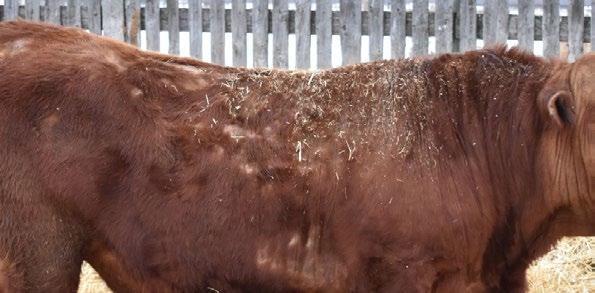
Answer: Controlling lice involves minimizing the lice burden, not completely eliminating the pest, as is the approach taken with many other parasites in cattle.
Beef cattle are affected by two forms of lice, chewing and sucking lice, both of which can cause severe irritation if found in large numbers. Chewing or biting lice, such as Bovicola bovis, have a broader mouth piece and consume debris found on the skin surface. Sucking lice, such as Linognathus vituli and Haematopinus eurysternus, use their narrower and longer mouth piece to take blood meals.
experience decreased weight gain and productivity, as well as reduced insulating ability of their coat due to the hair loss. There is also the potential for anemia to develop in severe infestations of sucking lice.
Control of lice is not well achieved through chemical treatments alone, as management changes are also integral. The process begins with proper diagnosis through careful inspection of the animal, as itching can have various different causes. Visual detection of lice and their eggs can be conducted by parting the hair and examining the hair around the brisket, cheek, muzzle, eyes, withers, top line and tail head. With a positive diagnosis, producers can begin by applying management changes. It is important to cull animals that are chronically, heavily infested with lice, as they are generally immunocompromised and can act as reservoirs to reinfect herds. Isolating and inspecting any animals entering the herd will prevent introducing a heavily infested animal to the herd. It is also critical to try decrease stocking density, as crowding can increase their numbers.
Chemical treatments are available in several forms: dusts and sprays, topical and systemic products. The two most commonly used products are macrocyclic lactones, such as ivermectin and moxidectin, and pyrethroid compounds, such as cyfluthrin and permethrin. When using these products, a two-treatment plan may be most efficacious because both types of product are only able to kill adult lice. An example protocol involves treating early winter with a topical macrocyclic lactone, such as ivermectin, followed by a pyrethroid-containing product in mid winter. A newer one-treatment product containing both a permethrin and an insect growth inhibitor is now available and able to provide longer lasting effects due to its ability to kill both adult lice and eggs.
Lice have a direct life cycle, meaning that all life stages take place on the host, the cow. They are only able to survive a few days in the environment and spread primarily through direct contact with infected animals, although contaminated objects, such as bedding, can be a minor source of transmission.
Lice are fairly host-specific, which means that cattle lice usually do not infect other species. Lice present themselves in a cyclical pattern, with their numbers increasing in late fall or early winter when the stocking density increases. Their numbers then decrease in the spring, in part due to shedding and higher skin temperatures of the cattle. Carrier animals transport lice during the summer months and are a source of infection in late fall for the remainder of the herd.
Most producers are familiar with the signs of a louse issue, such as scratching, irritation, excessive grooming, and hair loss. As louse numbers increase, animals may

It is necessary to treat all animals in a group and any that are entering the herd. Treatment timing is extremely important, as products need to be applied in late fall or early winter, when lice numbers have increased, but before it is too cold, as most products gel and are poorly absorbed at temperatures below 10 degrees Celsius. It is also recommended to alternate between products in order to prevent resistance from arising. When alternating between products, it is important to use products with different active ingredients and preferably ones from differing insecticide groups. Proper record keeping is necessary to ensure appropriate rotation through products.
If producers are experiencing difficulties controlling these pests even after applying management changes and chemical treatments, consultation with the herd veterinarian is essential. They can assist with diagnosis and development of an individualized plan for the herd, while minimizing the risk of resistance.
Share your Voice
Box 274, Austin, MB R0H 0C0
President: Melissa McRae 204-573-9903
Secretary: Laurelly Beswitherick 204-637-2046
Don’t miss
MANITOBA’S LARGEST CATTLE SHOW
NOV.
Nov.
DEC.
Fall Sales
Manitoba Ag Ex October 26-29 - Brandon, Manitoba
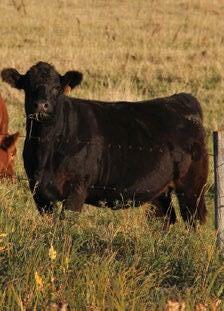

In the next issue of Cattle Country, a Manitoba Agriculture forage or livestock specialist will answer a selected question. Send your questions to Elizabeth. Nernberg@gov.mb.ca.
StockTalk for Cattle Country is brought to you by Manitoba Agriculture. We encourage you to email your questions to our department’s forage and livestock team. We are here to help make your cattle operation successful. Contact us today.
Andrea Bertholet Killarney 204-851-6087
Andrea.Bertholet@gov.mb.ca
Kristen Bouchard-Teasdale Beausejour 431-337-1688 Kristen.BouchardTeasdale@gov.mb.ca

Shawn Cabak Portage 204-239-3353
Pam Iwanchysko Dauphin 204-648-3965
Shawn.Cabak@gov.mb.ca
Pamela.Iwanchysko@gov.mb.ca
Cindy Jack Arborg 204-768-0534 Cindy.Jack@gov.mb.ca
Juanita Kopp Beausejour 204-825-4302
Elizabeth Nernberg Roblin 204-247-0087
Juanita.Kopp@gov.mb.ca
Elizabeth.Nernberg@gov.mb.ca
7 CATTLE COUNTRY November 2022 www.mbbeef.ca
5 Cherry Creek Farms Online Bull & Female Sale - FarmGateTimedAuctions.ca
www.mbsimmental.com NOV.
15 Come As U R - Rainbow River Simmental Production Sale - DVAuctions
17 Pembina Triangle Simmental Association 42nd Annual Sale - Cypress River, Manitoba
20 Maple Lake Stock Farm Annual Bred Heifer Sale - FarmGateTimedAuctions.ca
Nov.
Nov.
30 Associate Invitational Simmental Sale - FarmGateTimedAuctions.ca
4 Queens of the Heartland Production Sale - McAuley, Manitoba
5 Northern Light Bred Heifer & 2 Year Old Bull Sale - Virden, Manitoba
6 Keystone Konnection 43rd Annual Sale - Brandon, Manitoba
10 Transcon’s Season Wrap Up Sale - Neepawa, Manitoba
10 Shades Of The Prairies Simmental Sale - Brandon,
11 Bonchuk Farms Female Production Sale - McAuley,
DEC.
DEC.
DEC.
DEC.
Manitoba DEC.
Manitoba
Q&A Feature Brought to you by Manitoba Agriculture
Deanne Wilkinson
Did you know? MBP distributes a free, weekly ENewsletter to members and partners on timely beef topics. Subscribe Today! mbbeef.ca/news/ Half-page and full-page advertising opportunities also available.
Jennifer for
information. 1-800-772-0458
Contact
more
Making Change: Start by Starting
BY SCOTT KEMP
Of course, right? How else do you start?
This expression is used a lot in the fitness industry and the idea is to do something and build momentum from there. This can be applied to other areas of our lives where we want to make changes, including the management of our farms.
I was having a chat with someone recently and they were talking about wanting to improve their management and doing more long-term planning. As we talked through it a bit more, I came to understand that they were feeling overwhelmed and didn’t know where to start. They knew they needed to do some planning but didn’t know where to begin.
This sense of being overwhelmed and not sure how to start is an obstacle for many people when it comes to planning. For producers, a close cousin to this feeling is ‘busy-ness’. There is always something to do on a farm and with time being a limiting resource, choices must be made where to allocate that time. It’s easy to put off things that aren’t, or don’t appear to be, urgent. Planning can fall into that category.

The type of planning I’m referring to is longer-term planning that includes setting and implementing strategy. Capital investment is high in agriculture, and is increasing further, and margins are thin, at best. Of all the risks beef producers face, the risks associated with longer-term business strategy might be the most significant.
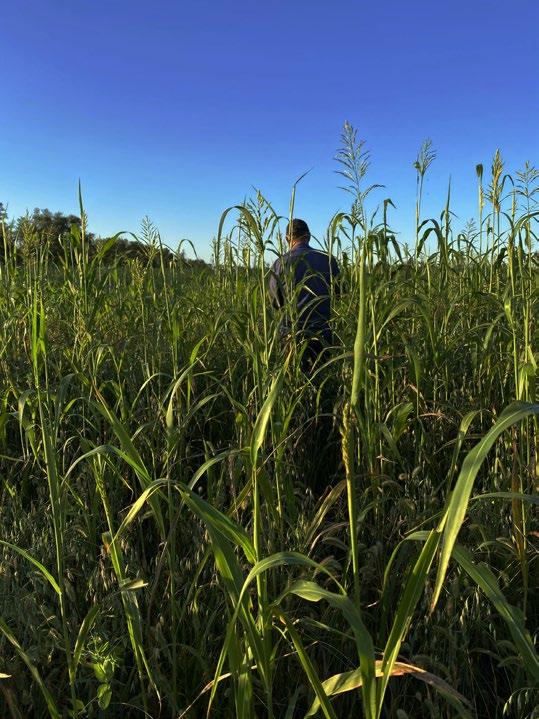

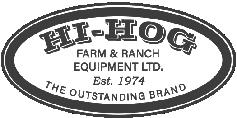
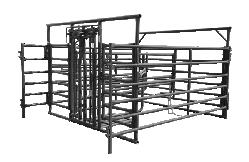

How many of the unoccupied farmyards in rural communities are a result of a business decision (made or NOT made) in the past that really was a function of strategy? A decision not to buy some land at some point? Not to buy or sell some cattle?
I’m sure you have heard the saying about the best time to plant a tree was 30 years ago, and the next best time is today.
If you are looking for ways to get over the hump and begin to take action, try introducing accountability to your management processes. There are three easy ways to start and actually, the easier the better.
• Send an email
• Make a telephone call
• Make an appointment.
The purpose is to engage someone (preferably someone at arm’s length to the farm but it can be a family member) who will hold you accountable to getting things done; in this instance, developing a longer-term plan.
After you have taken this first step, here are some additional things to know:
1. Start with the end in mind . The purpose here is to answer the question of what you are collectively (all people actively involved in the farm) working towards. Planning benefits from getting everyone on the same page. Without a common end goal, people will do what they think is best. This is completely understandable
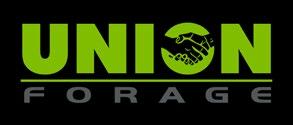
and not necessarily bad until there are disagreements about what is best for the farm.
2. Write in pencil, not pen. The most common reason I hear from farm families about their inability to plan is their belief that there are too many unknowns that can’t be planned for. That’s exactly why you would plan. With a plan in place, there is a lens to look through when dealing with the unknowns. Farmers sometimes get caught in the thinking that a plan is rigid. Long-term strategy for farms has to be flexible and able to react to events that impact on the business.
3. Don’t let false starts become barriers. There are going to be bumps in the road. If longer-term planning is new to you, understand that there will be a learning curve. Sometimes it is the proverbial ‘one step forward and two steps back’. With practice, that may turn into ‘two steps forward and one step back’. This is a learning process and there will be mistakes or failures along the road. Keep going and don’t let those setbacks derail the whole process.
4. Choose the appropriate level of detail. Another common comment I hear about the inability to plan is
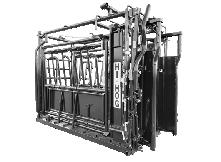
the thinking that plans need to be a textbook. A farm’s strategic or long-term plan ONLY needs to be at the level of detail that the family needs, given where their business is at AND what they are working towards. Generally, a simpler plan will be easier to implement. Start somewhere, get some momentum and greater detail can always be added as required.
5. Commit the time required and set it aside. This one is important, and it’s where the accountability mentioned above can help. Determine early on what the timelines are for the planning discussions, then set the meeting dates aside. Having meetings at a location other than the farm office or kitchen can be very helpful in ensuring that the commitments are kept.
Planning can be hard to initiate, and even harder to maintain. Start by starting and you will already be ahead of where you were yesterday.
Scott Kemp is a Farm and Agribusiness Management Consultant with Backswath Management. He can be reached at scott.kemp@backswath.com
8 CATTLE COUNTRY November 2022 www.mbbeef.ca
Trimming Chutes Calving Enclosures Squeeze Chutes 1-800-661-7002 www.hi-hog.com Call us for your Free Custom Handling System Design Assistance Custom Design Service WE'RE LOOKING FOR DEALERS Seeking people interested in becoming dealers in Manitoba Call Amber at 1 204 264 0609 WE'RE LOOKING FOR DEALERS JOIN THE UNION TEAM Seeking people interested in becoming dealers in Manitoba Call Amber at 1 204 264 0609

9 CATTLE COUNTRY November 2022 BUY ONLINE SIGN UP FOR A WEBSTORE ACCOUNT producers who already shop online + Convenience of shopping from anywhere, anytime + We’re always open and you can shop on any device –mobile responsive + Our shelves are never empty + You can access all approved CCIA tags at competitive prices and have them delivered to your mailbox Sign up today at info@canadaid.ca or call our client support team at 1-877-909-2333 Visit our webstore at tags.canadaid.ca The advantages are obvious 7,000 Join over
Intermediate WheatgrassPotential as a Rescue Hay Crop
BY P. LEHEIGET, E.J. MCGEOUGH AND D.J. CATTANI, UNIVERSITY OF MANITOBA.
In recent years, significant drought in western Canada has been a major challenge for not only grazed pasture but also for the production of hay for overwintering of the cow herd. Feed shortages (both in quality and quantity) has been occurring with increasing frequency over the last decade and represent a critical challenge for producers.
At the University of Manitoba, researchers are evaluating intermediate wheatgrass (IWG) as a perennial grain crop with dual purpose potential (within a single season) not only for food but also for cattle feed. This work builds on the perennial grain breeding program of Dr. Doug Cattani which began developing a perennial grain type IWG under western Canadian growing conditions in 2011. Intermediate wheatgrass is a deep-rooted, relatively drought tolerant grass, introduced to western Canada in response to the issues of the 1930s.

A dual-purpose forage can enhance sustainable crop/livestock intensification in a number of ways, including harvesting a cash food grain crop and concurrently providing much-needed high quality feed for cattle in late fall/early winter, when the quality of the typically offered stockpiled forages is generally low. A single planting with multiple years of grain production offers several other benefits such as providing valuable habitat for wildlife, including nesting waterfowl and songbirds, greater water use efficiency, nutrient management, and soil protection.
What did we do?
As part of a larger project evaluating the yield and nutritive value of IWG regrowth post-grain harvest as grazed late fall/early winter feed for growing beef cattle, we also evaluated if IWG could be used as a hay crop in the event of summer drought/crop failure when pro-
ducers may need to abandon grain harvest to provide additional cattle feed.
This large scale (45 ac) study was carried out at the University of Manitoba’s Glenlea Research Station, with the pastures established in 2020 and field measurements taken in 2021 when widespread drought conditions occurred throughout the province. The April 1-June 30 rainfall for the Glenlea site is 179 mm compared to 103 mm in 2021, of which 12 mm fell after all harvests were completed. The average daily temperatures in 2021 for June of 19.8℃ was about 2℃ above the long-term nor-
tions, the pure stand of IWG yielded, on average, 2.92 tonnes of dry matter (DM)/ac, with 10% crude protein (CP) and 57% total digestible nutrients (TDN). The IWG/clover mix had a lower yield of 2.41 tonnes of DM/ ac, but higher feed quality at 12% CP and 59% TDN. Comparing the IWG to the grass:legume mix, the tall fescue/alfalfa/cicer milk vetch had the lowest yield overall at 1.52 tonnes of DM/ac, but had the highest feed quality at 19% CP and 63% TDN. IWG produced 20% and 90% greater yields than the alsike clover mixture and the potential hay crop, respectively.
mal. Three treatments were evaluated: 1) IWG in a pure stand with no fertilizer post establishment, representing a low input system; 2) IWG (50%) + alsike clover (50%). Alsike clover naturally fixes nitrogen and has good water tolerance relative to alfalfa but is less aggressive which is important for mixed stand establishment. These were compared to a more traditional hay mix of 50% grass (tall fescue): 50% legume (alfalfa + cicer milkvetch).
Pastures were managed for weeds in 2020, with the IWG and grass/legume mix with the IWG sampled just before flowering in 2021 and the grass/legume mix harvested at 20% alfalfa bloom on June 15 to determine their yields and feeding value. No rain was received between the timings of the forage mixture (five days earlier) and IWG harvests. No fertilizer was applied to any IWG plots prior to grain harvest 2021.
What did we find?
Our analysis showed that under drought condi-
Additional to the evaluation of IWG as a hay potential hay crop, the researchers subsequently harvested the grain from the crop in early August. Although the grain was destined for food production, the research team evaluated the feed quality of the straw post grain harvest as an additional source of cattle feed. As expected, the feed quality of the straw was much lower than the hay, however it ranged from 5.3 – 7% CP, with TDN ranging from 50-52%, higher than may be seen with conventional annual crop straw. Although not a high-quality feed, this straw may be an important supplementary feed source in times of feed shortage.
Take home message
When faced with drought conditions, IWG offered a 90% greater yield than a traditional grass/legume mix. However, higher feed value was observed with the grass/ legume, thus consideration of the tradeoff between yield and quality for hay is essential. Nevertheless, this study showed that intermediate wheatgrass, alone or in combination with a legume, offers a potential avenue to supplement hay supplies in times of limited forage growth. Coupled with its ability to provide a cash crop and potential for late fall/early winter grazing for beef cattle, this dual purpose crop offers diverse options for cattle producers.
10 CATTLE COUNTRY November 2022 www.mbbeef.ca
Photo credit: University of Manitoba National Centre for Livestock and the Environment (NCLE)
At the University of Manitoba, researchers are evaluating intermediate wheatgrass (IWG) as a perennial grain crop with dual purpose potential (within a single season) not only for food but also for cattle feed.
Forage
BY: DR. MARY-JANE ORR, MBFI GENERAL MANAGER
A full-year grazing plan for managing the feed supply of the cow-calf herd at Manitoba Beef & Forage Initiatives (MBFI) integrates summer rotational grazing studies, stockpile of annual and perennial stands, and bale pod feeding in the field. In an average year, the transition from grazing projects in mid-October to extended grazing practices is dictated by the need to winterize surface and shallow buried summer water lines. Stretching grazing as long as weather conditions permit minimizes our feed costs and equipment demands of harvesting, transporting and feeding stored feed, and manure yardage. Given the challenge of unpredictable weather patterns, MBFI strongly recommends planning for a back up (or two) feeding strategies if livestock need to be moved in response to changing conditions.
MBFI targets 365 days of grazing, utilizing a variety of feed sources and grazing strategies. Planning based on previous year’s production and grazing records is essential in determining the acre allocation for management practices to target at different times of the year. Stockpiled or banked forage is recognized as one of the most cost-effective practices, where standing forage is accumulated in the growing season to be grazed after dormancy in late fall, winter, or the following early spring.
Planning for stockpiled grazing is started a year in advance taking into consideration the plant species in each forage stand and is responsive to seasonal growing conditions. Determining when to initiate the accumulation of forage for stockpile is a balance of yield vs quality specific to the plant types in the stand. A minimum recommendation is to have 60 days of forage growth before the first killing frost, however it is not uncommon to have a full season’s growth left to reach maturity to recharge the seed bank in the field. Some plants retain nutritional quality better than others, but universally quality steadily declines through fall, winter, and into spring. It is critical to match the livestock class, expected performance, and their nutrition requirements to the stockpile being provided and have supplementation available if needed.
At MBFI we maximize the grazing season by (1) defer harvesting a second or third cut of alfalfa-grass hay for October-November grazing, (2) defer summer grazing of perennial pasture paddocks targeting use for either late fall or early next spring, (3) utilize an annual forage standing (or swathed) in the field, and (4) access wetland riparian areas in drier fall conditions.
For both legume (e.g., alfalfa) or grass dominated stands, waiting until after dormancy is important to mitigate grazing damage to overwintering energy
reserves. In the case of alfalfa to properly winterize, it is recommended to have a minimum of six weeks of uninterrupted growth before a killing frost allow for accumulation of energy reserves in the roots. For the cool season grasses common in Manitoba pastures and hay fields, early productivity in the next spring is predominantly due to the growth of vegetative tillers from mid-August to early October. Vegetative fall tillers, typically under four inches in height, have a lower tolerance to grazing and are more susceptible to winter kill leading to overall loss of stand productivity. Grazing ‘taller’ to leave more residue protects next year’s growth and planning for longer rest of fall grazed paddocks supports long term productivity.
Planning the number of grazing days for each field or paddock across the MBFI land base, and integrating fall grazing of annual forages, ensures we can provide our perennial stands with adequate rest going into dormancy to mitigate over-winter kill losses and improve plant vigor for early spring growth. For the 2022 growing season MBFI trialled the grazing application of teff, a warm-season annual grass. Teff can be harvested for multiple cuts of hay; however we were interested in seeing how stockpiling teff for early fall grazing would work.
The teff grass was seeded in mid-June and yield samples were collected in advance of grazing in late September. Early growth was slow and not competitive against weed pressure. Following application of 2,4D Amine for broad leaf control, and more favorable growing conditions the teff yielded an average of 3100 dry matter lbs/acre. The dry matter feed quality in September tested at 8.4% crude protein (CP), 56% total digestible nutrients (TDN), and relative feed value (RFV) of 88. MBFI replacement heifers grazed the field, and were content with the available forage. However, we did observe higher residue of the less palatable mature stems. In comparison, stockpiled hay field alfalfa-grass sampled later in October at MBFI is typically yields and average of 1700 dry matter lbs/acre with CP of 12.7%, TDN of 55%, and RFV of 102.
For more information on how MBFI makes use of stockpile grazing or to start a conversation please email MBFI at information@mbfi.ca or call at 204-761-3300.
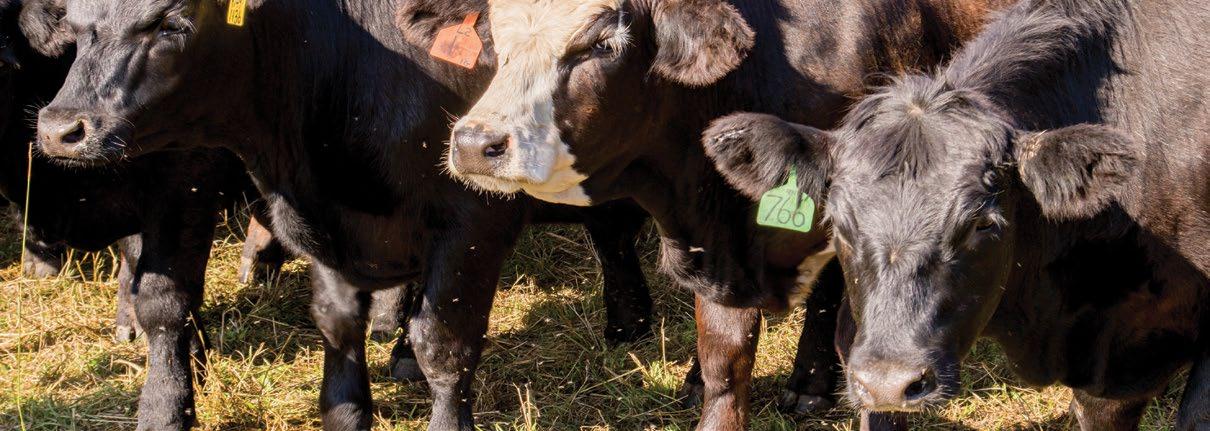

11 CATTLE COUNTRY November 2022 www.mbbeef.ca
MBFI cows grazing stockpiled hay field alfalfa-grass mix in November 2021. (Photo credit: MBFI)
LOCK-IN YOUR PROFITABILITY PURCHASE YOUR LIVESTOCK PRICE INSURANCE POLICY TODAY The time is now to purchase your Livestock Price Insurance policy and secure market pricing for your cattle. Policy purchases are available Tuesday – Thursday from 3 p.m. to 12 a.m. CST. Policy settlements are available Mondays from 3 p.m. to 12 a.m. CST. Visit LPI.ca for more information or call 1-844-782-5747 to purchase your policy. MASC Livestock Price Insurance (LPI) FALL ad Size: 9.63”wide x 7.75”deep Half page Issue date: November 2022
Banking On Stockpiled
Tailgatin’ Good
BY: ANNA BORYS, MBP FOOD EXPERT
Fall is officially here and one of the main events of the season will soon be upon us: Grey Cup Sunday. Although chicken wings, mozzarella sticks or nachos might be your favourite staples for hootin’ and hollerin’ in front of TSN all day, perhaps adding a new competitor to the lineup will really amp things up. The Philly Cheesesteak is not only a classic but so easy to throw together using only a few simple ingredients. And true to myself, I’ve gone and made it appetizer size. This makes a tasty way to serve ribeye to your football-watching pals without breaking the bank. An appetizer using a premium cut of steak for under $20.00. Sounds good to me!
There are many variations on this infamous sandwich. It comes down to four main ingredients: steak, veggies, cheese, and bread. Some will say steak with provolone using only caramelized onions is most authentic when others prefer grilled peppers with their onions then smothered in Cheez Whiz. I’m a firm believer in if it’s something you find delicious, that will be the best version. I took a few liberties myself by adding the slightest bit of pan gravy in with the meat mixture (to prevent drying out), serving on slices of French baguette as opposed to Italian sub rolls, then garnishing with sliced pepperoncini. The biggest key to making this sandwich successful is slicing the steak as thin as possible before grilling. I would even recommend throwing it in the freezer for 20-30 minutes to help firm the meat before slicing. Instead of using a large Italian sub roll, I like to top slices of French baguette before throwing in the oven. The topping will protect the bread from burning and will keep it still soft and chewy like a sandwich (this is not supposed to be crostini!).
Whether the Blue Bombers are going to Regina on November 20th or not, this is a fun and super easy recipe to serve for any holiday party coming up. And here’s a hot tip…these are even better reheated the next day. Just set your oven to 350 and bake until heated through and the cheese on top gets all gooey and bubbly all over again.
Let’s go Blue!
Watch Great Tastes of Manitoba on Saturday, December 3 (CTV Winnipeg, 6:30pm) for more delicious recipes from Anna Borys and Manitoba Beef Producers.
• GRASSFED: “True North Foods is partnered with A&W Canada to supply Canadian grassfed beef for A&W’s grassfed burger program.


• SERVICES: Whether you are a specialty producer looking to get your product to a speci c market or distributor, or if you are producing commodity livestock for sale, we can partner with you. From our multi-species capabilities to our ability to handle smaller volumes, we o er excellent capabilities for producers in the Canadian Prairies to maximize their pro tability.



• FACILITY: We have a state-of-the-art facility to allow us to reach markets across Canada, the USA, and beyond. We understand producer’s needs, their care for their animals, and their honest, straightforward nature. Call us to hear how we can work together to get your product to market.
www.truenorthfoods.ca | duane@truenorthfoods.ca | 204-791-5010

Philly Cheesesteak Bites
Appetizer yields: approx. 16-20 portions
•
•
•
• 1 french baguette, 1 cm slices
• 1 package provolone, slices, halved
• ½ cup pepperonini, sliced (or banana peppers)
FLANK STEAK
1. Slice the steak in extremely thin slices, against the grain. For easier slicing, put the steak in the freezer for 20-30 minutes before slicing.
2. Heat a large cast iron or non-stick skillet over high heat. Add canola oil.
3. Once oil is hot, carefully add sliced steak to hot pan and sear until edges are browning and steak is just cooked through. Season with salt and pepper. Remove steak from skillet.
4. Add julienned onions to the pan and turn heat to medium low. Cook onions until they start to caramelize. Season as necessary.
5. Add flour and extra tablespoon of canola to pan and cook for another 2-3 minutes. Slowly add water while stirring to create a creamy mixture. Return steak back to pan and stir to combine. Season as necessary. Once mixture is thickened, remove from heat.
6. Turn broiler on. Line a baking sheet with parchment. Portion heaping spoonfuls of the steak mixture onto the sliced baguette and lay one half of sliced provolone on top. Repeat until all the mixture is used up.
7. Place under the broiler until the cheese has been melted and lightly bubbling, about 3-4 minutes. Watch carefully as to not burn.
8. Remove from oven and garnish with sliced hot pickled peppers.

NOTES
• These can be prepared the day before and heated through in a 350°F/180°C oven.

12 CATTLE COUNTRY November 2022 www.mbbeef.ca
1 tbsp canola oil
12-16 oz. ribeye or striploin steak
• 1 onion, julienne
• 1½ tsp Kosher Salt
• ½ tsp Black Pepper
• 2 tbsp all purpose flour
1/3 cup water
(Photo credit: Anna Borys)
Tim Sopuck: Not Done Advocating For Conservation and the Beef Industry Yet

 BY ANGELA LOVELL
BY ANGELA LOVELL
After 43 years in conservation, Tim Sopuck recently retired as CEO of the Manitoba Habitat Heritage Corporation (MHHC), a position he held for 12 years. During that time, Sopuck saw a lot of changes and much progress made in the conservation field. He has also been a tireless advocate for the beef industry, emphasizing the importance of beef production to conservation of wildlife habitat and the environment.
Manitoba Beef Producers caught up with him shortly after his retirement to reflect on his career and his future plans.
What led you to a career in conservation?

I ended up in conservation mainly because my family had a cottage at the lake where I got to go in the summers, and my dad took us fishing and hunting. We

made a connection to the outdoors that way, and when you hunt and fish, you feel keenly the sense that it’s your responsibility to put things back. It was pretty natural to end up in a career in conservation as a result of the opportunities we had growing up to be in the outdoors so much.
What path did you take to your career?
I got a four-year degree in Zoology at the University of Manitoba and had great summer jobs up north in wild and remote places doing fisheries or wildlife studies. I also spent a year-and-a-half living in Northern Manitoba trapping and doing commercial fishing with Indigenous people. I had all kinds of these additional lived experiences that helped set me up for this career.
Where was your first job in conservation and what were your responsibilities?
My first full-time job was with Ducks Unlimited
Canada (DUC), where I spent seven years trying to develop wetland conservation projects. A big amount of my time was spent talking to farmers and other land owners to get permission to look at their land, and have discussions about whether or not wetland conservation might work on their farms.
It was a humbling period because most of the time, you would drive up to somebody’s door with a DUC sticker on your pick-up truck, and you might hear a thing or two about the problems that people had with water and wildlife before you were able to have a conversation about whether or not there was any conservation possibilities on their farm. It was amazing how many times I found out there were, because so many of the land owners that I dealt with did have an interest in seeing wildlife on their land.
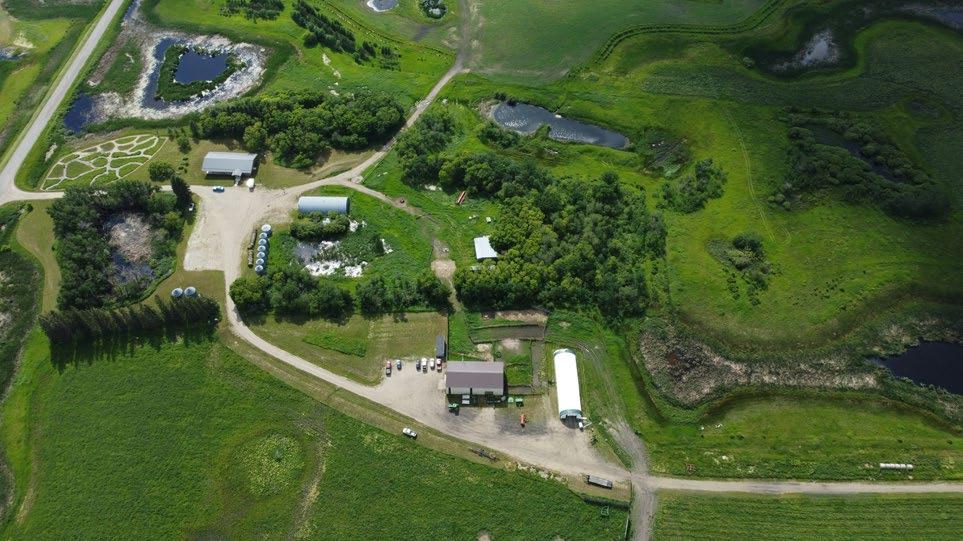
www.mbbeef.ca PUBLISHED BY MANITOBA BEEF PRODUCERS SEPTEMBER 2022 POSTMASTER PLEASE R ET URN UNDELIVERABLE C OPIE S TO MB P, UNI T 220, 530 CENTU RY S TREE T, W I NNIPE G, M B R3H 0Y4 CANADIAN PUBLIC AT IONS MAIL P RODU CT SAL ES AG REEMEN T NUMBE R 40005187 P OS TA GE P AID IN W INNIPE G. District Meeting Season Page 3 ATV Safety Page 7 Mental Health Documentary “Deep Rooted” Page 8
An overhead view of the Manitoba Beef & Forage Initiatives Inc. Brookdale farm site near Brandon. MBFI recently launched a new podcast to showcase the beef and forage industry – please see the story on page 14 of the newspaper. (Photo credit: Matt Poole/mplocates.ca)
Page 2
Not done advocating for conservation and the beef industry yet
It was a tremendous learning opportunity for me because I spent much of those seven years at kitchen tables of farmers and landowners hearing the stories about the consequences of wildlife on the farm, and having discussions about how to find a place for nature in agriculture.
How did you end up at Manitoba Habitat Heritage Corporation (MHHC)?

After DUC, I spent four years at the Fort Whyte Centre in Winnipeg doing a lot of fundraising, which was great training for what came down the road, but the agricultural landscape always called to me. I just thought that doing conservation work in the agricultural landscape was one of the most exciting opportunities in the world of conservation and the environment because there was so much going on, so much change, so much need and opportunity.
In 1991, I got a chance to work with MHHC as a communication manager, then went on to Manager of Operations and then in 2009, I was named Chief Executive Officer.
Can you talk about some of the changes in attitudes and perceptions about conservation that you have seen over the years, especially in the agricultural community?
Certainly, when I started, there was a lot of animosity between wildlife conservation and agriculture. There was just a general view that there really wasn’t a good fit and I think a lot of distrust on both sides. I’m not saying it was all failure, but it was a time when attitudes were harder and a little more separated than they are now.
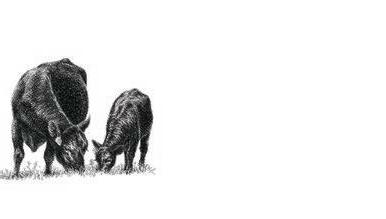
Early on in my career, I bought into the idea that if only we could just get landowners to do the right thing, then everything would be fine. Looking back, that was the arrogance of youth, and I had to jettison it to be more effective. In the 1990s there was a new attitude that said, we have to be partners with landowners in conservation. So, there were more programs developed where there were incentives being offered to landowners to participate in conservation. We were seeing more efforts to provide cost shares for landowners who might do something different like seed down some areas to provide nesting cover for water fowl, or, if they were going to make an adjustment to grazing practices, putting up at least some of the funds for things like additional fencing on their property.
And more landowners were saying, ‘these conservation folks are starting to get it. This stuff costs money and they’re willing to help me out.’ I think that has been an important and positive change on the land. You have long been a champion of the importance of beef production to conservation and the environment. How did that evolve?
Conservation organizations began to see that livestock producers had most of the habitat. So, one of the really important things has been conservation recognizing how strategically important the grazing livestock industry is to conservation.
One of the things, for me, was looking at conservation plans that were being written 20 years ago, and
they were talking about how important it was to save grasslands, wetlands, and pasture lands, but we weren’t writing these plans with cattle producers at the table. In the 2000s, we started to lose significant segments of the cattle industry because of BSE and chronic low prices, and every time we saw a reduction in the cattle herd, we saw a reduction in grasslands, wetlands and other habitats because the lands basically went to annual crop production.
The line that got me more than anything else was a statement by a former Manitoba Cattle Producers Association (now operating as MBP) director, Glen Campbell. He said, if all the cattle producers in Manitoba were considered as a single group, it would be the largest habitat conservation organization in the province by far. He was absolutely right, and that helped to solidify in my mind that conservation groups had to have a more fundamental and strategic relationship with the beef industry on the Prairies.
It got me thinking about other ways in which conservation groups could be of strategic value to the industry because I think a lot of cattle producers would be surprised to hear that conservation groups in Western Canada want to see the cattle herd grow, not retract, because that would point to the fact that we’re also gaining or retaining grasslands, wetlands, woodlands and pastures.
Now you see conservation groups like DUC, MHHC, Nature Conservancy Canada and Birds Canada sitting on the Canadian Roundtable for Sustainable Beef. They are there because the beef industry is strategically important to the conservation of habitat. It’s just that simple, and reflecting back over the last 20 years, its one of the things that I’ve been really pleased to see. And conservation groups didn’t really need any prodding, it’s just evident to everybody that this relationship between cattle and conservation is too important to be left on the sidelines.
What accomplishments have you been most proud of over your career?
One of the MHHC programs I’m most proud of is an initiative called Species at Risk Partnerships on Agricultural Lands (SARPAL). It’s a stewardship program for species at risk that focuses on providing incentives to cattle producers to help manage the grasslands because grasslands in certain areas of the province are where all the grassland species at risk are found. They’re on those grasslands not because cattle producers put the birds at risk; they’re on those grasslands because those are the remaining areas of habitat. So, these cattle producers have been stewards of lands that are important to species at risk and SARPAL provides some incentives to help them mange those grasslands a bit more effectively, improve their management practices and be more viable as cattle producers.
The funding for this program goes to the Manitoba Beef Producers and MHHC delivers the projects on MBP’s behalf. So, here we have a conservation group working for a livestock industry group providing and delivering species at risk stewardship projects on cattle
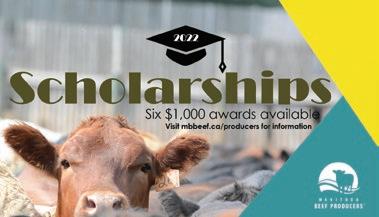
lands. I think that makes a powerful statement about how committed the industry is to be a conservation player and it builds such an important partnership between MBP and MHHC. It’s providing significant benefits to everyone, including species at risk.
How are conservation groups like MHHC helping to promote positive environmental messages about livestock production?
It would be really great if conservation groups had more resources, and could be more effective at telling the positive environmental messages about cattle on the land, and they are trying to do that.
Whenever I can, I speak about beef from the Great Plains being an environmental choice product. If you buy beef that comes from the Great Plains of North America, you’re supporting carbon sequestration because of all the grasslands that remain intact because of that industry. You’re supporting biodiversity, you’re supporting perennial grasslands that capture water and hold nutrients in place instead of them running off the land. And you’re supporting a way of life that has sustained that landscape for many decades. Many of us in the conservation world view it as our responsibility to speak on behalf of the industry and the marketplace, wherever we can. It’s just that’s very hard to do in a way that counters some of the massive misperceptions about the environmental effects of beef.
But when you look at any conservation organization that’s a member of the Canadian Round Table for Sustainable Beef, and there are a number of them, those people are making the statement that beef is something that we want as part of the production systems in these natural areas. As far as I’m concerned, beef is a positive environmental choice because there’s habitat out there that otherwise might not have been there if that cow/calf operator hadn’t been doing what they’re doing.
What are your future plans?
The industry needs spokespeople from a conservation side of the ledger. I’m not a nutritionist, I’m not an economist, but I know something about biodiversity and those kinds of things, and I’m happy to speak where I can about the importance of beef production and environmental concerns.
I think the beef industry should be really proud of what they’ve done in this area because other groups are saying how do we take that model, that the beef folks have put together, to tell our story.
2 CATTLE COUNTRY September 2022 www.mbbeef.ca DISTRIC T 13 MARY PAZIUK Dauphin, Ethelbert, Gilbert Plains, Grandview, Roblin and Mossey River COMMUNICATIONS AND MARKETING LEAD David Hultin O F FIC E A SS I S TA N T Jennifer Patryluk D ES IGNE D B Y Print Studio One C AT T L E CO U N TR Y E D I TO R David Hultin LIVESTOCK PREDATION PRE VENTION PROJEC T COORDINATOR Ray Bittner FINANC E Deb Walger DISTRIC T 14 VACANT Minitonas-Bowsman, Mountain, and Swan Valley West MA NI TOB A BE E F PROD U C E R S Ph: 1-800-772-0458 Un i t 220, 530 Ce n t u r y S t ree t Wi nn ipe g, MB R 3H 0Y 4 PH - (204) 772-4542 FX - (204) 774-3264 info@mbbeef ca www.mbbeef ca Carson Callum GEN E RA L M AN AG E R DISTRIC T 1 ALFRED EPP Boissevain-Morton, Brenda-Waskada, Grassland, Deloraine-Winchester, and Two Borders DISTRIC T 2 NANCY HOWATT Argyle, Cartwright-Roblin, KillarneyTurtle Mountain, Lorne, Louise, Pembina, and Prairie Lakes DISTRIC T 3 ANDRE STEPPLER Cartier, Du erin, Grey, MacDonald, Portage la Prairie, Rhineland, Roland, Stanley, Thompson, Montcalm, Morris, and Ritchot DISTRIC T 4 VACANT De Salaberry, Emerson-Franklin, Hanover, La Broquerie, Piney and Stuartburn, Montcalm, Morris, Ritchot, Spring eld, Ste. Anne, Taché, R.M. of Piney and Reynolds DISTRIC T 5 STEVEN MANNS Cornwallis, Elton, Norfolk-Treherne, North Norfolk, Oakland-Wawanesa, Glenboro-South Cypress, and Victoria DISTRIC T 6 MELISSA ATCHISON Pipestone, Riverdale, Sifton, Souris-Glenwood, Wallace-Woodworth, and Whitehead DISTRIC T 7 T YLER FULTON PRESIDENT Ellice-Archie, Hamiota, Prairie-View, Riding Mountain West, Rossburn, Russell-Binscarth, and Yellowhead DISTRIC T 8 MATTHEW ATKINSON 2ND Clanwilliam-Erickson, Glenella-Lansdowne, Harrison-Park, Minto-Odanah, Oakview, North Cypress-Langford, Rosedale, and West Lake-Gladstone DISTRIC T 9 TREVOR SUND Alexander, Brokenhead, East St. Paul, Lac Du Bonnet, Rockwood, Rosser, St. Andrews, St. Clements, St. Francois Xavier, West St. Paul, Whitemouth, Woodlands, LGD of Pinawa, Reynolds, Spring eld, Ste. Anne, and Taché DISTRIC T 10 MIKE DUGUID SECRETARY Armstrong, Bifrost-Riverton, Fisher, and Gimli DISTRIC T 11 ARVID NOTT VEIT Coldwell, Grahamdale, St. Laurent, and West Interlake DISTRIC T 12 MARK GOOD TREASURER Alonsa, Lakeshore, McCreary, and Ste. Rose Maureen Cousins POLI C Y AN A LY S T Keystone livestock specializing in livestock insurance for over 45 years LIVESTOCK INSURANCE Lois McRae & Joyce Gordon RR 1 Box 57 Brandon, Manitoba R7A 5Y1 h: 204-728-3058 c: 204-573-5192 f: 204-727-7744 marmacfarms1@gmail.com SERVICES
will be given to those students pursuing a field of study related to agriculture or to those acquiring a skilled trade or pursuing a career that would be beneficial to the rural economy.
Preference
The completed application, supporting documents, references, required essay or video, etc. must be submitted to MBP by 4:30 p.m. Friday, November 4, 2022. Page 1 Tim Sopuck:
Photo credit: Donalee Jones/Great Tastes of Manitoba
Looking Back at Summer Activities for MBP and Looking Ahead to Fall District Meetings
Greetings all,
As we approach another busy time (back to school, harvest, etc.), I am hoping many of you were able to take some time away from the farm to recharge. This was hopefully made possible by the abundance of grass this year as opposed to last growing season. From what I am hearing from producers across the province, though the excess moisture has been challenging, we are in a much better position going into the fall feed wise than last summer when drought conditions prevailed.
Speaking of this fall, we are looking forward to hosting our district meetings, some in person and one virtual. Barring unforeseen circumstances due to the pandemic, the plan is to hold the odd-numbered district meetings in person as director elections are required in them. There will also be one virtual session for those that can’t make it, and this will be recorded for later viewing as well. For those members that reside in an even-numbered district, we encourage you to attend an odd-numbered district meeting that is most convenient for you or to take in the virtual meeting. However, you will not be eligible to vote in the director elections.

The in-person meetings will start around 4 p.m. where we will provide various updates on MBPs activities over the past year. We will take a break for a beef supper and some fellowship around 5:15 p.m. At about
CARSON CALLUM General Manager’s Column

6:15 p.m. we will finish up any outstanding presentations, do the director elections and hold the resolutions and action items component of the meetings. Please see the ad on this page for the meeting dates and locations. Registration is free and will be available through the MBP website, social media channels, and the weekly e-newsletter.
be focusing on the bilateral agreement with the federal government to determine how programs will roll out in the province.
We see many potential benefits for the beef sector arising from SCAP, including some adjustments to business risk management programs and an increased overall financial commitment by governments to the cost-shared portion of this new policy framework. However, as always, the devil is in the details. We will be reviewing and providing feedback on every stage in the consultation, such as those involving the $250 million Resilient Agriculture Lands Program (RALP) to shape how it can best be utilized by beef producers here in Manitoba. RALP is supposed to support ecological goods and services provided by the agriculture sector.


As well, late resolutions forms will be available on MBP’s website for those members that cannot attend a meeting but who would like to provide resolutions for consideration for debate in advance of our 44th Annual General Meeting (AGM) in February 2023.
Location wise, we are switching it up for our 44th AGM. Instead of holding it in Brandon, this time the AGM will be held at the Victoria Inn Hotel and Conference Centre in Winnipeg on February 2-3, 2023. Stay tuned in Cattle Country, on MBP’s website and on our social media channels for further details on our annual event. We’d love to see you there.
Looking ahead to the fall, I know a major discussion amongst our board will be around the latest iteration of the Next Policy Framework which will replace the Canadian Agricultural Partnership when it expires in March 2023. At the July federal/ provincial/territorial ministers of agriculture meetings the ministers reached an agreement in principle on a new agreement on the Sustainable Canadian Agricultural Partnership (SCAP), and it will take effect in April 2023. Now the Manitoba government will
As I write this column it is only a few weeks away from university and college programs resuming for the fall. If you are a student pursuing post-secondary studies or training in the 2022-23 academic year, I would encourage you to consider applying for the MBP scholarship program. MBP provides six $1,000 scholarships annually for MBP members or their children attending a university, college, other post-secondary institution or pursuing trades training. Preference will be given to those students pursuing a field of study related to agriculture or to those acquiring a skilled trade or pursuing a career that would be beneficial to the rural economy. The completed application, supporting documents, references, required essay or video, etc. must be submitted to MBP by 4:30 p.m. Friday, November 4, 2022. For more information, including the application form visit our website: www.mbbeef.ca
MBP will be busy with many files over the next number of months leading up to our district meetings. I hope to see many of you there to discuss all the important topics that impact the sector, such as recognition of the ecosystem services provided by producers, ensuring business risk management programs are more responsive to beef producers’ specific needs, the Agricultural Crown Lands program modifications and more.
I would also like to again take the opportunity to greatly thank Dr. Mary Jane Orr and her team at Manitoba Beef & Forage Initiatives for hosting our first-ever MBP summer BBQ at MBFI’s Brookdale site in July. It was so great to see so many producers and industry leaders, as well as recognize past MBP directors for their service to our board. Thanks as well to Agriculture Minister Derek Johnson, Official Opposition Leader Wab Kinew and Dauphin-Swan River-Neepawa MP Dan Mazier for bringing greetings and spending time with the producers. It was appreciated.
Best regards, Carson.
3 CATTLE COUNTRY September 2022 www.mbbeef.ca
DATE DISTRICT DIRECTOR LOCATION October 19 9 Trevor Sund South Interlake Rockwood Ag Society - Stonewall October 20 11 Arvid Nottveit Ashern Legion October 24 13 Mary Paziuk Rotary Arena (upper floor) - Dauphin October 25 7 Tyler Fulton Miniota Community Centre November 1 3 Andre Steppler Carman Legion Auxilliary Hall November 2 5 Steven Manns Austin Community Hall November 3 1 Alfred Epp Mountview Centre - Deloraine November 7 All VIRTUAL MEETING - 7:00 pm DISTRICT MEETING SCHEDULE 4:00 pm start time | Register at mbbeef.ca Questions about what district you live in? Call the MBP office at 1-800-772-0458 or email: info@mbbeef.ca Wild pigs are WIDESPREAD in Manitoba LOOK OUT WILD PIGS FOR To learn more or if you see evidence of wild pigs, call 1-833-SPOT-PIG or visit SQUEALONPIGSMB.ORG The in-person meetings will start around 4 p.m. where we will provide various updates on MBP’s activities over the past year.
Another Tough Year Ahead for the Economy But Not All Bad News for Beef Producers
BY: ANGELA LOVELL
Agricultural industry analysts all agree that the year ahead isn’t likely to be much different than the last two years in terms of the volatility and uncertainty that has characterized everything from supply chains and commodity prices to geopolitical issues and global economic struggles.
But, with global supplies tight, and demand and prices strong for Canadian beef, the sector may be able to weather the headwinds better than some others.
Brenna Grant, Executive Director of Canfax, in her presentation at the Canadian Beef Industry Conference (CBIC) in Penticton, B.C. in mid-August said there are several factors beef producers should watch in the year ahead.
Firstly, there continues to be strong domestic and international demand for red meat, and smaller beef supplies globally, which is highly supportive of a strong futures market for beef cattle for the second half of 2022 and into 2023.
Canada had record high beef export values in 2021 and demand looks to stay steady through the rest of the year. At the same time, domestic retail beef demand was at its highest for 30 years during the height of the pandemic in 2020, when more people were cooking at home and still remains strong.
Retail beef prices have held up well through the past couple of years but when prices reached record highs in the first quarter of 2022, consumers began to switch from high-end cuts to ground beef and to other lower priced meats like pork and poultry.
“Where we get challenged is when we have our price relationship with pork and poultry get out of whack, and we then see incentives for the consumer to switch between proteins,” Grant said.
Grant said beef supplies to consumers could be the tightest since 2015 due to large exports and virtually no growth in Canadian beef production.
Tight cattle numbers ahead
With large numbers of cows coming to market, cow slaughter is up four per cent in Canada, but a large number of cows are still being exported from western Canada. Cow prices in August were the strongest since 2015.
“The combination of higher prices and larger supplies shows how much demand we have for lean trim,” Grant says.
Canada has had large cattle on feed numbers for the last 13 months due to drought-induced placement last year; cattle were being pulled forward because of the lack of pasture. Placements were down in June and July of this year, so Grant says the numbers should get tighter and more current throughout the second half of the year.
Fed cattle numbers are expected to get tighter in the fourth quarter too because the higher numbers of fed cattle have been supported by heifer placements, which were up 22 per cent from last year.
“We know that if they were placed into feedlots, they weren’t put back into the cow herd so it’s just another indication that we are going to have a smaller cow herd on January 1st [2023],” Grant said.
Canada has also switched from being a net importer of fed cattle last year to a net exporter this year, which will further tighten supplies.
U.S. cattle inventories are also dropping because of the recent drought and could approach record lows.
“Supply is not going to be an issue as far as having to be cautious on markets, more likely it is going to be demand,” said Duane Lenz, an analyst with CattleFax in his CBIC presentation. Beef consumption in the U.S. is predicted to drop from an average of around 58/lb. per capita per year to around 52/lb. in the next two or three years, just because supply will be down. Demand will still increase, so that will support even stronger beef prices.
Currently, Canadian packer utilization has been at around 94 per cent but as cattle supplies shrink across North America in the year ahead those levels will drop.
“We are going to see leverage shift from the packer back to the feedlot, as they [packers] are going to be looking for cattle,” Grant said. She expects overall beef production to be up a modest two per cent this year.
Cattle prices will stay up Alberta fed prices have steadily increased since February and are the highest since 2015 and Grant said she expects prices to continue to increase throughout the fall, averaging between $180/cwt and $190/cwt.
“We are going to have some classes of cattle that are expecting to be back in the black for feedlots, which is going to be helpful as our feedlots have been challenged on margins over the last couple of years,” Grant said.
Feed prices have been down since the end of June which has been price supportive of the feeder markets.
“This means, for our yearling grasser markets, prices have been increasing since May supported by strong futures markets as well as tighter supplies as we had a number of grass cattle that never made it to grass; they ended up getting placed in April and May,” Grant said. “We are looking at Alberta yearling prices ranging between $220/cwt and $240/cwt peaking in late August and into September.”
With large numbers of cows coming to market, cow slaughter is up four per cent in Canada, but a large number of cows are still being exported from western Canada.
There have been strong forward sales in the U.S. in the calf market, with prices reaching $250/cwt in Ontario this August, which Grant said hints at some exciting prices coming up for cow/calf producers.
“This spring if you look at livestock price insurance it was looking at seasonal price decline that you would normally see during the fall run of prices between that $220/cwt and $235/cwt,” Grant said. “But as feed pieces have come down there is definitely potential for a counter-seasonal rally going into the fall, and that puts prices in the $240/cwt to $260/cwt range.”
Grant added it also illustrates the benefit of livestock price insurance which provides a floor price but leaves the upside open so producers can take advantage of higher prices.
A rebound in cow/calf margins is likely this year, Grant said, quoting information from Canfax’s cow/ calf cost of production network which is 46 benchmark farms from B.C. to the Maritimes.
What about feed?
Although feed prices are down, feed supplies and future prices could still be an issue going into winter because although many drought-stricken areas of Canada and the U.S. have received more moisture so far this year, more rainfall is needed to fully recharge soil moisture in many areas, so it will remain to be seen how the rest of the summer and fall weather affects yields. AAFC is predicting barley prices averaging about $3.80 per tonne.
“For feedlots, making sure that you have a good risk management plan on the feed side is going to be critical to future success in terms of margins and managing that risk,” Grant said.
Continued demand good news for Canadian beef producers
Lenz said continued growth in demand for beef is good news for the industry, and for Canadian producers in particular because more people around the world want high quality beef, have the money to buy it and are prepared to pay more for it.
“People in the United States, and around the world want sustainable beef that has a story and they are also going to want high quality beef,” he said. “If you can produce a calf that can do prime or upper two-thirds choice in the U.S. versus its brother at grade select there is a US $500 difference [per carcass]. That’s not going away.”
But where that beef is going to come from could be a big question. There is some growth in beef herds in the U.S., Brazil and Mexico but in other beef producing countries, including Canada, herds are stagnant or declining.
Lenz emphasized there are headwinds ahead including uncertainty over geopolitical issues in places like Russia and the Ukraine, market issues with major
importers like China, the global economic situation going forward, and continued weather concerns such as drought that can shift production and consumption patterns around the world.
What is the economic outlook?
It’s a unique and uncertain time in terms of the global economic outlook. That was the message from Aaron Goertzen, Senior Economist and BMO to CBIC attendees. After the most extreme economic downturn in history during the pandemic, Canada recovered fairly strongly, but at the cost of inflation not seen in decades.
The year ahead could be a bumpy ride, Goertzen suggests because of a number of things that will continue to affect world economies. His prediction is that economic growth in Canada will slow significantly over the next half of 2022 and virtually stall into 2023 as interest rates rise.
Geopolitical issues continue to be among the biggest unknowns. Russia and Ukraine are major agricultural producing nations.
“After the invasion we saw crop prices take another major leg up as a result of the importance of Russia and the Ukraine in the global crop space,” Goertzen said. But with western countries viewing dependence on Russian crops as a vulnerability and turning to other sources, and crop production in the Ukraine being disrupted, crop supplies are tight and commodity prices high, a situation which is likely to continue in the year ahead.
Consumer demand driving inflation
Inflation in Canada in 2022 and around the world has risen at the fastest pace since the early 1980s and in August was at 7.6 per cent. Goertzen says he does expect inflation to come down because central banks can no longer afford to ignore the situation, but it will take time.
“Even this time next year we expect inflation to be well above target,” Goertzen said.
While the pandemic and war have been disruptive to supply chains, shortages in supply are largely due to the inability to meet very strong levels of demand from consumers. That’s largely a result of how different the pandemic economic downturn was in comparison to any other in history. Traditionally, during a recession there are job losses and income losses in the household consumer space which weighs on the economy as a whole, Goertzen said.
“What we saw in the pandemic was job losses, absolutely, but with the government programs that were put in place, overall incomes actually increased by 10 per cent,” he noted.
Because households had more money to spend, but weren’t able to spend it on the things they traditionally would have, like eating out at a restaurant or going on a trip, savings went up 30 per cent in 2020. Those excess savings are now starting to be spent, which is and will continue to drive consumer demand.
“Even as interest rates are rising, households have a lot of spending power to deploy into the economy, and we expect that central banks are going to find it’s harder to get a handle on demand and inflation through their usual tools,” Goertzen says. “So even by the middle of 2023 we wouldn’t be surprised to see inflation in Canada and the U.S. running in the four to five per cent range.”
What does all this mean for interest rates?
Central banks have allowed themselves to fall far behind the curve over the last year as inflation rates rose, Goertzen said. Interest rates remained close to zero until the summer when the Bank of Canada started to raise policy rates but still only to around 2.5 per cent.
“It’s very clear there is more work to be done on raising interest rates,” Goertzen said. If the Bank of Canada policy interest rates rise by one per cent by the end of 2022, as Goertzen predicts, that will mean the prime rate will more than double.
“When you look at history, tightening cycles, interest rate up cycles become riskier when central banks fall behind the curve and inflation gets way away from the target which is where we are today,” Goertzen said. “I gave a baseline of zero to very slow growth over the next year or so, but we view that as most probable by a very small margin. We would put almost a coin toss on the possibility of a meaningful economic downturn over the next year or so, and certainly markets seem to be wary about prospects over the next 12 to 18 months.”
4 CATTLE COUNTRY September 2022 www.mbbeef.ca
Deadline to Apply for Disaster Financial Assistance Program for Spring Flooding Extended to September 23
The following information was compiled from resources on the Manitoba Emergency Measures Organization’s website related to the 2022 Spring Flood DFA program.
The deadline to apply for the Manitoba government’s 2022 Spring Flood Disaster Financial Assistance (DFA) program has been extended to September 23, 2022.
The program, announced May 9 is providing assistance to eligible individuals and municipalities experiencing damages to infrastructure, private residences, farms or small businesses due to spring flooding. DFA helps provide financial assistance for uninsurable losses to basic and essential property. DFA will also assist with verified livestock losses, such as those sustained in the spring storms.
The following items are typically eligible for DFA:
• Costs to respond to a flood (e.g. dikes, pumping)
• Clean up and removal of debris

• Livestock fencing, harvested and stored crops, limited silting, field erosion
• Repair and restoration of principal residences, primary outbuildings, driveways, essential farm/small business buildings, damaged pens and corrals

• Damaged items in the house, essential furniture, essential clothing and primary appliances
• Mandatory evacuation costs to a pre-set limit.
Examples of ineligible costs include: losses that could have been covered by insurance; costs recoverable through other government programs; losses recoverable through legal proceedings; non-essential items; normal operating/maintenance costs; capital purchases; upgrades or improvements; loss of income or opportunity; damages that are a normal risk of trade or occupation; and, long-term maintenance issues unrelated to the event.
Manitobans are encouraged to check with their insurance providers to review their policy coverage before applying for DFA. Insurable costs, such as sewer backup, are not covered by DFA. Some Manitobans may have also purchased overland flood insurance.
Apply for DFA using the online application form at: https://forms.gov.mb.ca/dfa-application/ Paper DFA ap-
plications are also available to be mailed to you directly, or at most municipal offices.
In order to process your claim, you need to provide: the most recent property tax bill and a completed Insurance Declaration Form. Other documents will be required once it is determined whether you are eligible for DFA.
It is important to take pictures of damages before they are repaired and before you dispose of anything. Track all your disaster-related repairs and activities, including labour/equipment hours, etc. Keep all receipts, invoices and other documents for disaster related expenses as they are required in order to support your DFA claim. To be eligible for payment you must provide invoices to demonstrate repairs have been completed and that costs have been incurred. Original proof of payment must also be provided. All mandatory documents must be submitted to Manitoba EMO before payment will be issued.
The maximum amount of DFA available for private residences, farms, small businesses and NPOs is $300,000. A standard 20 per cent deductible is also applied to DFA payments. For all eligible costs, there are maximum amounts that DFA will pay out.
DFA programs are open for a period of one year from the time the DFA program is established. All repairs must be done and all required documents must be submitted to Manitoba EMO by the program closure date (May 9, 2023). In exceptional circumstances, an extension may be granted if more time is required to return your property to its pre-disaster condition.
For more information about eligibility or to apply, visit www.manitoba.ca/emo/dfa or email dfa@gov.mb.ca.
DFA and Livestock Losses
As noted, the DFA will provide assistance related to verified livestock losses. The following information has been provided by the provincial government and Manitoba Beef Producers to assist producers as they consider making a claim under the DFA program.
DFA will provide assistance to farms that have experienced livestock losses as a result of spring flooding in 2022. To qualify for DFA, your farm must have yearly gross revenues of between $10,000 and $2 million and
employ no more than 20 full time workers. It must be an owner-operated business and the owner-operator must be the day-to-day manager. The farm cannot be a hobby farm.
In the DFA application form, producers should note the number and types of cattle lost, e.g. calves, fed steers, fed heifers, bulls, etc.
Under the DFA program criteria, a veterinary certificate is required to verify that the losses were a direct result of the event. This is non-negotiable.
Note: The cost to obtain the veterinary certificate can be submitted as a DFA eligible cost
For losses that happened some time ago, the producer should contact their veterinarian, explain the situation, and obtain the needed certificate.
Manitoba Beef Producers has developed a template that vets can use to support the producer’s DFA application. In the veterinary certificate the cause of loss needs to be attributed to the ‘2022 spring flood’ and the date of loss should be stated.
Assistance for livestock losses will be calculated as follows:
Is based on the Wildlife Damage Compensation program for predation losses (MASC). See: https://www. masc.mb.ca/masc.nsf/fact_sheet_679_wildlife_damage_livestock.html
Will provide a price per pound for livestock losses. The price is based on the Canfax value on the date of loss (www.canfax.ca)
Different types of cattle are priced differently on Canfax, so therefore the farm will need to provide details on the type of livestock that were lost as well as the animal’s weight.
For calf losses, the compensation will provide assistance based on a 500 lb. cow.
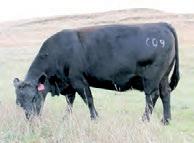
Producers should also examine the DFA eligibility criteria related to infrastructure damage to determine if there are any other losses for which they may be eligible to seek compensation.
You have 90 days from the announcement of a DFA program to submit an application form to Manitoba EMO. The application deadline for the spring 2022 DFA program is September 23, 2022.
5 CATTLE COUNTRY September 2022 www.mbbeef.ca
For complete program details and to download the DFA application form, go to: https://www.gov.mb.ca/emo/dfa/farm.html Frequently asked questions about DFA: https://www.gov.mb.ca/emo/dfa/faq.html To view a video on how to apply for DFA: https://www.youtube.com/watch?v=p0S_STwXlP0 For other inquiries contact Manitoba’s Emergency Measures organization as follows: Toll Free: 1-888-267-8298 Fax: (204) 945-4929 Email for Disaster Financial Assistance: dfa@gov.mb.ca Our breeding program is focused on creating fertile cows that efficiently raise calves, are reliably repeatable, have excellent udders and feet and require minimal replacements (longevity); traits required to be profitable in the cow business. www.ediecreekangus.com MH Mina 609, sired by Shoshone Ferrall 6340 We would like to announce our Fall"Grazing & Genetics Tour" to be held Friday, Nov. 4, 2:00pm. Beautiful wedge shaped cow that raised calves into her teens for us PROOF
Government of Canada Invests in Improving Animal Welfare
(August 8, 2022 Agriculture and Agri-Food Canada News Release)


The humane care and handling of farm animals, and the ability to track their movements, are an important part of the confidence consumers have in their food in Canada. The Minister of Agriculture and Agri-Food, the Honourable Marie-Claude Bibeau, announced an investment of up to nearly $3 million to three national organizations to enhance animal welfare and tracking in the country.
With funding under the AgriAssurance Program, the organizations will draw on new research to update industry standards for the care and handling of animals, and will evaluate technology to more efficiently trace farm animals in the production system in the event of
a disease outbreak. The work will support the highest standards in farm animal care. The recipients include:
Animal Health Canada, located in Elora, Ontario, will receive up to $2.9 million to update national codes of practice for the livestock sector, including the code for the safe and humane transportation of livestock. It has also developed and introduced a code of practice for the aquaculture sector covering farmed salmon, trout and arctic char.
The Canadian Cattle Identification Agency, located in Calgary, Alberta, will receive up to $52,140 to evaluate the use of ultra high frequency (UHF) scanners to read cattle identification tags as part of Canada’s commitment to the international community to quickly trace the movement of animals in the event of a disease
“QUOTES”
“The dedication of Canadian producers to the welfare of their farm animals is what makes our livestock system world famous. By improving our standards and practices for care and tracking, consumers can be assured that our food system is meeting the highest standards.”
- The Honourable Marie-Claude Bibeau, Minister of Agriculture and Agri-Food
“We’re pleased to continue working collaboratively with industry, government, veterinary, and animal welfare professionals to continue in developing the Codes of Practice through the National Farm Animal Care Council, a division of Animal Health Canada. Evidence-based co-development is a cornerstone of how the Codes are created and updated and we are excited to lead this project into its final year of funding.”
- Dr. Melanie Barham, Executive Director of Animal Health Canada
“One of our mandates at Canadian Cattle Identification Agency (CCIA) is to keep in step with new technologies that have the potential to move livestock traceability forward, such as ultra high frequency (UHF) technology. We began with a review of its current application in livestock and are now enhancing our database to accommodate producers who are already use the technology. CCIA is grateful to have received funding to support both initiatives.”
- Anne Brunet-Burgess, General Manager, Canadian Cattle Identification Agency


Applications for Consideration for The Environmental Stewardship Award Due to MBP by December 9



Manitoba Beef Producers (MBP) is accepting applications until Friday, December 9, 2022 for consideration for the local awarding of The Environmental Stewardship Award (TESA).

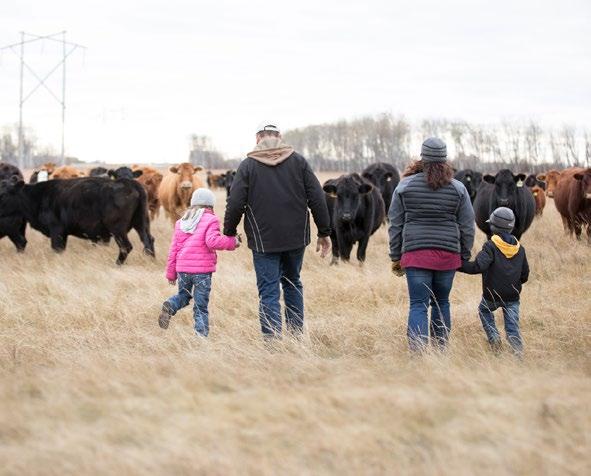
Since 1996, TESA has recognized producers who go above and beyond standard industry conservation practices and set positive examples for other cattle producers and the general public. As stewards of a vast portion of the Canadian landscape, Canada’s beef cattle producers play a significant role in protecting and enhancing the environment. They continuously strive to improve existing stewardship conservation practices to create a sustainable future – always farming for tomorrow.
At the local level, a producer receives provincial recognition for their outstanding environmental contributions. In the case of Manitoba, this occurs in conjunction with MBP’s annual general meeting in February. All provincial award recipients then move forward to compete for national recognition from the Canadian Cattlemen’s Association (CCA). The national TESA recipient is announced during the CCA’s semi-annual meeting at the Canadian Beef Industry Conference.
Each nominee exemplifies significant innovation and attention to a wide range of environmental stewardship aspects in their farm operation. Such innovations extend beneficially to areas far beyond their land, including water, wildlife and air.
How to Nominate
All beef cattle operations in Canada are eligible to apply for TESA. Beef producers interested in TESA can apply by filling out the application form found on the MBP website ‒ www.mbbeef.ca.
Producers can either nominate themselves, or be nominated by another individual or an organization. All methods are equally encouraged.
The completed application form, along with all supporting documentation (such as letters of support, photos and/or videos), is to be submitted to Manitoba Beef Producers by email to info@ mbbeef.ca no later than 4:30 p.m. on Friday, December 9, 2022. If you have questions, please contact the MBP office at 204-772-4542.
outbreak. Tag readings are recorded in a database that makes it possible for government and industry to rapidly contain the scope of a potential outbreak, protecting animal and human health.
The Canadian Poultry and Egg Processors Council, located in Ottawa, Ontario, will receive up to $35,750 to update its animal welfare program for hatcheries to meet the requirements of the National Farm Animal Care Council’s Code of Practice for the care and handling of hatching eggs, breeders, chickens and turkeys.


Consumer confidence in Canadian livestock and meat products is built on Canada’s strong food safety system. The Government of Canada is committed to providing producers with the tools and resources they need to implement agricultural best practices to enhance the welfare of animals and provide Canada and the world with safe, quality food.
Quick facts
The Canadian Code of Practice is a national guideline developed by the National Farm Animal Council for the care and handling of farm animals. It includes requirements and recommendations on water and nutrition, environment management, housing and handling and transportation. The code is based on input from farmers, processors, researchers, government, veterinarians, food service and retail representatives and animal welfare organizations.
The AgriAssurance Program is a $74-million federal initiative to build public trust by helping industry develop and adopt systems, standards and tools that enable it to make credible, meaningful and verifiable claims about the quality of Canadian agriculture and agri-food products and the manner in which they are produced.
Associated links Animal Health Canada https://www.animalhealthcanada.ca/ Canadian Cattle Identification Agency https://www.canadaid.ca/ Canadian Poultry and Egg Processors Council https://www.cpepc.ca/index.html

AgriAssurance Program https://agriculture.canada.ca/en/agricultural-programsand-services/agriassurance-program-nationalindustry-association-component/applicant-guide


Committment to the land, water, air, and wildlife is a prerequisite to raising healthy cattle. Sustainability is not a buzzword... it's a way of life.
Committment to the land, water, air, and wildlife is a prerequisite to raising healthy cattle. Sustainability is not a buzzword... it's a way of life.
6 CATTLE COUNTRY September 2022 www.mbbeef.ca
Loveridge
Photo credit: Jenna Loveridge
ATV Safety Starts With Understanding Your Capabilities
 BY ANGELA LOVELL
BY ANGELA LOVELL
On the farm, people use ATVs (all-terrain vehicles) for all kinds of different transportation and work purposes, and of course they can just be a lot of fun to ride recreationally on trails through the bush, which is why it’s important to respect the machines and operate them safely.
“It’s getting to be commonplace now for ATVs or UTVs (utility terrain vehicles) to replace horses and things in cattle operations,” says Robert Gobeil, Agricultural Health and Safety Specialist with the Canadian Agricultural Safety Association (CASA). “People are hopping on an ATV to go check the fences out in the field, check the crops or make their rounds. They are used more and more because they can go places that regular trucks or vehicles can’t and they’re nimbler, but at times they can be a little quicker than we realize too, so just like a motor vehicle on the highway, we want to operate responsibly, and for the conditions at hand.”
A major topic is ATVs and children, who may see the machines as fun, and be keen to emulate the tasks that the adults around them can do, not seeing an ATV as anywhere near as dangerous as other, larger farm machinery. But the statistics, sadly, show the opposite is often the case. Statistics Canada data shows that among ATV-related fatalities, seven per cent of riders were aged under 16.
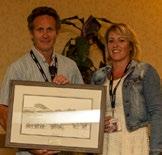
“Something to keep mindful of is that we want to make sure that a child is physically and cognitively capable of operating an ATV,” Gobeil says. “That would include the parent or supervisor making sure that they physically fit the ATV, and that they’re able to operate it in a competent and safe manner. A small child operating an oversized ATV, other than some bragging rights for the kid, is a really unsafe thing.”
“Some people don’t understand the power that some of these machines have and it’s too much for their riding capabilities, so sometimes that leads to collisions,” Sgt. Paul Manaigre of the RCMP. “The bigger they are, the more power they have, and the more weight they have. If you’re younger or smaller, the machine is going to ride you, it’s going to handle you, not the other way around. A lot of times it is, they hit something and then their handle bars turn and they get thrown because they’re too small. We see that a lot too in the winter time with snowmobiles; it’s just too much machine for the riders’ capabilities.”
Adults need to supervise
Adults need to be responsible for supervising and teaching kids how to ride properly in any setting, Manaigre adds.

“Legally in Manitoba, anyone 14 and under operating an ATV has to be under the constant supervision of a parent or an adult, someone that’s old enough [18 years or older]. They have to be within sight, they can’t just say I’ve shown them how and now they’re on their own,” he
says. “When it comes to the younger ages, it’s just not a one-day thing. It’s like driving a car, you’ve got to be experienced in different terrains, different factors, what could come up. So, it should be an ongoing process of just watching them grow with the machine.”
Adults also need to make kids respect the machines by making them aware of the hazards they can face.
“Teach them how to ride it, but at the same time tell them, if you’re not driving this properly, if you’re going to be an idiot, these things can kill you,” Manaigre says. “You have to basically teach them to respect that machine and you can’t do that in 20 minutes; here’s the brake, here’s the shift lever, go. It’s a slow, ongoing process and hopefully as a parent you’re going with them. It doesn’t always have to be for work. Parents with the kids can go for leisure rides, it can be an entertaining pastime, but that’s where you can build their confidence in being able to handle it, starting on a lower powered ATV for the kids so that they get confident.”
Don’t take a passenger along
Riders of ATVs should always wear a helmet and the appropriate riding gear for they are doing, which, on the farm, may include steel toed footwear if they are going to be around large livestock, and they shouldn’t have a passenger along for the ride.
“If there’s one seat, there’s only one person operating, and unless it is a specially built and designed ATV
for multiple passengers, there should be no extra riders,” Gobeil says. “We also strongly discourage operating on roadways because the design of ATVs, and the tires they use, are not made for hard roadways; they’re made for off-road. It’s surprisingly easy to lose control on a hard roadway.”
There are also legal ramifications of riding an ATV on a roadway, which requires a driver’s licence, and the driver is subject to the same rules as they would be driving a car, including stiff penalties for driving impaired.
It all comes down to operating safely and being prepared, Manaigre says.
“I think that the machines themselves need to get more respect from people, and many do that. They have the right safety equipment, they’re riding properly to their knowledge and to their abilities,” he says. “You could be a pretty experienced rider but if you’re in unfamiliar terrain you don’t know what’s coming up. You could be coming up to a ridge or it could be some hidden object, and if you’re not prepared, or you’re going to fast, you can’t respond, there could be a collision or something that causes you to roll, so you need to be prepared.”
CASA recently released a new online, ATV awareness course, which can be found on its website at: https:// www.casa-acsa.ca/en/training/online-training/
7 CATTLE COUNTRY September 2022 www.mbbeef.ca
credit: pxhere.com President: Melissa McRae 204-573-9903 Secretary: Laurelly Beswitherick 204-637-2046 THANK YOU FOR ALL OF THE SUPPORT upcoming sales in making the 2022 CSA AGM & YCSA SHOW a success! OCT 26-29 - MANITOBA AG EX NOV 5 - CHERRY CREEK FARMS ONLINE BULL & FEMALE SALE NOV 15 - COME AS U R / RAINBOW RIVER ONLINE PRODUCTION SALE NOV 18 - PEMBINA TRIANGLE SIMMENTAL ASSOC. 42ND ANNUAL SALE DEC 4 - QUEENS OF THE HEARTLAND PRODUCTION SALE DEC 5 - NORTHERN LIGHT SIMMENTALS BRED HEIFE SR & 2 YEAR-OLD BULL SALE DEC 6 - KEYSTONE KONNECTION 43RD ANNUAL SIMMENTAL SALE DEC 10 - TRANSCON’S SEASON WRAP-UP SIMMENTAL BULL & FEMALE SALE DEC 10 - SHADES OF THE PRAIRIE SIMMENTAL SALE DEC 11 - BONCHUK FARMS FEMALE PRODUCTION SALE DEC. 14 - KARSIN FARMS SIMMENTAL BULL & FEMALE SALE DELIGHT SIMMENTALS - GORDON DELICHTE - ST. ALPHONSE, MB recipient of the A.O. Henuset Memorial Manitoba Simmental Ambassador Congratulations to www.mbsimmental.com SAVE THE DATE Nutrition Workshop Featuring Dr. John McKinnon MBFI Brookdale Farm Learning Centre Wed., Nov. 2, 2022 10 a.m. to 3 p.m. For more information, call Manitoba Agriculture at 204-648-3965.
Photo
Upcoming Documentary Shines a Light on Mental Health in Agriculture
BY: ANGELA LOVELL
With the strain of the COVID-19 pandemic the past two years, there probably aren’t too many people who haven’t struggled with their mental wellness from time to time, but for some people, that struggle is a daily one. In recent years, mental health experts have brought to the fore the mental health crisis that is happening in agriculture, and which has been largely unrecognized for a very long time.
From the outside, farmers are tough, relentless and proudly independent; the kind of people others turn to when times get tough or they need a helping hand. Few realize that, in fact, farmers and their families are facing the same pressures – and more – than people in other walks of life, and need the same support for their mental health that others do.
But they are often reluctant to talk about their feelings to others, as filmmakers, Kyle McDonnell and Van Wickiam found out. When they began searching for farmers across the country to interview for their new documentary, Deep Rooted that explores mental health in agriculture, they were surprised by some of the responses they received.
“Either they were supportive and willing to talk or they just were not at all,” says McDonnell. “We got some messages saying, ‘mind your own business’ and that was not encouraging but also it steels your resolve because this is obviously something important if people are messaging you not to do it.”
Once they did get farmers to speak with them about
their experiences, though, they were overwhelmingly supportive of the project and wanted to help make a difference in their communities.
“Despite there being this overwhelming silence about the topic, if you crack that surface, people want to help each other, it’s just the difficulty of figuring out how to have those conversations because there’s stigma, there’s awkwardness,” Wickiam says. “I thought maybe we’d get people to talk and share some things and it would end there. But just as people want to help their neighbour with stuff on the farm, they also want to help start these conversations as well so that was a really interesting aspect.”
A mental health crisis in ag?
Until a few years ago, neither McDonnell, (who grew up on a farm), nor Wickiam, (who comes from the suburbs of Toronto), realized that there was a growing, and widely overlooked, mental health crisis in agriculture.
“I grew up on a small sheep farm outside of Goderich, Ontario. I had a single mom for most of my childhood who was the sole farmer. In addition to sheep farming, she did dog herding which was where she found most of her income,” McDonnell says. “So, I grew up with a different perspective than a lot of my peers who were from large poultry or dairy operations. Around 2017 to 2018, I was talking to my mom, who was retiring from the farm, about some farm magazine articles that had started to vaguely mention mental health in farming. This was still before a lot of the research came out. Until that point, I had no idea that there was anything going
on with mental health in farming.”
Wickiam was equally shocked when McDonnell started to share with him the information he was gathering about mental health in agriculture.
“I had no idea about the statistics and stuff he was sharing with me, and the prevalence of this issue,” Wickiam says.
Shining a light on mental health in ag
As the two friends delved into the issue, they also realized nobody was discussing it or bringing awareness to the subject, which is why they decided to make a documentary with the aim of shining a light on the topic for everyone, both inside and outside the agricultural industry.
“It seemed like an important project to be a part of and an opportunity to bring this to a wider audience,” Wickiam says. “We know that this film isn’t going to fix anything, it can’t speak for everybody, but we wanted to make a project that at least begins the conversation and bridges the gap in the work that is already being done. There are lots of studies and information, but not everyone reads that, but they might watch the film and see themselves in it and know that they are not alone, and there are resources out there.”
COVID delayed the project, but they began shooting last October, interviewing farmers in Saskatchewan, Ontario, Quebec and Manitoba, as well as researchers, mental health experts and workers.
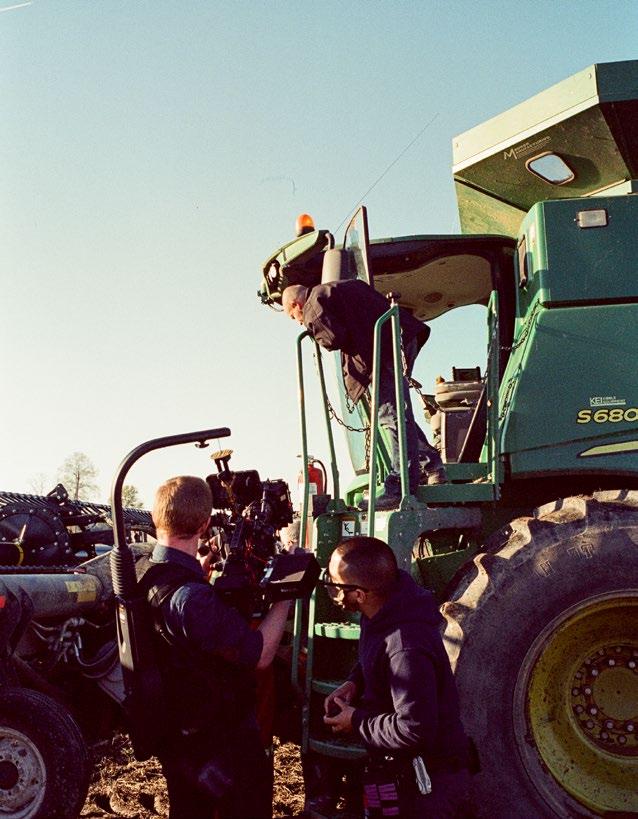
“It’s going to be in English and French because we wanted to make sure we’re representing a wide variety of agricultural producers across the country,” McDonnell says. ‘We’re talking about mental health and how it affects producers no matter what type of production they operate, or what scale, or what part of the country they are in; this is something national in scope.”
What made the task of selecting interviewees harder was the fact that the filmmakers had decided that they wanted to feature farmers and ranchers who had not previously talked publicly about mental health.
“We wanted to make sure these were people that hadn’t had a chance to tell their story,” McDonnell says. “This was a new opportunity to feature people whose voices weren’t heard yet.”
Starting conversations
The project is now in post-production and they are hoping to release the film in the fall of this year. The primary focus is to get the film in front of ag producer, so that they can watch and connect with it, and then to promote the issue among those outside of agriculture who have very little knowledge about it.
“Our view is that the film can help de-stigmatize the issue and get things flowing,” McDonnell says. “We’re not saying everyone who watches this film is immediately going to call a health line and go to therapy the next day. We’re saying this is the first step that [might encourage them to] say to their spouse, or parent, or sibling ‘maybe we should talk about mental health in our family’; this is a starting point for conversation. If one person calls or asks someone for help, we’ve succeeded.”
“Something we learned with working with these ag producers is that they want to be heard, they want to be understood,” Wickiam says “We’ve heard a lot about how social media has impacted ag producers, how there’s misinformation and things that stresses out people about the work that they’re doing. I don’t think people understand the stress and the mental health struggles that they experience. So, it’s to try and build empathy as well with people that watch this and maybe help them better understand some of the things those ag producers are going through.”
The documentary will feature at some film festivals before being released online through streaming platforms and eventually screened across the country.
“Eventually we want it to be available for free to as many people as we can get, and we are reaching out to some farming groups about doing screening sessions,” McDonnell says. “We see the film being released to the general public in the traditional sense but also being used as a learning resource within communities, or at events where mental health is being discussed.”
For updates on the project, visit @deeprootedfilm on Instagram.
8 CATTLE COUNTRY September 2022 www.mbbeef.ca
Photo credit: Kyle McDonnell

9 CATTLE COUNTRY September 2022 www.mbbeef.ca And that’s why we’ve moved away from a third-party provider and brought tag sales in-house. This shift allows you to buy closer to the source, access any approved tag on the market and shop from anywhere, anytime. l CCIA Webstore is always open l Our shelves are never empty l “NEW ” Schedule a warehouse pickup l “NEW ” Special promotion codes for purchase l Same shipping promise as before CCIA CANADIAN CATTLE IDENTIFICATION AGENCY c anadaid.c a We’re taking the bull by the horns Is it a good idea to take on tag distribution? We think so! Visit our webstore and join over 7,000 producers who are already enjoying the convenience of ordering tags and accessories online. Need help? tags.canadaid.ca | 1-877-909-2333
MBP Statement re: Added Levy to Cattle and Other Commodities to Fund Keystone Agricultural Producers
(August 26, 2022)
Keystone Agricultural Producers (KAP) has advised Manitoba Beef Producers it is seeking to expand the collection of its annual membership fee as outlined in the Agricultural Producers’ Organization Funding Act


to more commodities, including cattle.
MBP was not consulted about this and does not support this. MBP is continuing to investigate the potential implications of KAP’s decision for our members and the sector on whose behalf we so proudly work.
By way of background, on August 25 KAP sent correspondence to Manitoba commodity groups stating as follows: “KAP is the certified organization under the Agricultural Producers’ Organization Funding Act. This enables us to receive the funds generated through the check off system. The levy will be applied by designated purchasers (e.g., grain buyers, abattoirs, supermarkets) who buy agricultural product (e.g., cattle, grains, wool, honey, eggs) directly from Manitoba producers. The annual check off is capped at $262.50, plus GST.”
This Act and accompanying regulation state that designated purchasers of agricultural products are to withhold a percentage value of the product, that being 1% of the gross selling price payable by a designated purchaser.


Producers with questions about how this collection process will work should contact the Keystone Agricultural Producers office at 204-697-1140 or email kap@kap.ca
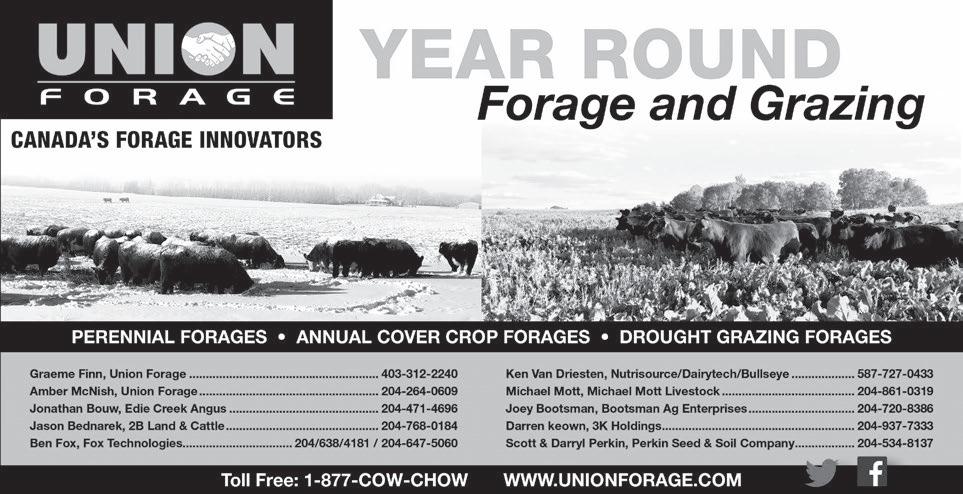
Manitoba’s cattle producers already pay check-off dollars to fund invaluable beef sector-related work at both the provincial and national levels. This includes advocacy on a wide array of issues and opportunities, as well as research and promotional activities aimed at stimulating, increasing and improving the well-being of the cattle and beef industry. Some recent MBP activities include: securing aid for producers affected by weather-related disasters; the Livestock Predation Prevention Pilot Project; and, advocacy work re: business risk management programs, Crown lands issues, vet shortages, front-of package labeling on ground beef, livestock transportation, and much more. We value
support and input.
10 CATTLE COUNTRY September 2022 www.mbbeef.ca
1-800-567-4400 grandvalley.com Advanced Animal Nutrition for Improved Human Health. THIS SUMMER SKIP THE LICK! ALSO AVAILABLE WITH GARLIC Replace expensive lick tubs with high quality, palatable Nature’s Blend Cattle premix. Feed this perfect pasture mineral complete with organic source of selenium, essential minerals, and vitamins in a free choice mineral feeder and provide the superior nutrition your herd needs. Contact your Manitoba Beef Specialist today to learn more! 1-866-626-3933
your
Survey re: Managing Tuberculosis and Brucellosis in Wood Buffalo National Park
 KYLE PLOTSKY, DAVID HALL (UNIVERSITY OF CALGARY)
KYLE PLOTSKY, DAVID HALL (UNIVERSITY OF CALGARY)
Although bovine tuberculosis (bTB) has been eliminated from Riding Mountain National Park, the disease is found in other areas of the country at the interface between wildlife and livestock. One of these areas is Wood Buffalo National Park (WBNP). It is the largest national park in Canada at 44,807 km2 and straddles the border between Alberta and the Northwest Territories. Nearly half of the remaining Canadian wood bison population live in herds in the WBNP area known to be infected with bTB and bovine brucellosis with prevalence estimated at around 40% in these herds. These diseases entered WBNP when 6600 plains bison were transported into the park around 1925 from another park near Wainwright, Alberta without being disease tested.
Limited wood bison disease management has been conducted in the last century. The corralling and testing of wood bison and the creation of a bison meat industry were attempted in the mid-20th century. A 1990 proposal to depopulate the park of all wood bison and reintroduce disease free animals from Elk Island National Park near Edmonton, AB faced major criticism and was not implemented. Criticism was especially strong from Indigenous groups who have a historical and cultural connection with the animals. The Alberta and Northwest Territories governments have been operating control zones along the western and northern borders of the park to minimize the spread of the diseases.
In a first for Canada, the World Heritage Status of WBNP was recently classified as under threat with the bison issue being an important concern. A number of actions have been taken to help address the bison issue, including changes to the provincial status of wood bison, work in genetics and vaccines, and a focus on working with Indigenous groups around the park.
We are a non-governmental component of this process; our research investigates the socioeconomics of managing bTB and brucellosis in the WBNP wood bison. We aim to understand how rightsholders and stakeholders prefer the bison disease issue be managed. This includes understanding how important wood bison are to people and how knowledge and experience can influence management attitudes. Our findings will be summarized in a freely available report that can be used to inform future policy.
The impact of bTB and brucellosis transmitting to animals outside of WBNP goes beyond the borders of a single park or province. This is especially true for livestock where transmission from bison to cattle could lead to billions in losses and the closing of international markets to Canadian cattle. This potentially devastating impact on the cattle industry highlights how important it is for our final report to include the views of people from across Canada. We are reaching out to various stakeholders for their assistance in completing a questionnaire on the bison disease issue regardless of their location or background. Responses will be anonymously incorporated into our final report along with responses from other rightsholders and stakeholders.
You can participate by scanning the QR code to the right or by going to the following link for the cattle producer version of our questionnaire: https://survey.ucalgary.ca/jfe/ form/SV_3Oek2YY9CXyutsq.
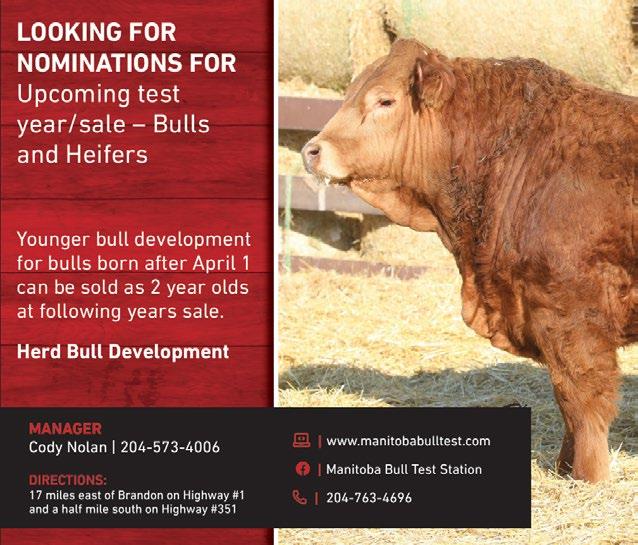
If you wish to learn more about our work or the bison disease issue, please visit our project website at ucvm-bison-project.com. Please contact Dr. Kyle Plotsky (kyle.plotsky@ucalgary.ca) or Dr. David Hall (dchall@ ucalgary.ca) with any comments or questions.
• GRASSFED: “True North Foods is partnered with A&W Canada to supply Canadian grassfed beef for A&W’s grassfed burger program.



• SERVICES: Whether you are a specialty producer looking to get your product to a speci c market or distributor, or if you are producing commodity livestock for sale, we can partner with you. From our multi-species capabilities to our ability to handle smaller volumes, we o er excellent capabilities for producers in the Canadian Prairies to maximize their pro tability.


• FACILITY: We have a state-of-the-art facility to allow us to reach markets across Canada, the USA, and beyond. We understand producer’s needs, their care for their animals, and their honest, straightforward nature. Call us to hear how we can work together to get your product to market.

11 CATTLE COUNTRY September 2022 www.mbbeef.ca
www.truenorthfoods.ca | duane@truenorthfoods.ca | 204-791-5010
Market Report: An Optimistic Outlook for the Fall

It is the middle of August, and I have been on the road at cattle industry meetings from Ottawa to Penticton. Cattle producers are very optimistic this year about the fall cattle prices, and there are many of the fundamentals that support that optimism.
The driving factor for the strong feeder cattle prices this fall is the anticipation of lower grain prices resulting in lower costs of gain. Canada’s grain outlook for the fall harvest is projecting a slight increase in barley volume, but still the second smallest barely crop in the past eight years. Export demand and domestic demand from the pork industry will keep the barley prices from falling too low. Corn production in Canada looks promising with estimates of a 35% increase in the corn harvest. Drought conditions in the major corn growing regions of the USA has cattle feeders on the south side of border more nervous than their partners in Canada. New crop corn in the USA is still over $6.00 per bushel.
Another factor supporting the increased feeder cattle is the overall supply. On the fed cattle front, it looks like we are starting to get current with the inventory of market ready cattle. This glut of fed cattle and the above normal amount of cull cows this summer have given the packers the leverage on pricing and delivery schedules. Moving forward, many are predicting that in Western Canada we could see that leverage switch to the cattle feeders late in the 4th quarter of this year and carry through for much of 2023. Some industry experts are thinking that Canadian fed cattle prices could rally to over $1.90 per pound in December. Some traders think that the US price could reach $ 1.80 in the second quarter of 2023.
With the heavy cull cow numbers behind us, there is a pretty good chance that there will not be as many cull cows on the market this fall. That could make for some interesting pricing later in the year. One has to remember that the bigger cull applied to the beef herd; the dairy business will still have a steady supply of culls
RICK WRIGHT The Bottom Line
to market. Currently the US packers are seeing lots of drought cows coming to market south of the border. This has allowed them to lower their price, making them non-competitive on the current cash market in Canada. This trend could carry over into the later fall.
On the feeder supply side, drought conditions last year and this spring saw many ranchers cull deeper into their herds. In the past two years there were very few replacement heifers put out to pasture for breeding. This, combined with the terrible weather conditions during the calving season of 2022, resulted in unheard of calf losses this spring. In the USA, the experts are predicting that it will be the end of 2024 before the cowherds end the contraction mode and turn to rebuilding in serious fashion. The general feeling is that there will be a shortage of cattle in 2023 as we see more producers breed heifers to supply the rebuilding phase of the cattle cycle. The consensus is that if you want some feeder cattle you had better get them bought and you had better do it now!
In Manitoba, our calf run could be somewhat delayed if the pastures hold out and the frost comes later than normal. If the prices on the early calf sales in the west are any indication, the addition of any extra pounds gained during the pasture season will be well rewarded. This could lead producers to try and put on as many extra pasture pounds as possible.
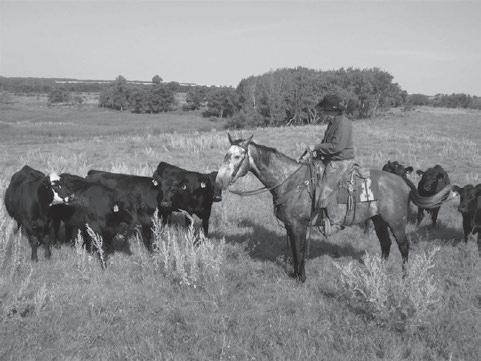
Reports from Ontario are that there will be adequate feed this year; the crops may not be as good as last year, but still good. That is great news for Manitoba producers as Ontario has always been a strong supporter of Manitoba feeder cattle.


There have been calls from the USA inquiring about both yearling and wet-nosed calf prices and supplies. As always, the American market will be the floor price. Their market has been very strong so far this summer with the deferred delivery sales bringing near record prices. With the combination of Canadian feeding capacity increasing and the gap between the cost of feeding in the US and Canada drawing closer, the Americans may have a tough time prying the cattle away from the Canadian cattle feeders this year.
If the cattle market stays on its current course, we could easily see the fall calf market exceed the prices paid in 2015. There are bold predictions of 500-pound steers at $2.80 plus and even whispers of some Manitoba steer calves at over $3.00 per pound.
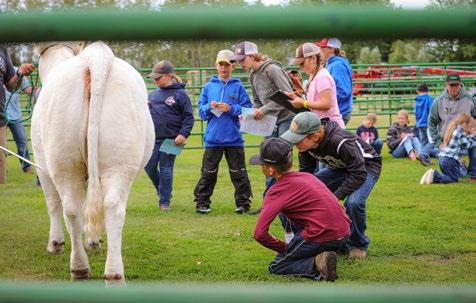

If you remember, I have been preaching that if the cattle producers can hang on, there will be a reward one day in the future. I strongly believe that the ‘reward’ is right around the corner. I realize that we need more than just one year of great prices to save the industry, but this fall looks like it has all of the fundamentals pointing in the right direction.

I just wanted to thank everyone who took part in and supported the Manitoba Livestock Marketing Association’s annual Cattlemen’s Classic golf tournament. This year’s event was a great success. We had 188 golfers and fed 225 steaks for supper. The members of the committee did a great job! A big thanks to all of the 115 sponsors, along with the staff and volunteers from the Killarney Lakeside Golf Course who made this event so successful. Read Cattle Country’s next issue for a complete list of the sponsors and people who made this event such a success.
Until next time, Rick.
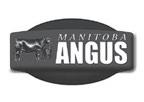
12 CATTLE COUNTRY September 2022 www.mbbeef.ca
to conserve
habitat onprivate lands F i f i llT M MB ANGUS FALL GOLD SHOW AG EX For information and events check out the MAA website! www.cdnangus.ca/manitoba-angus-association/ Keystone Centre - Brandon, MB December 6th, 2022 Please contact Bohrson Marketing for consignment or catalogue UPCOMING EVENTS! Keystone Centre - Brandon, MB October 27th, 2022 KEYSTONE KLASSIC SALE JACK HART MEMORIAL FOUNDATION FEMALE AWARD $2500 voucher to purchase an Angus female at the Keystone Klassic Sale. Visit the website or send an email for information to apply! Deadline to apply September 1st, 2022 P: 1-888-622-6487 E: mandi.mbangus@gmail.com Manitoba Angus Association Over 50 junior cattle producers from Manitoba and Saskatchewan took part in the 15th Annual Manitoba Youth Beef Round-Up in Neepawa July 30-August 1. For more information about the event, please visit https://www.facebook.com/ManitobaYouthBeefRoundUp/ (Photo credit: Prairie Pistol Design)
MHHCpays landowners
wildlife
Q&A
Cabak Livestock Specialist-Beef Manitoba Agriculture
shawn.cabak@gov.mb.ca
Question: What are some options for extending the grazing season?
Answer: Extended grazing options can vary, from using crop residues to corn, swath, bale or stockpiled perennial forage grazing. Feeding management needs to be flexible to allow for some supplementation or complete feeding in extreme conditions.
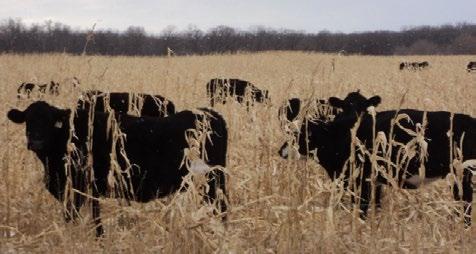
Extended grazing allows livestock to return most of the nutrients they consume directly to the landscape where they are fed. Feed costs can be less, but yardage and feeding costs are lower, as are manure removal costs. Manure and feed residues contain valuable nutrients that become available to annual or perennial crops. This improves crop productivity and quality and can extend the grazing season.
Stockpiled Perennial Forage
Perennial forage that is grazed or cut early in the season, and the regrowth saved for late season or early spring grazing, is referred to as stockpiled forage. Typically, the first or second cut is harvested as hay, and re-growth is grazed after or close to killing frost. Grass and legume mixtures are better suited than pure grass or legume stands to decrease the risk of bloat, and grasses retain their leaves better.
Alfalfa and grass can be grazed moderately in the fall, close to or after a killing frost, with minimal impact on the winter survival of the alfalfa. Second cut alfalfa harvested in mid October averages 15 to 17 per cent protein and 64 to 66 per cent total digestible nutrients (TDN). A dry cow in mid gestation requires TDN in the mid 50s and seven to eight per cent protein, while a lactating cow in mid gestation requires TDN in the low 60s and 10 to 11 per cent protein.
2021. The average yield was 5.6 tonnes of dry matter per acre, the protein was 7.5 per cent and the TDN was 75.7 per cent.
For either corn or bale grazing, moving cattle every three to four days and using electric fencing minimizes the amount of waste and labour required.
Feeding forages before moving the cattle to fresh corn will help prevent grain overload as the cattle will not be as hungry. In addition, tame forages (alfalfa and grass) will boost the protein in the ration and encourage the cattle to clean up the stover better. Another option is to graze corn stover in the fall. The lower feed value of the corn stover requires more supplementation, making it better suited to dry cows.
Bale Grazing can involve all the bales being placed in the fall or hauled every seven to 10 days during the winter. If the bales are all placed in the fall, electric cross-fencingcross fencing helps to control feeding and to minimize waste. Another option is to place the bales in existing paddocks and move the cattle between paddocks according to how long the feed lasts. Bales should be spaced 30 to 40 feet apart to allow adequate access for the feeding animals and to keep nutrient importing at a moderate level. A bale spacing of 33 feet in all directions equates to 40 bales per acre.
Portable wind breaks provide movable, affordable on-pasture shelter but may not be adequate in extreme winter conditions with high wind chill. Since snow is a good insulator, a powerful electric fencer is necessary for optimal livestock control. Using multiple wires including a ground on the cross fence may be required.
An adequate supply of soft snow can be used as a water source but an alternative water source must be provided if conditions are icy or snow is lacking. Livestock energy requirements are slightly higher if snow is the sole water source. Providing fresh water to the younger and older cows with higher nutritional requirements is recommended.
Annuals for Fall Grazing or Swath Grazing

Annual crops can be swathed in the late summer or early fall, and grazed immediately or left until after freeze-up. Most annual cereals should be cut at the early to mid dough stage for highest quality and yield (oats late milk). You can control access to the swaths by strip grazing or using a portable electric fence, to reduce the risk of grain overload and ensure higher utilization. Swath grazing during a wet fall should be done after freeze-up to improve utilization and to decrease waste. Stubble grazing can make use of uncropped areas, straw aftermath and volunteer re-growth that is high quality for protein and energy. The fall of 2021 saw an amazing amount of crop regrowth that was both grazed and cut for feed. Nitrates were present and needed to be checked prior to grazing or feeding an annual crop. An annual crop producing two to three tonnes of dry matter per acre will produce 113 to 168 cow grazing days per acre, for a 1300-pound cow, assuming 20 per cent waste and residue.
Grazing Standing Corn produced 318 cow grazing days per acre (1300 -pound cow) at the Manitoba Beef and Forage Initiatives (MBFI) Brookdale site from 2016 to
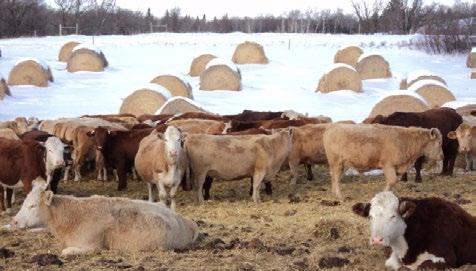
Feed Contains Valuable Nutrients
When you bale graze, unroll bales, shred bales or feed in rings, nutrients are being added to the land from the feed. A 1,250-pound bale of alfalfa and grass hay at 14 per cent protein contains approximately 24 pounds of nitrogen, 2.5 pounds of phosphorus and 21 pounds of potassium. Livestock only capture a small percentage of these nutrients (10 to 20 per cent), so most of the nutrients are returned to the land. If 30 bales are fed per acre, and the animal uses 20 per cent of the nutrients, 570 pounds of nitrogen, 51 pounds of phosphorus (117 pounds of P2O5) and 434 pounds of potassium would be returned to the land. The value of the nutrients returned to the land would be close to $1000 per acre, depending on the value of fertilizer.
Grazing stockpiled forage in the fall is one of the most economical methods of extended grazing, considering that the cost is for fencing and the standing forage (two cents per pound). Over the last four years at MBFI, grazing the second cut was the most economical method of extended grazing at $1.03 per cow per day, followed by corn at $1.86, swath at $2.58 and bale at $3.10. This includes yardage, labour and supplemented feed.
This compares to Manitoba Agriculture’s average traditional feeding cost of $4.07 per cow.
Summary
If you have never tried extended grazing, I would encourage you to try starting with stockpiled, stubble or corn stover grazing. By extending the grazing season, instead of confining animals and using stored feed, you can significantly lower your winter-feeding costs. Some extended grazing options can cut your feed costs, but not always. Extended grazing returns nutrients back to the land and will fertilize your fields, resulting in higher forage or crop production, higher livestock gains and possibly a longer grazing season. Add in reduced manure disposal costs, a cut in winter-feeding and yardage costs and this is one practice worth considering.
Share your Voice
For the next issue of Cattle Country, a Manitoba Agriculture forage or livestock specialist will answer a selected question. Email your questions to Elizabeth.Nernberg@gov.mb.ca.
StockTalk for Cattle Country is brought to you by Manitoba Agriculture. We encourage you to email your questions to our department’s forage and livestock team. We are here to help make your cattle operation successful. Contact us today.
Shawn Cabak Portage 204-239-3403
Shawn.Cabak@gov.mb.ca

Pam Iwanchysko Dauphin 204-648-3965 Pamela.Iwanchysko@gov.mb.ca
Juanita Kopp Beausejour 204-825-4302
Juanita.Kopp@gov.mb.ca
Elizabeth Nernberg Roblin 204-247-0087 Elizabeth.Nernberg@gov.mb.ca
13 CATTLE COUNTRY September 2022 www.mbbeef.ca
StockTalk
Feature Brought to you by Manitoba Agriculture
Shawn
MBFI 2016-21 Corn Grazing Results Year CHU Plant Pop. CP TDN% DM% DM Yield Cow Grzg tonne/acre days/acre 2016 Average 2150 38 K 7.0 73.7 44.7 6 338 2018 Average 2292 32.3 K 6.7 75.2 59 3.7 208 2019 Average 2318 28.4 K 7.0 77.9 56.1 6.7 379 2020 Average 2340 28.8 K 8.4 66.8 59.6 5.2 294 2021 Average 2295 31.9 K 8.2 84.9 67.2 6.6 370 Overall Average 2279 31.9 K 7.5 75.7 57.3 5.64 318
MBFI Has Launched The Beef & Forage Roundup Podcast
BY: DR. MARY-JANE ORR, MBFI GENERAL MANAGER
Manitoba Beef & Forage Initiatives (MBFI) has launched an audio program ‒ the “Beef & Forage Roundup” podcast with host Chantel McRae. It has been created to share information with farmers and agricultural enthusiasts, showcasing the beef and forage industry and the important work that is happening at MBFI. This podcast digs deep into on-farm research and field-testing practices to improve production and sustainability of practice.
Episodes are released on the first and third Wednesday of each month, and feature conversations with MBFI staff, project leads from numerous research and demonstration studies, speakers from extension events, and leaders in the industry. The podcast also shares information about upcoming workshops and field tours, links to educational materials, as well as producer profiles from around the province sharing their experiences, challenges, and successes.
Chantel started working with MBFI in January of 2022 as an Extension Specialist with the goal of increasing awareness and sharing information regarding the important research and demonstration studies happening here at MBFI. In addition to creating and hosting the Beef & Forage Roundup, Chantel is active in the day-to-day operations of the family farm. She is also an Instructor for Assiniboine Community College in the Early Learning and Child Care Distance Education Program. In her spare time, Chantel enjoys riding and competing in rodeos, as well as spending time with her family and friends.
Chantel, her husband Brett, and son Corbin, farm southwest of Brandon and run a herd of purebred Angus cattle who calve in the spring. They sell two-year-old bulls and replacement heifers and grain farm as well. Soil health principles for both their pasture and grain land is a focus in their operation, and they do their best to be good stewards of the land they own and rent.
As our podcast host, Chantel’s enthusiasm for agriculture and connecting with people is guided by her interest in each guest’s story to share. Episodes released so far include:
• Introduction to Manitoba Beef & Forage Initiatives and upcoming extension events with General Manager Mary-Jane Orr. Overview of MBFI operations and 2022 extension events.
• Building productivity with grazing management with Steve Kenyon (Greener Pastures Ranching Ltd). A conversation about all things grazing with a feature on the Farm Resilience Mentorship Program in Advanced Grazing Systems in collaboration with Farmers for Climate Solutions, Canadian Forage and Grassland Association, Manitoba Agriculture, and MBFI.
• Balancing range health & cattle production with Leah Rodvang (MBFI Research Technician). Highlights of MBFI grazing practices and Leah’s insights on the
most rewarding aspects of using grazing management to improve the land and soil health.
• Advocating for Agriculture: Opportunities and challenges in the beef sector with Carson Callum, Manitoba Beef Producers (MBP) General Manager. Hear about advocacy efforts MBP has been undertaking over the past couple of years to gain support for farmers facing feed and water shortages and those impacted by spring 2022 storms and flooding.
Talking ticks and bovine anaplasmosis with Dr. Kateryn Rochon, University of Manitoba, Associate Professor of Veterinary and Wildlife Entomology. Discussion of all things ticks, with highlights from a current project assessing the relationship between tick abundance on pastures and cattle.
Utilizing planned grazing to increase forage production with Pam Iwanchysko of Manitoba Agriculture. Hear about the many benefits of starting planned rotational grazing from a six year study at MBFI.
Ducks Unlimited Canada (DUC) Grazing Club and the General Mills pilot program with Michael Thiele, DUC Grazing Club Coordinator and UnderstandingAG consultant. Discussion of how DUC Grazing Club activities have evolved over time and Michael’s recent activities supporting adoption of regenerative farming practices.
The Livestock Predation Prevention Project with Ray Bittner, Manitoba Beef Producers LPPP Project Lead. Updates on this three-year, industry-led pilot project with the aim of reducing wildlife predation of cattle and sheep in Manitoba.
The bright future of agriculture with MBFI’s 2022 summer students. Hear about their summer experiences at MBFI and what this fantastic group is looking forward to in their careers.
Upcoming episode topics in 2022 include:
• Update on strategic beef cattle herd development case study covering production metrics in the MBFI herd and application of technology to evaluate performance
• Feed testing and winter ration development
• Producer spotlight
• Extended grazing practices and cost of production
• Economics of overwintering cow herd and feed calculators
• Project findings from demonstration study on bale placement and type of binding’s impact on bale grazing residue.
• Cow body condition scoring and tools to monitor cow weights
Listening to free audio programmes, like Beef & Forage Roundup, is straightforward with access to the internet. On your computer web browser or phone podcast app (e.g. Google Podcasts, Apple Podcasts, Spotify) you can search “Beef and Forage Roundup” and follow the links to listen, download, and subscribe to keep up to date with new releases.
For more information or to start a conversation please email MBFI at information@mbfi.ca or call at 204-761-3300.
What’s Keeping You Up At Night?
BY: SCOTT KEMP
A few months ago, I wrote a piece for Cattle Country called “Managing your Farm Through Uncertainty” (May 2022). In it, I discussed that with so much uncertainty on the horizon, improving your farm management and focusing on aligning three key elements – vision, financial performance, and dayto-day management – would give your farm a better opportunity to be successful.
What was not mentioned, and is often not discussed, is the person or people doing that work; those managing the farm and the people around them. We all know that even when times are good, being a beef producer is a stressful undertaking. And this last year has been a roller coaster – inflation, interest rates, COVID-19, feed prices, fuel prices, supply chain, political unrest, weather, and tightening margins.
Who isn’t feeling burnt out?
It is sometimes easy to associate those stresses and factors as “the farm”, but that stress doesn’t end when you get off the tractor or come in from the barn. We carry them with us through the day (and night) which impacts both our physical and mental health and those around us. Did you know that stress is the underlying factor of nearly every mental and physical illness?
Avoiding the impact that stress is having on ourselves often leads to conflict with those around us. And these issues grow when we are under pressure which easily causes division with family, friends, and co-workers.
So, what can you do to help manage your stress and reduce conflict?
Before you answer that question, perhaps it’s helpful to start by asking yourself, “What is it that is keeping me up at night?” What is it that you are worrying about
when you close your eyes or wake up in the middle of the night? Alternatively, “If I could fix one thing that would take a bit of a weight off my shoulders, what would it be?
Your mental and emotional health are important. As the leader on your farm and as a member of your family and community, here are four things you can do right now to help relieve some of the pressure you may be dealing with:
Implement a stress management routine that works for you – I say stress management and not stress relief because it’s unlikely you’ll be able to eliminate stress from your life, but you can put yourself in a better position to deal with it. A routine can take many forms - morning walks, exercise, going for a drive, reading, enjoying nice weather, spending time with friends and family (this last one is debateable – depending on your family!). Choose something that works for you though.
Reflect on internal vs. external stressors – after you have asked yourself what is keeping you up at night, expand on this. Is the source of that stress something that you have some control or influence over, or external forces that you can not influence? Examples of internal stressors are things like personal or family relationships, lending or retailer relationships, record keeping, herd management, time, etc. External factors are generally environmental, political, or economic – interest rates, economy, weather, prices etc.
If the factors are external, what can you do to mitigate those? There are some tools to help with rising interest rates. The federal government’s Advanced Payment Program offers interest-free loans up to $250,000 for livestock and commodity producers. In some cases, this can work as an operating loan to help manage cash flow (Google “Manitoba Livestock Cash Advance Inc. for details and eligibility).
With tightening margins, understanding your cost of production is an important first step. Manitoba Agriculture has a number of free Cost of Production Guides and Calculators online that may help provide some insights for beef producers. Every operation is different, but it may flag a couple of areas for you to dig a little deeper and compare your costs.
Leveraging your group – most people have a group of people and networks they trust. Whether that is sources of information, business advice, or someone’s input you respect, identify those networks and consider how they can help (the coffee shop and Twitter don’t count!)
Understand how you can leverage those groups and seek support to help you with those things you need assistance with – whether that is financial, personal, or on the operation side. The personal and professional
It’s not just you – stress and tension create conflict with those around you. Your loved ones and the people you work with daily feel your stress and sometimes feel the brunt of it – and not just when you are sorting cattle. What are you bottling up? Is there something that may seem trivial from the outside, that is really grinding your gears? Set aside a time to communicate it with those around you before it boils over.
Read any ag publication or look at the face of any beef producer, nearly everyone is feeling the stress right now. Carrying stress for any length of time has an impact on your mental health and your physical health. Groups like Do More Agriculture Foundation (domore. ag) have a list of resources and information to help with your mental health or those around you. You can also call Manitoba’s Ag Help line 24/7 at 1-866-367-3276.
Scott Kemp is a Farm and Agribusiness Management Consultant with Backswath Management. He can be reached at scott.kemp@backswath.com
14 CATTLE COUNTRY September 2022 www.mbbeef.ca
University of Manitoba Researchers Investigate Bacterial Biofilms in the Food Industry
BY CLAUDIA NARVAEZ-BRAVO, ASSOCIATE PROFESSOR, FOOD AND HUMAN NUTRITIONAL SCIENCES AND THE NATIONAL CENTRE FOR LIVESTOCK AND THE ENVIRONMENT (NCLE), UNIVERSITY OF MANITOBA

Foodborne bacteria are a concern for the food industry. Average national loss in the United States connected to health-related costs caused by foodborne pathogens was estimated to be approximately $51.0 billion annually. To reduce the risk of outbreaks, the beef industry has invested resources to control and reduce bacteria such as harmful E. coli, a known cause for foodborne illness.
What are bacterial biofilms and how do they help bacteria survive?
People generally think of bacteria as free-moving cells, however bacteria can be fixed to a surface where they can be protected by structures known as biofilms. Biofilms are communities of microorganisms attached to solid surfaces or to each other and surrounded by a mucus-like substance that help the bacteria to survive. These natural protectants are very common in nature and can form on surfaces such as plastics, glass, stainless steel, and rubber. When established, biofilms act as shields to protect bacteria that reside within them, protecting them from sanitizers and antibiotics. Biofilms make bacteria more difficult to remove and they enable the exchange of genetic material among bacteria creating an environment favorable to cross-contamination, especially in meat processing plants.
As a result, proper cleaning and sanitation procedures are critical to the elimination of food borne pathogens that can pose risks to food quality and ultimately food safety. If the cleaning and sanitation processes are incomplete and ineffective then microorganisms can survive, setting the stage for biofilm formation.
The industry has adopted aggressive sampling programs, which have revealed the occurrence of “high event periods” in slaughter plants. These high event periods occur when a large number of trim samples are found to contain harmful E coli. However, the causes behind these events in processing plants remain mostly unknown. Studies have shown that some strains of bacteria such as E. coli O157 can establish persistent

populations in food-processing environments. The formation of biofilms on beef processing equipment can act as a continuous source of contamination.

Researching E. coli and its function in biofilms
Biofilms on contact surfaces have generally been investigated as single-species biofilms in wet conditions. The biofilms that form within beef processing facilities are typically composed of multiple bacterial species and these biofilms can exist in wet or dry conditions.
Multiple strains of bacteria have been isolated from conveyor belt biofilms within a beef-processing facility after cleaning and sanitation procedures.
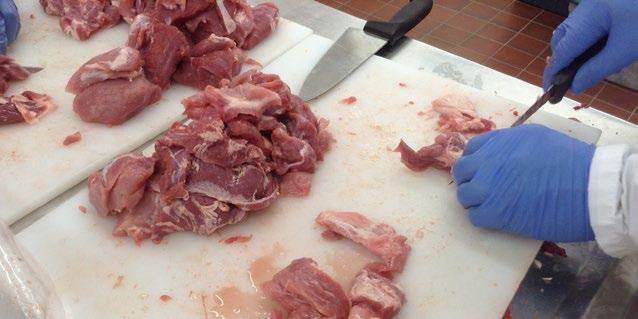
The University of Manitoba research team led by researcher Claudia Narvaez-Bravo is studying potential interactions with multi-species biofilms formed on plastic materials used on conveyor belts and on stainless steel surfaces. The purpose of the research is to determine if spoilage bacteria encourage or discourage attachment
of harmful E coli to food contact surfaces. They are also assessing if this E coli can transfer from single and multi-species biofilms formed on surfaces in the processing facility to beef products that are processed in the plant, considering different environmental conditions such as storage times, temperatures and humidity levels. What have we learned so far?
The researchers selected bacteria that have a high biofilm forming ability at high (25˚C) and low temperature (10˚C). During the study, biofilms were formed on stainless steel and plastic exposed to different environmental conditions.
Results from the study show that specific biofilm mixtures consisting of various spoilage bacteria, formed at 25˚C can discourage harmful E. coli transfer to beef. None of the biofilms formed at 10°C contributed to contamination of beef by E. coli
The study also revealed that when the beef samples were exposed to 6-day dry biofilms, harmful E. coli was transferred to the beef. However, no beef contamination with E. coli was detected when exposed to 60-day biofilms. Contamination from wet biofilms was higher than from dry biofilms.
It is important to note that during meat processing beef juices and water are released on surfaces in the processing plant and may come in contact with old dry biofilms present on these surfaces. The water and nutrients awaken the bacteria residing within the biofilm. To check this theory, researchers exposed the 60-day old dry biofilms to water and nutrients and found that the E. coli survived. Interestingly, the highest E. coli survival rate was observed from these multi-species biofilms. This suggests that old and dry biofilm can still harbour viable bacteria that will be able to recover under favourable conditions and can cause cross contamination in meat plants.
The results from this research also showed that multi-species biofilms may help harmful E. coli bacteria survive and persist under dry conditions while other biofilm mixtures were able to decrease E. coli numbers within biofilms.
Overall, this research demonstrated that the risk of harmful E. coli contamination of beef can be influenced by bacterial species composition, the type of surface that the biofilm is formed on, humidity, and the age of biofilms. These findings demonstrate the importance of understanding the impact of bacterial communities within food processing environments to prevent contamination in processing plants. This research also emphasizes the importance of proper cleaning and sanitation to prevent or reduce bacterial persistence and biofilm formation and provides important information to more effectively protect consumers by mitigating the risks for food borne illness.
15 CATTLE COUNTRY September 2022 www.mbbeef.ca
Squeeze Chutes # 1550 Hi-Hog Manual Squeeze with #1536 Head Holder Full 32” Inside Width Unmatched Access Head Holder Sits Completely out of Way When Not Being Used Built Strong From the Ground Up Available at Federated Co-op Ag Centres
Photo credit: Claudia Narvaez-Bravo
A Thai Twist to Date Night
BY: ANNA BORYS, MBP FOOD EXPERT
Staying in for date night can be challenging to find something new and exciting to cook when stuck in a rut. Pasta can be too heavy, seafood is hard to get when living nowhere near an ocean, and you’ve done steak and potatoes for the last 7 date nights. On these days which have been the hottest and most humid we’ve seen in a while (considering I’m writing this mid-July) are the days in which the idea of turning on an oven resulting in a few extra degrees on the thermostat are not so comfortable nor romantic. Trying a new cut like flank and doing a simple marinade and throwing it on
the grill offers a fun, spicy twist to a dinner date for two. Using fresh ingredients like fruit, citrus and fresh herbs can help lighten any typically heavy dish.
It may look like a laundry list of things to grab for the marinade, but there are maybe only a few ingredients that most home cooks might not already have on hand. These ingredients are all just thrown into a food processor and blitzed so there’s very little prep involved. The steak will take at least 8 hours to marinate, so either throw it together the night before or the morning of and the hard part is already done. Using a rice cooker for the coconut rice is perfect if you want to “set it and forget it”, however stovetop is also a great option if you don’t have one. I chop all the ingredients for the mango salsa
while the rice is cooking. Side note, the mango salsa is a great topping for so many other dishes like fish tacos, or grilled pork chops! If you can’t find nice ripe mangoes at your local grocery store, try substituting with pineapple! For those who have the “cilantro tastes like soap” gene, try a blend of mint and parsley, or thinly sliced basil instead.
This recipe also makes for a great interactive party option if you want to omit the rice dish and sub in butter lettuce leaves to create a fun Thai steak lettuce wrap platter! Add a few more toppings such as crushed peanuts, extra marinade to drizzle, rice noodles, toasted coconut, a variety of slivered veggies and lime wedges!
Enjoy!
Thai Marinated Flank Steak with Mango Salsa and Coconut Lemongrass Rice

Dinner, Yields 2 Servings
Thai Flank Steak:
• 375g flank steak
• ¼ cup lime juice
• 1 tsp garlic, minced
• 1 tsp ginger, minced
• 1 tbsp red thai curry paste
• 1 tsp fish sauce
• ½ bunch cilantro, chopped
• ¼ cup canola oil
• 1 tsp – kosher salt
• 1 tbsp white sugar
• ¼ cup green onion, chopped
• 1-2 thai chili peppers, chopped
Mango Salsa:
• 1 large mango, ripe, small diced
• ¼ cup red pepper, small diced
• 2 tbsp red onion, small diced
• ¼ tsp kosher salt
• 2 tbsp lime juice
• ¼ cup cilantro, finely chopped
Coconut-Lemongrass Rice:
• 1 cup long grain rice, rinsed
• 1 cup coconut milk, canned
• ½ cup chicken stock
• 2 x 6” stocks lemongrass
• ½ tsp kosher salt
• garnish toasted coconut
• garnish slivered green onion
FLANK STEAK
1. Place flank steak in a large sealable Ziploc bag or marinating container.
2. Add remaining ingredients to a food processor and blend until well combined and no large chunks remain.
3. Pour enough marinade into marinating bag or container to just cover the steak. Save remaining marinade to use as a sauce later on. Allow to marinate for a minimum of 8 hours or overnight in fridge.
4. Pre-heat a cast iron pan (or pre-heat grill) over high heat until smoking. Add marinated flank steak and allow to sear for 4-5 minutes a side until internal temperature reaches about 130°F. Remove steak from pan or grill and allow to rest for 10-15 minutes before slicing thinly against the grain.
MANGO SALSA
1. Combine all ingredients in a small bowl, cover and chill until required.
COCONUT-LEMONGRASS RICE
1. Wash the stocks of lemongrass, and slice off the bottom. Remove the outer leaves. Using the heel of a knife, lightly smash the lemongrass stocks to break up the fibres keeping the stock intact for easy removal. This will release the aroma and will allow for a deeper steep while cooking.
2. Add all ingredients to a small pot and bring to a boil. Once boiling, turn heat to low and cover.
3. Cook for 15-16 minutes until rice is fully cooked, and liquids are all absorbed. Fluff rice, remove stocks of lemongrass and set aside until required.
4. To serve, garnish with toasted coconut and slivered green onion.
NOTES
• Be sure to shake the canned coconut milk well to release the coconut cream which separates and rises to the surface of the can to allow to mix in with the separated coconut water. If it cannot be released by shaking, open can and use a whisk or immersion hand blender to remix the cream and water together.
• For a lower calorie option, Lite Coconut Milk can also be used.
16 CATTLE COUNTRY September 2022 www.mbbeef.ca
Did you know? MBP distributes a free, weekly ENewsletter to members and partners on timely beef topics. Subscribe Today! mbbeef.ca/news/
and full-page advertising opportunities also available.
for more information. 1-800-772-0458
Half-page
Contact Jennifer
(Photo credit: Anna Borys)
Cattle Producers Relieved By Federal Beef Label Exemption
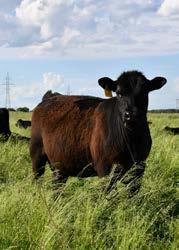
 BY: RON FRIESEN
BY: RON FRIESEN
As a cattle producer, Tyler Fulton has watched an unrelenting stream of catastrophes batter the beef industry over the last 20-plus years.

There was BSE, which abruptly closed international markets to Canadian beef exports and nearly wrecked the livelihoods of thousands of producers.
There was U.S. country-of-origin meat labelling (COOL), a restriction costing the industry millions of dollars in lost export sales and depressed markets.
There was also a litany of domestic problems: E. coli, low market prices, flooding, drought, feed shortages and the COVID-19 pandemic.
But now the good news is that the beef industry has narrowly avoided another problem which could potentially have been the worst of all – a federal regulation
which, it was feared, might have persuaded consumers not to eat beef.
Health Canada has exempted beef and pork from a measure which would have required packages of ground meat sold in grocery stores to carry warning labels that the products contained high levels of saturated fat. The exemption, announced June 30, came after an intensive campaign called Don’t Label My Beef by the Canadian Cattle Association and other concerned groups.
Producers worried the package labels could have confused consumers into thinking ground meat was bad for them and influenced them not to buy it.
For Fulton, Manitoba Beef Producers president, the exemption is a welcome change for the cattle sector.


“We’ve had so many issues over the last 20, 25 years that, when one like this comes along, it feels like it’s another hurdle,” he told Cattle Country
“It was completely backwards, confusing and distracting to the consumer that the government would have suggested something like this.”
The controversy centered around a proposed regulation by Health Canada called front-of-package (FOP) nutrition labelling. The measure required processed and packaged foods high in sugar, salt and/or saturated fat to carry a warning label if the contents exceed 15 per cent of the maximum recommended daily allowance of those items.
It’s part of the Healthy Eating Strategy, a Health Canada initiative launched in 2016 to help Canadians move away from highly processed foods and make more wholesome food choices.
www.mbbeef.ca PUBLISHED BY MANITOBA BEEF PRODUCERS AUGUST 2022 POSTMASTER PLEASE R ET URN UNDELIVERABLE C OPIE S TO MB P, UNI T 220, 530 CENTU RY S TREE T, W I NNIPE G, M B R3H 0Y4 CANADIAN PUBLIC AT IONS MAIL P RODU CT SAL ES AG REEMEN T NUMBE R 40005187 P OS TA GE P AID IN W INNIPE G. President’s Column Page 2 Wild Pigs Wreaking Havoc Page 6 Automating Replacement Heifer Selection Page 9
At MBP’s July 13 producer BBQ some directors who served on MBP’s board of directors were recognized by current or past directors for their recent service, including (l-r) Gord Adams, District 1 (recognized by Melissa Atchison); Robert Metner, District 11 (recognized by Dianne Riding); Riding, District 9 (recognized by Tom Teichroeb); and Nancy Howatt recognized Peter Penner, District 3. Also recognized but unable to attend were Kevin Duddridge (District 4) and Jim Buchanan (District 14). (Photo credit: David Hultin/MBP)
Page 2
Victory on Package Labelling Important
As I sit down to write this month’s column, I am thrilled to be able share some breaking news (as of June 30th). As many of you are aware, the federal government – through Health Canada – had put forward new frontof-package (FOP) labelling rules for consultation and consideration in late March. Among the proposed rules was one whereby ground beef would require a warning label stating that the product was ‘high in saturated fat’. I am proud to report that after considerable work and advocacy by the Canadian Cattle Association (CCA) and the provincial beef organizations’ staff and directors, we secured an exemption for ground beef from this labeling requirement! This is an important victory for our sector, as well as for consumers who value our high quality and nutritious beef products.
For me, this was the largest and most intense advocacy campaign with which I have been involved on behalf of the beef industry. The issue resonated strongly with our members, as we all understood it represented a direct threat to the viability of our farms and ranches. My involvement with the campaign included taking part, along with CCA and MBP directors and staff, in more than 10 meetings with elected officials and their staff to build a united group that could advocate for a change to the proposed regulation. Numerous letters were also written to federal and provincial officials alike to state the need for an exemption for ground beef from
TYLER FULTON President’s Column
FOP labelling. Our industry’s campaign was very successful in raising the profile of the issue with decision makers and the public, resulting in major TV (CBC, Global, CTV), radio, and online interviews involving our staff and directors, as well as coverage on several regional outlets. There were also numerous articles and editorials on the issue in local and national newspapers across Canada, in both farm-focused and urban-based publications alike. Over the course of these interactions, the message resonated and garnered strong support. Increasingly, I found it easy to have these conversations as it became obvious of the overwhelming support that we had for our practical position.
There are two overwhelming takeaways that I have from this experience. First, I have always been proud of our CCA and MBP staff’s dedication, hard work, and professionalism, but in being part of the campaign and seeing the strategy and tactics used to defend our position, I got a new appreciation for the thoughtful, targeted and efficient plan that was designed and exe-
FOP would have targeted ground beef
“These labels are widely recognized by health organizations as an effective tool to help counteract rising rates of diet-related chronic disease in Canada,” a Health Canada statement said.
However, livestock groups argued the measure, if implemented, would have unfairly targeted fresh ground meat.

“I do not see a health policy objective in this regulation,” said Cam Dahl, Manitoba Pork general manager, before the exemption was announced. “The fact is that ground meat is being singled out and I fail to see the health policy objective in doing that.”

In its campaign, CCA said ground beef is a prime source of nutrition and protein. It is also affordable to shoppers at a time of rising food prices. CCA said almost 50 per cent of beef consumed in Canada is ground. More than 90 per cent of Canadians eat it every week.
“It’s the most affordable nutrients and protein available in the grocery store at a time when inflation and affordability are key to so many Canadians,” said Jennifer Babcock, CCA’s government relations manager.
“I think our request for an exemption for ground beef was very much based on common sense.”
The labels will still apply to most packaged foods high in sugar and sodium.
Health Canada’s measure had been in the works since 2018 when it published a regulatory proposal in Canada Gazette Part 1 and called for public comment. Babcock said CCA and other groups expressed their concerns and provided a research-based rationale on why ground meat should be exempt from labelling. But when Health Canada announced an updated regulation in early 2022, the labels still applied to ground meat.
Health Canada insisted the intent was not to convey a health warning to shoppers. But Babcock said it was hard to call it anything else.
“We are describing it as a warning label because Health Canada’s intent for putting them on is to encourage consumers to move away from those products and toward others.”
In its statement, Health Canada said label exemptions could occur if the food “provides a protective effect
cuted. Without our funded national and provincial beef organizations undertaking this critical advocacy work, we would have been left with a new regulation that would have resulted in lower demand for our delicious, nutritious and sustainable product.
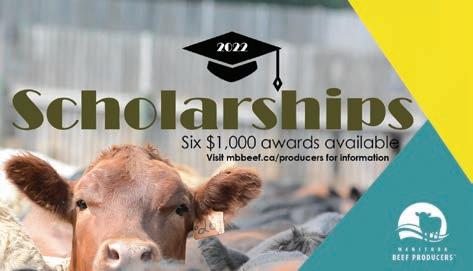
The second lesson that I have from this experience is this: when we tell OUR story about beef and how it’s raised, we benefit from overwhelming support from the public. Even though I question why we had to fight this proposed regulation to begin with, I think that it raised the profile of our industry and left consumers with a greater reason to trust us in raising their food.
We happily celebrated this win with producers at our first-ever summer BBQ at the Manitoba Beef & Forage Initiatives Brookdale site. It was a great day and thanks to all who came. Looking ahead, I will be attending the federal/provincial/territorial Ministers of Agriculture in Saskatoon to advocate for the beef sector’s needs related to the Next Policy Framework which will replace the Canadian Agricultural Partnership when it comes to an end next March. And I will be attending the Canadian Beef Industry Conference (CBIC) in Penticton in August, which will be a good opportunity to meet face-to-face with industry leaders and producers and discuss issues and opportunities in our sector.
Here’s to a successful summer of haying!
on health,” such as milk, fruits, vegetables, vegetable oils and other foods “without added saturated fats, sugars or sodium.”
But Fulton said the exemptions were inconsistent because they included some highly processed sugary foods such as packaged cookies.
He also noted the saturated fat content of ground beef exceeds the limits only when the product is raw, not after it is cooked.
“Nobody consumes the product when it’s raw and so it really overlooks the whole preparation of the product and the impact it has on the nutritional attributes.”
Both Fulton and Dahl expressed concern about what the labelling requirement might have done to Canada’s international meat trade. Fulton said the measure would also have applied to imported ground meat as well as domestic product. He said countries such as the United States could have complained their own meat was being unfairly treated in Canada and applied duties on Canadian product entering the U.S. in retaliation. No other country requires single-ingredient products to carry health warning labels, says CCA.
The regulations received final publication in Canada Gazette Part 2. They take effect on July 20, 2022. The food industry has until January 1, 2026 to make this change.
2 CATTLE COUNTRY August 2022 www.mbbeef.ca
DISTRIC T 13 MARY PAZIUK Dauphin, Ethelbert, Gilbert Plains, Grandview, Roblin and Mossey River COMMUNICATIONS AND MARKETING LEAD David Hultin O F FIC E A SS I S TA N T Jennifer Patryluk D ES IGNE D B Y Print Studio One C AT T L E CO U N TR Y E D I TO R David Hultin LIVESTOCK PREDATION PRE VENTION PROJEC T COORDINATOR Ray Bittner FINANC E Deb Walger DISTRIC T 14 VACANT Minitonas-Bowsman, Mountain, and Swan Valley West MA NI TOB A BE E F PROD U C E R S Ph: 1-800-772-0458 Un i t 220, 530 Ce n t u r y S t ree t Wi nn ipe g, MB R 3H 0Y 4 PH - (204) 772-4542 FX - (204) 774-3264 info@mbbeef ca www.mbbeef ca Carson Callum GEN E RA L M AN AG E R DISTRIC T 1 ALFRED EPP Boissevain-Morton, Brenda-Waskada, Grassland, Deloraine-Winchester, and Two Borders DISTRIC T 2 NANCY HOWATT Argyle, Cartwright-Roblin, KillarneyTurtle Mountain, Lorne, Louise, Pembina, and Prairie Lakes DISTRIC T 3 ANDRE STEPPLER Cartier, Du erin, Grey, MacDonald, Portage la Prairie, Rhineland, Roland, Stanley, Thompson, Montcalm, Morris, and Ritchot DISTRIC T 4 VACANT De Salaberry, Emerson-Franklin, Hanover, La Broquerie, Piney and Stuartburn, Montcalm, Morris, Ritchot, Spring eld, Ste. Anne, Taché, R.M. of Piney and Reynolds DISTRIC T 5 STEVEN MANNS Cornwallis, Elton, Norfolk-Treherne, North Norfolk, Oakland-Wawanesa, Glenboro-South Cypress, and Victoria DISTRIC T 6 MELISSA ATCHISON Pipestone, Riverdale, Sifton, Souris-Glenwood, Wallace-Woodworth, and Whitehead DISTRIC T 7 T YLER FULTON
Ellice-Archie,
MAT
Clanwilliam-Erickson,
DISTRIC T 9 TREVOR SUND Alexander, Brokenhead, East St. Paul, Lac Du Bonnet, Rockwood, Rosser, St. Andrews, St. Clements, St. Francois Xavier, West St. Paul, Whitemouth, Woodlands, LGD of Pinawa, Reynolds, Spring eld, Ste. Anne, and Taché DISTRIC T 10 MIKE DUGUID SECRETARY Armstrong, Bifrost-Riverton, Fisher, and Gimli DISTRIC T 11 ARVID NOTT VEIT Coldwell, Grahamdale, St. Laurent, and West Interlake DISTRIC T 12 MARK GOOD TREASURER Alonsa, Lakeshore, McCreary, and Ste. Rose
PRESIDENT
Hamiota, Prairie-View, Riding Mountain West, Rossburn, Russell-Binscarth, and Yellowhead DISTRIC T 8
THEW ATKINSON 2ND
Glenella-Lansdowne, Harrison-Park, Minto-Odanah, Oakview, North Cypress-Langford, Rosedale, and West Lake-Gladstone
Maureen Cousins
AN A LY S T Page 1
POLI C Y
Keystone livestock specializing in livestock insurance for over 45 years LIVESTOCK INSURANCE Lois McRae & Joyce Gordon RR 1 Box 57 Brandon, Manitoba R7A 5Y1 h: 204-728-3058 c: 204-573-5192 f: 204-727-7744 marmacfarms1@gmail.com SERVICES Preference will be given to those students pursuing a field of study related to agriculture or to those acquiring a skilled trade or pursuing a career that would be beneficial to the rural economy. The completed application, supporting documents, references, required essay or video, etc. must be submitted to MBP by 4:30 p.m. Friday, November 4, 2022.
FOP Labelling, Crown Lands and More Keeping MBP Busy
Hello beef industry colleagues. I hope you are all reading this while your cattle are out on grass, and feed has been put in the ground and growing. I know the spring storms and abundance of moisture has been making things challenging, but I feel this a better situation than last year’s drought. If you are having severe challenges MBP should be aware of, please give me a call at the office.
With drought not being the top of mind focus this year, a great many other topics have taken up MBP staff and directors’ time. The most recent major win for our provincial cattle groups, and the Canadian Cattle Association (CCA) was the Front-of-Package labelling exemption under the new food warning labels being introduced by Health Canada. Originally Health Canada was going to have a “high in saturated fat label on ground beef, but after a phenomenal effort by our collective advocacy groups and support from the public, we were able to obtain an exemption from this warning. This is due to the whole food nature of ground beef and the nutrition it provides. Such amazing work was done to get this past the finish line by my colleagues in the sector, led by Jennifer Babcock in the Ottawa CCA office. Thanks as well to all of you that signed the Don’t Label My Beef petition!
Another major focus of MBP over the past few months is related to the Next Policy Framework (NPF). This new framework, starting in spring of 2023, will be the basis for support programming for producers moving forward. This involves items like business risk management (BRM) programs and support for beneficial management practices. I took part in a joint industry consultation with the provincial government to put forward MBP’s perspectives. I strongly encouraged supportive measures be taken in the NPF to preserve important grassland habitats in Manitoba by providing recognition for the valuable ecosystem goods and services beef producers provide in managing the landscape. It is also important to ensure there are equitable BRM tools in place to support beef producers’ risk management activities. This one is very important considering the increasing weather-related challenges producers have been dealing with.
Further on the advocacy side, MBP’s Crown Lands Committee met with Agriculture Minister Derek Johnson and other key government officials on continued concerns related to the Agricultural Crown Land modernization process. We have again raised the key issues arising, such as the lack of unit transfers, the effects of the steep and swift rental rate increase and several
CARSON CALLUM General Manager’s Column


others. Minister Johnson and his team seem committed to making changes to the program to address some of our industry’s concerns, and toward making it more a workable rental system. We look forward to continuing this effort in the coming weeks.
One of the best parts of working in the agriculture sector is the talented individuals you get to work with. One of these individuals I had the pleasure of working with over the last few years is Fawn Jackson. Fawn is Manitoba born and raised, and very passionate about the beef industry. She spent the last 11 years at the CCA working on behalf of beef producers. During her time there, she had many successes, such has playing a
critical role in setting up the Canadian Roundtable for Sustainable Beef. Fawn is moving on to a new opportunity in her career path, and I wanted to take a moment to thank this Manitoba talent for all she done for the beef sector. Thank you Fawn, and we looking forward to working with you again down the road.
I want to end this edition by greatly thanking all that attended our summer BBQ at the Manitoba Beef & Forage Initiatives Brookdale site. This was a great way to connect with many members who we hadn’t seen in a long time due to impacts of the pandemic. It was especially nice to finally be able to recognize retired directors, something we usually do in person at our AGM banquets. Whether it was a nice comment or a bit of a roast, it was nice to have the formal recognition of these well-deserving directors who put so much of their time into the betterment of the industry.
Have a great rest of the summer folks!
Carson
Three Predation Management Workshops Held in June
Concerned ranchers came together at three Livestock Predation Prevention Project (LPPP) field days in late June to hear about what can be done to mitigate the risk of predator attacks on their livestock.
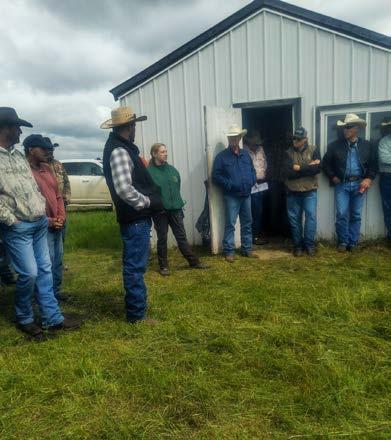
Ethelbert, Pansy, and Mulvihill Community pastures were the host sites for Manitoba Beef Producers’ predation management events. The meetings included presentations by Manitoba Trappers Association (MTA) trapper representatives, and staff from Manitoba Natural Resources and Northern Development, Manitoba Agricultural Services Corporation and Manitoba Beef Producers.
Trapper presentations focused on what ranchers can do to make the trapping process most successful. While no one strategy will fix all your predator problems, persistent trapping through more than one season is the most successful.
Conservation Officers explained landowner/ operator’s rights to protect property in Manitoba, and the responsibilities involved with problem predator
removal. The Problem Predator Removal Program, which is supported by Manitoba Natural Resources and Northern Development and delivered by the MTA was also explained.
Conservation biologists discussed predator behavior, populations, and behaviors which can be helpful in the management of risks associated with problem predators.

MASC gave an overview of the Wildlife Damage Compensation Program for Livestock Predation, and the evidence that needs to be collected for successful claims.
Manitoba Beef Producers outlined the status of the Livestock Predation Prevention Project which is in the process of evaluating 11 different practices to reduce predator traffic on farms and ranches.
Overall, the field days were a success, with the events’ timing fitting in between frequent rains. Thank you to the Association of Manitoba Community Pastures for hosting these events, the speakers for their informative presentations and the producers who participated.
For more information, LPPP factsheets can be viewed or downloaded at www.mbbeef.ca. Please visit the website and navigate to “Producers” and “Livestock Predation Pilot Project” section. Or contact project lead Ray Bittner at rbittner@mbbeef.ca.
3 CATTLE COUNTRY August 2022 www.mbbeef.ca
In June, Manitoba Beef Producers participated in the Meet a Rancher promotion organized by grocery store chain Save-OnFoods. Thirteen store locations across western Canada took part in the consumer outreach, including two in Manitoba, with Past-President Dianne Riding (pictured), along with District 9 Director Trevor Sund, representing MBP. (Photo credit: David Hultin/MBP)
(Photo credit: Ray Bittner/MBP)
MBP expresses its thanks to Manitoba’s Fawn Jackson for her many years of service to the cattle industry during her time with the CCA. (Photo credit: Fawn Jackson)
Deadline to Apply for Disaster Financial Assistance for Spring Flooding Livestock Losses is August 8
The following information was compiled from resources on the Manitoba Emergency Measures Organization’s website related to the 2022 Spring Flood DFA program.
Beef producers are reminded that August 8, 2022 is the deadline to apply for the Manitoba government’s 2022 Spring Flood Disaster Financial Assistance (DFA) program.
The program, announced May 9 is providing assistance to eligible individuals and municipalities experiencing damages to infrastructure, private residences, farms or small businesses due to spring flooding. DFA helps provide financial assistance for uninsurable losses to basic and essential property. DFA will also assist with verified livestock losses, such as those sustained in the spring storms.
The following items are typically eligible for DFA:
• Costs to respond to a flood (e.g. dikes, pumping)
• Clean up and removal of debris
• Livestock fencing, harvested and stored crops, limited silting, field erosion


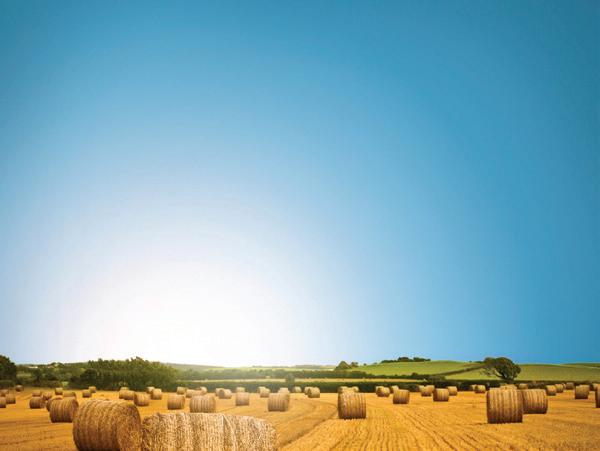
• Repair and restoration of principal residences, primary outbuildings, driveways, essential farm/small business buildings, damaged pens and corrals
• Damaged items in the house, essential furniture, essential clothing and primary appliances
• Mandatory evacuation costs to a pre-set limit.
Examples of ineligible costs include: losses that could have been covered by insurance; costs recoverable through other government programs; losses recoverable through legal proceedings; non-essential items; normal operating/maintenance costs; capital purchases; upgrades or improvements; loss of income or opportunity; damages that are a normal risk of trade or occupation; and, long-term maintenance issues unrelated to the event.
Manitobans are encouraged to check with their insurance providers to review their policy coverage before applying for DFA. Insurable costs, such as sewer backup, are not covered by DFA. Some Manitobans may have also purchased overland flood insurance.
Apply for DFA using the online application form at: https://forms.gov.mb.ca/dfa-application/ Paper DFA applications are also available to be mailed to you directly, or at most municipal offices.
In order to process your claim, you need to provide: the most recent property tax bill and a completed Insurance Declaration Form. Other documents will be required once it is determined whether you are eligible for DFA.
It is important to take pictures of damages before they are repaired and before you dispose of anything. Track all your disaster-related repairs and activities, including labour/equipment hours, etc. Keep all receipts, invoices and other documents for disaster related expenses as they are required in order to support your DFA claim. To be eligible for payment you must provide invoices to demonstrate repairs have been completed and that costs have been incurred. Original proof of payment must also be provided. All mandatory documents must be submitted to Manitoba EMO before payment will be issued.
It is important to take pictures of damages before they are repaired and before you dispose of anything. Track all your disaster-related repairs and activities, including labour/equipment hours, etc. Keep all receipts, invoices and other documents for disaster related expenses as they are required in order to support your DFA claim.
The maximum amount of DFA available for private residences, farms, small businesses and NPOs is $300,000. A standard 20 per cent deductible is also applied to DFA payments. For all eligible costs, there are maximum amounts that DFA will pay out.
DFA programs are open for a period of one year from the time the DFA program is established. All repairs must be done and all required documents must be submitted to Manitoba EMO by the program closure date (May 9, 2023). In exceptional circumstances, an extension may be granted if more time is required to return your property to its pre-disaster condition.
For more information about eligibility or to apply, visit www.manitoba.ca/emo/dfa or email dfa@gov.mb.ca. DFA and Livestock Losses
As noted, the DFA will provide assistance related to verified livestock losses. The following information has been provided by the provincial government and
Manitoba Beef Producers to assist producers as they consider making a claim under the DFA program.
DFA will provide assistance to farms that have experienced livestock losses as a result of spring flooding in 2022. To qualify for DFA, your farm must have yearly gross revenues of between $10,000 and $2 million and employ no more than 20 full time workers. It must be an owner-operated business and the owner-operator must be the day-to-day manager. The farm cannot be a hobby farm.
In the DFA application form, producers should note the number and types of cattle lost, e.g. calves, fed steers, fed heifers, bulls, etc.
Under the DFA program criteria, a veterinary certificate is required to verify that the losses were a direct result of the event. This is non-negotiable.
Note: The cost to obtain the veterinary certificate can be submitted as a DFA eligible cost.
For losses that happened some time ago, the producer should contact their veterinarian, explain the situation, and obtain the needed certificate.
Manitoba Beef Producers has developed a template that vets can use to support the producer’s DFA application. In the veterinary certificate the cause of loss needs to be attributed to the ‘2022 spring flood’ and the date of loss should be stated.
Assistance for livestock losses will be calculated as follows:
Is based on the Wildlife Damage Compensation program for predation losses (MASC). See: https://www. masc.mb.ca/masc.nsf/fact_sheet_679_wildlife_damage_livestock.html

Will provide a price per pound for livestock losses. The price is based on the Canfax value on the date of loss (www.canfax.ca).

Different types of cattle are priced differently on Canfax, so therefore the farm will need to provide details on the type of livestock that were lost as well as the animal’s weight.

For calf losses, the compensation will provide assistance based on a 500 lb. cow.


Producers should also examine the DFA eligibility criteria related to infrastructure damage to determine if there are any other losses for which they may be eligible to seek compensation.
You have 90 days from the announcement of a DFA program to submit an application form to Manitoba EMO. The application deadline for the spring 2022 DFA program is August 8, 2022.
Email for Disaster Financial Assistance: dfa@gov.mb.ca
4 CATTLE COUNTRY August 2022 www.mbbeef.ca
For complete program details and to download the DFA application form, go to: https://www.gov.mb.ca/emo/dfa/farm.html
asked questions about DFA:
view a video on how to apply for DFA: https://www.youtube.com/watch?v=p0S_STwXlP0 For other inquiries contact
Emergency Measures organization as follows: Toll Free:
Fax:
Frequently
https://www.gov.mb.ca/emo/dfa/faq.html To
Manitoba’s
1-888-267-8298
(204) 945-4929
Manitoba Livestock Cash Advance Inc. www.manitobalivestock.com Subject to Credit Approval 1-866-869-4008 Loan Advance Commodities include: Livestock, Grains & Oilseeds Low Interest Bearing Loan Rates #212-530 Century St. Winnipeg MB R3H 0Y4 “Our friendly staff await your call!” Announcement - The Interest Free portion of loan advances for the 2022 & 2023 Program year has been increased from $100,000 to $250,000 *Producer total Advance Limits have been increased to $1,000,000
Government of Canada Launches Consultations to Inform the National Agricultural Labour Strategy
(June 27, 2022 Agriculture and Agri-Food Canada News Release) Canada’s agriculture and agri-food sector is an important engine of economic growth that feeds millions of people in Canada and around the world. It is also part of the country’s critical infrastructure, essential to the health and well-being of all Canadians. The Minister of Agriculture and Agri-Food, the Honourable Marie-Claude Bibeau, launched consultations to solicit input and inform a National Agricultural Labour Strategy.
The agriculture and agri-food sector faces obstacles that distinguish it from other economic sectors currently facing labour shortages. As part of the engagement process, an online consultation will open on June 27,
2022 and run until September 28, 2022. This process will seek input on recommendations to address chronic workforce challenges to build short- and long-term solutions that enable the agriculture sector to attract a skilled workforce. Provinces and territories, as well as employers, unions, underrepresented groups, workers, and other key groups will be engaged to develop the strategy and ensure it reflects the unique needs of the sector.
A number of areas of focus have been identified, including the use of automation and technology, targeted skills development and training, employment incentives and best practices, improved working conditions and benefits; and programs to recruit and retain workers.
“As everyone is looking to Canada to increase its contribution to global food security, our agriculture and agri-food sector is facing a severe labour shortage that prevents it from reaching its full potential. I encourage all stakeholders to take part in these consultations, through which our government wishes to foster the significant engagement of the industry and ensure that together we put in place effective and sustainable solutions.”
- The Honourable Marie-Claude Bibeau, Minister of Agriculture and Agri-Food
“Canada’s agricultural sector feeds millions of people each year, and is a huge driver of our national economy. To ensure it can continue to grow and innovate, we’re working with industry partners to build the strong, skilled workforce they need to thrive.”
- The Honourable Carla Qualtrough, Minister of Employment, Workforce Development and Disability Inclusion
The sector is already demonstrating leadership in tackling these challenges, through initiatives such as the Canadian Agriculture Human Resource Council-led development of a National Workforce Strategic Plan for Agriculture and Food and Beverage Manufacturing. The Government of Canada’s National Agricultural Labour Strategy is intended to complement these efforts and utilize input directly from industry to achieve solutions.
The Government of Canada is committed to taking concrete action in addressing the ongoing labour challenges facing the country’s agriculture and agri-food sector and to best position the sector for future growth. Who is the focus of this consultation?
The Government of Canada is consulting with the Agriculture and Agri-food sector including employers, farmers, producers, processors, workers, unions, Indigenous communities, women in agriculture, youth, small and emerging sectors as well as other key stakeholders and partners.
Key questions for discussion
We are seeking feedback on any, or all, of the questions listed below:
• What has your experience been with recruiting and retaining workers in the agricultural and agri-food sector?
• What are the future skills and technology needs of the sector?
• What potential solutions should be explored to help address labour shortages in the sector?
Tips on How to Stay Sun Safe On The Farm This Summer
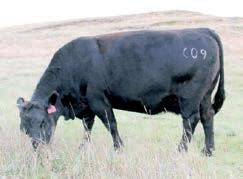 BY: ANGELA LOVELL
BY: ANGELA LOVELL

Farmers may not get to play in the sun very often but they certainly are working in it every day, and in the hectic summer months it’s all too easy to forget the basics of sun safety.
The Canadian Cancer Society (CCS) says that in Canada, sunlight is strong enough to cause skin cancer, premature aging of the skin and harm to the eyes. Skin cancer is the most common type of cancer, and it’s also one of the most preventable.
The CCS website has some good resources and information to help everyone stay sun safe, but below are some basics that are a good reminder to anyone working or playing in the outdoors on hot, sunny days.
Reduce exposure to UV rays
Exposure to UV rays increases the risk for melanoma and other skin cancers, as well as eye and lip cancer.

To limit your exposure:
• Check the UV index on your local weather forecast each day.
• Reduce time in the sun between 11 am and 3 pm when UV rays are the most intense.
• Find shade especially if your shadow is shorter than you are, which means the UV rays are at their strongest.
• Use a broad-spectrum, water-resistant sunscreen with an SPF of 30 or more on exposed skin and reapply every two hours (more often if you have been swimming).
• Use a lip balm with a SPF and reapply as needed.
• Cover up as much of your skin as possible with clothing made from tightly woven fabric.
• Wear sunglasses that are labelled for both UVA and UVB protection.
• Wear a hat with a broad brim to protect head, face, ears and neck.
• Don’t think because it’s cloudy the UV rays are not harmful – practice sun safety even on dull days, and on sunny days in winter.
Resources: Canadian Cancer Society website: https://cancer.ca/ en/cancer-information/reduce-your-risk/be-sun-safe

5 CATTLE COUNTRY August 2022 www.mbbeef.ca
Our breeding program is focused on creating fertile cows that efficiently raise calves, are reliably repeatable, have excellent udders and feet and require minimal replacements (longevity); traits required to be profitable in the cow business.
MODERATE MATERNAL EASY CALVING EASY FLESHING MH Mina 609, sired by Shoshone Ferrall 6340 We would like to announce our Fall "Grazing & Genetics Tour" to be held in October. Date yet to be determined. Do not expect a program designed to increase gain and size each generation to produce the most desirable and functionally efficient female replacements"
the late Roy Beeby, Beeby Red Angus Beautiful wedge shaped cow that raised calves into her teens for us
www.ediecreekangus.com
-
Wild Pigs Become More of a Nuisance for Manitoba Producers
BY: ANGELA LOVELL
Five years ago, Manitoba cattle producer, Brett Graham noticed a small patch of damage in one of the pastures that looked like someone had taken a rototiller into the middle of the field, and he knew he’d had wild pigs on the property.
Graham and his dad, Robert, have a 350-head cow/calf operation at Holland, close to Spruce Woods Provincial Park, a hotspot for wild pigs in Manitoba. They have seen increasing amounts of damage on their pastures and in their alfalfa, grazing corn and silage corn crops.
“In the pastures we see a lot of rooting, and damage, and that also leads to risks for invasive weeds like leafy spurge,” Graham says. “We spend a lot of time making a nice smooth field for cutting alfalfa hay, and try to keep it that way, and then the pigs come in, dig it all up and make it rough.”
All pigs love corn, and it’s in those fields that Graham sees the most damage, although it’s often not even visible until he goes to harvest the crop because the pigs will eat areas out of the centre, and they keep coming back even when there’s a different crop on the old corn ground.
“We do a lot of corn grazing, and the next year when we have planted the field to something else, we see them come back and dig it up looking for any old cobs that fell to the ground or got worked in the previous year,” he says. “There could still be corn cobs in the ground even two years later, and they tend to go and dig it up and cause a lot of damage.”
How did wild pigs get to Manitoba?
Wild boar is native to Europe, Asia and a small portion of North Africa and over the years they have been transported around the world and spread through all continents except Antarctica. Australia has around 17 million wild pigs, the continental US has a little bit over seven million and they are spreading across large areas of South America, Africa and North America. They eat anything, including agricultural crops, and cause an estimated 2.5 billion worth of crop damage annually in the U.S. alone.
In western Canada, domestic wild boars from Europe were introduced in the 1980s and 1990s as a way to diversify agriculture, but over the years accidental escapes and deliberate releases from farms introduced them into the wild where their population has increased at an alarming rate to become an issue across all the Prairie provinces.
“If you look at the maps, you will see this tremendous occurrence of pigs in Saskatchewan, and so all of Manitoba’s success in dealing with them will be tied to their own actions but also what Saskatchewan does or doesn’t do about their much broader and much more pressing situation with wild pigs,” Dr. Ryan Brook of the University of Saskatchewan says.
Wild pigs are not just a Canadian or North American problem; they are a global crisis and the worst invasive large mammals on the planet says Brook, who has been tracking the exponential growth of wild pigs across the country. The database he has created at the University of Saskatchewan contains around 60,000 sightings, with an average of four new reports coming in daily for the past five years. Several thousands of those sightings have been in Manitoba.
An exploding population
That said, nobody has a firm handle on the exact population of wild pigs in Manitoba, but what is known is that it’s increasingly rapidly because wild pigs breed prolifically. A mature female pig can have two litters averaging six piglets per year, and females become sexually mature at the age of six months.
“Wild pigs have an incredibly high reproductive rate and they have no natural predators on the Canadian Prairies, so there’s a high survival success rate of the young,” says Dr. Ryan Brook, who heads up the Canadian Wild Pig Research project at the University of Saskatchewan. “You can go from one to 100 in two years very easily. Wild pigs are expanding on the Canadian Prairies completely out of control right now.”
Wild pigs also do a lot of environmental damage to watersheds and landscapes, destroying local flora that other animals depend on and generally disturbing the ecosystem.
Although wild pigs can run down and kill adult white-tailed deer, Brook has not heard of any preying on cattle, but they do frequently chase and harass them.
“Producers have said in a number of cases that they’ve actually had to set up a new feed and water station for their cattle that won’t come back because they’re scared of the wild pigs chasing them,” Brook says.
Threat of diseases
Although Graham has not lost any cattle to wild pigs, he’s more concerned that the herd has become used to their presence, which is worrisome, especially when it comes to possible disease transmission.
Wild pigs can carry up to 89 different diseases, and there is potential to transmit diseases to domestic livestock, pets, wildlife and possibly even to humans.
“Wild pigs are a potential vector for a number of diseases, and that can be anything from influenza to porcine epidemic diarrhea to African Swine Fever,” says Robyn Harte, Livestock Specialist – Swine with Manitoba Agriculture.
“They can act as reservoirs for disease and because of the size of the swine industry in Manitoba, should one of these pigs either come into contact with an operation and infect it, or we find one dead on the side of the road, and discover that something incredibly catastrophic like African Swine Fever is present in the animal, that’s a border-closing disease.”
It would also be almost impossible to try and control the spread of new diseases if wild pigs brought them into North America, says Wayne Lees, who is the coordinator for the Invasive Swine Eradication Project that Manitoba Pork initiated this year.
“It becomes a herculean effort then to control those diseases when you have wild pigs travelling around the countryside, so that’s why it’s so important to get a handle on it now,” he says.
Brook’s team has been monitoring wild pig movements in Manitoba and Saskatchewan and says there is a lot of spatial overlap with domestic pigs. Although his team hasn’t done much research into wild pig and cattle interaction, Brook says there is a concern because while pigs are generally raised in barns with high biosecurity, grazing cattle are much more accessible.
“The average cattle herd in Manitoba is an extensive system with summer pastures spread broadly across the province and lots of ready access, so we have some significant concerns about those interactions with cattle around disease, stealing food and causing damage,” Brook says.
What can producers do to about wild pigs?
Reporting sightings of wild pigs is vitally important, says Lees, adding that getting a better picture of how many there are and where they are in Manitoba is an important first goal for the wild pig eradication project.
“The biggest issue is finding out where they are, so having producers report either on the Squeal on Pigs website or by calling 1-833-SPOT-PIG is really important because otherwise we don’t know where to look,” Lees says. “Having eyes and ears on the ground is probably the single most important thing that people can do.”
The Squeal on Pigs website also has information about what signs to look for that indicate wild pigs could be in the area and how to identify them. The Canadian Wild Pig Research Project Facebook page also offers a Google Earth file for free download where producers can search rural municipalities in Manitoba that have wild pigs and assess the risk to their operations.
Brook urges producers who think they have wild pigs in their area to put up
a few trail cameras to try and figure out how many are around and where they are coming from.
“Trail cameras are one of THE most important tools because pigs are often active at night, and because they’re so elusive, having big networks of lots of cameras is one of the critical tools to find out where they are,” Brook says.
“I encourage producers to put cameras up around their livestock and run some fence posts or in trails where they see wildlife coming, and document what is going on. Once they know where pigs are coming from, and get a sense of how many, then they can start to look at control efforts.”
Graham has a number of trail cameras on his property. “Having cameras and looking for a sign of them is the first priority, and once you start seeing them, if you can get involved in a trapping program or talk with the conservation people to start to manage them by taking out the females and not have them not breeding will help,” he says.
Currently, Manitoba producers cannot get compensated for damage to their crops from wild pigs, forcing some producers, who have seen significant losses in corn crops, especially around the Spruce Woods area, to stop growing corn altogether.
What producers can do to try and help with the issue of wild pigs is understand and learn about them and install strategic fencing to keep them out of key areas like haystacks.
“That’s harder when you have large areas of corn, but if producers think about fencing as a key tool to try and keep pigs out of feed, away from watering troughs and generally away from livestock, that’s always a good one,” Brook says. “Every cattle producer in Manitoba is a fencing expert, they understand fencing and so that’s an easy component to add.”
Hunting makes things worse
By far the most effective tool for controlling wild pigs is trapping. Hunting them generally makes the problem a lot worse and is not part of a viable solution to stop their spread. That’s a message that people sometimes struggle to believe, Brook says.
“The intuitive sense is that if you have 12 wild pigs and you kill four of them, then your population has gone down, but the reality is those that survive become much nocturnal and elusive,” Brook says. “Hunting will also break up the groups and spread them around the landscape, so people may believe they have eradicated them, but that is almost never the case.”
What’s more likely is that the group of pigs that were shot at have broken up and spread to the neighbours.
“They are harder to find and remove once they’ve been shot at even once,” Brook says. “They are incredibly smart and adept. Hunting has been a major factor to help spread them across the landscape.”
Trappers aim to try and catch whole groups of pigs at once if possible.
“Wildlife groups are using traps to capture pigs and take out whole groups; it’s much more effective than hunting,” Graham says. “But you need to know what they are doing: they have to be monitored constantly. You can’t just put a trap out and come back in a week to see if you caught pigs, you have to be able to deal with them instantly.”
Resources to learn more about wild pigs
Squeal on Pigs website: https://squealonpigsmb.org/
Canadian Wild Pig Research Project Facebook page: https://www.facebook.com/WildPigResearch
Manitoba Pork – Wild Pigs factsheet: https://www.manitobapork.com/swine-health/wild-pigs
Province of Manitoba
Environment, Climate & Parks – Invasive Swine in Manitoba factsheet: https://www.gov.mb.ca/fish-wildlife/pubs/fish_wildlife/ws_invasive_swine_fs.pdf
6 CATTLE COUNTRY August 2022 www.mbbeef.ca
StockTalk Q&A Feature Brought to you by Manitoba Agriculture
Juanita Kopp Livestock Specialist-Beef Manitoba Agriculture

juanita.kopp@gov.mb.ca
Fall Management of Beef Calves
Question: What is the best way to wean beef calves?
Answer: Weaning is a critical time in a calf’s life and can cause a great deal of stress if not managed correctly. Weaning is stressful because the calf is removed from its dam, milk supply and it has to adjust to a different diet and environment. Management practices should aim to minimize this stress and ensure sound condition - nutritionally and immunologically.
Avoid combining weaning with other stressful procedures such as castrating bull calves, dehorning, vaccinating (best to administer vaccines 4 to 8 weeks before weaning), deworming and implanting. These activities should all be done well in advance of weaning, so calves can be weaned without having to go through a handling facility.
Try to familiarize the calves to feeders, troughs, waterers and their post-weaning environment. Move the cow-calf pairs into the field or facility a few days before. Remove the cows from the calves, not vice-versa. Ensure ample access to a palatable, high-quality balanced ration that includes minerals and vitamins to support their immunity.
Weaning Strategies
Traditional Weaning Fence-line Weaning 2-Step Weaning
Complete abrupt separation of cows from calves
Vocalization and fence-line walking for up to 3 days
Sometimes combined with shipping calves (not recommended – if you can, avoid)
Calves separated from cows by a fence for 5 to 7 days, while the fence is shifted gradually or completely separated
Compared to traditional weaning: less vocalization, less fenceline walking, and better gains (or less weight loss)
Extra time and labour is required
Use a plastic nose piece to prevent the calf from nursing
Allow calves to remain with the cows for 7 to 14 days, then complete separation
Compared to traditional weaning: less vocalization, less fence-line walking, no consistent advantage related to growth
Need a permanent fence structure for separation Added cost of nose pieces, must check daily to ensure placement
Extra handling required
Answer
It may be a good decision if pastures are in poor condition, cows are losing condition, calf prices are high, feed prices are low and calves are being sold shortly after weaning.
It may not be a good decision if pastures are in good condition (good forage quality and yield), cows are in good condition, low calf prices, high feed prices, need to retain more replacement heifers and calves are being retained as backgrounders.
Creep feeding calves in the fall can extend your pastures, improve calf weaning weights, make calves more uniform, decrease stress at weaning and allow for easier transition onto feed.
The decision to creep feed should come down to the potential for economic return. Knowing your feed costs versus the value of calf gain is critical to make this decision.
Manitoba Agriculture has a calf creep feed calculator available online at: http:// www.gov.mb.ca/agriculture/farm-management/production-economics/cost-of-production.html
Question: Should we precondition our calves?
Answer: gain, it comes down to economics. Preconditioning involves preparing calves for the ‘next’ stage of their lives and usually means preparing them for the feedlot. Retaining the calves for at least 45 days after weaning and would include bunk training, adaptation to solid feeds and different waterers and troughs. Preconditioning may also include vaccinations, dehorning and castration, but these should be done well in advance of weaning.
You need to ask yourself a few questions before considering preconditioning beef calves:
• Do you have a market for preconditioned calves?
• Do you keep good records?
• Are your calves relatively uniform?
• What will your cost of gain be versus the price received?
• Can you afford the additional feed (grain and/or concentrate)?
• Do you have the appropriate facilities to accommodate calves?
• Do you have the time for keeping additional records, observing animals and managing the feeding?
• Can you afford the extra labour?
The benefits of preconditioning are heavier calves that bring additional premiums at sale if a market has been established beforehand.
We want to hear from you
For the next issue of Cattle Country, a Manitoba Agriculture forage or livestock specialist will answer a selected question. Email your questions to Elizabeth.Nernberg@gov.mb.ca.
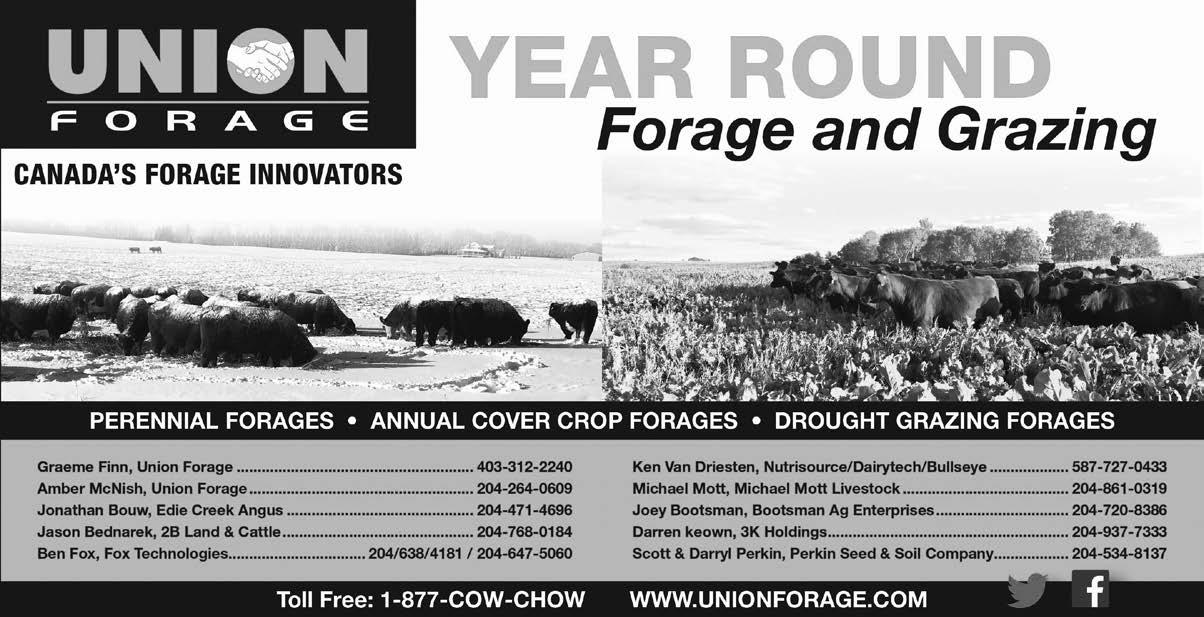
Question: What about early weaning?
Answer: Consider early weaning if your pastures are in poor condition or if your calves are nursing first-calf heifers. Early weaning at 90 to 150 days of age may create more efficient use of feed resources by directly supplementing calves to maintain weight gain rather than supplementing the cow to produce milk. Weaning at 150 to 170 days of age decreases lactation stress on cows when forages are limited and improves cow condition.
Calves weaned at 300 to 400 lb will require a good commercial starter ration containing 14 to 16 per cent crude protein.
StockTalk Q&A for Cattle Country is brought to you by Manitoba Agriculture. We encourage you to email your questions to our department’s forage and livestock team, who have a combined 175 years of agronomy experience. We are here to help make your cattle operation successful. Contact us today.
Shawn Cabak Portage 204-239-3403 Shawn.Cabak@gov.mb.ca Pam Iwanchysko Dauphin 204-648-3965 Pamela.Iwanchysko@gov.mb.ca Elizabeth Nernberg Roblin 204-247-0087 Elizabeth.Nernberg@gov.mb.ca Juanita Kopp Beausejour 204-825-4302 Juanita.Kopp@gov.mb.ca
7 CATTLE COUNTRY August 2022 www.mbbeef.ca
Question: Is creep feeding beef calves a good management decision?
: Creep feeding is generally a good management decision, but it comes down to economics.
Lenore Cattle Producer Protects Grasslands With Conservation Agreement
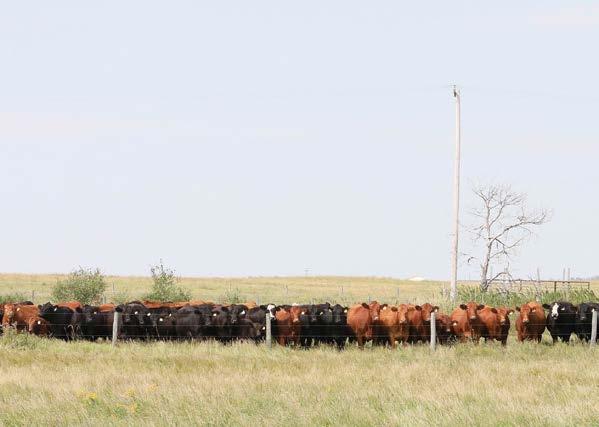 BY: WAYNE HILDEBRAND
BY: WAYNE HILDEBRAND

Bill Alexander is a fourth-generation cattle producer who farms near Lenore. Bill and his wife Darla recently

signed two Conservation Agreements with Manitoba Habitat Heritage Corporation (MHHC) to protect their grassland pastures and preserve the natural ecosystems on their farm.

“Our farm is a cow-calf operation only,” said Alexander. “The land is not suited to grain and does much better in grass. Keeping it in pasture with perennial grass and forage cover really helps the soil.”
“My neighbor was telling me about conservation programs that provide financial support to cattle producers to protect wildlife habitat, including grasslands,” Alexander said. “Darla and I checked out the programs being offered by a few conservation organizations. After contacting Ian Fortune, a habitat conservation specialist with Manitoba Habitat Heritage Corporation, we stopped looking. They had what we wanted.”
Bill and Darla’s farm plan to preserve and sustainably manage their native and tame grassland pastures fit perfectly with MHHC’s goal to work with Manitoba cattle producers to protect grasslands and maintain healthy habitat for wildlife, waterfowl, and Species at Risk.
“It’s just a great property,” said MHHC habitat specialist Ian Fortune. “Their farm happens to be located within the Mixed Grass Prairie target landscape and the North American Waterfowl Management Plan target landscape. That makes it a biodiversity hot spot!”

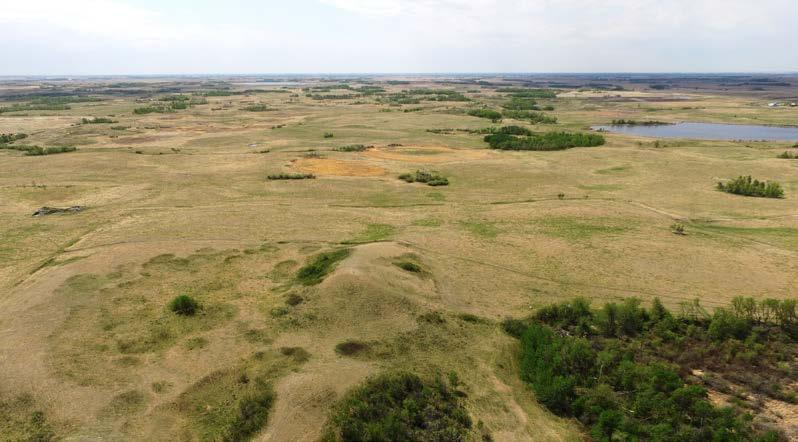
When Bill Alexander’s great grandfather Frank Alexander homesteaded the farm 137 years ago, it was a broad fescue grassland plain with some hummocky ridges, interspersed with lakes and sloughs. Today the farm is a beautiful mix of grasslands, woodlands and wetland habitat.
“Most of the original Mixed Grass Prairie is now cultivated cropland, which is a challenge for wildlife and bird species that adapted to a grazed grassland ecosystem for 8,000 years prior to settlement,” said Fortune. “From a resource inventory, MHHC found that the Alexander farm is host to a variety of grassland birds like Sharp Tail Grouse and many species of waterfowl such as Blue Winged Teal, Mallard and Northern Shoveler.”
“Darla and I decided to sign two Conservation Agreements with Manitoba Habitat Heritage Corporation,” said Bill. “The Agreement is registered on the title of the land. It designates wildlife habitat areas that are protected in perpetuity, including our tame and native grassland pastures. We like that our Agreement allows us to rejuvenate the tame grasslands if the stand gets weak.”
8 CATTLE COUNTRY August 2022 www.mbbeef.ca
Box 274, Austin, MB R0H 0C0 President: Melissa McRae 204-573-9903 Secretary: Laurelly Beswitherick 204-637-2046 b2@inetlink.ca www.mbsimmental.com CSA AGM & YCSA Show Portage La Prairie, mb - JULY 2022 Thank You Check out our new website for more infomation to all that Supported the MHHC pays producers to conserve, restoore, or enhance wildlife habitat For more information c all Ian Fortune (431) 235-3058 or visit www mhhc mb ca An
of the
property
a
(Photo credit:
overhead photo
Alexander
taken by
drone.
Bill Alexander)
Automating Replacement Heifer Selection: How Research Into Promising Technology Can Help

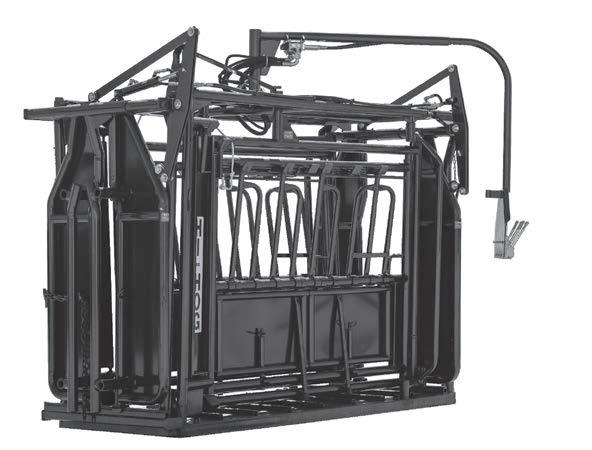

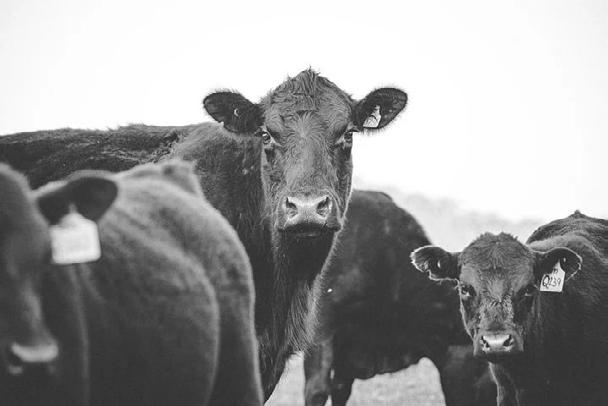 BY: DR. SUSAN MARKUS (LAKELAND COLLEGE, LIVESTOCK RESEARCH SCIENTIST) & DR. MARY-JANE ORR (MBFI, GENERAL MANAGER)
BY: DR. SUSAN MARKUS (LAKELAND COLLEGE, LIVESTOCK RESEARCH SCIENTIST) & DR. MARY-JANE ORR (MBFI, GENERAL MANAGER)
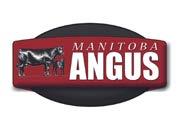
The Western Canadian Beef Cow-Calf survey showed that reproductive issues represent the main reason for culling females, often before reaching three years of age. Reproductive assessments of female commercial beef cattle are often only done visually, if done at all. Typically, bulls are subjected to detailed breeding soundness evaluations and are rightfully viewed as having the largest impact on genetic (with resulting economic) improvement of the herd.
However, it is the cows that have the largest economic impact on costs of production with their year-round feed expenses necessitating the production of a marketable calf each year. Targeting improved fertility and longevity of replacement heifers is a promising area of development to lower herd maintenance production costs and reduce the environmental footprint of unproductive livestock.
a good memory of both the dam’s and sires’ performance plus weights and birthdates. However, just because she looks good and has great genetics behind her, doesn’t mean she is guaranteed to raise a calf for years to come. Choose carefully because it can cost a lot. Raising and growing heifers can range from $1,600 to $2,800 per animal to get them to breeding age. Making the best available choice can streamline you to your herd goals and manage the significant investment in developing replacements.
Precision ranching uses data from a variety of sources to guide selection in herd development and in grazing management to have the right animal at the right time in the right location. The challenge of limited labour resources and low returns on investment in the cattle business means automation technologies of livestock management where economically viable could be critical to increasing overall farm profitability. New remote sensing technology (e.g. cameras, wearable sensors) may potentially aid in automating reproductive evaluation and selection of heifers and bulls by capturing individual estrus, activity levels, health status, and breeding attempts through mounting behaviours.
Precision Cattle Ranching for Improved Reproductive Efficiencies – a recently approved project led by Dr. Markus at Lakeland College, Vermilion, Alberta in collaboration with Manitoba Beef & Forage Initiatives (MBFI) along with Thompson Rivers University and the BC Cattlemen’s Association is comparing traditional methods of heifer selection, genetic parameters, and various remote sensing technologies to assess female reproductive efficiency. Assessments include breed composition, conformation (scoring feet, legs, pelvis, udder form), performance (weight, body condition, average daily gain, pregnancy, offspring), and temperament traits. By using remote sensing technology on individual animals, research objectives are to evaluate how well location, activity, body temperature, and behaviours can determine age at puberty, estrus, libido, and bull ability to service cows. Observing such predictive aspects of reproductive efficiency are crucial to avoid allocating costly labour, feed, facility, and land resources to unproductive cattle.
Using the apps and web portals linked to various devices, the heifers at three locations (BC, AB and MB) will be monitored for heat cycle behaviours. There will be smart camera monitoring of behaviour patterns during winter feeding and pasture grazing with artificial intelligence evaluation to validate sensor alerts. Heifers were fitted with rumen boluses to measure internal temperature and activity levels that are indicative of their heat cycles and health status as well as their frequency of water consumption. GPS ear tags are being used to determine animal location and activity levels. Leading into the breeding season, detailed physical characterizations have been carried out on all the yearling heifers including ultrasound scans for both carcass traits and reproductive tract development, DNA genomic analyses and indexes including breed composition, hybrid vigour scores and molecular breeding values.
The project asks the question “can female reproductive efficiency and longevity be assessed at an early age using technology that measures important traits?”. Proof of concept and new tool feasibility for the chosen technologies are the main focus. Valuable data on each heifer will be analyzed and compared to their actual performance as we follow them for the next three years. We are looking forward to seeing how the different approaches align and if both traditional and remote sensing technologies identify the top performing heifers.
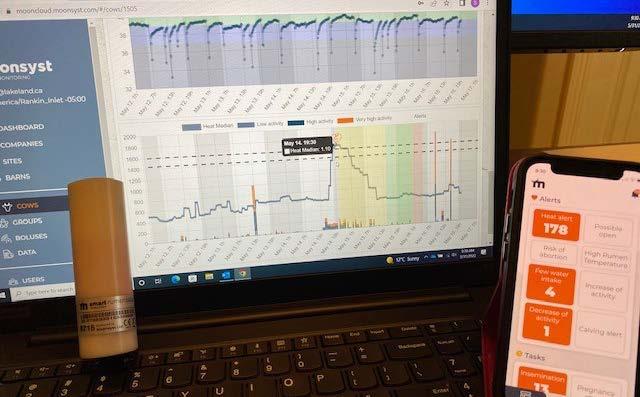
9 CATTLE COUNTRY August 2022 www.mbbeef.ca
M A A S U M M E R G O L D S H O W For information and events check out the MAA website! www cdnangus ca/manitoba-angus-association/ H a r d i n g F a i r - H a r d i n g M B J u l y 2 2 , 2 0 2 2 U P C O M I N G E V E N T S ! K e y s t o n e C e n t r e - B r a n d o n M B J u l y 2 7 - 2 9 2 0 2 2 S H O W D O W N J A C K H A R T M E M O R I A L F O U N D A T I O N F E M A L E A W A R D $ 2 5 0 0 v o u c h e r t o p u r c h a s e a n A n g u s f e m a l e a t t h e K e y s t o n e K l a s s i c S a l e V i s i t t h e w e b s i t e o r s e n d a n e m a i l f o r i n f o r m a t i o n t o a p p l y ! D e a d l i n e t o a p p l y S e p t e m b e r 1 2 0 2 2 P: 1-888-622-6487 E: mandi mbangus@gmail com Manitoba Angus Association Built Strong From the Ground Up Check out our full line of Squeeze Chutes Available at Federated Co-op Ag Centres # 1556 Hi-Hog Hydraulic Squeeze 2331 pounds Full 32” Inside Width Unmatched Access Safety Locks on all Access Panels Cattle on pasture at Manitoba Beef and Forage Initiatives Inc. (Photo credit: MBFI) Research is looking at replacement heifer selection. (Photo credit: MBFI)
Beef Production Supports the Preservation of Prairie Wetlands
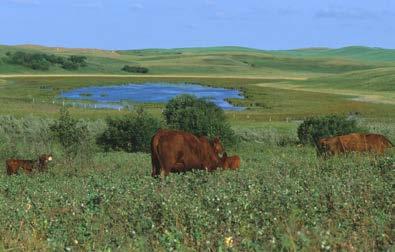 BY PETER FROHLICH, NATIONAL CENTRE FOR LIVESTOCK AND THE ENVIRONMENT (NCLE), UNIVERSITY OF MANITOBA
BY PETER FROHLICH, NATIONAL CENTRE FOR LIVESTOCK AND THE ENVIRONMENT (NCLE), UNIVERSITY OF MANITOBA
Typical descriptions of wetlands portray these ecosystems as abundant sources of fresh water, rich vegetation, habitats for migrating waterfowl and other wildlife. Throughout Canada, these ecosystems can be found on the prairies, in the boreal forest, along coastlines and even in the tundra. According to Ducks Unlimited Canada (DUC) our wetlands are truly diverse. They can appear as marshes, bogs, fens, swamps and open water.
However, there is much more to these ecosystems then meets the eye. From the environmental and the sustainability perspectives, Canada’s wetlands play an important role in carbon cycling and climate regulation, water quantity and quality regulation, and are hotspots for biodiversity. Essentially prairie wetlands provide an abundance of ecosystem services, the benefits humans derive from various natural environments.
Furthermore, Canada’s wetlands are an important part of the cattle ranching landscape. These ecosystems can serve as a valuable source of water and forage and can provide refuge to cattle on hot days.
Agriculture, Urban Expansion and Conservation



During past decades, drainage due to agricultural and urban expansion and the historical extraction of resources have not been kind to these diverse ecosystems. According to DUC, the existence of wetlands has slowly declined and in settled areas of Canada, up to 70 per cent of our wetlands have already been destroyed or degraded.
For more than 80 years, conservation groups like DUC have been effectively moving wetland preservation activities forward. DUC has been achieving results that have significantly helped to protect these disappearing ecosystems. However, there is still a lot of work that needs to be done to slow and stop the disappearance of prairie wetlands.
In the spring of 2020 DUC partnered with researchers from the National Centre for Livestock and the Environment at the University of Manitoba, and Agriculture and Agri-Food Canada to create a multidisciplinary team whose goal is to investigate ecosystem services derived from wetlands and to further explore the benefits of wetlands embedded in grasslands that serve as cattle grazing environments. With funding from the Beef Cattle Research Council, the governments of Canada and Manitoba through the Ag Action Manitoba
program, and the Alberta North American Waterfowl Management Plan Partnership this project will quantify ecosystem-level carbon sequestration and investigate greenhouse gas emissions (GHG) and microclimate regulation while exploring nutrient retention, water storage and biodiversity on prairie wetlands.
Scope of the Prairie Ecosystems Services Project




Data collection is centered on wetlands located within grasslands, as well as croplands. The ecosystems under investigation are associated with three watersheds located throughout the prairies, including two grassland and two annual cropland sites in the Prairie Pothole Region of southwestern Manitoba. The data will also be collected in conjunction with information collected from sites from an extensive survey of GHG emissions from wetlands embedded in grasslands and cropland from three prairie watersheds across Alberta, Saskatchewan and Manitoba.
In addition to assessing numerous ecosystem services, the research explores the impact of converting grassland to annual cropland and the resulting effects on biodiversity using waterfowl as a model. The study is also measuring the proportion of prairie wetland habitats that exist within beef production landscapes and provides an estimate of ecosystem services associated with these habitats using the DUC waterfowl productivity model.
Using unique strategies to measure greenhouse gas emissions
The study employs the use of Eddy Covariance Systems or flux towers to capture GHG exchange at the wetland scale. Traditionally, flux towers are used to study GHG emissions associated with ecosystems such as forests, peatlands and coastal salt marshes but have rarely been used to study small freshwater wetland ecosystems that are present in the Canadian prairie region. The main benefit of this technique is that GHG measurements capture a larger footprint incorporating the various ecotones of a wetland (open-water, emergent vegetation, wet meadow, etc.) allowing for better quantification of GHG exchange and carbon sequestration across the entire wetland.
What have we learned so far?



According to Pascal Badiou, a research scientist with DUC and project lead, data collected thus far shows
Applications for Consideration for The Environmental Stewardship Award Due to MBP by December 9




Manitoba Beef Producers (MBP) is accepting applications until Friday, December 9, 2022 for consideration for the local awarding of The Environmental Stewardship Award (TESA).

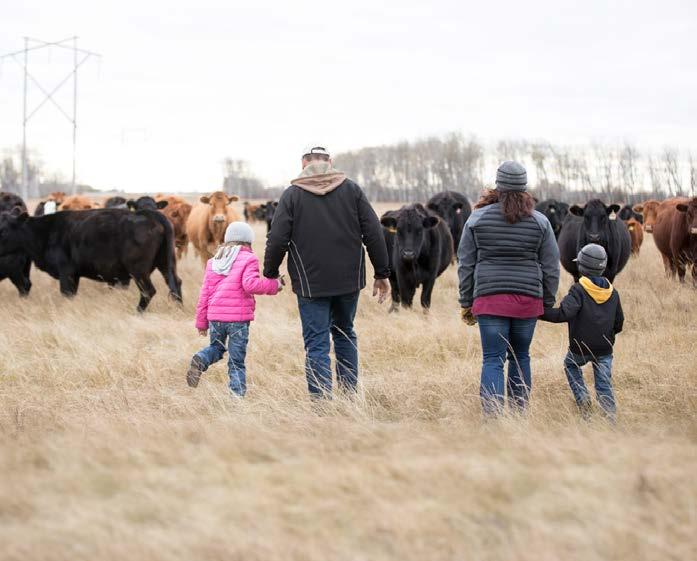
Since 1996, TESA has recognized producers who go above and beyond standard industry conservation practices and set positive examples for other cattle producers and the general public. As stewards of a vast portion of the Canadian landscape, Canada’s beef cattle producers play a significant role in protecting and enhancing the environment. They continuously strive to improve existing stewardship conservation practices to create a sustainable future – always farming for tomorrow.
At the local level, a producer receives provincial recognition for their outstanding environmental contributions. In the case of Manitoba, this occurs in conjunction with MBP’s annual general meeting in February. All provincial award recipients then move forward to compete for national recognition from the Canadian Cattlemen’s Association (CCA). The national TESA recipient is announced during the CCA’s semi-annual meeting at the Canadian Beef Industry Conference.
Each nominee exemplifies significant innovation and attention to a wide range of environmental stewardship aspects in their farm operation. Such innovations extend beneficially to areas far beyond their land, including water, wildlife and air.
How to Nominate
All beef cattle operations in Canada are eligible to apply for TESA. Beef producers interested in TESA can apply by filling out the application form found on the MBP website ‒ www.mbbeef.ca.
Producers can either nominate themselves, or be nominated by another individual or an organization. All methods are equally encouraged.
The completed application form, along with all supporting documentation (such as letters of support, photos and/or videos), is to be submitted to Manitoba Beef Producers by email to info@mbbeef.ca no later than 4:30 p.m. on Friday, December 9, 2022. If you have questions, please contact the MBP office at 204-772-4542.
that the type of vegetation and the amount of open water has a significant impact on the GHG emissions associated with a wetland.
Sulphate and phosphorous affect methane production. Increased sulphate and decreased phosphorous levels in an environment promote lower methane emissions. Results from the study show that wetlands embedded in cropland have higher phosphorous and lower sulphate concentrations, resulting in higher methane emissions. Conversely wetlands that include perennial cover such as grasslands have higher sulphate but lower phosphorous concentrations resulting in overall lower methane emissions.
Furthermore, Badiou says that it may be beneficial for farmers to maintain perennial cover around wetlands imbedded within crop land as this vegetations is a buffer between crops, improving water quality by removing phosphorous and reducing GHG emissions.
As the project continues, researchers will continue to quantify differences in water quality and water quantity of wetlands embedded in grassland relative to cropland. The research will also examine biodiversity impacts of converting grassland to annual cropland and quantify wetland habitat that exists within beef production landscapes based on ecosystem services provided. The project is scheduled to conclude in the spring of 2024.
Findings from the project will improve the understanding of the ecosystem services associated with prairie wetlands embedded in prairie beef production landscapes. Using natural climate solutions such as the preservation of grasslands and wetlands by beef producers represents a major environmental service associated with the beef industry. Accounting for these ecosystem services is key to developing effective communications to increase public knowledge, assist in policy implementation and to enhance the public confidence in the beef industry.
For more information on the study please contact Ducks Unlimited Canada at media@ducks.ca .
Committment to the land, water, air, and wildlife is a prerequisite to raising healthy cattle. Sustainability is not a buzzword... it's a way of life.
Committment to the land, water, air, and wildlife is a prerequisite to raising healthy cattle. Sustainability is not a buzzword... it's a way of life.
10 CATTLE COUNTRY August 2022 www.mbbeef.ca
Loveridge Photo credit: Jenna Loveridge
(Photo credit: Ducks Unlimited Canada)
Industry Dominated By a Series of Highs and Lows
It’s mid-July, and I have spent most of the summer touring western Canada doing customer calls, contracting yearlings and attending the LMAC convention. Most of the areas that I travelled to now have received enough rainfall to revive the pastures and hay land. Crops in Alberta are coming along nicely with many parts of Manitoba way behind in the seeding department. In the Interlake, farmers have gone from severe drought conditions last year to excessive amounts of moisture this spring and summer.
Most of the farmers whom I have spoken with are confident that they will grow enough feed to get them through the next 12 months. Grain prices have started to drop which adds to the optimism in the cattle industry. What I did notice was an underlying tone below the optimism, which was very concerning.
The optimism was largely centered on the price expectations for the upcoming fall. Falling grain prices and smaller cattle numbers were indicators of a better market.
Below that, the message was loud and clear from the cow-calf sector and the backgrounders. This spring was the tipping point in Manitoba! A harsh winter used up precious feed and bedding supplies faster than expected. Five weeks of Colorado lows brought miserable spring weather during calving season. Heavy spring rains kept farmers off the fields. This, combined with huge price increases in farm inputs and equipment costs, have many cow calf producers throwing their arms in the air and declaring, ‘What are we doing this for?’ The mood in the industry is filled with frustration, anxiety, and depression, and in some cases, anger! The mental state of the cow-calf industry is not healthy, and it is province-wide. Many producers are seriously considering shutting down their operations and quitting the business altogether.
RICK WRIGHT The Bottom Line
The common statement I hear every week is that ‘the feedlots have to pay more for these calves or it’s not worth the investment and the work required to keep calving these cows!’ Most cow-calf producers claim that they haven’t made any money in the past three to four years. They see the meat prices in the store climb, but the market for their calves has not kept pace. The past three years have been especially bad with all of the ‘black swans’ that have negatively affected the cattle markets. The most recent was the surge in the grain prices to feed the cattle.
The true problem starts at the top; the packing industry. The bottleneck at the top of the production chain has limited competition, allowing them to control demand and hook space for the finished cattle. Without sharing some of those profits with the rest of the industry, the packers risk losing many of their primary producers who supply the ‘raw product’: the calves at the start of the supply chain.
In the past 12 to 18 months no sector in the production supply chain has made any significant money in the cattle industry. The cow-calf industry has been stuck in a rut; the backgrounding industry for first quarter spring deliveries has seen negative margins for the past three years. The grassing operations are holding their own, with some very good returns expected this fall. The feedlots are investing more money per animal in production costs but not seeing any increases in their
bottom lines. The scenario is no different in the USA. They have four major packing companies compared to our two and they produce 10 times more fed cattle than we do.
Many producers feel that as an industry we need to build our own plants and compete with the big corporate packers. It seems like a simple plan, but the old adage still applies, “it’s easy to harvest the cattle but tough to sell the meat,” especially into a global market where established corporate packers have long-term relationships with the wholesalers and retailers. In the USA, there are reports of many new plants being built with producer and government money by independent companies. If history repeats itself, the ‘big four’ will wait for the new plants to get operational, will squeeze them out of business, and then buy them from the receivers at pennies on the dollar to replace their own aging infrastructure.
On the optimistic side, this fall seems to be shaping up for a very strong calf and yearling market. With the contraction of the cattle numbers on both sides of the border, feeders are predicting a shortage of feeder cattle. As producers staying in the business try to rebuild their herds, the number of heifers retained this fall could further influence the shortage. The prices that we could see this fall could be the best since 2015. The million-dollar question is, ‘Will it be enough to convince the cow-calf producer who is ready to quit to stay in the business?’ The cow-calf industry has experienced a lot of collateral damage in the past 18 months, and in their current state of mind, many of our producers are done! Their spirit is broken! What can we do as an industry to help them heal? I am not really sure; maybe it’s just the evolution of the cattle business.

Until next time, Rick
Wet Spring Brings Summer Lameness
BY: DR. TANYA ANDERSON, DVM
With all the moisture this spring and recent heat, expect more summer lameness problems. Foot rot is caused by a bacteria that thrives under warm moist conditions. When cattle stand in mud and water, the skin between their toes softens and becomes more readily damaged by rough vegetation, dirt clods or stones, allowing bacteria to invade the skin. Winter cases of foot rot are common in poorly bedded pens with frozen mud, ice and manure. Early treatment with antibiotics is curative but delays can result in severe consequences when the bone and joints become infected. Seek veterinary advice sooner rather than later if lameness persists and get those problem cases examined.
When treating lame cattle with suspect foot rot, remember the golden rule - simple foot rot always responds to a single label dose of long-acting oxytetracycline. If the animal remains lame or recovers then gets lame again, it does not have foot rot. Simple foot rot cases have swelling between the claws that can also extend to above the claws but does not involve just one claw. Affected animals typically touch the foot gingerly to the ground or hold it up and only briefly place weight on it while walking. Severely affected animals may even graze standing on their knees.
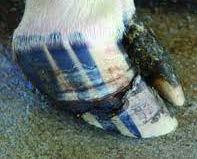

If you purchase dairy cows to raise orphan calves, you may inadvertently introduce an imitator of foot rothairy heel wart (AKA strawberry foot rot). It is common to see a red, raised (but sometimes flat) ulcerated sore reaching from the heel, between the hooves and then up onto the top of the foot. As the heel is the most painful, these animals tend to walk and stand with the toe on the ground. Treatment requires topical applications of antibiotics, bandaging and hoof care. Few respond to a single dose of antibiotic.


Pay attention to feet in the fall at takeout and in the spring at calving. If feet are overgrown and you have not culled, ensure that trimming is done prior to turnout or that animals are pastured in an area where they can be easily loaded up for treatment during the grazing season if needed. If a lame foot has any claw abnormality, I guarantee that abnormality will be part of the problem and a foot trim required as a part of the treatment plan. Avoid keeping replacements from cows with poor feet and critically assess breeder herds when purchasing yearling bulls. Unfortunately, many of the heritable foot diseases in cattle do not show up until animals are over three years of age and you have grown your herd with those genetics.
Feeding programs and environmental stressors also influence hoof health. Horizontal and vertical sandcracks and ridges in the hoof wall can develop after


the stress of weaning or calving, high fever (pneumonia, uterine infection, mastitis) or a sudden change in nutrition, whether lush grass, heavy grain rations or during a period of nutritional deficiency (especially protein), including a lack of vitamins and minerals (especially zinc). Heavy mature animals appear more susceptible to developing vertical sandcracks which split open as the hoof grows out allowing bacteria access to the underlying tissues. Horizontal sandcracks begin to bend and flex as they grow out resulting in horn breakage and easy access of bacteria into the underlying tissues. Any feet with sandcracks need the crack pared out and the hoof trimmed to prevent further hoof wall splitting.
Any lame cattle not responding to a single dose of antibiotic need an in-depth examination. My experience has been that the unresponsive foot rots are usually toe abscesses. Trimming, treating and flushing out the abscess costs under $200 and the prognosis is excellent. Pretty cheap compared to lost value when a claw amputation for salvage is required due to delayed treatment on a $7,000 bull. Chasing cattle in pasture once or twice a week to give yet another antibiotic injection can’t be anyone’s idea of a good time. Quiet cattle turned mean, breeding gone awry and huge weight losses are not profitable either. Timely diagnosis and management of foot issues is a win/win for all - the producer, the animal and the consumer.
11 CATTLE COUNTRY August 2022 www.mbbeef.ca
Simple Footrot Hairy Heel Wart Advanced Foot Rot - Will Need A Claw Amputation Vertical Sandcrack Horizontal Sandcrack Toe Abcess
Jamaican Pockets of Love Make Everything “Irie!”
BY: ANNA BORYS, MBP FOOD EXPERT
If I could create a new food group, it’d be the “savoury filling wrapped in carbs” food group. If you think about it, almost every culture has their version. Calzones. Pierogi. Gyoza. Pasties. Empanadas. The list goes on! Very often these delicious dumplings will introduce either a new technique or perhaps a new spice while still maintaining the same concept and familiarity that you’re used to. Jamaican Patties are a great jumping off point.
If you’ve never heard of them, they’re not at all the same as a hamburger patty. Just Google search “Patty vs Patty”, there’s a great CBC short documentary on the subject. The first time I’d ever heard of, or tried a patty

Jamaican Patties With Peach Mango Chutney

Dinner, Yields 9-10 Patties
Flaky Pastry Dough:
• 2 cups - all purpose flour
• 1 ½ - tsp salt
• 1 tbsp - curry powder
• ½ tsp - turmeric, ground
• 1 cup - butter, unsalted, small cubes
• ½ cup - ice water
Spicy Beef Filling:
• 1lb – lean ground beef
• ½ cup – tomatoes, chopped
• 1/3 cup – green pepper, finely chopped
• ½ cup – yellow onion, fine diced
• ¼ cup – green onion, finely chopped
• ½ tsp – allspice, ground
• 1 tbsp - ginger, fresh grated
• 1 ½ tsp – garam masala
• 3 cloves – garlic, minced
• 1 ½ tsp – salt
• ¼ tsp black pepper, ground
• ½ lime – juiced
• 1 – scotch bonnet, or habanero pepper, seeded and minced
• ½ cup – panko breadcrumbs
Mango Peach Chutney:
• 2 cups – peaches, sliced, frozen
• 2 cups – mangoes, chunks, frozen
• 1 – navel orange, zested and juiced
• ½ cup – orange juice
• 2 tbsp – honey
• 1 bay leaf
• 3 tbsp – red wine vinegar
• ½ small - red onion
FLAKY PASTRY
1. In a large mixing bowl, whisk together flour, salt, curry powder and turmeric.
2. Cut in unsalted butter until the butter reaches the size of small peas, or coarse breadcrumbs.
3. Add cold water in two additions while mixing with your hands or utensil. Press dough together
was after a long beach day in Montego Bay. I have been chasing that experience ever since to no avail (but the search has been super tasty!). After several attempts, I’ve finally concluded that no two patties are alike, but this recipe leaves me with the same satisfaction as that warm day on Doctor’s Cave Beach.
A very simple ground meat mixture loaded with veggies and spice wrapped in the flakiest pie pastry flavoured with curry and turmeric, this hand-held spicy Caribbean pastry paired with a sweet chutney is perfect for any occasion. It’s also a perfect meal or snack for on-the-go lifestyles. I like to prepare a batch and freeze them so on those evenings where I don’t have time to cook, or need a last-minute meal idea, I can toss them in the oven and 25 minutes later dinner is ready!
Although the recipe specifies a size, feel free to make them smaller as they’d also make a perfect after-school snack, or appetizer platter. The sweet/cold peach mango chutney combined with the hot/spicy of the patty is a fantastic pairing but using your favourite store-bought sweet chutney will also work. If freezing, I recommend egg washing before they go in the freezer and then lining a sheet pan with parchment and spacing out the patties so they don’t stick together when freezing. Once they’ve frozen completely, they can be transferred to a large airtight resealable bag. The added breadcrumb is used to soak up excess juicy goodness while binding the meat mixture to prevent a crumbly interior. And like any recipe using hot peppers, use to your own discretion!
Enjoy!
to form a ball. If dough does not come together, add an extra teaspoon of water at a time until a dough ball forms.
4. Wrap tightly in plastic wrap and refrigerate for 2 hours to overnight.
SPICY BEEF FILLING
1. In a large non-stick pan over medium high heat all add ingredients except the panko breadcrumbs. Stirring occasionally, cook for about 8-10 minutes until cooked through. Transfer to a large mixing bowl.
2. Stir in panko breadcrumbs to absorb excess moisture and thicken slightly. Loosely cover and put in fridge to chill completely before filling pie pastry.
MANGO PEACH CHUTNEY
1. Bring all ingredients to a simmer in a small pot over medium heat, stirring occasionally to help break down fruits and onions.
2. Simmer over medium low heat for about 30 minutes until fruit has started to break down and soften.
3. Remove bay leaf and discard. Blend ingredients with a hand immersion blender or using a potato masher, mash until larger chunks are broken down with a few larger chunks remaining. Continue to simmer for another 5 minutes.
4. Transfer hot chutney to a container and chill completely before serving. Chutney will continue to thicken as it cools.
ASSEMBLY
1. Lightly flour working surface and roll dough out to about ½ cm thick. Using a 7” bowl as a stencil,
cut out rounds and set aside. (Cover cut rounds with plastic wrap or a towel to prevent drying out.)
2. On the lower half of each round, place a 1/3 cup, packed of chilled meat mixture, leaving about 1½-2 cm around the edge.
3. Pull top half of pastry down over filling and using a floured fork, crimp edges to seal, creating a half circle shape like a calzone or empanada.
4. Transfer filled pastry to a parchment lined sheet pan. Repeat with remaining rounds and filling. Dough trim can be gathered up and re-rolled to create more rounds. (Note: it is important to let the dough re-chill and rest about 20 minutes between rolls to allow the butter to firm up and the gluten to rest).
5. Once all pastries have been filled and crimped, whisk together 1 egg and 1 Tbsp of water until smooth and there’s no streak of egg white. Lightly brush all pastries on tops and sides until evenly coated.
6. Using a paring knife or kitchen shears, gently cut 2-3 vent holes in top surface of pastry.
7. Chill pastries for about 1 hour before baking or freeze individually for baking at another time.
8. Bake at 400°F for 15-18 minutes until golden brown and internal temp reads 160°F. If baking frozen patties, adjust baking time to about 22-25 minutes.
9. Serve with chilled Peach Mango Chutney.
NOTES
• Dough and filling can be made in advance. Any leftover meat can be frozen for the next time you make patties.
• Chutney also makes for a great accompaniment to other meats.
12 CATTLE COUNTRY August 2022 www.mbbeef.ca
(Photo credit: Anna Borys)
Mark your calendars! Manitoba Beef Producers Food Expert Anna Borys and Great Tastes of Manitoba host Dez Daniels were on set in the new GTOM cooking studio filming episodes for the upcoming Season 33. Tune in to CTV Winnipeg at 6:30pm or watch online via GreatTastesMB.ca on October 8 and December 3 for six delectable new beef recipes.
(Photo credit: David Hultin/MBP)
Manitoba Government Announces Disaster Financial Assistance Program for Spring Flooding, Also Includes Assistance Related to Verified Livestock Losses Related to Storms
On May 9, 2022 the Manitoba government announced a Disaster Financial Assistance (DFA) program for individuals and municipalities in relation to damages to infrastructure, private residences, farms or small businesses due to spring flooding.
This DFA program will also assist with verified livestock losses related to the spring storms.
In announcing the DFA program Transportation and Infrastructure Minister Doyle Piwniuk stated, “Our government is committed to supporting Manitobans in addressing the cost of damages related to spring flooding. We continue to work with local authorities on response efforts and a program will be available to assess damages and provide assistance for those who need it.”
Manitoba Beef Producers (MBP) thanks the provincial government for announcing the DFA program and recognizing the extraordinary challenges faced by

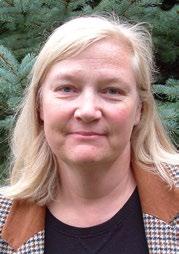


producers as a series of storms swept through the province in April, making for very difficult spring calving conditions and causing damages.
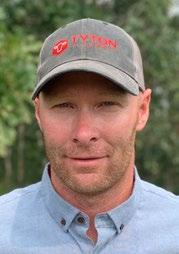
DFA programs provide provincial assistance for certain disaster-related losses when a widespread natural disaster strikes and creates an unreasonable financial burden. DFA helps Manitobans recover by providing financial assistance for uninsurable losses to basic and essential property.
The following information has been provided by the Emergency Measures Organization (EMO) and MBP to assist producers as they consider making a claim under the DFA program.
DFA will provide assistance to farms that have experienced livestock losses as a result of 2022 spring flooding and storms. To qualify for DFA, your farm must have yearly gross revenues of between $10,000
and $2 million and employ no more than 20 full time workers. It must be an owner-operated business and the owner-operator must be the day-to-day manager. The farm cannot be a hobby farm.
In the DFA application form, producers should note the number and types of cattle lost, e.g. calves, fed steers, fed heifers, bulls, etc.
As part of the DFA program criteria, a veterinary certificate is required to verify that the losses were a direct result of the event. Note: The cost to obtain the veterinary certificate can be submitted as a DFA eligible cost. For losses that happened some time ago, the producer should contact their veterinarian, explain the situation, and obtain the needed certificate.
www.mbbeef.ca PUBLISHED BY MANITOBA BEEF PRODUCERS JUNE 2022 POSTMASTER PLEASE R ET URN UNDELIVERABLE C OPIE S TO MB P, UNI T 220, 530 CENTU RY S TREE T, W I NNIPE G, M B R3H 0Y4 CANADIAN PUBLIC AT IONS MAIL P RODU CT SAL ES AG REEMEN T NUMBE R 40005187 P OS TA GE P AID IN W INNIPE G.
Column Page 2 Live or Online Page 6
President’s
Page 9
Mental Health in the Beef Industry
Manitoba Conservation Trust program funding has granted over one million dollars to the Association of Manitoba Community Pastures (AMCP) to help maintain prairie grasslands and biodiversity in Manitoba’s Community Pastures. Please see story on page 5 of this edition. (Photo credit: Megan Desjardins)
Page 2
Proud to Be a Manitoba Beef Producer
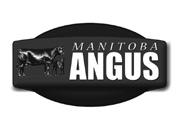
If the weather conditions this spring taught us anything, it reinforced that cattle ranching is a tough business. The storms on three consecutive weekends back in April led to an endless workload over that timeframe, where caring for the animals became our exclusive focus.
Conditions across southern Manitoba varied between terrible and catastrophic with gale force winds, snow drifting 7-8 feet high and several inches of rain that led to exceptional overland flooding. While some producers had long finished calving and struggled to find enough shelter or freshly-bedded pen space, others were hit in the peak of their calving season dealing with the severe and rarely seen conditions for mid-April.
TYLER FULTON President’s Column

weather became a full-time job. In the days that followed, hours were spent bottle feeding and attempting to reconnect calves with their mothers.
Consistent among the experiences that I have heard was the complete mental and physical exhaustion that resulted from the storm events. Producers were working long hours in terrible conditions and some still lost calves despite our best efforts.
While everyone’s experience was unique to their
own conditions and operation, I believe that we all had a shared experience that bonds us to each other in a way that other sectors of agriculture can’t fully understand. The uncontrolled environment in which we work, combined with our universal dedication to the well-being of our animals result in a common, unspoken connection among cattle farmers and ranchers.
What is most remarkable to me, is how the majority of producers still count themselves as fortunate, despite the hardships they endured. It is this attitude when faced with these challenges that results in our industry having the hardworking, self-reliant, and gritty character that defines us.
For this reason, I am proud to be a Manitoba beef producer.
Disaster Financial Assistance Program for Spring Flooding
Page 1
MBP has helped develop a template that vets can use to support the producer’s DFA application and this information is being circulated to them. In the veterinary certificate the cause of loss needs to be attributed to the ‘2022 spring flood’ and the date of loss should be stated.
Assistance for livestock losses will be calculated as follows:
• Is based on the Wildlife Damage Compensation program for predation losses (MASC)
• Will provide a price per pound for livestock losses. The price is based on the Canfax value on the date of loss (www.canfax.ca)
• Different types of cattle are priced differently on Canfax, so therefore the farm will need to provide details on the type of livestock that were lost as well as the animal’s weight.
• For calf losses, the compensation will provide assistance based on a 500 lb. cow.

Producers should also check the DFA program criteria related to infrastructure damage and recovery to determine if there are any other losses for which they may be eligible to seek compensation.
The deadline to submit an application to Manitoba EMO for the spring 2022 DFA program is August 8, 2022.
For more information about eligibility or to apply for the program, visit www.manitoba.ca/emo/dfa , call 1-888-267-8298 (toll free) or email dfa@gov. mb.ca. If you are unable to access the online form, call EMO to request that a hard copy be mailed to you.
Manitoba EMO will be offering webinars for the public to provide an overview of DFA and answer questions. More information about dates, times and how to register will be available online in the coming weeks.
Note: Manitobans are encouraged to check with their insurance providers to review their policy coverage before applying for DFA, noted Minister Piwniuk. Insurable costs, such as sewer backup, are not covered by DFA. Some Manitobans may have also purchased overland flood insurance.
2 CATTLE COUNTRY June 2022 www.mbbeef.ca
DISTRIC T 13 MARY PAZIUK Dauphin, Ethelbert, Gilbert Plains, Grandview, Roblin and Mossey River COMMUNICATIONS AND MARKETING LEAD David Hultin O F FIC E A SS I S TA N T Jennifer Patryluk D ES IGNE D B Y Print Studio One C AT T L E CO U N TR Y E D I TO R David Hultin LIVESTOCK PREDATION PRE VENTION PROJEC T COORDINATOR Ray Bittner FINANC E Deb Walger DISTRIC T 14 VACANT Minitonas-Bowsman, Mountain, and Swan Valley West MA NI TOB A BE E F PROD U C E R S Ph: 1-800-772-0458 Un i t 220, 530 Ce n t u r y S t ree t Wi nn ipe g, MB R 3H 0Y 4 PH - (204) 772-4542 FX - (204) 774-3264 info@mbbeef ca www.mbbeef ca Carson Callum GEN E RA L M AN AG E R DISTRIC T 1 ALFRED EPP Boissevain-Morton, Brenda-Waskada, Grassland, Deloraine-Winchester, and Two Borders DISTRIC T 2 NANCY HOWATT Argyle, Cartwright-Roblin, KillarneyTurtle Mountain, Lorne, Louise, Pembina, and Prairie Lakes DISTRIC T 3 ANDRE STEPPLER Cartier, Du erin, Grey, MacDonald, Portage la Prairie, Rhineland, Roland, Stanley, Thompson, Montcalm, Morris, and Ritchot DISTRIC T 4 VACANT De Salaberry, Emerson-Franklin, Hanover, La Broquerie, Piney and Stuartburn, Montcalm, Morris, Ritchot, Spring eld, Ste. Anne, Taché, R.M. of Piney and Reynolds DISTRIC T 5 STEVEN MANNS Cornwallis, Elton, Norfolk-Treherne, North Norfolk, Oakland-Wawanesa, Glenboro-South Cypress, and Victoria DISTRIC T 6 MELISSA ATCHISON Pipestone, Riverdale, Sifton, Souris-Glenwood, Wallace-Woodworth, and Whitehead DISTRIC T 7 T YLER FULTON PRESIDENT Ellice-Archie, Hamiota, Prairie-View, Riding Mountain West, Rossburn, Russell-Binscarth, and Yellowhead DISTRIC T 8 MATTHEW ATKINSON 2ND Clanwilliam-Erickson, Glenella-Lansdowne, Harrison-Park, Minto-Odanah, Oakview, North Cypress-Langford, Rosedale, and West Lake-Gladstone DISTRIC T 9 TREVOR SUND Alexander, Brokenhead, East St. Paul, Lac Du Bonnet, Rockwood, Rosser, St. Andrews, St. Clements, St. Francois Xavier, West St. Paul, Whitemouth, Woodlands, LGD of Pinawa, Reynolds, Spring eld, Ste. Anne, and Taché DISTRIC T 10 MIKE DUGUID SECRETARY Armstrong, Bifrost-Riverton, Fisher, and Gimli DISTRIC T 11 ARVID NOTT VEIT Coldwell, Grahamdale, St. Laurent, and West Interlake DISTRIC T 12 MARK GOOD TREASURER Alonsa, Lakeshore, McCreary, and Ste. Rose
Maureen Cousins
T
POLI C Y AN
A LY S
For information and events check out the MAA website! www.cdnangus.ca/manitoba-angus-association/
Fair- Harding, MB July 22, 2022 UPCOMING EVENTS! Keystone Centre - Brandon, MB July 27-29, 2022 SHOWDOWN JACK HART MEMORIAL FOUNDATION FEMALE AWARD $2500 voucher to purchase an Angus female at the Keystone Klassic Sale. Visit the website or send an email for information to apply! Deadline to apply September 1, 2022 P: 1-888-622-6487 E: mandi.mbangus@gmail.com Manitoba Angus Association Did you know? MBP distributes a free, weekly ENewsletter to members and partners on timely beef topics. Subscribe Today! mbbeef.ca/news/ Half-page and full-page advertising opportunities also available. Contact David for more information. 204-558-4502
MAA SUMMER GOLD SHOW
Harding
MBP Busy with Advocacy Work, Return of Events Like RMWF
What a year we have had. This time last year our directors were informing us of the severe drought-related challenges across Manitoba. Now we are seeing the opposite. Producers have been dealing with a lot, and we fully understand the toll it is taking mentally and physically on producers. The plus side of the winter we have had along with the wild April storms is the added moisture to help crops and grass grow and to help recharge water supplies. However, the April storms really had a severe impact on producers across the province.
Following the first Colorado low and other severe weather that followed, MBP asked producers to start sending their cattle loss data to us, so we could accurately portray the impacts to the provincial government. I greatly appreciate all those who took the time to report to us, even though I know how hard it was to share. You all care for your animals so much, and this was truly heartbreaking. These efforts however helped us advocate for a program that will financially help cover part of the losses.
On May 9 the Manitoba government announced a Disaster Financial Assistance (DFA) program for individuals and municipalities experiencing damages to infrastructure, private residences, farms or small businesses due to spring flooding and weather events. Under this program, livestock losses are included. I strongly encourage you to start the steps required in the application. MBP is working with Manitoba’s Emergency Measures Organization and the Manitoba Veterinary Medical
CARSON CALLUM General Manager’s Column

Association to ensure the reporting and verification requirements for producers’ claims work smoothly. MBP thanks the provincial government for recognizing the challenges caused by the successive storm systems and flooding and for making DFA available.
Looking ahead in the calendar, we have a couple of initiatives planned for producers that I hope many folks can take part in. The first are three workshops under the Livestock Predation Prevention Pilot Project set for the latter part of June. The intent of these workshops is to give producers tips related to trapping predators, to provide insights from specialists on predators and predation, and to explain how the predation claims process administered by MASC works. There will also be an overview of the types of Risk Management Practices that have been tested in the pilot project so far. Check out our website for further details on these events.
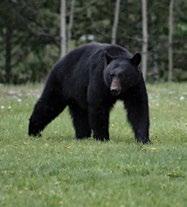
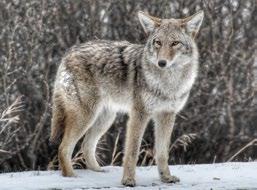
The second event is a summer BBQ for producers and industry stakeholders at the Manitoba Beef & Forage Initiatives farm near Brookdale. This event is intended to be a very informal afternoon to allow our board and staff to connect with producers and industry
Cattle Country Reader Survey
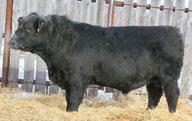
Cattle Country, a free publication of Manitoba Beef Producers, is the only newspaper in Manitoba written by beef producers, for beef producers. The newspaper has been in print since 1998 and is also available in a digital format.
The newspaper offers the latest industry news, interesting features, producer profiles, and updates on the activities of MBP eight times per year.
Cattle Country is the paper for anyone involved in beef production, industry stakeholders, and partners, as well as rural communities. It is also read by government staff and elected officials.
Manitoba Beef Producers has launched a survey to ensure the newspaper is meeting the needs of the sector and the readership. All responses will be kept confidential and used by MBP staff to guide decision making with the newspaper.
stakeholders. We will also have farm tours, some information sharing, and some speeches, such as recognizing past MBP directors. We have been missing this great type of engagement that normally happens during the President’s Banquet at our Annual General Meeting, which unfortunately hasn’t been held for a couple of years due to COVID-19 health measures. Stayed tuned for more information on this event, but I’ll ask you to save the date for Wednesday, July 13th!
One item I would like to call out in my column this month is our Cattle Country survey we launched a few months ago. We are seeking further feedback about the newspaper to ensure we are serving our members as best as possible from a communications standpoint. Please take the time to fill out the survey, as it will help us chart a path forward. More details are below.
Before I close, I want to remind folks of MBP’s six scholarships for those who come from a cattle farm to support their continued education. We have increased the value per scholarship to $1,000. I look for to seeing the essays and videos that applicants send in. Check out our website for complete details about how to apply.

With that, I hope this summer consists of much better growing conditions. It’s already off to a better start from a moisture standpoint, even with the challenges associated with how it came. Be sure to soak up some sunshine after that long winter, and focus on your own mental health as best you can.
To access the survey, please input the following URL into your browser: https://www.surveymonkey.com/r/J3W99VM or follow these steps:
Hold your smartphone or tablet over the QR Code so that it’s clearly visible within your smartphone’s screen. Two things can happen when you correctly hold your smartphone over a QR Code.
1. The phone automatically scans the code.


2. On some readers, you have to press a button to snap a picture, not unlike the button on your smartphone camera. If necessary, press the button.
Presto! Your smartphone reads the code and navigates to the intended destination, which doesn’t happen instantly. It may take a few seconds on most devices.
All livestock producers and trappers are welcome. All field days are 10:00 AM to Noon
Ethelbert
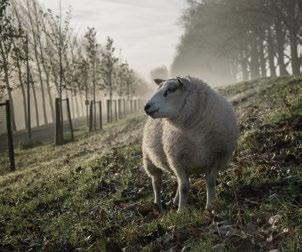
3 CATTLE COUNTRY June 2022 www.mbbeef.ca
AMCP (Ukraina Corral) Community Pasture | Tuesday, June 21st 2022 Pansy AMCP (Pansy Corral) Community Pasture | Thursday, June 23rd 2022 Mulvihill AMCP (Corral) Community Pasture | Tuesday, June 28th 2022 (Note: Events are outdoors in field, so bring all-weather clothes.) When predators take a bite out of your livestock what do you do? Topics being covered include:
How to get compensated for predator losses (MASC) Know your legal rights to defend your property from predators (Manitoba Conservation)
Gain insights into predator behavior (Manitoba Conservation wildlife biologist) • Problem Predator Removal Program (Manitoba program) • Trapper advice on how to make predator removal more successful (Manitoba Trappers Association) For more directions or questions MBP Organizer: Ray Bittner 204-768-0010 MBP Office: 204-772-4542 No pre-registration required. Sponsored by Manitoba Beef Producers Livestock Predation Prevention Pilot project Predation Management Field Days mbbeef.ca | 204-772-4542 Livestock producers attending will be registered to win a $300 vet consultation and assessment! Thank you to everyone who showed interest & supported our breeding program at our 2022 sale! (204) 232-1620 STEFAN (204) 471-4696 JONATHAN ARE YOU STILL LOOKING FOR A BULL? We kept a few extra 2 year old bulls to sell via private treaty out of the yard. Heifer bulls available. Please call or email for more information. info@ediecreekangus.com ediecreekangus.com EDIE CREEK TITAN 53H 2022 HIGH SELLER PURCHASED BY KODY AESOPH MILLER, SOUTH DAKOTA Our 2022 Bull sale was a great success! We were honoured to see repeat and new customers who purchased our bulls to improve profitability in their cow herd. We have bulls heading to new homes as far away as Ontario, B.C. and South Dakota.
•
•
StockTalk Q&A Feature Brought to you by Manitoba Agriculture
Pam Iwanchysko Livestock Specialist Manitoba Agriculture
pamela.iwanchysko@gov.mb.ca
Question: Grazing livestock on pasture is certainly the most economical method of reducing feed costs in any livestock operation, and being able to graze cattle on pasture longer during the summer grazing period is key. One of the best ways to improve productivity is to implement a planned rotational grazing system on that pasture. It is very important to provide adequate rest and recovery for the plants specific to the growing conditions and to start planning well in advance of the start of the grazing season.
An applied research trial at the Manitoba Beef & Forage Initiatives Brookdale Farm north of Brandon for the past six consecutive years showcased how management can play a key role in extending the grazing system. Fifty cow-calf pairs were randomly divided each year for summer grazing on either a continuous or planned grazing system. Each grazing system was approximately 90 acres and subdivided into seven-paired replicates to evaluate the impact of improved grazing management. In the planned grazing system, the cows were moved on a daily basis targeting one acre paddocks using a single strand, portable electric fence. The continuously grazed pasture consistently recorded reduced grazing days by approximately one month compared to that of the planned rotationally grazed paddocks. The planned grazing system not only created more grazing days with increased productivity, but also reduced the need for winter feed supply, increased the amount of calf gain on pasture and increased forage stand health and sustainability of the pastures.
Average Animal Unit Months per acre on the Planned and Continuous Grazing Paddocks at the MBFI Brookdale farm.
Paddock AUM/Acre 2019 AUM/Acre 2020 AUM/Acre 2021 AVERAGE AUM/Acre over the 3 years
A 1.31 2.87 1.28 1.82 B 2.57 2.24 1.48 2.09 C 1.04 1.21 1.22 1.16 D 1.07 1.01 1.11 1.06
E 2.95 2.25 3.33 2.84
F 1.01 1.05 2.12 1.39 G 2.54 1.18 2.32 2.01 Continuous Pasture 1.28 1.42 1.08 1.26
When developing a rotational grazing system some key points to consider are as follows:
1. Estimate the length of the grazing season by using past records and estimate the percentage shortfall in dry areas. Be very conservative and reasonable. Try to aim to leave 50 per cent residue on the pastures after each graze. Moving the cattle after they’ve eaten about 50 per cent of available forage will leave the paddock in good condition for regrowth.
2. Do an inventory on paper of previous pasture yields and hay land condition and estimate projected yields. Balance this to animal numbers and desired length of the grazing season. Cows will
voluntarily consume 2.5 per cent of body weight or 25 lbs. per day. The 25 lbs. is based on 100 per cent dry matter. A 1,400 lb. cow, for example, will eat about 160 lbs. of fresh grass per day. It is imperative to determine how much the cows weigh and how much feed is available to the animals, which depends on grass and forage species, precipitation, soil type and other environmental factors.
3. Balance shortfall by looking for additional pasture, selling off animals, and later spring turnout. Identify a “sacrifice” pasture and only graze it or supplemental feed on that portion until summer pastures are ready for grazing. It is recommended that grass plants are at the full three-leaf stage before they are ready to graze.
The next steps:
4. Sub-divide the pasture into multiple paddocks to allow rest and recovery. This can be done with a single-strand, non-permanent electric fence in many cases.
5. Seed annuals for grazing or greenfeed for extended feeding into the fall or plan on grazing hayland stockpile forage, for example. Seeding of annuals, such as oats or millet, in Manitoba can be done into the first part of July, pending moisture conditions, for this purpose.
If you are interested in setting up a rotational grazing system and need assistance in doing so, Manitoba Agriculture and the Manitoba Beef & Forage Initiatives research farm have developed a series of grazing workshops to be held this spring and summer. These workshops are designed to complement resources that will be available through a new grazing mentorship training program starting this summer as well. Along with Manitoba Agriculture livestock staff, grazing mentors will be able to assist in the development of grazing plans that will be an asset in determining the best approach for your farm to apply for capital funding purchases through the many funding programs in the province. The grazing workshops were developed with all factors that need to be considered when developing a rotational grazing system, including electric fencing and off-site watering, pasture and soil health and even using diverse annual forages for extended grazing. For more information, call Manitoba Agriculture at 1-844-769-6224 or please check out the MBFI website for more information about the upcoming in-field demonstration workshops at www. mbfi.ca/registration
We want to hear from you
For the next issue of Cattle Country, a Manitoba Agriculture forage or livestock specialist will answer a selected question. Email your questions to Elizabeth.Nernberg@gov.mb.ca.
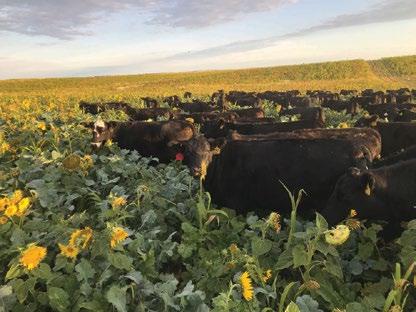
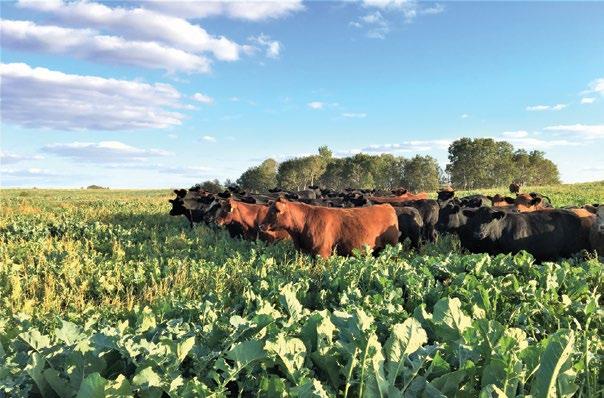
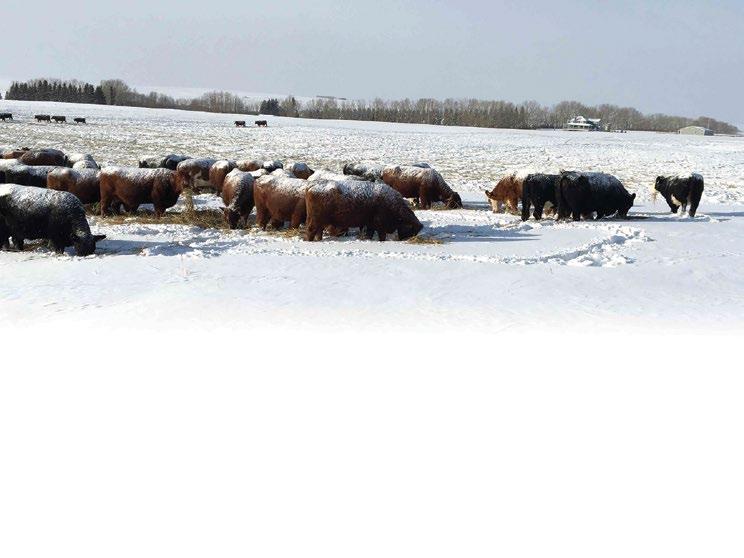
StockTalk Q&A for Cattle Country is brought to you by Manitoba Agriculture. We encourage you to email your questions to our department’s forage and livestock team, who have a combined 175 years of agronomy experience. We are here to help make your cattle operation successful. Contact us today.
Shawn Cabak Portage 204-239-3403 Shawn.Cabak@gov.mb.ca
Pam Iwanchysko Dauphin 204-648-3965 Pamela.Iwanchysko@gov.mb.ca

Elizabeth Nernberg Roblin 204-247-0087 Elizabeth.Nernberg@gov.mb.ca
Juanita Kopp Beausejour 204-825-4302 Juanita.Kopp@gov.mb.ca
4 CATTLE COUNTRY June 2022 www.mbbeef.ca
Graeme Finn, Union Forage 403-312-2240 Amber McNish, Union Forage 204-264-0609 Jonathan Bouw, Edie Creek Angus 204-471-4696 Jason Bednarek, 2B Land & Cattle 204-768-0184 Ben Fox, Fox Technologies 204/638/4181 / 204-647-5060 Ken Van Driesten, Nutrisource/Dairytech/Bullseye 587-727-0433 Michael Mott, Michael Mott Livestock 204-861-0319 Joey Bootsman, Bootsman Ag Enterprises 204-720-8386 Darren Keown, 3K Holdings 204-937-7333 Scott & Darryl Perkin, Perkin Seed & Soil Company 204-534-8137 YEAR ROU N D Forage and Grazing PERENNIAL FORAGES • ANNUAL COVER CROP FORAGES • DROUGHT GRAZING FORAGES Toll Free: 1-877-COW-CHOW WWW.UNIONFORAGE.COM GRAZE YEAR ROUND Perennial Forages | Annual Forages High Performance Alfalfa | Hybrid Fall Rye
Conservation Trust Funding Helps Sustainability of Prairie Ecosystems in Manitoba’s Community Pastures
BY: WAYNE HILDEBRAND
Manitoba Conservation Trust program funding has granted over one million dollars to the Association of Manitoba Community Pastures (AMCP) to help maintain prairie grasslands and biodiversity in Manitoba’s Community Pastures.

“The Manitoba Conservation Trust was pleased to partner with AMCP,” said Stephen Carlyle, Chief Executive Officer for Manitoba Habitat Heritage Corporation (MHHC). “The Trust funding supports range management projects to provide healthy grazing land for local beef producers, as well as to protect and sustain natural prairie ecosystems.”
AMCP operates 19 community pastures, totalling over 300,000 acres of rangelands across four ecoregions in Manitoba. “Conservation Trust funding helped immensely to support grassland habitat diversity and rangeland sustainability in the community pastures,” said AMCP Board Chair Greg Genik. “The community pastures provide essential species-at-risk habitat across the province. The recent Trust announcement of $400,000 for 2022 builds on three years of successful project work and is integral to promoting strong habitat stewardship.”
Trust-funded activities in community pastures are geared to projects that improve rotational grazing systems and livestock distribution. Projects include new water sources, cattle crossings, brush management controls, and new cross-fencing.
“Well managed grazing lands deliver a number of benefits including good forage production, resiliency during drought, improved habitat for species at risk, improved biodiversity, healthy soils, and good water quality,” said Genik. “
“The Association of Manitoba Community Pastures provides grazing services to over 43,000 head of livestock annually,” said Barry Ross, AMCP General Manager. “The grazing lands also support some of the largest tracts of remaining mixed and tall grass prairie


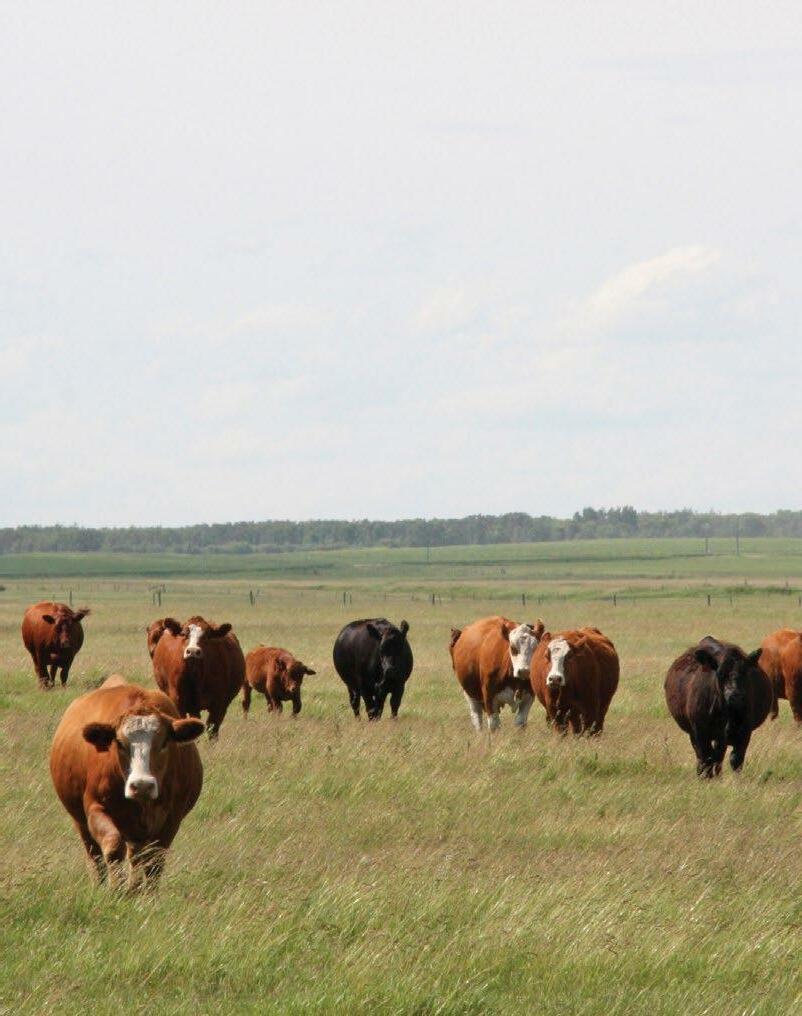

ecosystems in the province.”
Prairie is one of the most endangered habitats in Canada.
“There is less than one per cent of the original tallgrass prairie left in Manitoba and less than eighteen per cent of the original mixed grass prairie,” said Rachel Whidden, Project Manager, AMCP. “As a result of habitat loss, research shows grassland dependent wildlife species have experienced overall population declines by 44 per cent.”
“Last year 14,000 acres of community pasture rangelands were enhanced through the support of Conservation Trust funding,” Whidden said. “In 2022, the AMCP has projected another 20,000 acres
of pasture rangelands will benefit from Trust-program investments.”
AMCP’s community pastures are located throughout Manitoba: Alonsa, Bield, Birch River, Cote-San Clara, Ellice-Archie, Ethelbert, Gardenton, Pansy, Langford, Lenswood, Libau, McCreary, Mulvihill, Narcisse, Spy Hill-Ellice, Sylvan Dale, Turtle Mountain and Wallace.

The Conservation Trust Fund is held by The Winnipeg Foundation and revenues are managed by MHHC.
For information contact Meghan Thomson, Trust Manager, Manitoba Habitat Heritage Corporation at email: mthomson@mhhc.mb.ca

5 CATTLE COUNTRY June 2022
Do not miss a fun filled weekend featuring National YCSA show Canadian Simmental AGM Round Table Sessions a Keynote Speaker Friends of the Canadian Simmental Foundation Auction Matao the Hypnotist and tours around the Portage La Prairie area! join us for the congratulations - WATCH OUR WEBSITE FOR MORE INFORMATIONMSA SUMMER SHOW : JUNE 26 - TREHERNE, MB CSA AGM & YCSA SHOW : JULY 21-24 - PORTAGE, MB to the Manitoba Simmental Association 2021 Scholarship Recipients CINDY JACK PORTAGE LA PRAIRIE, MB Each deserving recipient will receive a scholarship in the amount of $1000.00 to help with their secondary education costs. canadian SIMMENTAL Association ba Ju July 21-24 President: Melissa McRae 204-573-9903 Secretary: Laurelly Beswitherick 204-637-2046 CANADIAN SIMMENTAL AGM & YCSA SHOW JULY 21-24 - PORTAGE, MB Keystone livestock specializing in livestock insurance for over 45 years LIVESTOCK INSURANCE Lois McRae & Joyce Gordon RR 1 Box 57 Brandon, Manitoba R7A 5Y1 h: 204-728-3058 c: 204-573-5192 f: 204-727-7744 marmacfarms1@gmail.com SERVICES Preference will be given to those students pursuing a field of study related to agriculture or to those acquiring a skilled trade or pursuing a career that would be beneficial to the rural economy. The completed application, supporting documents, references, required essay or video, etc. must be submitted to MBP by 4:30 p.m. Friday, November 4, 2022.
Pasture riders in corral. (Photo credit: Megan Desjardins)
Live or Online? The Positives and
BY: ANGELA LOVELL
A lot has changed since Amy Bonchuk first got into marketing the Simmental bulls from her family farm back in the mid-90s, when she’d have to drive to Brandon with rolls of film to be developed and hope she had a good image she could submit for the sale flyers.
In today’s digital era, taking images of the cattle is the fast, easy part of the process; it’s the preparation of the animals that now takes way more time.
“Back then, we just tried to get a decent picture,” Bonchuk says. “Photography today is much more about getting the animals to show their best selves. We spend hours getting them physically presented in the picture pen, with lots of prep before pictures with hair grooming that includes products, labour, and tools like clippers and combs. There is a lot of development on the feed side of things as well to make sure they look their absolute best at that moment in time. It’s definitely a 180 from when we started in the ‘90s as far as what that animal needs to look like in pictures.”
Bonchuk, who owns AJB Livestock at Rossburn, has decided to go completely virtual with her sales. She says there are pros and cons.

“Online sales allow smaller producers an opportunity to market their cattle in their own sale, under their own expectations,” she says. “They can manage the narrative and are in charge of their own success or failure.”
It’s also safer because it eliminates having to haul cattle to an auction mart. “Nobody gets hurt, and you’ve eliminated any risk of disease, or injury, and it’s cost effective because there’s fuel costs to haul them,” Bonchuk says.
She also knows that cattle always look their best in their own environment.
The flip side of that, though, as has become evident throughout the COVID era, when virtual sales were the only alternative, is that there are now huge numbers of online sales flooding the market and creating more competition.
“Two years ago, there were only a few, so it was easy to find, but now there must be easily a hundred sales on the Farmgate platform I use,” Bonchuk says. “So, it’s really expanded.”
Videos becoming an industry standard
Images are all important because the perfect photo is what first draws people in, but it’s increasingly videos that actually sell the cattle, Bonchuk adds.
“In the last 10 years, videos have become integral, so you really don’t see a sale without videos anymore,” she says. “It is part of the marketing package that if you’re going to sell cattle there’s probably going to have to be videos. The same way I speak to the evolution of photographs, somewhere about that midpoint as we went digital, is kind of when Photoshop came along and the same way a glossy magazine cover has evolved with hu-
man magazines, so has cattle magazines. So, Photoshop has allowed some pretty exciting design changes as far as how we can market and present cattle as well.”
Rendezvous Farms near Ste. Rose, Manitoba is a fourth-generation family farm that has been producing seed stock since 1944. David Maguet and his brother were born into this established business that was already well known throughout Canada, and are following in the family tradition of producing high quality Simmental stock.
The farm had always held highly successful live auctions at the Ste. Rose Auction Mart a few miles away, with often more than 350 people attending. Those days may be a thing of the past, but despite that the Maguets still continue to host sales and so moved to a sort of hybrid live/video model of sales that are now held at their farm site.
“A few years ago, we had built a large farm shop and so we decided, as we are still believers in having a live sale, that although we had to offer internet bidding, we would still try to have a live sale in some form,” Maguet says.
It’s a lot less stress on the cattle and the people as well because it’s a more relaxed atmosphere for the sale. When you run them through the ring, you need a fairly large crew to make sure that they come in and out and are not rushed and don’t get worked up, so it saves a lot of manpower as well doing it that way.”
The process doesn’t change much
The role of buyers and traditional advertising and marketing practices hasn’t really changed that much, says By.
Buyers still like to flip through the physical, printed catalogues as a starting point, but because they also now have the option to view the same catalogue, and watch videos of the animals online, they have more opportunities to analyze the animal. But often they still want the expertise and experience that comes with boots on the ground and eyes on the actual animal before they purchase.
“If they’re not going to make it to the sale that’s where we get the calls saying can you check out the feet, can you look at this animal for me in a sale, so that
In 2021, they had their first video/live sale at the farm and were surprised at how offering this hybrid model increased their audience.
“We had around 75 to 90 people that were present, but online we had over 1,000 viewers watching the sale,” Maguet says. “It was a resounding success and we did the same thing again this year and had a larger crowd. I think a lot of farmers have more on their plate, and have become comfortable with online buying whether it’s tractors or bulls or anything.”
More and more breeders are interested in hosting a video sale at their own farm, says Helge By, of By Livestock, that offers a full professional sales management service, including production of the Charolais Banner magazine since 1981, as well as order buying of purebred and commercial animals.
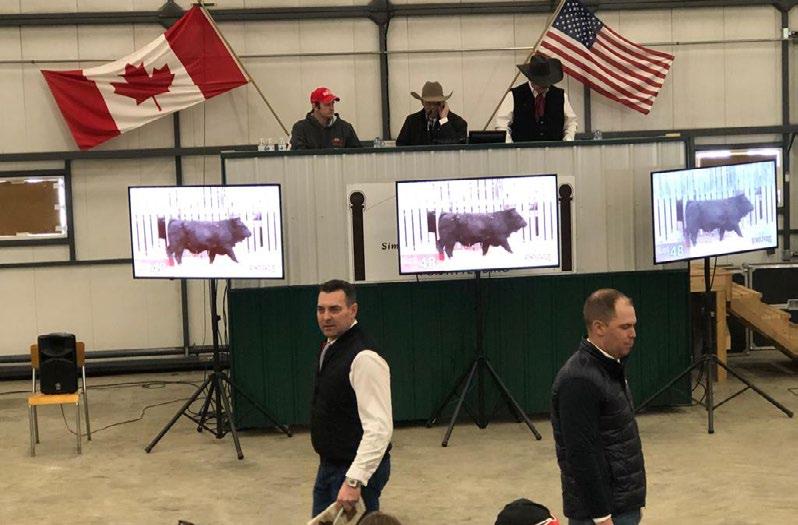
“We have gone to more video sales where the cattle are just outside the door, but you don’t run them through the ring, we just use the videos,” By says. “They are becoming popular for a few reasons: you don’t need a big facility, they can use their heated shops and we just need to set up a couple of TVs, an auction block and chairs.
hasn’t changed from 40 years ago, it’s just they’ve done a lot more research before they call us,” By says. “We still go through the cattle that we’re helping market and look at them all. We still have guys that phone and say, ‘Here’s what I’m looking for, give me a call when you find them.’ We always have lists of people that are looking for certain things, so we’re scouring the bullpens trying to find what people are looking for and trying to match the seller to the buyer.”
So, although sales are becoming more virtual, and visual, the written data about bloodlines and performance in the catalogues, whether online or printed, are still important to buyers, and the descriptions can range from the flowery to the bare bones, but it’s still all a part of the sale package.
“I think each producer has kind of their sweet spot. Just like anything else, there are a million different ways to do it, some descriptions are in basic, point form, some guys have no write-ups, just the pedigree, and I find myself somewhere in the middle,” Bonchuk says. “Some producers just list the weights or performance data, and it’s concise and minimalistic.”
6 CATTLE COUNTRY June 2022 www.mbbeef.ca
Amy Bonchuk, along with her husband, operate AJB Livestock, a Simmental and Gelbvieh purebred operation with 130 breeding females near Rossburn. (Photo credit: Amy Bonchuk)
David Maguet (red hat on the block), Auctioneer Chris Poley in the middle, to his left Jay Good (Transcon, block man) Ring Men: Shane Michelson (white shirt) Ben Wright, both of T Bar C. (Photo credit: David Maguet)
““In the last 10 years, videos have become without videos anymore,” she says. “It if you’re going to sell cattle there’s probably
and Negatives of Today’s Bull Sales
Adding words also adds cost to the pages, so increasingly producers are looking at where their money is best spent, and for many that’s in ensuring good visuals, both pictures and videos.
Lack of communication a downside Bonchuk is sometimes surprised by how little buyers seem to want to know about the animals they are buying.
“I still get baffled by how much money someone will spend on something they haven’t even asked the owner about,” she says. “It terrifies me as a producer because I don’t want to send something that is short of their expectations. Expectations can be a very sharp knife. If you come in under expectation then there’s this discussion about value. And if you come in over, they’re like why was he so cheap? Speaking to my own experience, I want to find that middle ground where producers are happy with the product, and they feel they have gotten fair value.”
“A bull in the wrong yard is a nightmare,” Bonchuk says. “A bull in the right environment is the best-case
industry that makes people comfortable buying animals sight unseen or with little contact with the breeder, and he hopes that doesn’t change.
“Over the years in both the magazine and sales management, the amount of bad debt or not collected money that we’ve had is minuscule, and we’re dealing with people that we’ve never met or maybe talked to but it’s still kind of the code of the cowboy that you stand for what you do,” By says. “It’s a small business and word gets around pretty quickly if someone is dishonest or might not be someone you want to extend credit to.”
What do buyers expect from today’s auctions?
So, as much as the technology has changed a lot, have buyers expectations changed along with it? What are buyers looking for today compared to 20 or 30 years ago? And how do marketers anticipate their needs?
“Predicting what buyers are looking for is tricky,” Bonchuk admits. “I think a lot of breeders focus on what they do best or what they’ve developed their cow herd for. Specifically, for us, we have committed to handsfree calving, and a big push of mine has been to create a
ly,” she says. “If you create an honest product that works for you, it’s easier to market.”
Buyer beware?
With the increase in the number of people hosting online sales, there is also an element of buyer beware because, as we have come to know in the virtual world things are not always what they seem.
“I think buyer beware remains, and that integrity and authenticity, for the most part, you’ll see in their marketing,” Bonchuk says. “We get those catalogues where every detail is gorgeous, the bulls look stunning and there are pages of females that are all so perfect. Watching the videos, it will become evident if they have taken some liberties with how they chose to edit the images digitally. The great part about a video is that’s where the honesty lies. I think as breeders evolve, they find their sweet spot where they are most comfortable presenting their cattle and how they choose to market them.”
Currently there are no best practices or standards when it comes to presenting digital images of animals for sale, and it would likely be hard to enforce any.
Live auctions are not going away


Not everyone wants to buy or sell online; there both sellers and buyers who prefer the atmosphere of a traditional live sale.
scenario anyone could ever ask for and as a person who takes a lot of pride in the care of my animals, I always want to make sure the cattle are going into the best situation for that specific animal.”
With more competition as a result of many more online sales, buyers can also participate from much further distances than in the past, which means animals are also being shipped farther away, which concerns Maguet in some cases.
“Animals are going further which is fine but it’s always nicer if they could stay closer to home because typically, they’re bred for that environment, but that said, everything trades a lot further than in the past.”
While By is also concerned about the number of animals purchased online from ever further away, he believes it’s the integrity and trust that exists in the

cow herd that thrives in our environment. We feed wild hay; that’s our management system and we’ve made it work for us. When we make our breeding choices, it’s always based on that hands-free calving system, so we want cows that are good moms and have good udders. We don’t neglect our weaning weights but my first concern is always hands-free calving, getting babies out and eliminating stress at calving. Your own experience dictates where you go as a breeder.”
There are a limitless number of variables that go into selecting the animals for the herd, as any cattle producer knows, and as someone who sells breeding stock, Bonchuk says she always strives to create an animal that she is proud of and wouldn’t hesitate to use on her own farm.
“Then the marketing falls into place more natural-






Applications for Consideration for The Environmental Stewardship Award Due to MBP by December 9





Manitoba Beef Producers (MBP) is accepting applications until Friday, December 9, 2022 for consideration for the local awarding of The Environmental Stewardship Award (TESA).
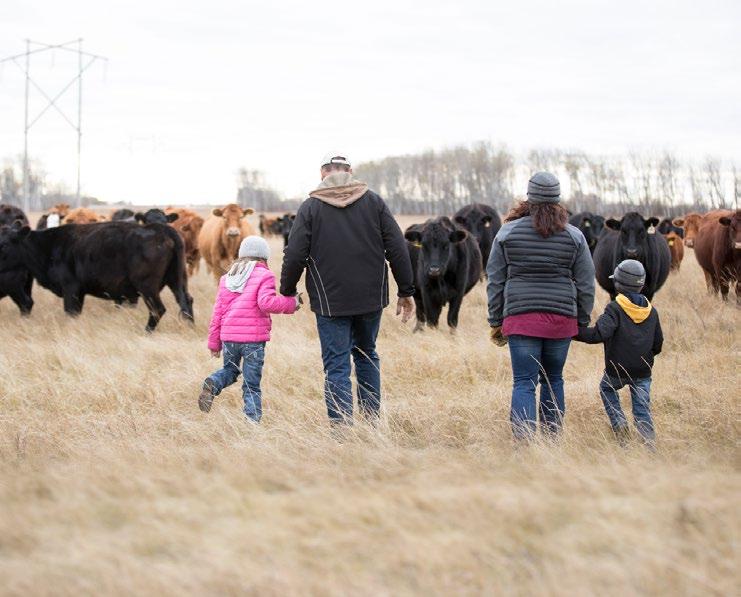
Since 1996, TESA has recognized producers who go above and beyond standard industry conservation practices and set positive examples for other cattle producers and the general public. As stewards of a vast portion of the Canadian landscape, Canada’s beef cattle producers play a significant role in protecting and enhancing the environment. They continuously strive to improve existing stewardship conservation practices to create a sustainable future – always farming for tomorrow.
At the local level, a producer receives provincial recognition for their outstanding environmental contributions. In the case of Manitoba, this occurs in conjunction with MBP’s annual general meeting in February. All provincial award recipients then move forward to compete for national recognition from the Canadian Cattlemen’s Association (CCA). The national TESA recipient is announced during the CCA’s semi-annual meeting at the Canadian Beef Industry Conference.
Each nominee exemplifies significant innovation and attention to a wide range of environmental stewardship aspects in their farm operation. Such innovations extend beneficially to areas far beyond their land, including water, wildlife and air.
How to Nominate
All beef cattle operations in Canada are eligible to apply for TESA. Beef producers interested in TESA can apply by filling out the application form found on the MBP website ‒ www.mbbeef.ca.
Producers can either nominate themselves, or be nominated by another individual or an organization. All methods are equally encouraged.
The completed application form, along with all supporting documentation (such as letters of support, photos and/or videos), is to be submitted to Manitoba Beef Producers by email to info@mbbeef.ca no later than 4:30 p.m. on Friday, December 9, 2022. If you have questions, please contact the MBP office at 204-772-4542.
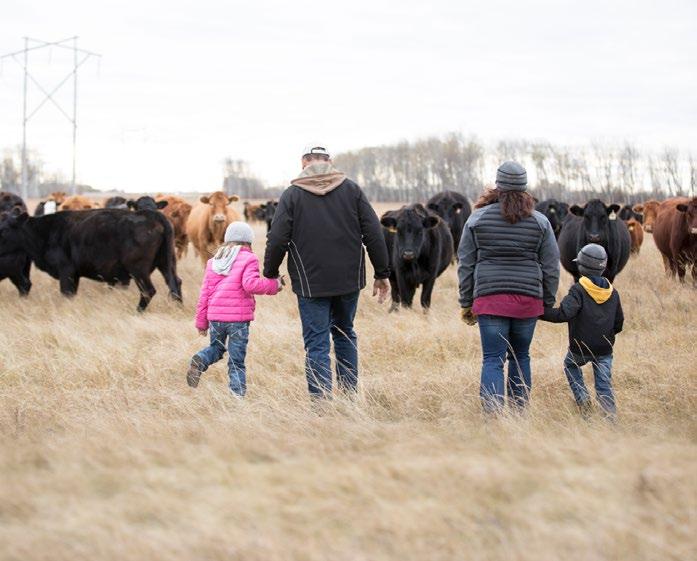
“With the more traditional sales, there’s an electricity when it goes right. When that animal is in the ring, there’s a magnetism to a great animal that draws the crowd forward in unison with your auction staff, and whoever’s in the ring, all these variables in play that kind of pull people up off their seats and they take notice,” Bonchuk says. “With an online sale, you’ve got hours to decide, whether to bid, rather than 30 seconds with a live sale. It’s a completely different presentation.”
Maguet doesn’t believe that timed online auctions work as well for cattle as they do for equipment sales, because buying cows and bulls is often a more impulsive, and personal experience.
“When it comes to equipment like a tractor, as a rule farmers have a pretty good feel for what that piece of machinery should be worth. But with an animal, especially a purebred animal, it all depends on who falls in love with that animal that day,’ Maguet says. “I think that seeing them visually is an asset and if there are too many animals in a timed sale, people may check out or lose interest. The captivation isn’t there like it is with a live auction when you’ve got an auctioneer, and your heart starts beating a little faster when you want to buy something.”
Committment to the land, water, air, and wildlife is a prerequisite to raising healthy cattle. Sustainability is not a buzzword... it's a way of life.
Committment to the land, water, air, and wildlife is a prerequisite to raising healthy cattle. Sustainability is not a buzzword... it's a way of life.
7 CATTLE COUNTRY June 2022 www.mbbeef.ca
Loveridge Photo credit: Jenna Loveridge
become integral, so you really don’t see a sale is part of the marketing package that probably going to have to be videos.”
Farm Resilience Mentorship Program
BY: DR. MARY-JANE ORR, MBFI GENERAL MANAGER
Manitoba Beef & Forage Initiatives (MBFI) is excited to be partnering with Farmers for Climate Solutions (FCS) in their Farm Resilience Mentorship Program (FaRM) to inspire change from fence post to fence post in Manitoba.
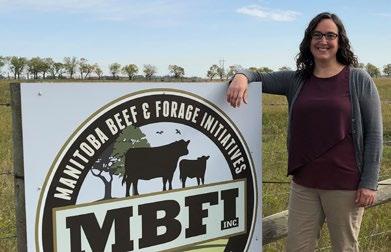
Launched in 2020, FCS is a national coalition of farmer-led and farmer-supporting organizations advancing policies and programing that will support farmers to reduce greenhouse gas emissions and build resilience to the impacts of climate change. From 2021 to 2025, FCS is receiving funding to develop and implement peer-to-peer farmer training programs in Advanced Grazing Systems, Cover Cropping, and Advanced Nitrogen Management across Canada that will scale adoption of on-farm climate-friendly practices across two million acres of farmland in Canada.
The overall FaRM program aims to increase the number of farmers adopting on-farm climate-friendly practices by providing free resources and peer-to-peer learning both online and in person. The program will be starting on a small scale this summer, with the Farmer Training Curriculum and mentor training being finalized in June 2022. The Advanced Grazing Systems curriculum has been developed by Canadian Forage and Grasslands Association with Steve Kenyon of Greener Pastures Ranching. Canadian Organic Growers developed the Cover Cropping curriculum and Climate-Smart Soils developed the Advanced Nitrogen Management resources.
At MBFI, we will be supporting the implementation of the Advanced Grazing Systems program with three mentors representing Westman, Parkland, and Interlake regions. The Cover Cropping and Advanced Nitrogen Management mentorship programs will be implemented through the Manitoba Organic Alliance.
Registering as a participant in one or in all three of the program areas will give each farm access to
Communities of Inquiry, Farmer Mentors to guide your learning and provide helpful input, a management plan to support your on-farm implementation, useful resources and fact sheets, and a network of regional and national contacts. A Community of Inquiry is an online meeting space that fosters learning, knowledge sharing, and support among peers.
The Advanced Grazing Systems program is designed to build understanding of the wide variety of grazing management approaches that support carbon sequestration. The goal of the online learning framework and in-person mentorship is to support successful adoption of practices that improve forage production, profitability, extreme weather resilience (drought and flood), biodiversity, and soil health. The curriculum is comprised of six modules, including Grazing Goals, Grazing Concepts, Grazing Plans, Extended Grazing, Record Keeping, and Margins (Economics of Grazing). The mentors are farmers already well versed in rotational grazing and interested in working with regional farmers to develop their own plans to improve grazing practices.
MBFI will be working with regional mentors Cameron Hodgins (Westman), Ron Moss (Parkland), and Jonathan Bouw (Eastern Manitoba & Interlake) to deliver farmer training sessions covering FaRM curriculum and to tailor mentorship experiences to each mentor’s background and interests.
The mentorship program will complement broader MBFI extension activities (Grazing Workshop Series: see Save the Dates below) with independent study and additional meetings. As a participant, farmers can expect a time commitment of five hours of class time that may be in person or online, two to four hours of independent review of resources, optional follow-up support with Farmer Mentors, and unlimited access to online learning platform including community clubs for the year.
The FaRM program is a separate program from announcements for the On-Farm Climate Action Fund
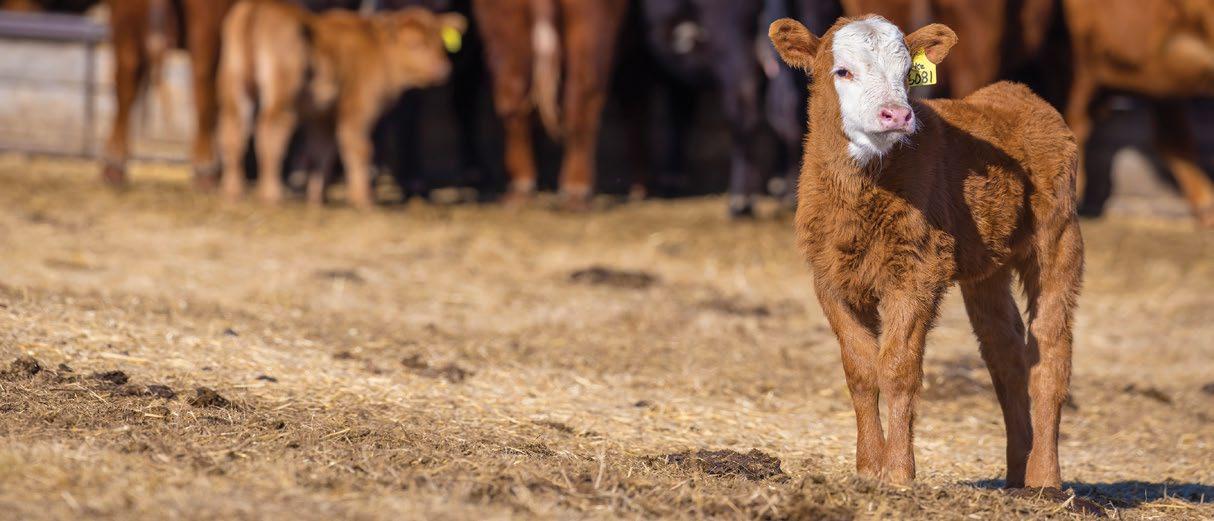
(OFCAF).
For
•
•
•
8 CATTLE COUNTRY June 2022 www.mbbeef.ca
FaRM is solely focused on training to support successful adoption of practices, whereas OFCAF, administered by the Manitoba Association of Watersheds in Manitoba, will provide cost sharing programs in the same areas of rotational grazing, cover crops, and nutrient management.
Livestock Price Insurance (LPI) is an insurance program that provides price risk management to beef producers when market prices are volatile.
more information or to start a conversation please email MBFI at information@mbfi.ca or call 204-761-3300.
Get forward price coverage for calves you plan to market between September and February 2023 with the LPI – Calf program.
Coverage options are available to choose from every Tuesday, Wednesday, and Thursday from 3 p.m. - 12 a.m. (CT).
The last day to purchase LPI – Calf policies is June 9 Visit LPI.ca or phone 1-844-782-5747 for program details. INSURE your CALVES BEFORE JUNE 9. Livestock Price Insurance (LPI) Summer 2022 ad Size: 9.63”wide x 7.75”deep Half page
UPCOMING FIELD DAYS SAVE THE DATES June 1, 2022; MBFI Brookdale Farm Electric fencing, solar power, and pasture water pipelines July 6, 2022; MBFI First Street Pasture & Brookdale Farm –Pasture and soil health assessments Aug 3, 2022; MBFI Brookdale Farm Annual forages and alternative feed rations
MBFI General Manager Dr. Mary-Jane Orr (Photo credit: Mary-Jane Orr)
Manitoba Beef Producers Sought for Study on Farmer Mental Health in the Canadian Beef Industry
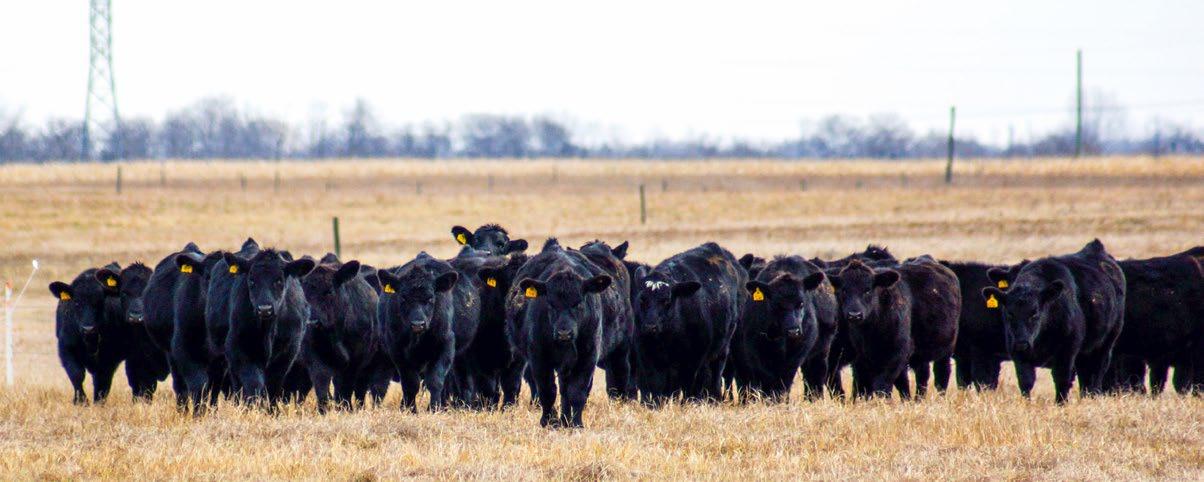 BY PETER FROHLICH, NATIONAL CENTRE FOR LIVESTOCK AND THE ENVIRONMENT (NCLE), UNIVERSITY OF MANITOBA
BY PETER FROHLICH, NATIONAL CENTRE FOR LIVESTOCK AND THE ENVIRONMENT (NCLE), UNIVERSITY OF MANITOBA
Weather conditions creating stress for cattle producers
There is no mystery that the past few years have been exceptionally challenging for producers in an already demanding farming environment. During the summer of 2021, parts of southwestern Manitoba and southeastern Saskatchewan were under extreme drought conditions while moderate to severe drought caused havoc in all other areas of the prairies. In winter and spring of this year, the drought conditions seemed to ease due to mass amounts of snow, however the unusual spring brought additional challenges for producers. When it was time for calving season, cattle producers found themselves dealing with previous year’s drought issues in terms of feed availability, plus a challenging calving made difficult by multiple cold and snow events that were followed by excess rainthat saw a drastic increase in calfmortality rates.
Weather is not the only factor creating stress and uncertainty on farms. According to Farm Credit Canada, farmers’ stress can also be a function of finances, volatility in markets, long work hours, uncertain yields, and the well-being of the herd.
Please read on to find out how you can help and be a part of the solution.
Mental health: what do the statistics say?
National data indicates that more than one in five Canadians experience a mental health concern at some point in their lives. Recent Statistics Canada’s Canadian Community Health Survey found that 7% of respondents perceive their mental health as fair or poor. Stress and how we deal with it is a big factor that influences our overall mental health. In addition, a recent study conducted by researchers at the University of Guelph found that Canadian farmers experience higher levels of stress, anxiety, and depression than the average citizen. Research shows that farming is one of the most physically dangerous and mentally stressful occupations worldwide and can result in increased anxiety, stress, depression, post-traumatic stress disorder and others. There is also evidence that livestock producers experience greater rates of stress-related symptoms when compared to crop producers. These studies are important and timely because they generate data that collectively increase awareness of the often-neglected topic of farmer mental health and can help to ensure that the necessary supports are in place.
Government is getting the message
In May 2019, the Canadian Government tabled a Report by the Canadian House of Commons Standing Committee on Agriculture and Agri-Food, entitled “Mental Health: A Priority for Our Farmers” where it highlights that farmer mental health is a key component of agriculture and an emerging area of concern. The
report assesses the challenges and stressors on mental health that farmers face and it evaluates available mental supports for farmers and the limitations of these supports. The report provides potential solutions in the form of 10 recommendations that include efforts such as coordinating of nationwide initiatives, through to the introduction of new resources to help farmers.
University of Manitoba researchers are on board
The research community at the University of Manitoba is keeping the ball rolling. Research needs to dig deeper to identify and learn more about farmer mental health in order to address the issue promptly and effectively and to ensure appropriate resources are in place for farmers to continue to thrive in their work. In early 2021, the University of Manitoba increased research capacity in the area of animal well-being and farmer mental health by adding a key resource to the NCLE group of scientists that will work closely on this topic.
Dr. Meagan King is an Assistant Professor in Animal Physiology and Welfare who has an overall goal to improve the lives of people and animals in agriculture through her research which explores producer well-being, animal health, behaviour, and welfare.
Recently, King and her graduate student were awarded funding through Mitacs, a government and industry funded organization that supports Canadian research and innovation. She will further investigate and address questions focused on farmer mental health in the Canadian beef industry. The project is designed to collect information that will lead to a more comprehensive understanding of farmer mental health, related farm management practices and to explore the relationship of farmer health and animal health.
The project will begin in May 2022 and is expected to conclude in August 2022. Through this collaborative project with beef researchers at U of M, Agriculture and Agri-Food Canada and University of Calgary, King’s work will encompass beef operations in British Columbia, Alberta, Saskatchewan, Manitoba, and Ontario. She also has an upcoming project in 2023 working with dairy farmers in those same five provinces.
How can you help?
King is looking for study participants. As a volunteer, a cattle producer is asked to fill out a 20-minute survey that will aim to quantitatively assess beef farmer mental health including perceived stress, anxiety, depression, resilience, and additional related factors. The survey, developed in collaboration with Heather Watson from Farm Management Canada will also contain questions on demographics, farm management practices, work environment, and responsibilities on the farm. The survey will be open early May and will stay open as late
as August based on the number of responses received. All data collected will remain anonymous.
The survey can be accessed through Kings website at https://meagantmking.wixsite.com/research
The latest research on dairy farms indicates that there is a connection between animal health and the well-being of farmers. King’s research will also explore this relationship but on beef cattle operations with an aim to explore any unknown needs of the industry that could be addressed with resources for farmers or with future research.
To facilitate King’s research, volunteers will be asked to share various herd health records as King’s research will attempt to examine the relationships between cattle health and farmer mental health. Aside from addressing many questions on stressors affecting mental health, King plans to determine if there are barriers to the adoption of best management practices related to farm stress and mental health.
Overall, the goal of the research is to improve our understanding and ability to reduce farmer stress, enhancing the well-being of farmers and animals, their productivity, efficiency, and ultimately profitability. Discussing these challenges and our shared values on animal welfare and sustainability will also enhance public trust and compassion towards farmers. According to King and the research community, to ensure the success and sustainability of animal agriculture we must support the health and well-being of both farmers and cattle.
If you or your family are experiencing stress and require assistance, please see resources below:
• Manitoba Farm, Rural & Northern Support Services (24/7) Toll free: 1-866-367-3276 https://klinic.mb. ca/2018/01/mental-health-farm/
• Farm Credit Canada: https://www.fcc-fac.ca/en/ community/wellness.html
• Rural Health Info Hub: https://www.ruralhealthinfo. org/topics/farmer-mental-health
• Farm Management Canada https://fmc-gac.com/ A new program started March 1 and provides six free sessions per individual!!! https://manitobafarmerwellness.ca/
• Self-help workbooks: https://www.cci.health.wa.gov. au/resources/looking-after-yourself
• Professional services near you: https://cmha.ca/findyour-cmha
• Or you can always talk to your family doctor.
For more information of this project and the opportunity to be part of the research please contact Meagan. King@umanitoba.ca
9 CATTLE COUNTRY June 2022 www.mbbeef.ca
Photo credit: Emma McGeough
Updated Livestock Transport Regulations And What You Need To Know
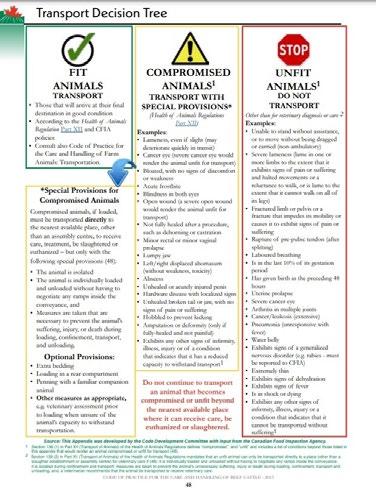
Changes to the Transport of Animals Regulations (Part XII of the Health of Animals Regulations) came into effect in February of 2020 and are being actively enforced.

There are four major changes in the new regulations focusing on:
• categorizing animals fit for transport,
• record keeping for transporters,
• required feed, water and rest times and
• contingency planning.
Categorizing Animals Fit for Transport
It is a legal responsibility of anyone hauling livestock to be able to recognize and place the animals in their care into the three categories before loading them on the trailer for transport:
• fit for the intended transport,
• unfit for transport or
• compromised.
Record Keeping for Transporters
It is important to not only categorize animals, but document them as well, as animals will need to be reassessed along the journey.
Two new documents are required for transport. These documents focus on recording the status of animals before they are loaded, in transport and upon transfer of care. However, one document may be used to serve both purposes as long as all required information is included.
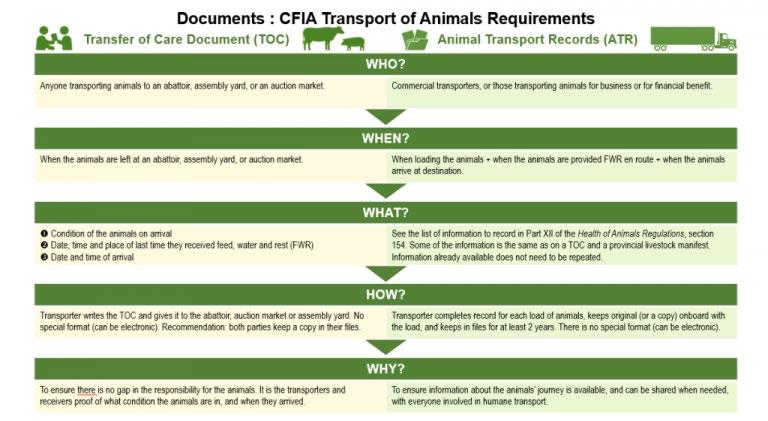
Animal Transport Record – This record must include:
• the shipper’s name and address,
• driver’s name, license and registration,
• trailer floor area and when/where the trailer was last disinfected,
• animal description including number, weight, time of loading, if animals are fit for transport and any special provisions for any compromised animals and
• the last time the animals received feed, water and rest.
This document is to be written and retained by anyone transporting animals in the course of business for a period of two years.
Transfer of Care Record – This document is only needed for auction marts, slaughter facilities or assembly centres and must include the following information:
• date and time of arrival,
• condition of animals and
• date and time of the last feed/water and rest.
This document is to be retained by the receiver for a period of two years. The transfer of care from the transporter to the receiver occurs immediately upon acknowledgement of the shipment and the accompanying Transfer of Care Record.

Required Feed, Water and Rest Times
Changes around maximum feed, water and rest (FWR) intervals are also part of the regulations. The FWR interval requirements depend on the species and class of animals being hauled. Fit and mature (weaned) cattle may be transported for 36 hours between rest periods, with an additional four hours allowed if the destination has been reached. Whereas a load with any young (too young to be fed exclusively hay or grain) or compromised calves must stop every 12 hours. (See definition of fit and compromised animals in the Decision Tree graphic from the Canadian Food Inspection Agency at the beginning of the article.) Additionally, any animal under nine days of age may only have one direct trip of 12 hours and may not go through an auction mart.
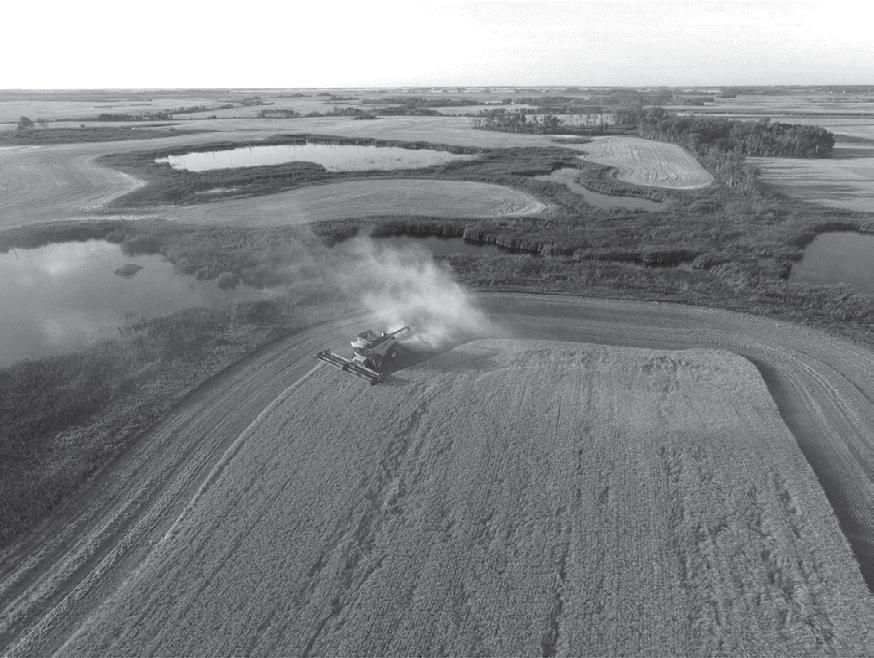
The definition of travel time also changed. In the past, travel time started at loading and ended at unloading. The updated regulations now start the clock at the last time a period of rest including feed and water was initiated and does not end until feed, water and rest are provided at the rest stop or final destination.
Contingency Planning
When transporting an animal in the course of business, contingency planning will need to be considered for every trip. This can be a verbal or written plan and must cover all predictable natural or manmade scenarios that may halt or delay a trip. Planning needs to consider how to provide rest, protection from the elements, feed, water and safety in the event of any unplanned circumstances.
Before heading out on the highway, it is important to know the rules. Demonstrating compliance requires documenting the steps taken to ensure the welfare of the animals in your care and keeping records of any issues. If in doubt, write it down. A smooth trip with no delays is worth the time and effort.
This blog post originally appeared May 19, 2022 on the Beef Cattle Research Council website: https:// www.beefresearch.ca/blog/updated-livestock-transportregulations/
www.mbbeef.ca
10 CATTLE COUNTRY June 2022
MHHCpays landowners to conserve, restore, or enhance wildlife habitat For more information callWes Pankratz
visit
(204)867-0337or
www.mhhc.mb.ca
/ManitobaBeefProducers1 /ManitobaBeef www.mbbeef.ca
We Still Have a Wall of Fed Cattle Ahead of Us
Cattle producers in Manitoba have turned their pairs and grass cattle out to pasture, and the wet spring has given them hope of lush pastures and good hay crops. On the other hand, grain producers are feeling the stress of a late spring and possible changes in their seeding plans. It’s mid-May and the grain prices for new crop grain for fall delivery have not dropped, making it look like the cost of feeding cattle this fall will be comparable to the spring rates of 2022.
The backlog of market ready cattle was supposed to be cleaned up in early June, but all indications are that we still have a wall of fed cattle ahead of us with large numbers predicted for August. The cow price has strengthened with seasonal demand, despite larger than normal deliveries of cows for this time of year. Packers are killing a larger percentage of cows in Canada, driven by healthy profit margins and their ability to control the deliveries of fed cattle to the plant. Fed cattle cash prices in May topped at $2.90 dressed, delivered to Alberta, an improvement over April pricing.
Dry weather conditions and feed shortages in Alberta are seeing larger volumes of cow/calf pairs being offered for sale. Young pairs from reputation ranches are selling between $2,000 and $2,600 per pair. Older pairs are being split if the cows have some weight. The cows are going to the packers, while the young calves are going to the cowboys for roping. If the weather conditions continue, we may see some Alberta pairs coming to Manitoba. It has happened before, and there is a good possibility it could happen again as Manitoba producers try to rebuild their herds.
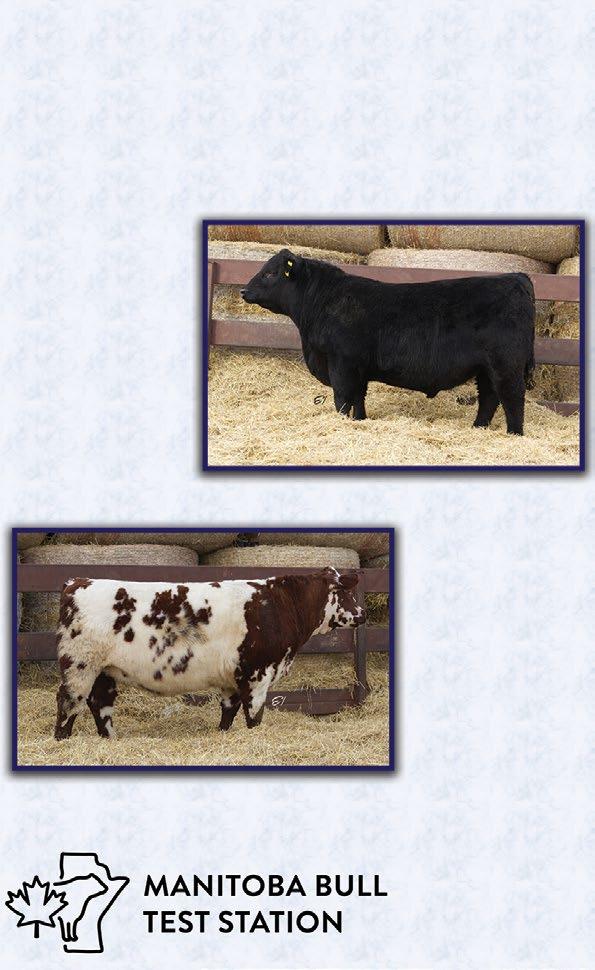
Contract prices for fall delivery yearlings have backed off slightly, however demand is still active as feeders sense a shortage of grass yearlings. The wet pen conditions in the Manitoba backgrounding lots have
RICK WRIGHT The Bottom Line

slowed the rate of gain, which will push back projected delivery times on the confinement cattle. The wet weather and poor gains have the potential to delay the sale of these cattle by 30 to 45 days. This in turn could mean more volume of cattle for sale in July and August.
With the high cost of feed we could see some unusual slides this fall on the feeder cattle. When I started in the cattle marketing business over 40 years ago, the

larger than average cow marketings. Feedlot and packer reports indicate a larger percentage of heifers placed on feed in finishing feedlots and larger percentages of fed heifers being harvested. This points to a shortage of feeder cattle going forward, and the rebuild will probably take three to five years to get back to beef cow numbers comparable to 2020. Drought still plagues many parts of the USA as well as western Canada where the big cow numbers are, and that will delay the rebuild of the beef cow operations.
I personally feel that the feeder calf markets for the fall will be stronger than 2021, despite the high feed costs. As long as we can get a silage crop to background the feeders at the cheaper weight, feeders will buy inventory hoping for a drop in the finishing rations, along with buying time, hoping for a better fed cattle market.
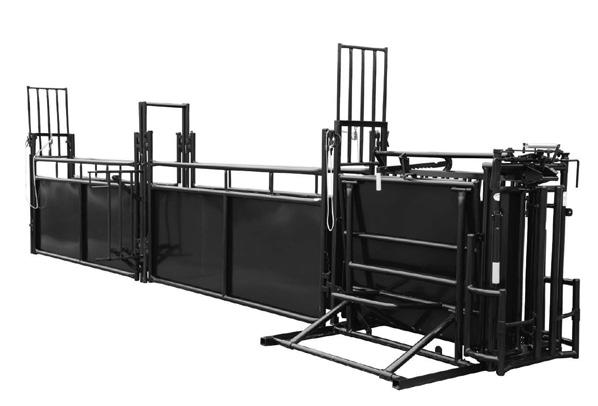
majority of the feeder cattle sold for fewer cents per pound than the finished cattle. The lighter cattle under 600 pounds were sometimes higher, but the rule of thumb was, “You don’t pay more than the ‘fats’”. Some of the buyers think that this fall we may move to lower “slides” on the lighter cattle moving forward. The reason is the higher cost and longer time on feed. I could see that prediction coming true on the feeder cattle between 800 and 1,000 pounds. Those cattle are typically on a finishing ration, which under today’s pricing is a higher costing ration than the backgrounding ration.
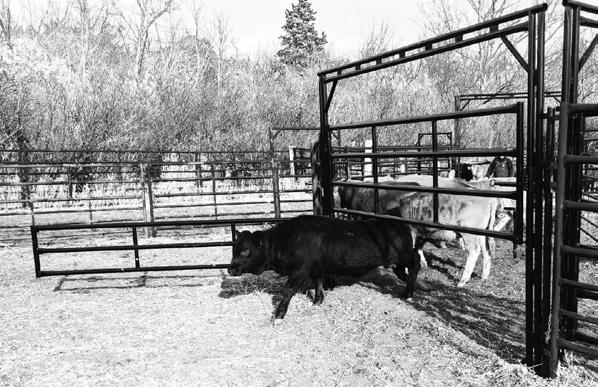
My feeling is that when it comes to the calf market in the fall, the supply and demand formula will kick in and calves will be higher than early predictions, and the slides will be comparable to last fall. Both Canada and USA have reported declining beef cow numbers, and
It is a long time until fall, and Mother Nature will surely have more challenges in store for us before then, but I still think the cattle market will strengthen in the future. We all know that the cattle industry needs some help to remain sustainable.
Congratulations to Tyler Slawinski from the Gladstone Auction Market on a solid 3rd place finish at the Canadian Livestock Auctioneering Championship in Lloydminster. Manitoba had a strong showing at the competition with Allan Munroe, Kyle Howarth, Brad Kehler, Blaine Huston, Robin Hill, Jesse Campbell, Scott Campbell and Brock Taylor representing the province. The winner was Bradley Martens from JVJ in Westlock, Alberta. Jesse Campbell captured the LMAC rookie of the year award.
The MLMA Cattlemen’s Golf Tournament will be held on August 4 at the Killarney Lakeside Golf Course. Contact Rick Wright for information.
Have a great summer, Rick
11 CATTLE COUNTRY June 2022 www.mbbeef.ca
THE OUTST A N D ING BRAND HI-HOG FARM & RANCH EQUIPMENT LTD. Est. 1974 1-800-661-7002 hi-hog.com Available @ Federated Co-op Ag Centres CALF SORTING GATE Reduce Your Handling Time ����
With the high cost of feed we could see some unusual slides this fall on the feeder cattle.
Ukrainian Peroshki: The Unsung Hero
BY: ANNA BORYS, MBP FOOD EXPERT
Growing up, I’ve always just thought it was a fun and novel idea to get together with my aunties, cousins, siblings and other family members for our bi-annual “Perogy Bee” days in which we pinch hundreds of perogies, all while the chins are wagging and the Diet Cokes are flowing. Or every Easter, our tradition of doing Pysanky, a traditional Ukrainian Easter Egg in which you inscribe or create traditional folk patterns through the process of applying beeswax and passing through a variety of coloured dyes. Although I’ve never been to Ukraine nor do I have any remaining family there, like many Manitobans, I have Ukrainian blood in my veins and have never felt as fiercely proud of or close to my
Ukrainian heritage than I have over the last few months.
Although perogies and holopchi are maybe more familiar to most dinner tables, I was excited to expand my Ukrainian cuisine repertoire by making this recipe for “peroshki”, or savoury-stuffed buns. As a kid, one of my least favourite foods was sauerkraut, (my mother can likely attest to this after having made me sit at the dinner table for what seemed like hours until I took a few small mouthfuls before I could leave and go play with my brothers) and seeing as the peroshki that were made for our family gatherings were stuffed with that funky ferment-y stringy slaw, I’d avoid them like the plague. Now that I’m the one at the culinary helm, I’ve decided to go with the meat-filled route. These soft, buttery balls of comfort work great for any occasion: an appetizer, a
meal-on-the-go, or even an afternoon snack.
As a Ukrainian with a deep love for all things dill, I’ve added some freshly chopped dill in with the filling to brighten a normally one-dimensional blend of ground beef and onions. To compliment the bright fresh green flavour, I brought a dark rye note to the bun by adding some toasted caraway seed. Together, they create this wonderful balance to make you take a second, third, or eighth bun. But who’s counting?
I would also like to add, I no longer have quite the aversion to sauerkraut but when given the option, I’ll be reaching for one of these savoury meat buns any day of the week!
Смачного!
Ukrainian Meat Buns (Perishky) Appetizer,

Soft Bread Rolls:
• 4 cups all purpose flour
•1 tsp instant yeast
•1 tsp caraway seed, toasted
•¼ cup sugar
•1 tsp kosher salt
•1 cup milk, warm
•1/3 cup butter
•3 egg yolks
Meat Filling:
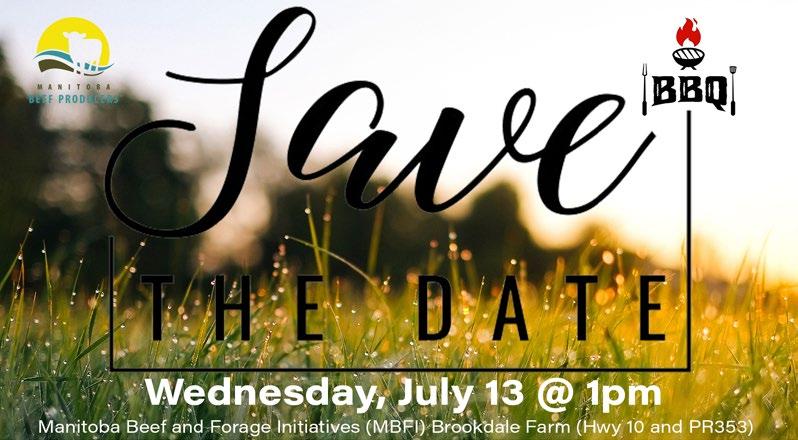
• 1 lb g round chuck
• 1½ tsp kosher salt
• ½ cup onion, finely diced
• 4 cloves garlic, minced
• 1 tbsp dill, finely chopped
• ¼ tsp black pepper, ground
• ¼ cup beef stock, unsalted
• 2 tbsp all purpose flour
• 1 tbsp butter
MEAT FILLING
1. In a large nonstick pan over medium high heat, brown ground chuck, onions, and garlic together until the meat is no longer pink, about 7-8 minutes.
2. Season with salt and pepper.
3. Turn heat down to medium, then add butter. Stir until melted, then add flour. Cook for 2-3 minutes.
4. Slowly add beef stock and stir until mixture has thickened slightly and heated through.
5. Stir in fresh dill and transfer to a container. Place in fridge to chill fully until required.
BUN METHOD
1. In a dry pan, toast the caraway seeds over medium high heat until fragrant, careful not to burn, about 2 minutes. Transfer to a small bowl to cool.
Yields 30 Buns
2. Melt butter and milk together until it reaches about 120°F. Stir to cool down if too hot.
3. Add milk mixture to bowl of a mixer, fitted with dough hook attachment. Add yeast and stir to dissolve.
4. W hisk in egg yolks.
5. In a separate bowl, whisk together flour, sugar, salt, and caraway seeds. Add to wet mixture.
6. With mixer on medium speed, knead dough for approximately 7-8 minutes until a smooth ball forms.
7. Remove from bowl and transfer to a large, greased mixing bowl. Cover and allow dough to rise for about 1-1½ hours until doubled in size.
8. Once dough has risen, punch down and divide into ~30g balls (about 30 portions). Be sure to cover with a towel to prevent drying out while portioning.
9. Grease a 9x13 pan with butter along bottom and sides.
10. With a rolling pin, roll each portion out to form a round of about 4”-4½” in diameter. With the round in the palm of your hand, spoon about 1 tablespoon of meat filling into centre and gather edges. Pinch firmly to create a seam.
11. Place pinched buns, seam side down, in prepared 9x13 pan. Once the pan is filled, cover with a towel, and allow to rise for another 30-60 minutes until they’re about 50% larger.
12. Make an egg wash: Whisk together 1 egg and 1 Tablespoon of water until smooth and there are no streaks of egg white. Brush buns with egg wash and bake at 375°F for 20-25 minutes until golden brown.
13. Remove from oven and immediately generously brush with melted butter.
14. A llow to rest for 15-20 minutes before serving.
12 CATTLE COUNTRY June 2022 www.mbbeef.ca
Photo credit: Anna Borys Missing some of your livestock at fall round-up? Some won’t make it to pasture as newborns become easy prey. Call for info more info on Predator vs. Livestock Interactions • Researched and proven risk mitigation practices •Researched and proven products •Environmental friendly •Safe for wildlife and livestock John - 204.325-2959 Mike – 204.807.0747 ATTENTION CATTLE, SHEEP, & GOAT PRODUCERS
Growing Learning Opportunities With 4-H Manitoba

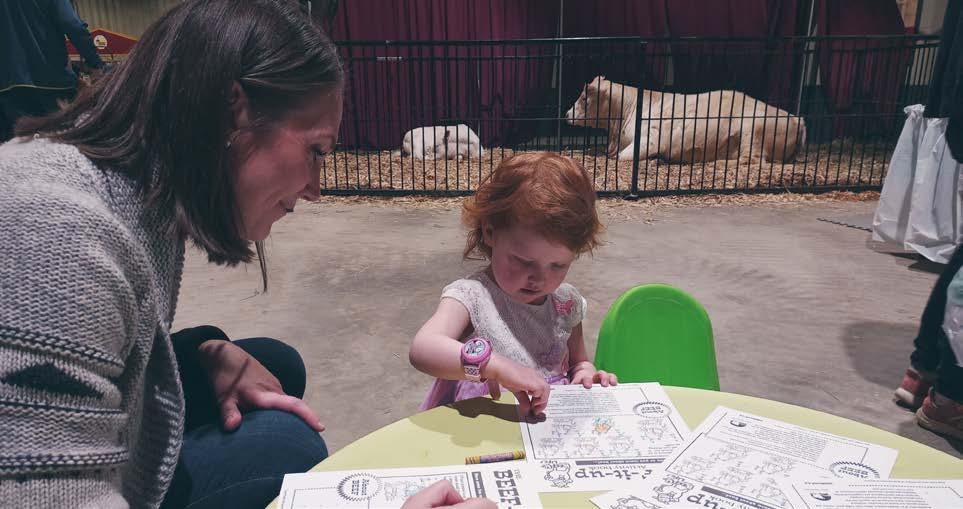 BY: DR. MARY-JANE ORR, MBFI GENERAL MANAGER
BY: DR. MARY-JANE ORR, MBFI GENERAL MANAGER
Manitoba Beef & Forage Initiatives (MBFI) was thrilled to attend 4-H Day at the Royal Manitoba Winter Fair on March 29 for the unveiling of Clover, a life-sized cow and calf model.

Canada achieves BSE negligible risk status
 BY RON FRIESEN
BY RON FRIESEN
It took 18 years, but Canada has finally been declared BSE-free.
The difficult birth (dystocia) simulation model offers numerous educational opportunities for 4-H members, from seeing how a calf is born to technical training in animal husbandry interventions. Clover and her calf are a fantastic teaching tool made possible through sponsorship support from Manitoba Agriculture, CO-OP, MBFI, Manitoba Beef Producers, Manitoba Ag Days, and Crop Connect.
The World Organization for Animal Health (OIE) has recognized Canada as a country with negligible risk of bovine spongiform encephalopathy (BSE), giving it the most preferred status under the OIE’s system for evaluating BSE risk.
That means good news for both traders who export beef and ranchers who produce it, industry officials say.
“The difference will be the ability to access markets that we otherwise weren’t able to because we didn’t have that status,” said Tyler Fulton, Manitoba Beef Producers president.

An action packed 4-H Beef Day will be hosted on May 14th at MBFI demonstrating calving, carcass ultrasound, low-stress handing, and heifer judging class. Knowing when and how to aid in a challenging birth can be the difference of life and death for the calf crop. The risk-free simulation training provided under the guidance of guest speaker veterinarians will build valuable skills for 4-H members. Topics will cover the signs and stages of normal delivery, decision trees on when to intervene, practicing the feel for fetus position, and correct use of chains to assist delivery.
Lowe.
The industry has asked Ottawa to en courage Canada’s trading partners to recog nize the OIE’s ruling and accept Canadian beef without restrictions, he said.
In a May 27 statement, federal Agricul ture Minister Marie-Claude Bibeau said the government will do so.
The announcement in May removes the final trade barrier against Canadian beef exports.
Negligible risk status means importing countries no longer have any grounds for restricting beef from Canada because of BSE.
MBFI is honoured to be working with 4-H Manitoba to house Clover and support learning events at our Brookdale Farm Learning Centre. The model is designed to mimic natural movement and be rugged enough for extensive demonstration and teaching use. The working simulation was developed by Veterinary Simulator Industries (VSI) to support teaching the calving process and provide hands-on learning of how to identify and address issues with fetal position.
Bob Lowe, Canadian Cattlemen’s Association (CCA) president, said some Asian countries still limit Canadian beef imports to cattle under 30 months of age, citing BSE concerns. Now they no longer have reason to do so.
“Assuming that the world is based on science-based trade, there’s no reason to have those restrictions anymore,” said
For the Beef Day, we are excited to have Shari Leachman (Ultrabeef Scanning) demonstrating the application of carcass ultrasound on MBFI’s yearling replacement heifers. Carcass ultrasound provides a non-invasive snapshot of livestock performance and development. Shari will walk through the collection of scanned images of backfat, ribeye area and per cent intramuscular fat for independent measurement at the CUP Lab in Ames, Iowa. Members will have the opportunity to learn about how the data collected is part of an ongoing study evaluating replacement heifer selection.
“Canada will inform those trading partners of Canada’s BSE negligible risk sta tus and will undertake immediate work to support expanded global market access for Canada’s high-quality cattle, beef and beef products,” Bibeau said.
It has been a long and difficult journey for Canadian beef producers since that black day in May 2003 when a case of BSE
Since 50 per cent of beef in Canada is mals they could not sell because the market dustry. CCA estimates direct economic losses between 2003 and 2006 alone ranged between $4.9 billion and $5.5 billion. Some tween 2006 and 2011. More than 2.2 mil lion acres of pasture lands were converted to crops, creating a major negative environmental and ecological impact. Page 2

www.mbbeef.ca PUBLISHED BY MANITOBA BEEF PRODUCERS JULY 2021 POSTMASTER: PLEASE RETURN UNDELIVERABLE COPIES TO: MBP, UNIT 220, 530 CENTURY STREET, WINNIPEG, MB R3H 0Y4 CANADIAN PUBLICATIONS MAIL PRODUCT SALES AGREEMENT NUMBER 40005187 POSTAGE PAID IN WINNIPEG.
Column Page 2 Weatherrelated emergencies Page 4 Reliable summer water Page 12
President's
Laura Plett, of Sawmill Creek Livestock near Stead, enjoys some family time with son Dustin between filming segments on her property for the upcoming Season 32 of Great Tastes of Manitoba. (Photo credit: Donalee Jones)
national borders immediately slammed
BY MANITOBA BEEF PRODUCERS MAY 2022 POSTMASTER PLEASE R ET URN UNDELIVERABLE C OPIE S TO MB P, UNI T 220, 530 CENTU RY S TREE T, W I NNIPE G, M B R3H 0Y4 CANADIAN PUBLIC AT IONS MAIL P RODU CT SAL ES AG REEMEN T NUMBE R 40005187 P OS TA GE P AID IN W INNIPE G.
Page 2
President’s Column
Page 8
Managing through uncertainty
Page 12
MBP’s new food expert
Emilia Johnston, along with her mom, Trisha Dewar, visited the Manitoba Beef Producers’ booth at the Royal Manitoba Winter Fair (RMWF) over spring break. This year’s RMWF was the first since 2019 owing to the COVID-19 pandemic and organizers reported 43,000 guests passed through the gates. (Photo credit: Terra Bergen/MBP)
Page 3
4-H Manitoba’s Clover at the Royal Manitoba Winter Fair (Photo credit: Mary-Jane Orr/MBFI)
An Ounce of Prevention is Worth a Pound of Cure on the Farm
Feed inventory is extremely tight after the long, cold winter required more feed, leaving us all anxious for the new spring grass and growing season. Manitoba Beef Producers advocated for changes to the AgriRecovery Feed Assistance program that led to several meaningful improvements over the last several months.
With the addition of the Extraordinary Expenses section to the program early in the new year, producers who used their own time and equipment received some recognition for their additional efforts to make feed and provide water to their livestock. Before these changes, these producers and activities would not have been eligible for a claim on the program.
Around the same time, the program expanded the list of eligible feed and supplements that provided greater flexibility to producers.

In early March, our governments (both federal and provincial) approved a change to the program application deadline, moving it from March 15 to April 15. This reflected the fact that the exceptional snow and cold led to increased feed requirements that would require more, late season feed purchases.
TYLER FULTON President’s Column
Further to this, they also restructured the program so that it eliminated the producer share and increased the maximum payment. This will help those producers that were both on the lower and high end of need and will not require any additional application or resubmitting of receipts.
All of these changes are welcome and will make a positive difference to Manitoba’s beef producers that were hardest hit by the drought. I thank both Ministers Marie-Claude Bibeau and Derek Johnson and their staff for acknowledging the shortcomings in the program and for taking action to help our producers more fully recover from the devasting effects of the 2021 drought.
With the winter behind us and spring in full swing, I feel fortunate for the huge improvement in the moisture
situation here in Manitoba this year. The exceptional snowfall across most of the province should lead to a much-needed recharge of surface water sources, thereby easing a lot of the concern coming out of last year. On our farm in Birtle, we had dugouts go dry in June of last year, while this year the above average runoff has filled all of our surface water reservoirs.
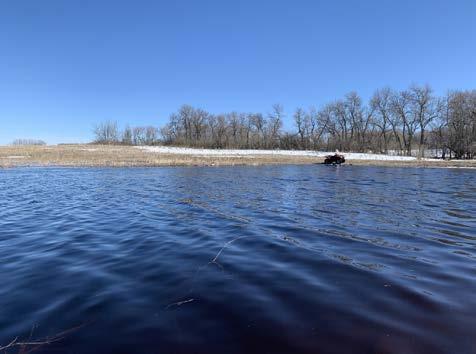
However, the lesson that I have learned from last year’s extreme drought is that an ounce of prevention is worth a pound of cure. Let’s fully utilize the tools that we have available to protect against the negative effects of a changing climate. Access to BMP 503 (Managing Livestock Access to Riparian Areas) under the Ag Action Manitoba program in recent years helped many of us develop water sources for our livestock. Also take in consideration that AgriInsurance offerings like forage and pasture insurance helps to cover the risk to our feed needs, and there is AgriStability for broad risk management that is specific to your farm.

All the best as we head into spring and summer!
Cattle Country reader survey
Cattle Country, a free publication of Manitoba Beef Producers, is the only newspaper in Manitoba written by beef producers, for beef producers. The newspaper has been in print since 1998 and is also available in a digital format.
The newspaper offers the latest industry news, interesting features, producer profiles, and updates on the activities of MBP eight times per year.
Cattle Country is the paper for anyone involved in beef production, industry stakeholders, and partners, as well as rural communities. It is also read by government staff and elected officials.
Manitoba Beef Producers has launched a survey to ensure the newspaper is meeting the needs of the sector and the readership. All responses will be kept confidential and used by MBP staff to guide decision making with the newspaper.
To access the survey, please input the following URL into your browser: https://www.surveymonkey.com/r/J3W99VM or follow these steps:
Hold your smartphone or tablet over the QR Code so that it’s clearly visible within your smartphone’s screen. Two things can happen when you correctly hold your smartphone over a QR Code.
1. The phone automatically scans the code.
2. On some readers, you have to press a button to snap a picture, not unlike the button on your smartphone camera. If necessary, press the button.
Presto! Your smartphone reads the code and navigates to the intended destination, which doesn’t happen instantly. It may take a few seconds on most devices.
2 CATTLE COUNTRY May 2022 www.mbbeef.ca
DISTRIC T 13 MARY PAZIUK Dauphin, Ethelbert, Gilbert Plains, Grandview, Roblin and Mossey River COMMUNICATIONS AND MARKETING LEAD David Hultin O F FIC E A SS I S TA N T Jennifer Patryluk D ES IGNE D B Y Print Studio One C AT T L E CO U N TR Y E D I TO R David Hultin LIVESTOCK PREDATION PRE VENTION PROJEC T COORDINATOR Ray Bittner FINANC E Deb Walger DISTRIC T 14 VACANT Minitonas-Bowsman, Mountain, and Swan Valley West MA NI TOB A BE E F PROD U C E R S Ph: 1-800-772-0458 Un i t 220, 530 Ce n t u r y S t ree t Wi nn ipe g, MB R 3H 0Y 4 PH - (204) 772-4542 FX - (204) 774-3264 info@mbbeef ca www.mbbeef ca Carson Callum GEN E RA L M AN AG E R DISTRIC T 1 ALFRED EPP Boissevain-Morton, Brenda-Waskada, Grassland, Deloraine-Winchester, and Two Borders DISTRIC T 2 NANCY HOWATT Argyle, Cartwright-Roblin, KillarneyTurtle Mountain, Lorne, Louise, Pembina, and Prairie Lakes DISTRIC T 3 ANDRE STEPPLER Cartier, Du erin, Grey, MacDonald, Portage la Prairie, Rhineland, Roland, Stanley, Thompson, Montcalm, Morris, and Ritchot DISTRIC T 4 VACANT De Salaberry, Emerson-Franklin, Hanover, La Broquerie, Piney and Stuartburn, Montcalm, Morris, Ritchot, Spring eld, Ste. Anne, Taché, R.M. of Piney and Reynolds DISTRIC T 5 STEVEN MANNS Cornwallis, Elton, Norfolk-Treherne, North Norfolk, Oakland-Wawanesa, Glenboro-South Cypress, and Victoria DISTRIC T 6 MELISSA ATCHISON Pipestone, Riverdale, Sifton, Souris-Glenwood, Wallace-Woodworth, and Whitehead DISTRIC T 7 T YLER FULTON PRESIDENT Ellice-Archie, Hamiota, Prairie-View, Riding Mountain West, Rossburn, Russell-Binscarth, and Yellowhead DISTRIC T 8 MATTHEW ATKINSON 2ND Clanwilliam-Erickson, Glenella-Lansdowne, Harrison-Park, Minto-Odanah, Oakview, North Cypress-Langford, Rosedale, and West Lake-Gladstone DISTRIC T 9 TREVOR SUND Alexander, Brokenhead, East St. Paul, Lac Du Bonnet, Rockwood, Rosser, St. Andrews, St. Clements, St. Francois Xavier, West St. Paul, Whitemouth, Woodlands, LGD of Pinawa, Reynolds, Spring eld, Ste. Anne, and Taché DISTRIC T 10 MIKE DUGUID SECRETARY Armstrong, Bifrost-Riverton, Fisher, and Gimli DISTRIC T 11 ARVID NOTT VEIT Coldwell, Grahamdale, St. Laurent, and West Interlake DISTRIC T 12 MARK GOOD TREASURER Alonsa, Lakeshore, McCreary, and Ste. Rose
C Y AN A LY S T
Maureen Cousins POLI
One of the dugouts at Tyton Farms that reflect the very different moisture situation in much of Manitoba this year versus 2021. (Photo credit: Tyler Fulton)
MBP busy with Advocacy Work, Return of Events like RMWF
Greetings all, I hope your spring has been going well. I know there can be challenges for calving following a drought year due to many factors, but hopefully there have been no major issues on your farm.
I’d like to start my report by welcoming a new team member to MBP’s dedicated staff and contractors. Anna Borys has recently joined us as our new Food Expert. She will be the new face of Great Tastes of Manitoba (GTOM) and assist us with various other consumer-facing events. Anna has extensive knowledge in the food/nutrition space, and will be a welcome addition. Please keep your eye out for Anna on the GTOM set in the coming months and watch for her food columns in upcoming issues of Cattle Country.
I want to thank all members and industry stakeholders for attending our 43rd AGM in February. As I have said, the original goal was to hold it in person. However, the Omicron variant didn’t allow for that. Conditions permitting we plan to hold an industry knowledge transfer event and BBQ on July 13th at Manitoba Beef and Forage Initiatives’ Brookdale site north of Brandon. The intent is to bring many of us back together to share information, to network and to have some good food and laughs. This has been something we have been missing without being able to hold our President’s Banquets in conjunction with in-person AGMs. Stay tuned for further details on this event in the MBP E-Newsletter, Cattle Country and our social media accounts.
The last couple of months since our AGM has been quite busy. Many advocacy efforts have been un-
CARSON CALLUM General Manager’s Column

dertaken by MBP, including ones focused on drought relief and on the environment. I was invited to take part in a multi-commodity roundtable with Member of Parliament Terry Duguid, Parliamentary Secretary to the Minister of Environment and Climate Change. It was a great opportunity to discuss beef’s role in the environment. The main message I left with the group is that beef plays a critical role in climate change mitigation, and we need to support producers in their efforts or we may see continued conversion of grassland habitat to other uses. The federal government has a major focus on tackling climate change, and it’s important to demonstrate the positive role beef plays in areas such as carbon sequestration, flood and drought resiliency, biodiversity and more.
In March, the major event MBP reps attended was the Canadian Cattlemen’s Association (CCA) AGM in the Ottawa. There were lots of informative discussions and meetings. There was a focus on a number of federal files which are of great importance here in Manitoba, such as Business Risk Management programs, animal health issues, and the environment. We have great Manitoba representation on the board of CCA, with Tyler Fulton, Matthew Atkinson, and Mike Duguid representing us there. They are able to raise issues and
solutions to many important files that impact Manitoba. During the week, we attended one of the first in-person events on Parliament Hill in Ottawa since the start of the pandemic, and we were able to engage with many MPs on the importance of beef production to Canada. We also were able to honor the work put in for the cattle industry by Bob Lowe, who has finished his term as CCA president. I thank Bob for the amazing leadership he has provided during a very challenging time in the sector.
MBP was also very excited to be back to the Royal Manitoba Winter Fair for the first time since 2019. Thank you to all that attended and visited us at the booth. Also, thanks to our directors who spent time chatting with the public on beef’s role in a healthy ecosystem. Thanks for the Steppler Family for providing a phenomenal cow/calf pair for attendees to visit at the event. On Tuesday that week Manitoba 4-H Council and Agriculture Minister Derek Johnson unveiled “Clover”, a realistic model cow for training and public trust efforts. MBP helped fund the acquisition of this great learning tool. Minister Johnson even helped birth the model calf, which was awesome to see. It was a great event overall this year, and you could really feel folks were happy to be back.

Speaking of 4-H, I want to thank all the 30+ kids and their families who attended the virtual cooking session MBP helped host. It was very well received by attendees and organizers.
Before I close another GM column, I have a couple of reminders. We are still doing outreach to fill director vacancies in District 4 and District 14. If you know anyone who would like to help advance the sector and work with a great team, please give me a call at the office 204-772-4542.
Also, the due date for AgriRecovery form submissions is May 13th, so please ensure you have all the required documents in order to receive your support payment. MBP thanks both the federal and provincial governments for making recent adjustments to AgriRecovery programs to help provide more assistance to producers impacted by last year’s devastating drought. This is sincerely appreciated.
Have a great rest of your spring, and we look forward to seeing many of you this summer.
Participants
management.
Following the Beef Day, MBFI would be happy to work with all 4-H beef clubs and the public to coordinate site visits and tailor learning experiences in beef cattle production.

3 CATTLE COUNTRY May 2022 www.mbbeef.ca
Carson
Page 1
4-H
Growing Learning Opportunities with
Manitoba
will
Topics will
the
and
to lower stress
livestock
safer
learn and practice the principles of low-stress handling.
cover
causes
ways
on
for a more manageable and
livestock handling experience. Members will also hone their judging skills with yearling replacement heifers and learn about principles of grazing
Upcoming Field Days - Save the Dates
June 1, 2022; MBFI Brookdale Farm – Electric fencing, solar power, and pasture water pipelines
July 6, 2022; MBFI First Street Pasture & Brookdale Farm – Pasture and soil health assessments
Aug. 3, 2022; MBFI Brookdale Farm – Annual forages and alternative feed rations For more information or to start a conversation please email MBFI at information@mbfi.ca or call 204-761-3300.
The difficult birth (dystocia) simulation model offers numerous educational opportunities for
4-H
members. (Photo credit: Mary-Jane Orr/MBFI)
•
•
•
The completed application, supporting documents, references, required essay or video, etc. must be submitted to MBP by 4:30 p.m. Friday, November 4, 2022.
Preference will be given to those students pursuing a field of study related to agriculture or to those acquiring a skilled trade or pursuing a career that would be beneficial to the rural economy.
AgriRecovery Drought Programming Changed to Provide More Support to Producers

(March 30, 2022 Joint Federal/Provincial Government News Release) The governments of Canada and Manitoba are making changes to the AgriRecovery Drought Assistance Program to make it easier for producers to receive funding and to enhance financial compensation, federal Minister of Agriculture and AgriFood Marie-Claude Bibeau and Manitoba Agriculture Minister Derek Johnson announced.
“Manitoba producers are working hard, and our government is committed to ensuring they are fully supported during this difficult time,” said Bibeau. “By making these changes to the AgriRecovery program in the province, we are making it easier for them to access funding that will help them when they need it most.”
Changes include:
• eliminating the “producer share” for applicants to increase payments to each applicant. The “producer share” was set at $50 per head for cattle, bison, elk and horses or $10 per head for sheep and goats;
• reducing the compensation rate and the extraordinary expenses for feed receipts to 70 per cent from 75 per cent, which, when combined with eliminating the “producer share”, will increase funding to all applicants;
• increasing the maximum payment to $270 per head for cattle, bison, elk and horses from $250 per head and from $50 per head for sheep and goats to $54 per head, which will allow producers who have already received the maximum amount to receive an additional payment; and
• adjusting previous claims automatically, so clients do not need to reapply.
“We know producers need some additional support after last year’s drought, and these changes are the best way to accomplish that while staying within the parameters of the AgriRecovery program,” said Johnson. “This will help producers receive additional funding in a timely way so they can get the support they need as soon as possible.”
Johnson also noted that an extension has been put in place for the Livestock Feed and Transportation Drought Assistance program. The program, which covers feed, feed transportation and related extraordinary expenses, will now cover eligible expenses up to April 15. The application deadline has been updated to May 13.
The deadline has been extended due to extreme weather conditions in January and February that have required producers to increase the amount of feed used to maintain the health and welfare of their animals.

Under the drought assistance program, eligible expenditures between June 1, 2021 and April 15, 2022 include feed purchases, rentals of additional crop or pasture acres, temporary fencing for supplemental grazing, hauling water, harvesting extra acres and hauling self-produced feed from distant locations. Eligible animals under the program include breeding animals of beef and dairy cattle, horses raised for pregnant mare urine, sheep, goats, bison and elk. Producers must support a minimum of 10 animals to qualify for assistance.
“Manitoba Beef Producers has had ongoing engagement with the provincial and federal governments about the drought’s adverse effects and how to potentially modify programs to make them more responsive to cattle producers’ needs,” said Tyler Fulton, president, Manitoba Beef Producers. “These latest adjustments will help get more financial assistance to producers who have faced feed and water challenges and we thank governments for listening to the concerns and making these important changes.”
For detailed program information, producers can contact an AG-MASC Service Centre or call toll-free 1-84-GROW-MB-AG (1-844-769-6224). They can also visit www.manitoba.ca/agriculture/canadian-agricultural-partnership/business-risk-management-programs/index.html
Manitobans can stay up to date on the province’s agricultural programs and services by following Manitoba Agriculture on Twitter at https://twitter.com/ MBGovAg

Additional Program Information
AgriRecovery is a disaster relief framework under the Canadian Agricultural Partnership that provides a coordinated process for federal, provincial and territorial governments to respond rapidly when disasters affecting several producers occur.
The Livestock Feed and Transportation Drought Assistance program was developed in consultation with industry to help meet the needs of Manitoba producers experiencing drought conditions. The program helps livestock producers affected by low moisture conditions in 2021 to maintain their breeding herds.
Interested producers will need to complete or provide paperwork such as: an application form; declaration of eligible breeding animals (if first time applying); declaration of extraordinary expenses (if have extraordinary expenses - only submit once); self-haul declaration (if you hauled the feed); invoices; and, proof of payment for purchases.
What’s New
Re: feed purchases and extraordinary expenses – deductible removed and maximum payments increased:
• The producer share or deductible has been eliminated from the payment calculation.
• The maximum per head payments have been increased to $270 per breeding head for beef and dairy cattle, bison, elk and horses (for PMU); and $54 per breeding head for sheep and goats.
• The payment rate is now 70% of eligible expenses with payments capped at the new maximums.
• Producers will see increased payments due to these changes. No producers will see a reduction.
• These changes are retroactive to June 1, 2021 and apply to all applications received.
• For previously submitted claims, the Program Administrator will automatically issue payments triggered by eliminating the producer share and increasing the caps. A cheque and payment letter will be automatically issued without producers needing to submit extra documentation or request that their payments be recalculated.
Extension of Invoice Dates
Invoices dated on or before April 15, 2022 are eligible if the purchase or transportation was to continue maintaining the eligible breeding animals owned on March 15, 2022. This extension will assist producers facing issues with taking delivery of feed ordered before the original March 15th deadline.
Extension of Application Deadline
The application deadline has been extended to May 13, 2022 due to the extension of the eligible dates for invoices. This extension will allow time to obtain proof of payment for the purchases made by April 15, 2022.
Previous Expansion Of Eligible Expenses
Expansion of Eligible Feeds: the list of eligible feeds now includes feed additives and premixes, molasses based products, vitamins, minerals, and oils and fats. The change is retroactive to June 1, 2021. Previous applicants of the program have been sent an email or letter in the mail informing them how they can apply for these expenses.
-Extraordinary Expenses incurred between June 1, 2021 and March 15, 2022 including hauling water, renting extra pasture and cropland, harvesting extra acres for livestock feed, temporary fencing for supplemental grazing, and transporting feed from distant locations. A one time declaration of extraordinary expenses can be submitted over the life of the program.
For more information on AgriRecovery Feed and Transportation Drought Assistance refer to: https:// www.manitoba.ca/agriculture/livestock/agrirecovery-feed-purchase-transport-assistance.html
4 CATTLE COUNTRY May 2022 www.mbbeef.ca
Graeme Finn, Union Forage 403-312-2240 Amber McNish, Union Forage 204-264-0609 Jonathan Bouw, Edie Creek Angus 204-471-4696 Jason Bednarek, 2B Land & Cattle 204-768-0184 Ben Fox, Fox Technologies 204/638/4181 / 204-647-5060 Ken Van Driesten, Nutrisource/Dairytech/Bullseye 587-727-0433 Michael Mott, Michael Mott Livestock 204-861-0319 Joey Bootsman, Bootsman Ag Enterprises 204-720-8386 Darren keown, 3K Holdings 204-937-7333 Scott & Darryl Perkin, Perkin Seed & Soil Company 204-534-8137 YEAR ROUND Forage and Grazing PERENNIAL FORAGES • ANNUAL COVER CROP FORAGES • DROUGHT GRAZING FORAGES Toll Free: 1-877-COW-CHOW WWW.UNIONFORAGE.COM GRAZE YEAR ROUND Perennial Forages | Annual Forages High Performance Alfalfa | Hybrid Fall Rye
Predation Strategies: Mitigate or Control?
Support to Test Risk Mitigation Practices Available in 2022
BY: RAY BITTNER
Raising a calf or lamb from a newborn to becoming a mother takes a lot of effort to accomplish, not only by the dam or ewe, but by the whole farm. Considerable time and resources are used when you take into account other factors like feed supplies, fences, vaccinations, veterinary care, producer labour and more.
Yet all of that work can be lost to your farm in a minute due to a predator’s actions. Is it any wonder that producers feel frustrated and wonder what to do to try to prevent this from happening again?
The question about whether to mitigate or to control for actions by wildlife is a good one. It’s also akin to the chicken and egg conundrum: which do you do first?
First of all let’s define the words:
Mitigate: The process or result of making something less severe, harsh or hostile.




Control: To have power over.
Anyone who has farmed through a situation where wildlife takes your young stock knows that you feel powerless when this starts happening, and even worse when it gets repeated over and over. Farmers’ instinct may be to enact the “let’s roll” mentality and go out a clean up all of the wolves, coyotes, bears, and anything else that could harm their stock. Unfortunately, by the time you act in defence of your property, the damage is already done. Occasionally you can slow down the next wave of losses, but predators are opportunistic and may have moved on and attacked someone else’s livestock before you can get traps and controls in place.
So as it turns out, having control over livestock predators is a difficult task. Most professional trappers agree that a trapping control strategy is a long-term risk management strategy, so long-term in fact, that it is similar to farming and ranching in that you need to work on the lifecycle of the predators, removing some in
winter, removing some in spring, and being ever vigilant during the times when your livestock are most exposed to predator hunger.
In reviewing the previous paragraph you start to see that an effective predator control strategy is actually a risk mitigation strategy in that it is making the potential for problems less likely. A trapper will remove an alpha pair of wolves so the pups don’t become your problem next year.
As a farmer or rancher, it seems every spare moment is accounted for and the time available for predator control is limited to hours you should be sleeping or tending to animal management or feed supply. The use of risk mitigation practices (RMPs) can help toward reducing negative interactions between your livestock and predators. This is where the Livestock Predation Prevention Pilot Project (LPPPP) comes into play.
Administered by Manitoba Beef Producers (MBP), the LPPP is intended to help introduce predation RMPs to Manitoba farms and ranches, and to test their effectiveness. All of these practices are intended to lessen the desire of wildlife to focus on your herd or flock and create possible problems. If you choose to participate you will be required to critique the effectiveness and practicality of the RMPs you use. In return for your input you will be only required to pay for 25% of the cost of the products provided.

There is still time for you to participate in this important pilot project! The following RMPs available for 2022:
Composting pens for deadstock: These pens help reduce potential food sources for predators.
Predator resistant livestock penning: These pens reduce predators’ ability to get to your youngstock or newborns, and helps limit losses and food supply to local predators.
Fladry wire penning: This involves electric fence
with streamers to limit canine predators from moving into your herd.
Foxlights: These small light show devices help distract predators and urge them to move on instead of moving in.
Game cameras: Knowing who your predator is, and what time of day they are stalking your herd can help you mitigate a problem.
Veterinarian assessments and consultations: Having a new set of eyes to review your livestock’s health prior to pasture can be very helpful in keeping livestock out of the food chain of predators.
Cow bells: This RMP option is new for 2022, but has been an option for centuries. Bells on cows can disturb and disrupt wildlife patterns around your livestock.
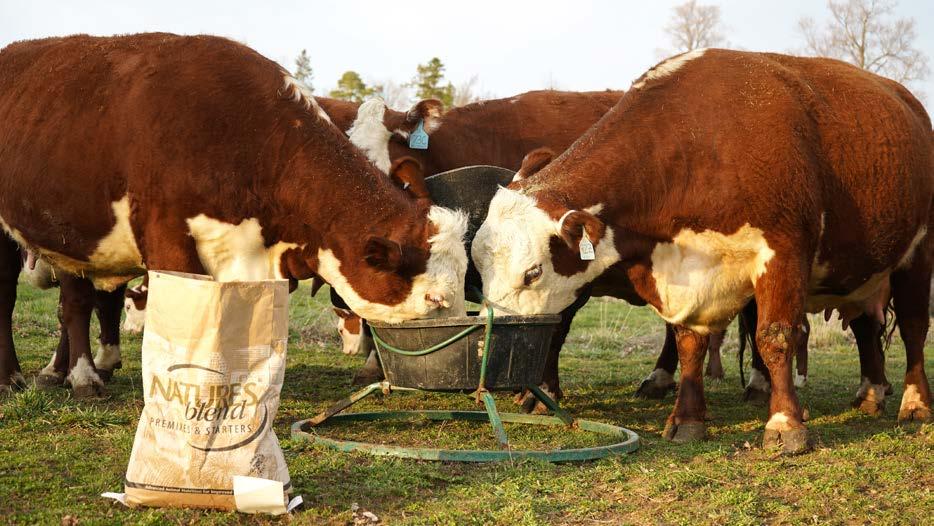
GPS ear tags. This RMP option is new for 2022, making use of new technology unimaginable a few years ago. Insert an ear tag into a cow and find out where she is, and what behaviors might be cues for predator pursuit or harassment of your herd.
For more information or to enquire taking part in the LPPP project please contact Ray Bittner at (204) 7680010 or RBittner@mbbeef.ca
Individual RMP factsheets, photos and diagrams can be found by visiting https://mbbeef.ca/producers/ and clicking on the Livestock Predation Prevention Project icon on the left side.
Project funding is being provided by the Manitoba Agriculture, Manitoba Beef Producers and the Manitoba Sheep Association. Guidance is being provided by members of the Livestock Predation Protection Working Group, which includes the aforementioned entities, as well as the Manitoba Trappers Association, Manitoba Agricultural Services Corporation, and Agriculture and Agri-Food Canada.
5 CATTLE COUNTRY May 2022 www.mbbeef.ca Thank
(204) 232-1620
YOU
BULL? We kept a few extra 2 year old bulls to sell via private treaty out of the yard. Heifer bulls available. info@ediecreekangus.com ediecreekangus.com
you to everyone who showed interest & supported our breeding
ARE
STILL LOOKING FOR A
PURCHASED
Advanced Animal Nutrition for Improved Human Health SKIP
This
Contact your GVF Beef Specialist today or call us directly to learn more.
EDIE
CREEK TITAN 53H 2022 HIGH SELLER
BY KODY AESOPH MILLER, SOUTH DAKOTA We were honoured to see repeat and new customers who purchased our bulls to improve profitability in their cow herd. We have bulls heading to new homes as far away as Ontario, B.C. and South Dakota.
THE LICK!
summer Replace expensive lick tubs with high quality, palatable Nature's Blend Cattle premix. Feed this perfect pasture mineral complete with organic sources of selenium, essential minerals, and vitamins in a free choice mineral feeder and provide the superior nutrition your herd needs.
AB/SK: 1-866-610-5770 MB: 1-866-626-3933 grandvalley.com
Tiktok not for Mental Health Advice
BY: ANGELA LOVELL
Although the stigma round mental health and wellness is weakening, it has not disappeared, and farmers and ranchers are likely among the people least comfortable talking about these issues, but are certainly not immune from mental health stresses and impacts.
And with a new generation of younger farmers taking on – or preparing to take on - the additional pressure and responsibility of the family farm from their parents, there’s more stress being heaped on top of the strains of day-to-day in farming.
These factors could perhaps, in part, explain the growing trend towards people accessing mental health advice through online social media platforms like TikTok.
“The pendulum has selectively swung in the opposite direction away from some of the very stigmatized aspects of psychiatry to things like social media, where there’s almost a celebration of some forms of mental illness,” says Winnipeg-based psychiatrist, Dr. Jessica Kreviazuk, FRCP, an Assistant Professor at the University of Manitoba, Max Rady College of Medicine Department of Psychiatry and who has clinical roles within the adult mental health program of the Winnipeg Regional Health Authority. “What myself and my colleagues have been noticing is people self-diagnosing with all manner of mental health diagnoses, and then coming in and wanting them to be rubber-stamped by us.”

There are apparently a lot of ‘fad’ mental health diagnoses circulating on the internet; everything from ADHD (attention deficit hyperactivity disorder) to autism spectrum diagnosis.
“What’s been interesting to observe is the people, particularly younger people, will come in and say, Tik Tok told me that I have undiagnosed ADHD,” Kreviazuk says. “We do an assessment and find out that some certainly do have it, and treating it makes a world of difference. But then there are other people who clearly don’t have it, and it’s an uphill battle to try to explain to them why they don’t have it. Maybe they have something different, like an anxiety disorder, or maybe they have nothing at all and they’re just facing life in the fast lane where we’ve all become addicted to distractions of all kinds and it’s not ADHD. So, while there’s still strong stigma on one side, on the other side people are seeking a diagnosis where it may be appropriate and where it may not be.”
The danger, of course, is that these kinds of pseudo-experts on social media can cause a lot of harm, especially to people who really do need help and support.
“It cheapens the actual lived experience of someone with mental illness because it trivializes it and says, well everyone has got this particular disorder, so what’s the big deal?” Kreviazuk says. “The big deal is that when you actually live with these disorders in a true sense, it can be impairing, life-altering and in some cases life-destroying. These are not just trivial sorts of diagnoses. For example, a child who was never diagnosed with ADHD, may have struggled markedly through school, and came to think about themselves as incompetent or incapable because of their disability. It really undermines the suffering of people who are truly diagnosed with these things and struggle with them.”
Where do you go for help?
Statistics show that mental health issues are more common than most people realize. As an example, almost one out of eight people at some point in their lifetime in Canada will meet the criteria for a mood disorder. So, where should people go to access good, sound advice and get the help and support they need if they are suffering with their mental health?
“Number one, do not consult Dr. Google,” Kreviazuk says. “There is good information online but most people don’t know how to navigate to it or they don’t know if they’ve landed on good information or poor information. Why should they? They don’t have a medical background. People can’t be blamed for falling into traps of poor information online, so, I think the best advice is, as much as possible; stay off Google if you’re at the point of still trying to figure out what may be going on with you.”
The best place to start, says Kreviazuk is with your own family doctor.
“Connecting with your family doctor is always the best way in, and 50 per cent of what family physicians see is mental health-related,” she says. “Your family doctor is well trained in diagnosing and treating mental health diagnoses so, that’s going to be a reliable starting point.”
But people also need their loved ones, their support networks and their communities to help them overcome mental health struggles. We all know instinctively when something is not quite right with someone we care about, and willfully ignoring the situation won’t make it any better for that person or your own anxiety. Although it’s often difficult to approach a loved one that you think might be having some mental health struggles, if you broach the subject, in many cases, that person will welcome the concern.
“My advice to people is, just be forthright with your questions, don’t dance around, just be straightforward,” Kreviazuk says. “Asking someone, for example, about their mental health if they are struggling is usually received with some relief by the person because they’re desperate in some sense to find someone who’s willing to connect with them, listen, or hear them. They will often be thankful for someone reaching out to them. So, just ask directly, how have you been doing lately? Is there anything I can do to help you out; it looks like you might be having a hard time? Use straightforward, simple language.”
One thing many people are afraid about is interfering in a way that might push someone over the edge, especially if they are suicidal. Kreviazuk emphasizes that is not the case.
“Asking someone if they’re suicidal directly, will not introduce the idea of suicide to a person who is struggling with let’s say depression or severe anxiety,” Kreviazuk says. “It does not make things worse. People are worried about planting suicidal thoughts in their head, but the truth is that it’s not the case; very likely they’ve already thought about it so you’re not going to introduce anything to them that they haven’t already thought about.”
In fact, talking about it, it puts it on the table as something that can be discussed, she adds.
“There’s not going to be judgment about it; it’s just part of the open discussion,” she says. “It can come as a great relief to someone to say oh, someone is willing to be able to tolerate the amount of distress that I’m feeling. So, it’s actually a really powerful intervention. It doesn’t mean you go around asking everyone, are you suicidal? It can be judiciously asked of someone who you truly care about and have their best interests in mind. You’re not going to plant the idea of suicide in their mind, they’ve already thought about it, and you may actually end up saving their life, so it’s a very important thing to be able to talk frankly about.”
Battling our own unconscious bias
And those who are struggling with mental wellness or illness need to be reassured that it’s not a character flaw or some sign of weakness or incompetence.
“That idea may seem outdated but unconscious bias can still be there,” Kreviazuk says. “If I’m a farmer or a rancher and admit that I’ve got depression or I’m super anxious, I am probably worried that just tells people that I’m weak, but that couldn’t be farther from the truth. There’s nothing in any of the literature or research that correlates character weakness or pathology with depression or anxiety, there’s absolutely no basis for that but that’s still something that I think is quite prevalent.”
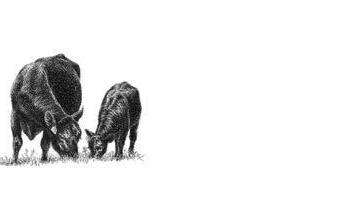
It’s also a truth, that’s worth reminding ourselves, that nobody can cure mental health issues or mental illness in isolation.
“Although time heals a lot of wounds, time and isolation will not necessarily be a helpful recipe for recovering from depression or severe anxiety,” Kreviazuk says. “Being in a community, and being connected to people who care about us and doing things that are helpful for our mental health, that’s how we move forward. A lot of times people will say, if I just ignore this, if I don’t tell anyone I’m sure it will go away or get better, and that kind of avoidance strategy just amplifies the symptoms over time.”
suspicion of treatments, based on horror stories about barbaric treatments of yesteryear.
“Psychiatric treatment has come a long way. Treatments are modern, effective, safe, and commonly prescribed,” Kreviazuk says. “We’ve got good treatments that get people well relatively quickly. Most people who have recovered from depression will tell you the treatments have been very opposite to what’s portrayed in Hollywood, especially from the 60s and 70s. Those kinds of images persist in people’s brains, and people think, if that’s what getting better means then I’ll just stay sick. Well, we’re not there anymore.”
What
More
6 CATTLE COUNTRY May 2022 www.mbbeef.ca
Kreviazuk admits that part of the stigma and fear associated with mental illness still stems from people’s
is TIKTOK?
is a social media app centered around short videos. Many people think of it as a bite-size version of YouTube, with videos ranging between five and 120 seconds in length.
TikTok
hours
video are
on
day.
who
TikTok, 57%
female,
43%
than 160 million
of
watched
TikTok in any given minute of the
Of the more than 884 million people
are active on
are
while
are male.
Keystone livestock specializing in livestock insurance for over 45 years LIVESTOCK INSURANCE Lois McRae & Joyce Gordon RR 1 Box 57 Brandon, Manitoba R7A 5Y1 h: 204-728-3058 c: 204-573-5192 f: 204-727-7744 marmacfarms1@gmail.com SERVICES
The majority of the TikTok audience is Gen Z, with 42% of the audience aged 18 to 24 years old. (Source: https:// blog.hootsuite.com/what-is-tiktok/)
Dr. Jessica Kreviazuk, FRCP (Photo credit: Jessica Kreviazuk)
Grassland Stewardship Program Offers New Opportunities for Cattle Producers
BY: WAYNE HILDEBRAND
Manitoba Beef Producers received funding from Environment and Climate Change Canada (ECCC) to offer the Keep Grazing Program to cattle producers over a three-year period. The focus of the program was to deliver information and incentives to cattle producers about enhancing pastureland, with the goal of improving grass quality and maintaining a healthy habitat for species at risk.
Manitoba Habitat Heritage Corporation (MHHC) was pleased to partner with Manitoba Beef Producers to deliver the program,” said Stephen Carlyle, chief executive officer of Manitoba Habitat Heritage Corporation (MHHC). In total, Manitoba is home to 59 species identified under the federal Species at Risk Act. Many of these species are connected to agricultural landscapes. Key concerns are conversion of grasslands to cropland, and habitat degradation.
“The Keep Grazing program understands that grazed pastures offer tremendous benefits to biodiversity and habitat,” said Carlyle. “Cattle producers in Manitoba are an important part of the solution to protecting wildlife habitat. Ranchers play an integral role in conserving grassland, and grasslands are critical habitat for species at risk. Through production practices, Manitoba cattle producers are making a significant difference to endangered plants and animals. I want to relay our thanks to Manitoba’s cattle producers for your stewardship of grasslands, and protection of species at risk in the province.”
The Keep Grazing Program provided incentives to cattle producers for livestock infrastructure support. Cost-shared incentives and management services were available under a 10-year agreement. Funds were
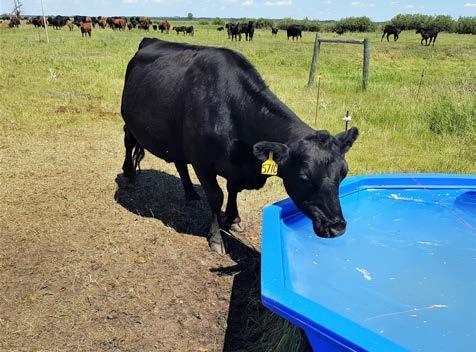
available to participating producers in four targeted grasslands in southwestern Manitoba. Funding was a maximum of $10,000 per quarter section up to a maximum of $50,000 per landowner. Infrastructure incentive funding could be used for fencing, watering systems, shrub control, and establishing new pastures.

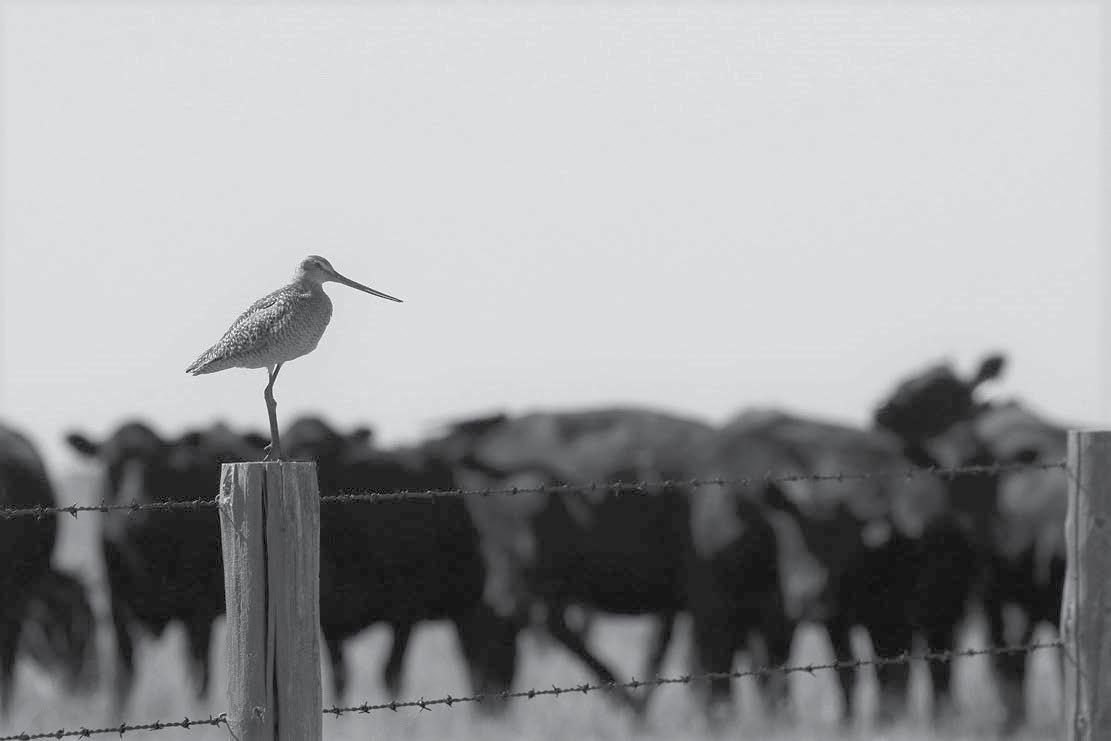
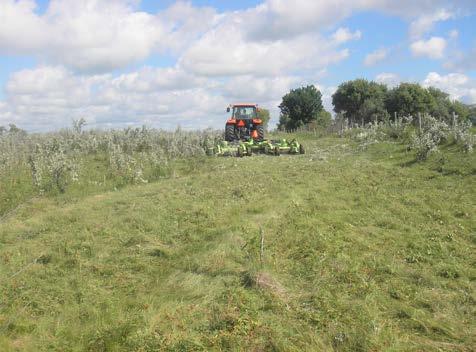

“Manitoba Beef Producers and Manitoba Habitat Heritage Corporation have worked hard to secure new funding for cattle producers to expand the Keep Grazing program,” said Curtis Hullick, field manager for MHHC. “Our goal is to get money into cattle producers’ hands to help preserve managed pastures. Last year the average payment to cattle producers was $15,000 per project. We believe investing in pasture infrastructure will help keep grasslands on the landscape, which will assist in the survival of wildlife and species at risk.”
“Last year the Keep Grazing program received $611,000 in funding, of which the Manitoba Beef Producers organization contributed $250,000 of its ECCC funding,” said Jenna Wiebe, MHHC. “With this funding 57 projects were completed involving 53 landowners and the enhancement of over 21,000 acres of grassland pasture habitat. This coming year Manitoba Habitat Heritage Corporation is expecting to allocate $829,000 in total program funding, of which Manitoba Beef Producers is contributing $407,525 of its ECCC funding and in kind producer support. So far this year the program already has 33 projects on the go.” More applications are welcome.

“There is some great news for 2022,” said Carol Graham, habitat conservation specialist with MHHC. “The Keep Grazing program has changed its name to the Grassland Stewardship program. The change is largely in name only. The incentive program has not changed. The program eligibility area has expanded to include all
of southwestern Manitoba, and funding has increased to $13,000 per quarter section to cover increasing infrastructure costs. Grassland habitat biodiversity and landscape resilience is now a higher program priority with the addition of rangeland management planning. Funding from the Grassland Stewardship Program allows cattle producers to increase forage production while contributing to grassland benefits through the rangeland management process.”
For more information, contact Manitoba Habitat Heritage Corporation. See www.mhhc.mb.ca
7 CATTLE COUNTRY May 2022
Managing encroachment to improve habitat. (Photo credit: Wayne Hildebrand)
water
Managing
supplies.
(Photo credit: Wayne Hildebrand)
MHHCpays producers to conserve, restore or enhance wildlife habitat For more information callKasie McLaughlin at (204)724-0583or visit www mhhc mbca
Infrastructure incentive funding could be utilized for new fencing. (Photo credit: Wayne Hildebrand)
Managing Your Farm Through Uncertainty
BY: SCOTT KEMP
When I talk to cattle producers, the main words I hear are “prices” and “uncertainty.”
Prices are going up – land, feed, equipment, but uncertainty around the world and rising financial pressures in Canada are creating a lot of angst and stress as the days get longer.
The laundry list of factors that are combining to affect both prices and leading to uncertainty seems daunting. They include:
• Governments winding down COVID-19 infrastructure and restrictions
• The Canadian and global economy waiting to settle someplace
• Invasion of Ukraine and sanctions on Russia
• Commodity prices spikes and the increase in feed prices as a result
• Shortage of feed on the prairies
• Inflation >5% for first time since 1990s.
Most of these big questions are not going to be cleared up in the next couple of months or even during this calendar year.
What does that mean for Manitoba cattle producers?
There’s a saying that businesses (which would include farmers) cannot adjust costs fast enough to compensate for falling revenues.
Maybe this can be better framed as a question: can a farm adjust expenses fast enough to compensate for increasing interest costs?
Let’s think about this in both the shorter term and longer term.
Long term ‒ to put it simply, we just don’t know. I know that’s a bit of a cop-out, but it’s true. All of the factors listed above are like pegs in the Plinko board from the Price is Right – we have no idea of the direction that chip is going to take.
Short term we do have some indication of trends. Interest rates are going to go up. Commodity prices looking like they are going to stay high and what that means for feed prices as a result. Federal government focus on environmental sustainability and carbon
reduction strategies and what that means for the cattle and livestock industries.
So, what can cattle producer do?
Our advice is to get your management in order. What that means to you will be specific to your own situation.
Think about your farm business management in three key alignments:
• Vision
• Financial Performance
• Management
Vision
What does the future look like to you? When you look ahead five or maybe 10 years, what is the picture that you see in your head?
You may have done this deliberately in the past or have an idea about what you would like to the future to look like. It’s important to get that clarity within yourself about what you are working towards.
After you have clarity within yourself, it’s important to share that vision with your family and those involved in the farm. Have a discussion, hear what other people’s vision is and start working on getting everyone working toward a common goal.
Financial Performance
“The best way to predict the future is to study the past.” (Robert Kiyosaki)
The second key alignment is financial performance. Your farm’s past financial performance is the best indicator of future financial performance.
What are your financial strengths and weaknesses? Every farm has good years and bad years based on weather, market prices and other factors. Looking at your own trendlines over 3-5 years can help inform you of the direction your farm is headed.
How does that past performance and those trendlines line up with what you want to accomplish? Are you on track, do adjustments need to be made? What changes do you need to make to help you realize your vision?
Management
The third key alignment is management ‒ what are you doing season by season, month by month, day by
day that helps you work toward your financial future and your farm and family future?
Aligning your farm’s vision, financial performance, and management may not give you the answer to what the future holds, but it will give you the best opportunity to weather any storm and take advantage of calmer waters.
Scott Kemp is a farm and agribusiness management consultant with Backswath Management. He can be reached at scott.kemp@backswath.com
$10.36 Million for Manitoba-Made, Nature-Based Solutions to Climate Change
Manitobans are benefiting from a new and lasting approach to funding land, water and wildlife conservation projects. Through a unique partnership, the province of Manitoba created three permanent trust funds at the Winnipeg Foundation. With initial investments totalling $204 million, the Conservation, GROW and Wetlands GROW Trusts generated $10.36 million this year for new projects that take a nature-based approach to tackling climate change. The Manitoba Habitat Heritage Corporation, a registered Manitoba charity, manages granting programs for the Trusts.
MHHC has been helping to make Manitoba a greener place to live since 1986. In addition to its new role managing trust granting programs, MHHC has also permanently protected over 200,000 acres of conservation lands in cooperation with private landowners. Learn more about MHHC at mhhc.mb.ca. (Registered Charitable #126479468 RR 0001)

2022 Grant Recipients:
Assiniboine
Association
Benchland
Birtle
Canadian
Central
Delta
Ducks
East
Holistic
Manitoba
Manitoba
Nature
North East Red Watershed District
Pembina Valley Watershed District
Redboine Watershed District
Seine Rat Roseau Watershed District
Seven Oaks School Division - Ozhaawashkwaa
Animikii-Bineshi Aki Onji Kinimaagae’ Inun (Aki Centre)
Souris River Watershed District
Swan Lake Watershed District
$ 8,080.00
NRWD GROW Program $ 350,000.00
Pembina Plum Initiative $ 1,060,000.00
RBWD GROW Program $ 427,000.00
GROWing EG&S in the Seine Rat and Roseau Watershed District $ 69,780.00
Interpretive Signage & Oral Storytelling $ 50,000.00
Soil and Water Programming in the Souris River Watershed District $ 1,014,000.00

Enhancing Watershed Health by Improving Water Quality and Nutrient Management $ 428,200.00
The Fort Whyte Foundation Inc. o/a FortWhyte Alive Revitalizing Wetland Trail and improving Recreation and Interpretive Value $ 25,000.00
The Nature Conservancy of Canada

West Interlake Watershed District
Westlake Watershed District
Winnipeg Metropolitan Region
Whitemud Watershed District
Several Projects $ 340,000.00
Working with landowners to improve watershed health $ 517,500.00
Wildlife and Upland Enhancement Projects $ 71,604.00
Building Resiliency in the Winnipeg Metropolitan Region $ 25,000.00
2022-2024 GROW Program $ 756,450.00
8 CATTLE COUNTRY May 2022 www.mbbeef.ca
District
Resilience
West Watershed
Watershed
in a Changing Climate $ 1,602,500.00
of
Community Pastures Land Stewardship through
Management Improvements
Manitoba
Grazing
$ 400,000.00
Forage
Consortium Aspen parkland habitat improvement $ 62,250.00
& District
Miniota
Development Corporation Riparian Forest Interpretive Kiosk $ 12,000.00
Parks and Wilderness
Society - Manitoba Chapter After School Nature Club and Fisher River Cree Nation Planning Project $ 60,000.00
Watershed District
Assiniboine
Farming the Best - Conserving the Rest $ 805,000.00
Waterfowl Wetland conservation
and enhancement $ 89,705.00
Unlimited
Canada Habitat Restoration and Enhancement in Manitoba’s Working Landscapes $ 750,000.00
Interlake Watershed District GROW Conservation Auction $ 295,000.00
Management Canada Adoption of Farming Practices to Enhance Manitoba’s Natural Infrastructure $ 200,000.00
Beef
Producers Grassland Enhancement $ 400,000.00
Forage & Grassland Association Addressing watershed priorities for soil health $ 439,800.00
Manitoba Reaching Landowners about Avian Species at Risk
/ManitobaBeefProducers1 /ManitobaBeef www.mbbeef.ca
StockTalk Q&A
Clarke Livestock Specialist Manitoba Agriculture
Tim.clarke@gov.mb.ca, 204-768-0534
Question: How much impact do horn, stable and face flies on my cattle affect their performance?
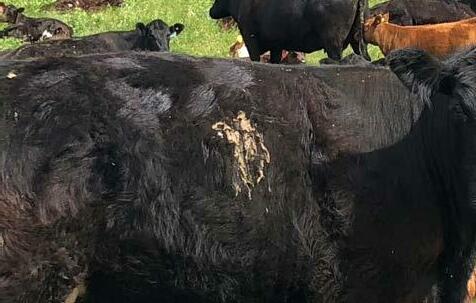
Answer: Face flies congregate around the eyes, nose and mouth of cattle and feed off their secretions. They do not suck blood, however they are the main cause and vector of pinkeye.
Horn and stable flies pierce and suck blood out of livestock. Horn flies can take as many as 38 blood meals/day with an average feed of 1.5 mg of blood. These blood sucking insects can carry mastitis bacteria, anaplasmosis and bovine leucosis.
Decreased weight gains and feed efficiency as well as reduced milk production have been well documented. Control of horn flies resulted in a 9.8 lb gain advantage in steers (Kinzer et al. 1984), and a 34 lb gain advantage in mature cows (Smythe et al. 2019). Calves paired with fly treated cows had an increase in weaning weights of 13-36 lbs (Campbell 1976, Cocke et al. 1989, Smythe et al. 2019).
Recently a new product for horn fly control was registered in Canada called Altosid IGR. Altosid is an insect growth regulator (IGR) which breaks the horn fly lifecycle preventing adults from emerging (hatching) from the manure. Altosid can be purchased in lick tubs or mineral for the cattle to consume. Cargill Animal Nutrition sells this product in their Right Now Emerald and Onyx with Altosid IGR pasture mineral.
In 2021 Manitoba Agriculture and Cargill partnered with Manitoba Beef & Forage Initiatives Inc. (MBFI) research farms to conduct an Altosid IGR mineral trial. MBFI has a research farm near Brookdale and one near Brandon, which are
The
I will be retiring from Manitoba Agriculture in May of 2022. I have enjoyed working with cattle producers and farmers in Manitoba throughout the years. I believe farming is one of the most noble of occupations, and want to thank you for all your hard work and risk taking in order to supply consumers with a safe, affordable and abundant food supply.
about 12 miles apart. Horn flies are not good fliers and stay close to their host. Both groups were offered free choice Onyx mineral and salt blocks, and the Brookdale cattle received the Altosid IGR in the mineral pack. The cow/calf pairs in the trial were weighed about every six weeks. It should be noted that the Brookdale farm is wetter (pothole country) and the fly pressure is greater; as well, the Brookdale cows were first and second calvers. Also the cows at the Johnson farm (untreated) were mature, bigger cows.
Altosid and non-Altosid mineral were fed prior to fly emergence as recommended by the manufacturer, with the goal of 100 grams or 2 oz/cow/day consumption. Mineral consumption by both groups was for the most part on target.

It is important to note that no single method of fly control will result in complete eradication. An effective program keeps horn fly levels to less than 200 flies per animal. There are no restrictions on using other fly control measures in conjunction with Altosid IGR in cases of extreme fly pressure. Altosid IGR is a great base for your fly
We
For the next issue of Cattle Country, a Manitoba Agriculture forage or livestock specialist will answer a selected question. Email your questions to Tim.Clarke@gov.mb.ca

StockTalk Q&A for Cattle Country is brought to you by Manitoba Agriculture. We encourage you to email your questions to our department’s forage and livestock team, who have a combined 175 years of agronomy experience. We are here to help make your cattle operation successful. Contact us today.
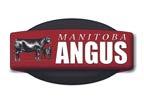
Elizabeth Nernberg Roblin 204-247-0087
Pam Iwanchysko Dauphin 204-648-3965
Tim Clarke Arborg 204-768-0534
Shawn Cabak Portage 204-239-3403

Juanita Kopp Beausejour 204-825-4302
Elizabeth.Nernberg@gov.mb.ca
Pamela.Iwanchysko@gov.mb.ca
Tim.Clarke@gov.mb.ca
Shawn.Cabak@gov.mb.ca
Juanita.Kopp@gov.mb.ca
9 CATTLE COUNTRY May 2022 www.mbbeef.ca
Feature Brought to you by Manitoba Agriculture
control program and can help reduce fly-induced stress on your cattle allowing them a better opportunity to reach their full genetic potential.
full report can be found at the Manitoba Beef & Forage Initiatives webpage (www.mbfi.ca/nutrition-feed-efficiency)
Tim
FARM/ ANIMAL TYPE ALTOSID TREATED BEGINNING WEIGHT BEGINNING DATE END WEIGHT END DATE GAIN WEANING WEIGHT AS A % MOTHERS BODY WEIGHT BROOKDALE COWS YES 1083 JUNE 4/21 1135 NOV 23/21 52 n/a BROOKDALE CALVES YES 79 MAY @ birth 545 NOV 8/21 466 48.0 JOHNSON COWS NO 1356 MAY 21/21 1396 NOV
40 n/a JOHNSON CALVES NO 85 MAY @ birth 565 NOV
480 40.4
Altosid
treated
group still
had
some fly pressure. Photo from treated group at Brookdale farm.
2/21
8/21
from you
want to hear
C A A C O N V E N T I O N For information and events check out the MAA website! www cdnangus ca/manitoba-angus-association/ M o n c t o n N B J u n e 9 - 1 2 2 0 2 2 F o r m o r e d e t a i l s v i s i t w w w c d n a n g u s c a U P C O M I N G E V E N T S ! S H O W D O W N P: 1-888-622-6487 E: mandi mbangus@gmail com Manitoba Angus Association K e y s t o n e C e n t r e - B r a n d o n M B J u l y 2 7 - 2 9 2 0 2 2 H a r d i n g F a i r - H a r d i n g , M B J u l y 2 2 , 2 0 2 2 M A A S U M M E R G O L D S H O W
Researchers, Producers and Industry Discuss Farming for Sustainable Food Systems
BY PETER FROHLICH, NATIONAL CENTRE FOR LIVESTOCK AND THE ENVIRONMENT, UNIVERSITY OF MANITOBA

The 8th Annual Sustainability of Canadian Agriculture Conference (SCAC) was held virtually March 16-18. This year’s theme, “Farming for sustainable food systems” renewed the ongoing commitments of producers, industry and academia to work together to enhance and grow an environmentally sustainable Canadian agricultural sector. The National Centre for Livestock and the Environment (NCLE) and Agriculture and Agri-Food Canada (AAFC) partnered once again to bring forward a program that explored strategies to redesign our food production systems, forge the road to carbon neutrality and manage agriculture production from a broad landscape perspective to achieve enhanced sustainability.
Leveraging the agri-food system for a post-carbon world
The Keynote address was given by David Kanter, a passionate researcher who is the associate professor of environmental studies at New York University and Vice-Chair of the International Nitrogen Initiative. Kanter tackled the big picture environmental policy structure and eloquently emphasized the inadequacy and ineffectiveness of current global policy instruments to make meaningful change to emissions as we strive to transition to a post-carbon agri-food system. Kanter emphasized that decarbonizing agriculture and the broader agri-food system is essential to meeting global carbon emission targets.
He suggests solutions are found in a new governance approach focused not only farmers but on all the players in the food industry, including fertilizer companies, processors, crop advisors, water treatment plants, supermarkets and others. It is important to consider all the components of the agriculture industry as they all influence production decisions that farmers make.
Kanter suggests that solutions to effective decarbonization of agriculture rest in optimizing and transforming agricultural production with consideration given to the many factors that offer tradeoffs and synergies. Kanter calls on researchers and industry stakeholders including government to continue exploring novel strategies and developing effective policies to achieve Canada’s emissions targets.
Redesigning our food production systems
During this panel session speakers explored avenues to redesign existing production systems to further develop sustainability in agriculture. Can we build on what nature has already provided? Perenniality and diversity are present-day buzz terms deemed as innovative methods to enhance current cropping systems practices. When in fact, existing knowledge tells us that all natural ecosystems such as forests, grasslands, savannahs, the tundra and deserts are dominated by perennial and diverse vegetation that has survived for years, decades or even centuries.
Part of the solution can be to readjust elements of the current cropping systems by replacing annual crops with perennial plants that will replenish carbon inputs, enhance soil microbial activity and foster soil stability by minimizing carbon and nitrogen loss. Utilizing existing knowledge also means recognizing the abundance of information available from the Indigenous cultures of Canada. A presentation during this panel outlined what the Canadian government, via Agriculture and Agri-Food Canada (AAFC) is doing to recognize this knowledge and how listening to traditional Indigenous concepts needs to be a part of the current conversation.
Recycling and reusing co-products from the processing sector is essential to enhance agricultural sustainability. The final presenter demonstrated the functionality and profitably of repurposing co-products from the Manitoba yellow pea processing industry as a novel protein ingredient in livestock feed.
Paving the road for carbon neutrality
The speakers in this session agree that that the road to carbon neutrality requires changes in the fundamental structure of our food production system with an emphasis on nitrogen reduction to achieve the 2030 target of reducing nitrogen use by 30%.
Can we do it? Options include incentives for adoption of 4R practices (right source, rate, right time and place) and increasing the role of carbon markets. Furthermore, the key to the successful reduction of nitrogen is rooted in biology and it includes increased reliance on grain legumes and other plants that biologically fix nitrogen plus the use of renewable energy for both nitrogen fertilizer production and to run farm machinery. The on-farm perspective in this session included examples of how to make a farm net negative including adoption of regenerative agricultural practices, incorporating green substitutes for nitrogen fertilizers and diesel fuel and ensuring we are adopting sustainable intensification of inputs to optimize yield and profitability.
The final speaker provided an industry perspective with an introduction to carbon offsetting, reaffirming that there is a need for a carbon market. Agricultural producers are uniquely positioned to benefit from rising carbon prices. Carbon offsets, including emissions avoidance (mitigation) and carbon sequestration, accelerate decarbonization and with the price of carbon increasing, demand exceeds supply and early adopters will receive cash payments for offsets they generate.
Farming with a landscape perspective
The whole is greater than the sum of its parts. In this session we heard about big picture, landscape scale farm management practices. The first presentation set the stage and defined the landscape of a farm operation in terms of integrated facets, including cropland and wetland management. Practices that increase the organic carbon in the soil are built on an understanding of the relationship between moisture, soil erosion and tillage practices as well as the need to increase organic biomass in the soil.
To build on the researcher perspective, the producer emphasized the benefits of adding livestock manure and zero till practices to improve the amount of organic carbon in the soil. Leaving natural areas natural can have positive effects on soil health and crop yields. Preserving natural areas, conserving, restoring and managing landscapes is also the mission for Ducks Unlimited Canada. Amongst the many on-the-ground conservation activities, Ducks Unlimited Canada supports the beef industry and its grazing practices that help to maintain diverse grasslands within the ecosystems.
The final producer perspective focused on agricultural systems management and echoed the importance of regenerative agriculture through integration of crops, livestock and conservation activities. With hard work, these methods can be scalable and profitable leading to increased water absorption in soils, increased nutrients and increased organic matter. Take care of the land and it will take care of us.
Farming for sustainable food systems and Holos workshop
More than 80 conference participants joined the Holos model training workshop and received hands-on training and demonstrations on the modeling software. Holos is a free, whole-farm model and software program that estimates greenhouse gas emissions on individual farms. The objective of Holos is to examine the impact of management practices on GHG emissions from farms. Training consisted of short demonstrations followed by the opportunity for participants to practice what they have learned on their own computers, to ask questions and to provide feedback.
Student Video Competition
Graduate students were invited to pitch their research projects in three-minute pre-recorded videos on how their work can benefit farmers and the sustainability of Canadian agriculture. Eleven creative entries were submitted to the competition by students from across Canada. A wide range of sustainability topics were addressed from mitigating greenhouse gas emissions to increasing crop diversity and assessing on farm management practices that ensure environmental sustainability. The competition winners included first place Emily Laage (Dalhousie University) who talked about organic field crop greenhouse gas emissions across Canada, second place Crystal Almdal (University of Manitoba) who discussed how crop diversity reduces aphid colonization in soybean and third place Sharandeep Singh (University of British Columbia) who gave an entertaining glimpse into his research on combating fusarium head blight in wheat. An additional prize, the people choice award was awarded to Emily Laage. All videos can be viewed on the conference website.
Barley Sandwich Sessions
New this year and the invention by Dr. Roland Kroebel, conference co-chair and researcher with AAFC, were the very successful and well-attended Barley Sandwich Sessions. Two end-of-day sessions were designed to stimulate free conversations between conference attendees, scientists, producers and industry on a wide range of topics related to sustainability in agriculture. The first Barley Sandwich Session encouraged conference attendees to enter one of three virtual rooms that held experts that discussed beef, soils and farm modeling concepts in agriculture. The second Barley Sandwich Session was held on the last day of the conference following closing remarks and carried on into the early evening. The discussions during this session flowed freely and build on the topics established by speakers during the previous three days of presentations.
The conference drew on average 200 attendees per day. Once again this year the SCAC was approved for continuing education units with the Prairie Crop Advisor Board. The 2022 Sustainability of Canadian Agriculture Conference organizing committee, comprised of researchers, industry, producers, and government and co-chaired by Dr. Kim Ominski, Director of NCLE, would like to thank all those who attended and helped to make this annual conference a success. A special thanks to Planners Plus who worked hard to ensure a seamless online delivery of the conference. See y’all next year!
Please visit the SCAC 2022 conference website to view recorded presentations, information about speakers, student video competition and more.
Sustainability of Canadian Agriculture 2022 Faculty of Agricultural and Food Sciences University of Manitoba (umanitoba.ca)
10 CATTLE COUNTRY May 2022 www.mbbeef.ca
The 8th Annual Sustainability of Canadian Agriculture Conference (SCAC) was held virtually March 16-18 and was organized by the Faculty of Agricultural and Food Sciences at the University of Manitoba. (Photo credit: Emma McGeough)
What Happened to the Market on Big Calves?
As I write this column, it is the middle of April, and inclement weather has disrupted deliveries of livestock to markets for most of the past two weeks. Despite bad weather, the numbers of cattle fresh off the farms for sale has dwindled, and most of the markets and buyers are predicting that the spring cattle run is all but over. In hindsight, those who held back their lighter weight calves instead of selling in late November and December are getting well paid for their calves, especially the heifers, if they aren’t too fleshy. Those who held onto their bigger calves and are trying to sell 900-pounders now should have sold them in October and saved the feed.
So, what happened to the market on the big calves, and why are the lighter weights so strong? It comes down to the feeding fundamentals, supply and the availability of pen space.
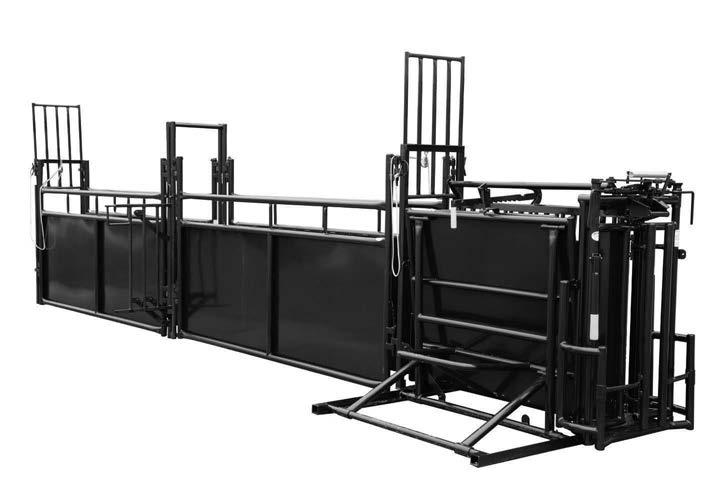
For all of April, the fed cattle futures have been volatile to say the least. Wild swings in the market have made cattle feeders nervous. There is still a backlog of market-ready fed cattle. In Manitoba, we are waiting five to six weeks to deliver cattle to the processors out west after pricing. Feedlots in Alberta are plugged up with market ready cattle that are eating high priced feed and not gaining in value. The price this week is a little better at around $2.78 on the rail delivered to Alberta. Some of the cattle that are being harvested now and were priced months ago are north of $3.00 dressed. So, to be blunt, pen space is a problem.
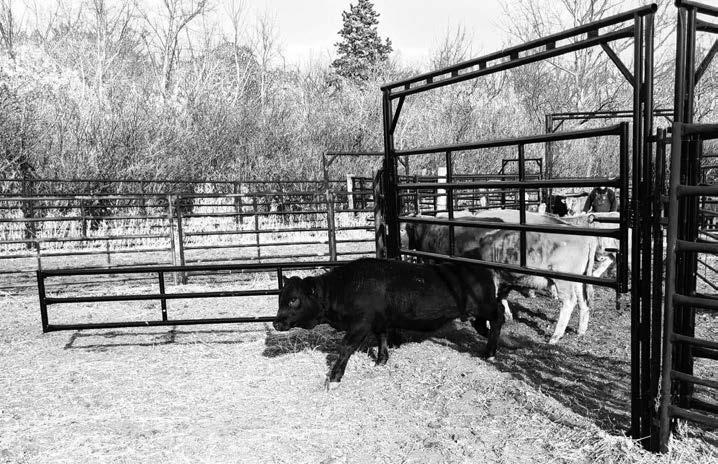
The other factor is the cost of feeding the finishing ration in western Canada. If you are buying all of your feed inputs on the cash market today to finish a pen of cattle, your cost of gain depending on the performance of the cattle will be north of $2.00 per pound of gain for heifers and around $1.75 per pound of gain for steers.
RICK WRIGHT The Bottom Line
Even at today’s disappointing prices for the cattle over 825 pounds, the break evens on those cattle with today’s cash feed costs is well over $3.00 per pound dressed.

Is there relief from the high grain prices in the near future? Well, there normally would be on a normal year. Old grain inventory would be dropping at this time of year. That is not the case this year as prices are climbing
In Manitoba, the Ontario influence on the cattle market has made the Manitoba prices considerably stronger than further west. Transportation costs have skyrocketed this spring. Freight from central Manitoba to southwestern Ontario is over $16.00 per hundredweight; add commission, insurance, feed, water and rest charges, and the extra costs are nearly 20 cents per pound on top of the price of the cattle. The reason Ontario can do it is because they have a surplus of feed and the cost of gain to finish the cattle. Ontario’s cattle feeding infrastructure is growing despite its limited processing capacity. Without Ontario’s support this year, the Manitoba cattle price would be considerably lower.
rather than dropping. The reason? World demand! The export market is setting the floor price for all grains. This past year, the best strategy for the grain producer was to do nothing as far as contracting for risk management. There are reports of grain brokers offering over $8.00 per bushel for new crop barley off the combine in Manitoba. Last year at this time, $4.25 in Manitoba would have been attractive to many sellers. In the USA, corn on the cash market is over $8.00 per bushel. With the unsettled conflict in the Ukraine, which is the largest barley and wheat grower in Europe, the world supplies are very unpredictable. This will remain in place until after the harvest in that area. In North America, feed grain and silage acres are disappearing and being replaced with canola and soybeans.
Despite the high projected feed costs, the yearling market off grass is very strong. Contracts for legitimate grass yearlings have been very strong, prompting local grass operations to go headto-head with Ontario for inventory, creating a very favourable market for the cattle under 750 pounds. The light calves under 600 pounds are really too light for grass, but demand is strong, as it costs considerably less to background on silage than feed a finishing ration. These lightweight cattle are a long-term investment and give the owners time for the markets for both the grain and fed cattle to change in their favour. All things considered I am truly surprised the market in Manitoba is as strong as it is.
The Manitoba Livestock Marketing Association has a new president. Allan Munroe from Killarney was recently elected as the new President. Board members elected were Robin Hill, JGL; Brad Kehler, Grunthal Auction Mart; Rick Wright, Rick Wright Cattle Consulting; and Kirk Keisman, Ashern Auction Mart.
Until next time, Rick.

11 CATTLE COUNTRY May 2022 www.mbbeef.ca THE OUTST A N D ING BRAND HI-HOG FARM & RANCH EQUIPMENT LTD. Est. 1974 1-800-661-7002 hi-hog.com Available @ Federated Co-op Ag Centres CALF SORTING GATE Reduce Your Handling Time ����
With the unsettled conflict in the Ukraine, which is the largest barley and wheat grower in Europe, the world supplies are very unpredictable.
The Real Smell of Summer – Grilling is Back!
Beef Poppers with Cream Cheese
Zesty Italian Marinade:
• ¼ cup white wine vinegar
• ¼ cup lemon juice, fresh
• 1 tbsp Dijon mustard
• 1 tsp italian seasoning
• 2 cloves garlic, minced
• 2 tbsp honey
• 1 tsp kosher salt
• ¼ tsp black pepper, ground

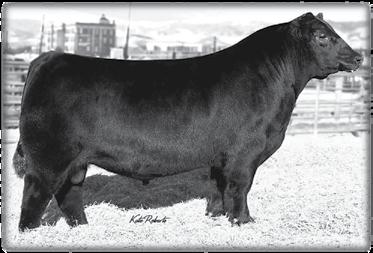

• ½ cup canola oil
Poppers:
• 276 g inside round marinating steak
• ½ cup zesty italian marinade
• 375 g bacon, thin cut, sliced in thirds
• 8-10 ea. pepperoncini, cored, deseeded, and quartered
• 1/3 cup cream cheese, lightly whipped
MARINADE DIRECTIONS
Step 1: Italian Marinade: In a food processor or blender, add all ingredients except oil and blend on high until well combined, about 30 seconds.
Step 2: In a slow steady stream, add oil until it forms an emulsified dressing, about 1 minute.
Step 3: Transfer to a sealed container and chill until required.
ASSEMBLY
Step 1: Slice steak into very thin strips about 2” in length. Add to a shallow covered container and pour ½ cup of zesty Italian marinade. Toss to coat and fully submerge. Allow to marinate for a minimum of 8 hours up to 24 hours in fridge.
Step 2: Layer lengthwise one ½ piece of bacon, one strip of marinated steak and one chunk of pepperoncini, lined up from the bottom leaving about 1-2” of bacon space along top. Roll upwards into a tight roll and pierce with a toothpick through the middle to secure, assuring you’ve pierced through the pepperoncini, so it doesn’t fall out when cooking. Repeat with remaining ingredients.
Step 3: Barbecue: Heat grill on high heat. Using a grill mat, place poppers on top and grill about 10-12 minutes, turning as to evenly brown all sides. Adjust heat as necessary as to not char your poppers too badly!
Stove Top: In a non-stick frying pan or cast-iron skillet over medium heat, fry skewered poppers until bacon is lightly crispy, browned and steak is cooked through. About 8 minutes, flipping halfway.
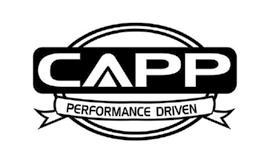
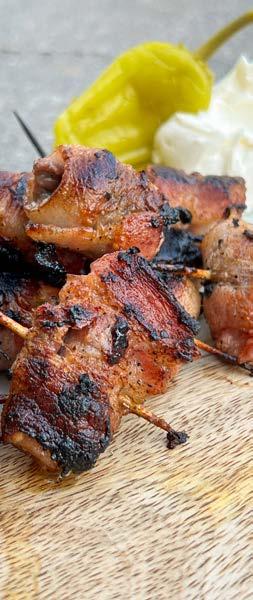
Step 4: Allow to rest for about 5 minutes and then serve with a dollop of whipped cream cheese on top.
BY: ANNA BORYS
Is it just me or is everyone else as glad to be done with this winter as I am? From the constant back ache from moving the mountains of snow, to the extreme windchill warnings, not to mention this pandemic that seems to be never-ending. The hope of patio season, gardening and the sizzle of beef hitting a hot grill fills me with an almost tangible sense of relief and excitement.
Along with warm weather comes backyard dining, and one of my favourite recipes is this variation on the classic “Jalapeno Popper”. During my culinary training, we were taught that if you’re going to be serving a onebite type dish, it is critical each bite be as flavourful as you can make it. These one-bite flavour explosions bring the salty, the crunchy, the savoury, the smoky and the creamy to the party. This appetizer recipe was adapted from one of my dad’s recipes which is always a winner for any occasion, no exaggeration. In fact, it DID win a family friendly appetizer competition several years ago amongst some heavy hitters like sous vide duck sliders, and mini-Beef Wellingtons.
The beauty of this hors d’oeuvre recipe, is it can be tailored to your liking. Don’t have time to make the marinade? No problem! Your favourite bottled Italian vinaigrette will also work. Not the right level of heat? Then just adjust your pepper selection to either fresh jalapenos for a milder heat level or opt for an extra hot pickled pepper to really make your friends sweat! Forgot the refill the propane tank for the barbecue? This recipe works just as well stove top.
A few things to consider: if grilling, I’d highly recommend using a grill mat as to prevent flare ups as the fat renders out of the bacon. You’ll still get nice grill marks while not completely engulfing your tasty bites in flames. The marinade also makes for a fantastic salad dressing or sauce. I keep mine in a sealed small glass jar and it keeps for up to a week or even longer (but it rarely lasts that long because I put it on everything!)
12 CATTLE COUNTRY May 2022 www.mbbeef.ca
QUALITY ANGUS since 1958 Offers for Sale by Private Treaty 50 Yearling Black Angus Bulls and 10 2 yr. old Bulls Sires Represented: *Bar-E-L Candidate 10C *BM Archer 29D *Young Dale Absolute 3D *BJ Harvestor *Young Dale Hi Definition 185B *Black Meadows Feel Good *Young Dale Eden 126E *Musgrave Sky High *Frey Cowboy Logic 181F Young Dale Absolute 3D Fed Responsibly to Ensure Longevity! All bulls are Bunk Fed TMR Silage Ration Fertility Tested and Delivery Available Musgrave Sky High 1535 The WALKERS Miniota, MB Call Bill at 204-567-3782 Several Packages of *Open Heifers (groups of 10) (available end of March) Son of Cowboy Logic 181F
I guarantee once you make these Beef Poppers, you’ll be adding them to your “favourites” section of your recipe box! Enjoy!
Photo credit: Anna Borys
New ACL rules still cause frustration three years in
BY: ANGELA LOVELL
Changes to the Agricultural Crown Lands (ACL) program implemented in September 2019, are causing a lot of frustration for cattle producers across Manitoba as the results of those changes begin to play out.


of Crown land lease coming up for an open auction; the chance of being able to outbid a more established producer are slim. That’s the reality, so the benefit for a young producer in that scenario is certainly not there.”
Canada achieves BSE negligible risk status
BY RON FRIESEN
It took 18 years, but Canada has finally been declared BSE-free.
Changes to the ACL program have included substantial rental rate increases, reduction of lease terms from 50 to 15 years, an online auction process, extending leaseholder eligibility to Canadian residents outside of Manitoba, and the elimination of unit transfers. These changes are causing a lot of insecurity and financial pressure for many current and new ACL leaseholders.
role as minister of agriculture, I’m looking to find ways we can better serve Manitobans and achieve long-term sustainability and success for the beef industry. The changes that have taken place with respect to agricultural Crown land should be viewed in the context of broader adjustments that might be possible to ensure fair and transparent processes.”
That means good news for both traders who export beef and ranchers who produce it, industry officials say.
“The difference will be the ability to access markets that we otherwise weren’t able to because we didn’t have that status,” said Tyler Fulton, Manitoba Beef Producers president.
Manitoba Beef Producers (MBP) has been involved in the consultation process from the outset and provided recommendations to the provincial government, many of which haven’t made their way into the new ACL program.

The World Organization for Animal Health (OIE) has recognized Canada as a country with negligible risk of bovine spongiform encephalopathy (BSE), giving it the most preferred status under the OIE’s system for evaluating BSE risk.
The announcement in May removes the final trade barrier against Canadian beef exports.
“MBP has had many concerns that a lot of the changes to the ACL program did not line up with what we had recommended in our consultation, and we have been looking to get some adjustments to those modernizations ever since,” says Carson Callum, MBP General Manager.
Negligible risk status means importing countries no longer have any grounds for restricting beef from Canada because of BSE.
The new Minister of Agriculture, Derek Johnson told Cattle Country in a recent statement: “In my new
“Manitoba’s approach to the use of agricultural Crown land should be based on optimism for not only modernization and increased productivity, but for our government’s protein strategy and for the sustainability of this land base while the industry grows,” Johnson added.
Dale Myhre, who ranches with his three sons near crane River in the Interlake region, says he’s seen a lot of young people leaving the area, and a lot of older producers being forced to give up their agricultural Crown lands and retire over the past three years.
Lowe.
The industry has asked Ottawa to encourage Canada’s trading partners to recognize the OIE’s ruling and accept Canadian beef without restrictions, he said.
Not living up to their billing
In a May 27 statement, federal Agriculture Minister Marie-Claude Bibeau said the government will do so.
Many Manitoba producers are questioning whether the program is achieving any of the provincial government’s stated goals for making the changes. Those goals included supporting the growth of Manitoba’s livestock industry in a sustainable manner and helping young producers by providing them better access to Crown lands.
Bob Lowe, Canadian Cattlemen’s Association (CCA) president, said some Asian countries still limit Canadian beef imports to cattle under 30 months of age, citing BSE concerns. Now they no longer have reason to do so.
“Assuming that the world is based on science-based trade, there’s no reason to have those restrictions anymore,” said
“It’s hard to understand what some of the benefits are to some of the groups that the Province saw benefiting from them,” says Matthew Atkinson, Chair of MBP’s Crown Lands Committee. “I am still in the demographic of a young producer, and if I have a parcel
was detected in an Alberta cow and international borders immediately slammed shut to Canadian beef exports.
When proposed changes to the ACL program were first announced, Myhre and a group of other Crown land lease holders formed an association to lobby the government to review the changes. Their biggest fear back then was that increases in rent and the online auction process would mean a lot of long-standing lease holders would not be able to afford to bid on the parcels they had relied on, in some cases, for generations.
“Canada will inform those trading partners of Canada’s BSE negligible risk status and will undertake immediate work to support expanded global market access for Canada’s high-quality cattle, beef and beef products,” Bibeau said.
Since 50 per cent of beef in Canada is exported, producers suddenly found themselves with collapsed market prices and animals they could not sell because the market could not absorb them.
Now, three years later, Myhre’s worst fears have come true.
It has been a long and difficult journey for Canadian beef producers since that black day in May 2003 when a case of BSE
“It has gone the way we expected; that there would be a major loss of ranchers and economic hardships,” Myhre says. “The government said we’re bringing in these programs to free up some agricultural land for young producers but the young people, they’ve left and this has happened over only three years.”
The result was cataclysmic for the industry. CCA estimates direct economic losses between 2003 and 2006 alone ranged between $4.9 billion and $5.5 billion. Some 26,000 beef producers left the industry between 2006 and 2011. More than 2.2 million acres of pasture lands were converted to crops, creating a major negative environmental and ecological impact. Page 2
www.mbbeef.ca PUBLISHED BY MANITOBA BEEF PRODUCERS JULY 2021 POSTMASTER: PLEASE RETURN UNDELIVERABLE COPIES TO: MBP, UNIT 220, 530 CENTURY STREET, WINNIPEG, MB R3H 0Y4 CANADIAN PUBLICATIONS MAIL PRODUCT SALES AGREEMENT NUMBER 40005187 POSTAGE PAID IN WINNIPEG.
Laura Plett, of Sawmill Creek Livestock near Stead, enjoys some family time with son Dustin between filming segments on her property for the upcoming Season 32 of Great Tastes of Manitoba. (Photo credit: Donalee Jones)
BY MANITOBA BEEF PRODUCERS MARCH 2022 POSTMASTER PLEASE R ET URN UNDELIVERABLE C OPIE S TO MB P, UNI T 220, 530 CENTU RY S TREE T, W I NNIPE G, M B R3H 0Y4 CANADIAN PUBLIC AT IONS MAIL P RODU CT SAL ES AG REEMEN T NUMBE R 40005187 P OS TA GE P AID IN W INNIPE G.
The photographer had the cattle’s undivided attention as a fresh bed of hay was laid down at a farm in the Deerwood area. (Photo credit: Jeannette Greaves)
Page 7
A sense of optimism after a tough 2021 cattle production year



As I write this column, we just recently completed our 43rd Annual General Meeting, held virtually. The meeting was a success, with great information and entertainment from all our presenters. However, it is my hope that this was the last AGM to be held virtually, as I sorely miss those in-person conversations that can only happen at these meetings. We are planning a summer event amid eased public health restrictions where we can get together and exchange ideas and reconnect. Watch for details! Thanks to everyone who took the time to participate, either as a delegate or a presenter.

Following our AGM I had a reporter approach me with the question, why are you so optimistic after such a brutal year? Set aside the fact that optimistic is generally my default mood, I believe that market factors are finally coming together for the cow/calf producer. To be clear, there are widespread cashflow deficits on Manitoba cattle operations due to the drought. I have heard from several producers about how they are having difficulty making ends meet and I recognize the tremendous stress this places on people. However, what brings me optimism about the coming year is the promise of better spring growth due to above average snowfall across most of the province and the current bullish market outlook.
While there are a few areas of concern on the market outlook (very weak fed basis levels and supply chain disruptions), overall fundamentals are the best that they have been since 2015. Longer-term supplies of live animals are tight with both the US and Canadian herds seeing declines after the drought. Barring another crop failure, cattle feeders should be in a good position to compete aggressively for the finite supply of calves this fall, especially with the pen space that has been added over the last two years. The growth in the feeding sector should translate into more competitive feeder cattle basis levels.
Probably most significant are the demand trends, both domestic and export, which feeds my opti-
 TYLER FULTON President’s Column
TYLER FULTON President’s Column


mism. Growth in domestic demand has been exceptional as consumers added more beef to their diet in 2021 and were willing to pay higher prices for it. Canada’s beef exports have exceeded even the most optimistic expectations with nearly 40 per cent growth in value year over year, an unprecedented move in recent times. Markets like Mexico, Southeast Asia and Japan represent great opportunities longer term for additional export demand with positive demographic trends and improved market access.
The beef industry is a co-ordinated value chain that uses market functions to facilitate the process. Most of the cow/calf operations are smaller, independent farms that do not retain ownership of the calves into the feedlots and through to slaughter. Since each segment of the value chain is unique and independent, it can often take a long time for prices and market signals to move from the consumer all the way back to the first link in the chain. The COVID-19 pandemic disrupted these normal processes, but as conditions normalize, I have faith that a greater share of those consumer dollars will flow to the cow/calf sector this year.
All of these fundamental factors have contributed to projected fall calf prices (based on US feeder cattle futures, the current Canadian dollar and historical basis levels) that are 15-20 per cent higher than those prices seen just four months ago. These prices are real and available for producers to secure with a Livestock Price Insurance (LPI) calf policy. At the time that I am writing this (February 15), a 600lb steer calf policy for the early fall timeframe is available for $234/cwt which
equates to $180/head more than what the market offered last year!
There is no doubt that the whole industry feels beaten up after the last year, but given the prospect for a wetter spring and strong market fundamentals, I think there is good reason for cautious optimism.
2 CATTLE COUNTRY March 2022 www.mbbeef.ca
DISTRIC T 13 MARY PAZIUK Dauphin, Ethelbert, Gilbert Plains, Grandview, Roblin and Mossey River COMMUNICATIONS AND MARKETING LEAD David Hultin O F FIC E A SS I S TA N T Jennifer Patryluk D ES IGNE D B Y Print Studio One C AT T L E CO U N TR Y E D I TO R David Hultin LIVESTOCK PREDATION PRE VENTION PROJEC T COORDINATOR Ray Bittner FINANC E Deb Walger DISTRIC T 14 VACANT Minitonas-Bowsman, Mountain, and Swan Valley West MA NI TOB A BE E F PROD U C E R S Ph: 1-800-772-0458 Un i t 220, 530 Ce n t u r y S t ree t Wi nn ipe g, MB R 3H 0Y 4 PH - (204) 772-4542 FX - (204) 774-3264 info@mbbeef ca www.mbbeef ca Carson Callum GEN E RA L M AN AG E R DISTRIC T 1 ALFRED EPP Boissevain-Morton, Brenda-Waskada, Grassland, Deloraine-Winchester, and Two Borders DISTRIC T 2 NANCY HOWATT Argyle, Cartwright-Roblin, KillarneyTurtle Mountain, Lorne, Louise, Pembina, and Prairie Lakes DISTRIC T 3 ANDRE STEPPLER Cartier, Du erin, Grey, MacDonald, Portage la Prairie, Rhineland, Roland, Stanley, Thompson, Montcalm, Morris, and Ritchot DISTRIC T 4 VACANT De Salaberry, Emerson-Franklin, Hanover, La Broquerie, Piney and Stuartburn, Montcalm, Morris, Ritchot, Spring eld, Ste. Anne, Taché, R.M. of Piney and Reynolds DISTRIC T 5 STEVEN MANNS Cornwallis, Elton, Norfolk-Treherne, North Norfolk, Oakland-Wawanesa, Glenboro-South Cypress, and Victoria DISTRIC T 6 MELISSA ATCHISON Pipestone, Riverdale, Sifton, Souris-Glenwood, Wallace-Woodworth, and Whitehead DISTRIC T 7 T YLER FULTON PRESIDENT Ellice-Archie, Hamiota, Prairie-View, Riding Mountain West, Rossburn, Russell-Binscarth, and Yellowhead DISTRIC T 8 MATTHEW ATKINSON 2ND Clanwilliam-Erickson, Glenella-Lansdowne, Harrison-Park, Minto-Odanah, Oakview, North Cypress-Langford, Rosedale, and West Lake-Gladstone DISTRIC T 9 TREVOR SUND Alexander, Brokenhead, East St. Paul, Lac Du Bonnet, Rockwood, Rosser, St. Andrews, St. Clements, St. Francois Xavier, West St. Paul, Whitemouth, Woodlands, LGD of Pinawa, Reynolds, Spring eld, Ste. Anne, and Taché DISTRIC T 10 MIKE DUGUID SECRETARY Armstrong, Bifrost-Riverton, Fisher, and Gimli DISTRIC T 11 ARVID NOTT VEIT Coldwell, Grahamdale, St. Laurent, and West Interlake DISTRIC T 12 MARK GOOD TREASURER Alonsa, Lakeshore, McCreary, and Ste. Rose
Maureen Cousins
Y AN A LY S T
POLI
C
us
Directors for the upcoming year remain unchanged from 2021, although there are vacancies in Districts 4 and 14. A full recap of the 43rd AGM is available on pages 4, 12-13.
During our virtual 43rd AGM, we asked atttendees to send
a photo as they took part in the meeting. Thank you to MBP President Tyler Fulton (top) and Linda Horner (bottom) for letting us share your photos!
Mental health a key topic addressed at MBP’s 43rd Annual General Meeting
Greetings all,
I want to start by thanking all for attending our 43rd Annual General Meeting this past month. Although it was unfortunate that we had to conduct it virtually again, it was still a great event. I am pleased with the number of folks who attended and with how things went overall. You always run the risk of major technical errors in an event like that, but we got through it very smoothly. We look forward to planning an in-person event this summer to have some of that missing connection with producers and others in the industry.
Our AGM had a variety of topics, as well as the usual business component. The main speaker I want to revisit was the presentation by our keynote Dickson Delorme (AKA Quick Dick McDick). Quick Dick has become very popular on social media for his hilarious takes on topics related to agriculture. His humour has a really rural spin to it that many that attended could relate to. However, his presentation during our AGM
CARSON CALLUM General Manager’s Column


didn’t just focus on the humour. It touched on his life up until now, and the mental health struggles he has dealt with over time.
Dickson’s focus on this aspect was likely relatable to many listening. In agriculture, a very common issue people deal with is burnout. Burnout is a state of physical or emotional exhaustion that also involves a sense of reduced accomplishment and loss of personal identity. His explanation of how he has been exposed to it and what he has done to get past it was appreciated. When you think about the challenges that the ag sector goes through and its reliance on factors outside of its control, it is common to get burnt out. It is also common
not to recognize it, swallow your pride, and move on. Acknowledging you may be struggling is an important first step to getting past it.
Speaking from experience, burnout is not a good place to be. It’s important to take a step away from the stress and do things that make you truly happy. Spending quality time with family and friends and not thinking about stressors at work is always a great way to recharge and refocus. This can be hard when farming is so intertwined with daily life, but anything you can do to step away is important. Dickson pointed out the importance of humour, and why he does what he does. There are many ways to focus on your mental health, such as taking time away, exercise, and having a hobby. For me, I always try to incorporate humour in our workplace culture and with interactions with the board of directors. This is not to say we do not take industry issues and opportunities seriously, but it helps to always remember to laugh.
For those readers who haven’t checked out Quick Dick McDick, I encourage you to view some of his videos on YouTube. One of my favourites is his take on the importance of cattle on the landscape.
Before I close, I again want to urge producers to look at the AgriRecovery support programs that have been announced and adjusted related to feed and transportation costs and herd management drought assistance. On February 2 the federal and provincial governments announced that more types of extraordinary expenses are now eligible for program coverage. These include accessing additional crop or pasture acres, temporary fencing for supplemental grazing, hauling water, harvesting extra acres or hauling self-produced feed from distant locations. The deadline for feed assistance applications is April 15th, with expenses claimable up to March 15th. They can help fill in some of the gap caused by the drought of 2021. For more information go to the Manitoba Agriculture website at https://www.gov.mb.ca/ agriculture/ or call 1-844-769-6224.

Until next time, Carson.
Cattle Country reader survey



Cattle Country, a free publication of Manitoba Beef Producers, is the only newspaper in Manitoba written by beef producers, for beef producers. The newspaper has been in print since 1998 and is also available in a digital format.


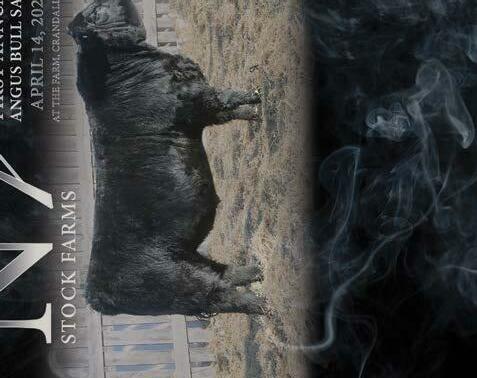
The newspaper offers the latest industry news, interesting features, producer profiles, and updates on the activities of MBP eight times per year.
Cattle Country is the paper for anyone involved in beef production, industry stakeholders, and partners, as well as rural communities. It is also read by government staff and elected officials.
Manitoba Beef Producers has launched a survey to ensure the newspaper is meeting the needs of the sector and the readership. All responses will be kept confidential and used by MBP staff to guide decision making with the newspaper.
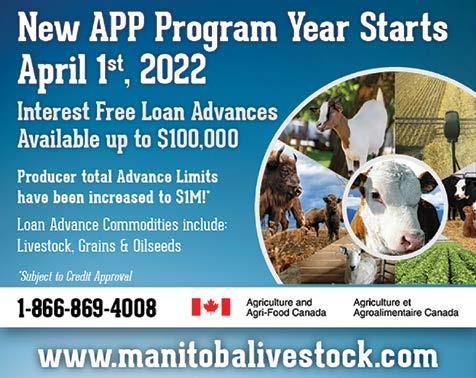
To access the survey, please input the following URL into your browser: https://www.surveymonkey.com/r/J3W99VM or follow these steps:
Hold your smartphone or tablet over the QR Code so that it’s clearly visible within your smartphone’s screen. Two things can happen when you correctly hold your smartphone over a QR Code.
1. The phone automatically scans the code.
2. On some readers, you have to press a button to snap a picture, not unlike the button on your smartphone camera. If necessary, press the button.
Presto! Your smartphone reads the code and navigates to the intended destination, which doesn’t happen instantly. It may take a few seconds on most devices.
3 CATTLE COUNTRY March 2022 www.mbbeef.ca
N7 STOCK FARMS ALLAN AND CAROLYN NYKOLIATION TY, LANE AND CASEY CRANDALL, MB H: 204-562-3508 C: 204-748-5128 GERALD AND WENDY NYKOLIATION 204-851-1788 Farm: 204-562-3530 SALE MANAGED BY Chris Poley: 306-220-5006 Shane Michelson: 403-363-9973 Ben Wright: 519-374-3335 VIEW THE CATALOGUE ONLINE AT BUYAGRO.COM Offering progeny from: EF Titan 545, N7 Tony 91F (Shipwheel Montana 2600 grandson), N7 International 37F (S A V International 2020), N7 Flat Top 39G (Werner Flat Top 4136 son), N7 Angus Valley 36G (S A V Angus Valley 1867)
Update on administration by-law changes, resolutions debate, from MBP’s 43rd Annual General Meeting

Proposed amendments to the Manitoba Cattle Producers Association (operating as Manitoba Beef Producers) administration by-law and resolutions debate were on the agenda when MBP held its 43rd Annual General Meeting virtually on February 10.
By-law Amendments
AGM delegates approved amendments to the organization’s administration by-law allowing for the option of one additional term of service for an interested MBP director. This means that a director can now serve up to four consecutive two-year terms with MBP’s board, provided they remain eligible to serve.
A provision was added to the by-law related to appointments to external committees. The board of directors may permit, from time to time, members who are in good standing in accordance with the by-law to represent the Association on provincial, national and other boards.
District Configurations
The list of districts in the administration by-law has been updated to reflect municipal amalgamation processes that have taken place in recent years, including local government name changes. This has also meant a slight reconfiguration of where certain local governments are now listed, affecting Districts 5, 7, 8 and 13. The updated listing is as follows:
District number one shall comprise all of the area bounded by the outer limits of the following Municipalities, as the case may be, described under the Municipal Status and Boundaries Regulation (the “Regulation”) to The Municipal Act (Manitoba): Boissevain-Morton, Brenda-Waskada, Grassland, Deloraine-Winchester, and Two Borders.
District number two shall comprise all of the area bounded by the outer limits of the following Municipalities and Rural Municipalities (“RM”) as described in the Regulation: Argyle, Cartwright-Roblin, Killarney-Turtle Mountain, Lorne, Louise, Pembina, and Prairie Lakes.
District number three shall comprise all of the area bounded by the outer limits of the following Municipalities and RMs, as the case may be, as described under the Regulation: Cartier, Dufferin, Grey, MacDonald, Portage la Prairie, Rhineland, Roland, Stanley, Thompson and those portions of Montcalm, Morris and Ritchot which lie on the West of the Red River.
District number four shall comprise all of the area bounded by the outer limits of the following Municipalities and RMs, as the case may be, as described under the Regulation: De Salaberry, EmersonFranklin, Hanover, La Broquerie, Piney and Stuartburn, those portions of Montcalm, Morris, and Ritchot which lie East of the Red River, those portions of Springfield, Ste. Anne and Taché and which lie South of the Trans Canada Highway and all those portions of Townships One to Eight inclusive in Ranges Fourteen to Seventeen East of the Principal Meridian in Manitoba inclusive, which lie South of the Trans Canada Highway and which are not included in the said Rural Municipalities of Piney and Reynolds.
District number five shall comprise all of the area bounded by the outer limits of the following Municipalities and RMs, as the case may be, as described under the Regulation: Cornwallis, Elton, Norfolk-Treherne, North Norfolk, Oakland-Wawanesa, Glenboro-South Cypress, and Victoria.
District number six shall comprise all of the area bounded by the outer limits of the following Municipalities and RMs, as the case may be, as described under the Regulation: Pipestone, Riverdale, Sifton, Souris-Glenwood, Wallace-Woodworth, and Whitehead.
District number seven shall comprise all of the area bounded by the outer limits of the following Municipalities and RMs as described under the Regulation: Ellice-Archie, Hamiota, Prairie-View, Riding Mountain West, Rossburn, Russell-Binscarth, and Yellowhead.
District number eight shall comprise all of the area bounded by the outer limits of the following

Municipalities and RMs, as the case may be, as described under the Regulation: Clanwilliam-Erickson, Glenella-Lansdowne, Harrison-Park, Minto-Odanah, Oakview, North Cypress-Langford, Rosedale, and West Lake-Gladstone.
District number nine shall comprise all of the area bounded by the outer limits of the following Municipalities and RMs as described under the Regulation: Alexander, Brokenhead, East St. Paul, Lac Du Bonnet, Rockwood, Rosser, St. Andrews, St. Clements, St. Francois Xavier, West St. Paul, Whitemouth, Woodlands, the Local Government District of Pinawa, all those portions of Reynolds, Springfield, Ste. Anne and Taché which lie North of the Trans Canada Highway and all those portions of surveyed and unsurveyed Townships Eight to Thirty-six inclusive and Ranges Four to Seventeen East of the Principal Meridian in Manitoba inclusive which lie North of the Trans Canada Highway and East of the East shore of Lake Winnipeg and which are not included in the said Rural Municipalities and Local Government Districts, and including the City of Winnipeg.


District number 10 shall comprise all of the area bounded by the outer limits of the following Municipalities and RMs, as the case may be, as described under the Regulation: Armstrong, Bifrost-Riverton, Fisher, Gimli, and all of those portions of surveyed and unsurveyed Townships Twenty-three to Thirty-seven inclusive and Ranges One to Eight East of the Principal Meridian in Manitoba inclusive and One to Three West of the Principal Meridian in Manitoba inclusive, which lie West of the East shore of Lake Winnipeg, including all of the Islands in Lake Winnipeg within the said Townships and Ranges, and which are not included in the said Municipalities and RMs.
District number 11 shall comprise all of the area bounded by the outer limits of the following Municipalities and RMs, as the case may be, as described under the Regulation: Coldwell, Grahamdale, St. Laurent, and West Interlake, and all those portions of surveyed and unsurveyed Townships Twenty-six to Forty-eight inclusive, Ranges Four to Twelve West of the Principal Meridian in Manitoba inclusive which lie East of the West shore of Lake Manitoba, West of the West shore of Lake Winnipeg and South of the South bank of the Saskatchewan River, which are not included in the said RMs.
District number 12 shall comprise all of the area bounded by the outer limits of the following Municipalities and RMs, as the case may be, as described under the Regulation: Alonsa, Lakeshore, McCreary, Ste. Rose, and all those portions of surveyed and unsurveyed Townships Twenty-nine to Fortyeight inclusive, Ranges Thirteen to Eighteen West of the Principal Meridian in Manitoba inclusive which lie East of the East shore of Lake Winnipegosis and South of the South shore of Cedar Lake, which are not included in the said Rural Municipalities.
District number 13 shall comprise all of the area bounded by the outer limits of the following Rural Municipalities as described under Part III, the Municipal Boundaries Act,
Continuing Consolidated Statutes of Manitoba, M250: Dauphin, Ethelbert, Gilbert Plains, Grandview, Roblin and Mossey River.
District number 14 shall comprise all of the area bounded by the outer limits of the following Municipalities and RMs, as the case may be, as described under the Regulation: Minitonas-Bowsman, Mountain, Swan Valley West, and all those portions of the Province of Manitoba lying North of the North Boundary of Township Twenty-seven which are not included in Districts One to Thirteen inclusive, and the said Rural Municipalities and Local Government Districts.
Resolutions Debate
MBP’s board of directors agreed to accept in writing late resolutions for consideration for debate at the AGM. One such resolution related to the Verified Beef Production Program was debated and carried as follows:
Whereas a number of Manitoba beef producers participate in Verified Beef Production Plus (VBP+), a program that enables certified Canadian beef cattle farms and ranches to prove that these operations adhere to the highest standards for food safety, animal care and environmental stewardship, which is important when it comes to maintaining public confidence in beef production; and
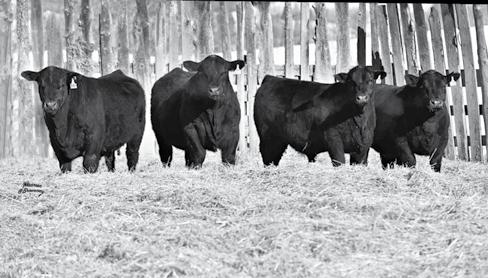
Whereas in the past cost-shared funding was available through successive agricultural policy frameworks to help Manitoba beef producers implement beneficial management practices (BMPs) related to their participation in the VBP program (e.g. food safety on-farm, biosecurity and animal care BMPs), but this funding is not available to them under the current Canadian Agricultural Partnership Ag Action Manitoba Program; and,

Whereas the priorities outlined in the November 10, 2021 Guelph Statement about the Next (agricultural) Policy Framework (NPF) deal with focus areas such as advancing sustainable agriculture and agri-food, building sector capacity, the environment, and resiliency and public trust, among others; and

Whereas the aforementioned NPF priorities include supporting the agriculture sector “to develop, adapt and enhance assurance systems”, and the beef industry believes that government investments in BMP initiatives are beneficial for producers and also help governments meet their policy objectives related to sustainable agriculture and agri-food production.
Be it resolved to recommend that Manitoba Beef Producers (MBP) advocate for the reinstatement of costshared beneficial management practices related to the Verified Beef Production Plus program as part of any assurance programming that will be offered in the Next Policy Framework (2023-2028).

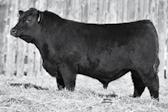
4 CATTLE COUNTRY March 2022 www.mbbeef.ca
ANNUALBULL&FEMALE SALE HALTERBREAKINGDONKEYS&HALTER EndsMarch26th,2022at6:00pm TIMEDONLINEAUCTION StartsMarch24th,2022at9:00am GotoDLMStoLogin/Bidat www.farmgatetimedauctions.ca ContactScottTibble Cell:(204)734-0210 Home:(204)539-2570 Videoscanbeviewedat www.cattlevids.ca FindusonFacebook SwanHillsRanch
New polycrop establishment insurance provides more options for Manitoba producers
BY: ANGELA LOVELL
Although Manitoba livestock producers have different options for insuring their annual and feed crops, including forage, pasture and hay insurance, they had no way to insure multi-species polycrops.
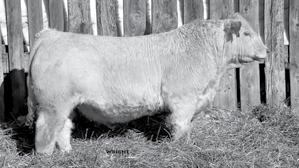
That’s changed this year with the launch of a new Polycrop Establishment Insurance (PEI) that Manitoba Agricultural Services Corporation (MASC) is offering to producers this spring to provide financial assistance if an eligible polycrop fails to establish.
“Polycrops have become more commonplace here in Manitoba, so a business risk management program that will support these type of production systems is important to have,” says Carson Callum, General Manager of Manitoba Beef Producers (MBP) “It’s something we have advocated for some time and it’s good to see MASC broadening their offerings to producers to recognize these practices.”
MASC meets on a regular basis with groups like MBP and relies on them to keep them updated of new cropping practices and requirements for updates to insurance programs, says David Van Deynze, Chief Product Officer at MASC.
“MBP was instrumental in getting this polycrop insurance going,” Van Deynze said. “They made us aware that more producers are growing polycrops, and there was no insurance option for them, so we thought the establishment insurance was a good place to start as we learn more about this practice.”
How it works
With the PEI program, producers can select coverage at either $40 or $80 per acre if the polycrop, or a portion of it, fails to establish. Producers need to make their selection by March 31, and it’s important to note that even if they have a current contract with MASC, they will need to contact their local MASC office to let them know they want to add the PEI option to their existing contract for 2022.
MASC defines polycrops as a mix of two or more annual crops, other than greenfeed, grown simultaneously on the same acre for the purposes of livestock feed, soil restoration or green manure.
Eligible crops in polycrop mixes include warm-season grasses like corn, millet and sorghum, cool-season grasses like barley, oats or triticale, legumes such as field peas, forage peas or hairy vetch and brassicas like kale, forage radishes and purple-top turnips. Polycrops must be seeded by June 25 to be eligible for coverage and coverage ends on August 31.
Higher seed costs
The PEI reflects the fact that seed costs for polycrops are typically higher than for annual or single forage crops. Scott Duguid, who grew around 400 acres of polycrops and 300 fall cover crops on his farm near Gimli last year says his seed costs for multi-species polycrops run anywhere from $25 to $45 per acre above a cereal greenfeed depending on the mix and his goals.
“In a dry year like last year, where the crops were pretty much failures, if I had got my $35 per acre back it would have made it easier to go ahead for this year,’ Duguid says.
Duguid is pleased with the way the new polycrop insurance program looks. “It looks very similar to MASC’s forage establishment insurance, so it’s something [producers] can understand,” he says. “And it includes a lot more species than I expected as well. I think this is a very good start for crop insurance, and they can start collecting data on it and maybe in the future it will evolve again.”
Many reasons to grow polycrops
Producers commonly grow polycrops primarily to provide additional, flexible feed sources for their livestock, but they can also help improve soil health and resiliency of forage and cropping systems to things like drought or excess moisture conditions.
“With a polycrop you can still have growth in fall for grazing after you have taken a cut for green feed, silage or bales,” says Larry Wegner, past-chair of the Manitoba Forage & Grassland Association (MFGA), which has long been promoting regenerative agricultural practices like polycrops and has also advocated for an insurance option for these types of crops.
Last year Wegner planted a 12-species polycrop on his ranch near Virden, and although it wasn’t a stellar year because of the drought and heat, because of the diversity of species the crop wasn’t a complete write off either.
“Even in a dry year like last year it was amazing to see how certain crops flourished,” Wegner said. “The peas took a beating all year but they were still there in fall, and although the annual, cool season crops burnt up, the warm season ones came when we got moisture later in the fall, and they gave us a little bit of grazing, so at least we had something.”
Interest in polycrops is definitely growing, and the PEI will provide an added incentive for producers new to polycrops to give them a go.
“More producers are definitely looking at polycrops but some were hesitant to try them because they couldn’t get insurance to protect themselves,” Wegner says. “This PEI program will give the new producers a chance to try this and protect their investment going into it.”
MASC provides a factsheet and more information about the Polycrop Establishment Insurance on its website at https://www.masc.mb.ca/masc.nsf/ fact_sheet_901_polycrop_establishment.html
New polycrop establishment insurance available through MASC
(Province of Manitoba News Release)
Manitoba Agriculture is advising dollar values for many crops insured in Manitoba are mostly higher than the previous year and have reached record levels in many cases, Agriculture Minister Derek Johnson announced January 25th
Total AgriInsurance coverage for 2022 is expected to exceed $4.66 billion on 9.8 million acres. This means the average coverage is estimated at $463 per acre, compared to $321 per acre in 2021. This substantial increase in coverage reflects the expectation of continued strength in commodity prices into the 2022 crop year.
“With a widespread drought throughout the province, 2021 was a difficult year for many Manitoba farmers,” said Johnson. “We’re proud to increase our support to the agricultural sector as we value its strength as a driving force to our economy.”
AgriInsurance premium rates have increased by about 10 per cent due to the reduced program surplus as a result of record payments in 2021. Premiums per acre will also be higher for most crops due to the increased coverage.
Based on industry and producer feedback, several other program enhancements for 2022 include:
The introduction of a new Polycrop Establishment Insurance that will provide financial assistance to Manitoba farmers if an eligible polycrop fails to establish. Polycrops are a mixture of two or more annual crops other than greenfeed that are grown simultaneously on the same acreage for the purpose of livestock feed, soil restoration or green manure.
An increase in the indemnity level for table and processing potatoes destroyed prior to harvest from 85 per cent to 90 per cent, resulting in a better reflection of current potato harvesting costs.
The vegetable acreage loss insurance has been updated to reduce the minimum required acres for the program to one-half from three. This will provide smaller commercial producers with an effective risk management tool.
The AgriInsurance program is a risk management tool for Manitoba farmers to protect against production shortfalls and quality losses caused by natural perils. The program is administered by Manitoba Agricultural Services Corporation (MASC).
Under the Canadian Agricultural Partnership, AgriInsurance premiums for most programs are shared 40 per cent by participating producers, 36 per cent by the Government of Canada and 24 per cent by the Manitoba government. Administrative expenses are paid 60 per cent by Canada and 40 per cent by Manitoba.
The hail insurance program, administered by MASC outside the scope of the Canadian Agricultural Partnership, will also see increased coverage levels for 2022. Maximum hail dollar coverage is increasing to $400 per acre from $300 per acre, based on higher expected gross revenue for most crops. The 2022 premium rates are the same for most risk areas and expected coverage will increase to $1.5 billion from $1.1 billion.
5 CATTLE COUNTRY March 2022 www.mbbeef.ca
Sale Manager: 306-584-7937 Helge By 306-536-4261 Jon Wright 306-807-8424 charolaisbanner@gmail.com View the catalogue, videos and bid online at www.bylivestock.com Sale broadcast live at By Livestock Online at www.bylivestock.com PRAIRIE Bull Sale DISTINCTION TUESDAY, MARCH 29TH, 2022 1:00PM DST • Beautiful Plains Ag Complex, Neepawa, MB Offering 19 TwoYear Old & 14 Yearling Charolais Bulls • White, Tan, Red Something for everyone Quality offering from 4 Manitoba Breeders
Increases to MASC lending limits will help Manitoba producers

(February 10, 2022 Province of Manitoba News Release) The Manitoba Agricultural Services Corporation (MASC) is increasing limits on several lending products to help the province’s producers manage demands of farming in today’s economy, Agriculture Minister Derek Johnson announced.

“Our government recognizes the economic pressures on producers as they strive to succeed in the competitive world of agriculture, despite the challenges presented by last year’s drought and the impact of the ongoing pandemic,” said Johnson. “In response, MASC has increased lending limits to provide our farmers, especially the younger generation, with financial options that give them greater flexibility in managing, establishing or expanding their operations.”
MASC’s lending programs provide Manitoba’s agricultural producers access to credit with reasonable interest rates and flexible repayment terms. The corporation provides direct loans and stocker loans, and guarantees loans made by private-sector financial institutions to help create and expand farming operations in rural Manitoba, thereby supporting the transition to the next generation of farmers. Limits were last updated in 2018.
Effective April 1, 2022, the direct loan limit will increase to $4.25 million from $3.5 million, reflecting increased land values and operating costs. Loans may be used to purchase agricultural land and buildings, agricultural equipment, breeding livestock and quota for supply-managed commodities. They may also be used for construction or renovation of farm buildings, greenhouses and nurseries, consolidation and refinancing of debt, and financing operating expenses.
Limits on stocker loans, which provide producers with short-term financing for the purpose of purchasing feeder cattle and lambs or as a cash advance on their retained feeder animals, are also being increased. As well, effective April 1, 2022, stocker loan limits will increase to $750,000 from $500,000. With Manitoba’s beef herd reduced significantly because of recent drought years, increasing the lending limit to $750,000 from $500,000 provides an excellent tool to help producers rebuild their herds, the minister noted.

Limits on the Manitoba Livestock Associations Loan Guarantee program, which encourages feeding cattle in the province thereby providing several economic spinoffs, will increase to $750,000 from $500,000 and association limits will increase to $12 million from $8 million, both as of April 1, 2022.
“By providing lending programs, our government further supports and encourages the sustainability, development and diversification of agriculture and the rural economy of Manitoba,” said Johnson. “These changes will help ensure that MASC’s lending products remain relevant to producers and that capital is available. Supporting growth in the agricultural industry is important as it is a key driver of our provincial economy.”
For more information, contact an AG-MASC Service Centre or go to www.masc.mb.ca
2022 bull sales
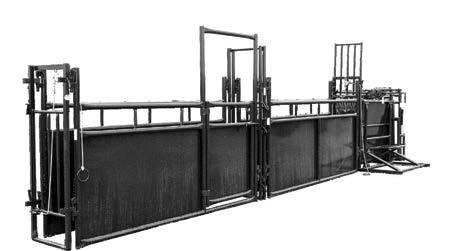

Feb.

Feb. 27-28 Horner / Downhill/ TSN Online Simmental Bull Sale, FarmGateAuctions.ca Feb. 28 M&J / Glasman Farms Simmental & Angus 2 Year Bull Sale, Russell, MB
Mar. 2 Maple Lake Stock Farms Kick Off to Spring Bull Sale, Hartney, MB


Mar. 6 WLB Livestock Online Bull Sale , FarmGateAuctions.ca


Mar. 3 JP Cattle Co. Annual Simmental & Angus Bull Sale, Mcauley, MB Mar. 7 Canadian Central Bull & Female Simmental Sale, Neepawa, MB Mar. 8 Bonchuk Farms Annual Bull Sale, Virden, MB Mar. 9 Mar Mac Farms & Guests Simmental, Red & Black Angus Bull Sale, Brandon, MB Mar. 11 Rainbow River Simmentals 7th Annual Bull & Female Sale, FarmGateAuctions.ca Mar. 11-12 83 South Simmental Bull Sale, FarmGateAuctions.ca

Mar. 12 Rancher’s Select 3rd Annual Simmental Bull Sale, Neepawa, MB Mar. 13 Crowe Bros. Online Bull Sale, FarmGateAuctions.ca Mar. 13-14 McIntosh Ranch Online Simmental Bull Sale, FarmGateAuctions.ca Mar. 13-15 AJB Online Simmental Bull Sale, FarmGateAuctions.ca Mar. 14 Oakview/Perkin/Triple R Simmental Bull Sale, Darlingford, MB Mar. 15 Prairie Partners Bull & Female Sale, Killarney, MB Mar. 16 Van De Velde Cattle & Delight Simmentals Online Sale , FarmGateAuctions.ca Mar. 17 Transcon’s Premium Beef Simmental Bull Sale, Neepawa, MB Mar. 18 High Bluff Stock Farms Charolais & Simmental Bull Sale, Inglis, MB Mar. 21 Transcon’s Cattle Country Bull Sale, Neepawa, MB Mar. 25 Cattle Capital Bull Sale, McCreary MB Apr. 2 Lundar Bull Sale, Lundar, MB

6 CATTLE COUNTRY March 2022 www.mbbeef.ca
President: Melissa McRae 204-573-9903 Secretary: Laurelly Beswitherick 204-637-2046 b2@inetlink.ca www.mbsimmental.com
21 Rendezvous Farms 18th Simmental Bull & Female Sale, Ste. Rose du Lac, MB
check us out at CALF PROCESSING THE OUTST A N D ING BRAND HI-HOG FARM & RANCH EQUIPMENT LTD. Est. 1974 1-800-661-7002 hi-hog.com Available @ Federated Co-op Ag Centres BETTER BY DESIGN ���� CALF SORTING GATE COW | CALF FEEDERS CREEP FEED PANEL FEED DISPENSER MHHCpays producers to conserve, restore, or enhance wildlife habitat For more information callRoy Bullion (204)729-7592or visit www mhhc mbca All bulls sold private treaty off the ranch on a first come basis “Commercially Based Forage Genetics” BLACK ANGUS SEEDSTOCK PUREBRED & COMMERCIAL (204) 773-6800 • Shellmouth, MB NERBASBROSANGUS.COM
Efforts continue to address ACL program concerns
Around 90 per cent of his Myhre’s land base is agricultural Crown lands, which he relies on to provide the forage he needs for his 700 cow/calf herd. For Myhre, the ACL online auction held in February didn’t go well. Unable to afford the rent increase, which has tripled, he had no choice but to give up the ACL acres he had leased for the past 20 years. The rent increase for Myhre has meant he’s had to pay an extra $100,000 over the last three years. Rent now also has to be paid in advance, whereas under the old program it could be paid in the fall once producers had sold their calves.
“It hasn’t forced us out of business yet, but a number of our neighbours have been forced out because the land is not productive land. They can’t more intensely farm it because it’s fragile land, they have to farm it sustainably, so they had nowhere to turn,” Myrhe says.
Shorter leases a disincentive to improve the land Atkinson, who farms near Neepawa holds both ACL hay and pasture leases, as do most of the other people serving on the ACL Committee, so they well know the frustration and concerns that producers have with the process.

One of the biggest concerns, says Atkinson, is around the lease term, which has been shortened from 50 to 15 years, and which disincentivizes producers to make improvements to their Crown lands.
“As part of its protein strategy the province has stated it wants to achieve a 15 per cent increase in the productivity of ACL. Producers are trying to sustainably manage the land, providing valuable ecosystem services, while at the same time working to enhance their pasture and forage capacity,” Atkinson explains.
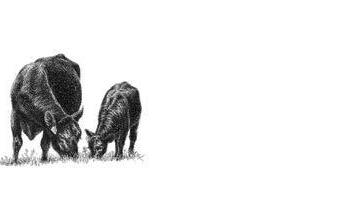
“If I build new fences and put in watering systems, I’ve really increased the land’s value but the chances are in 15 years, I’m not going to get the value back out of those improvements,” Atkinson says. “This makes lease holders more reluctant to invest in improvements. We’d like to have further discussions with the province about the improvements situation, and about recognizing the valuable ecological goods and services producers are providing that benefit all Manitobans.”
Another concern is that the method of evaluating any improvements that have been made could be a potential source of conflict, Atkinson adds.
Under the new process, the outgoing leaseholder must negotiate a value for the improvements with the incoming leaseholder, and if they can’t agree, remove the assets within 30 days. That’s not feasible, especially with things like dugouts or even fencing during the winter months, and it still doesn’t compensate producers for the cost to install the improvements in the first place.
“If you have a fence line or dugout there, it’s a pretty free-for-all system,” Atkinson says. “Something needs to be designed that doesn’t potentially incite conflicts between outgoing and incoming leaseholders.”
The new ACL program has also eliminated unit

transfers, which were allowed under the old system so that a retiring or exiting producer could transfer the remainder of their Crown lands lease along with the rest of their farm assets.
“In the old system, if a producer sold his unit, he would get paid for his improvements,” Myhre says. “There was some good will involved then, because the [purchaser] knew it wasn’t just tangible assets [he was buying], but the fact that the producer had made it into a working ranch and everything that goes with it, so he could have sold his ranch for more. Now, when he puts it into the auction people are bargaining, if they even take it, because some land is not even being taken up in the auction because it doesn’t work. Potentially, a producer, for four generations of work, could walk away with nothing.”
Online auction process needs more transparency
The move to online auctions is also causing some concerns on a number of fronts. Producers are frustrated that they don’t know who they are bidding against.

“Something that was committed to throughout consultations was that bidders would know who we were bidding against,” Atkinson says. “We aren’t seeing that.”
The list of lands coming up for auction are released only a short time before the auction, giving producers little time to scout the parcels and see what they are bidding on.
“We want to encourage people to know the parcels of land and what they’re getting into, and it would be nice to see something like a working list of potential parcels that could come up in the next couple of years so producers can view them during the grazing season.”
Most producers are doing a good job of managing their ACL acres and they want to be recognized for that, not just monetarily, but from the aspect of the value of their stewardship to the public good.
“On my Crown land, I pay rent, and taxes, and liability insurance on it, and I provide a lot of service in keeping that land valuable for the province,” Atkinson says. ‘People want to hunt and sightsee on that land because it’s well managed and it creates habitat. I think that we need some ability to protect that investment too. I’m not saying keep everybody off, I want to showcase that what we are doing is good, but in an informed manner that protects the investment for the producers and public safety also.”
Informed access has long been a thorny issue with Crown lands, which the general public have a right to use for recreational and other purposes. The current ACL rules do not always ensure adequate protection for leaseholders, animals out on the landscape, or the public. Atkinson knows firsthand that some people do not always inform the lease holder that they intend to access the Crown lands or respect the property and safety.
“I shouldn’t go out there in the middle of a fire ban and find somebody camping in the middle of my hay field. I don’t have control over somebody going in or out and not closing the gate and the cattle end up on a roadway. I think it’s fair to ask for a way to protect our investments and protect public safety while also recognizing that the right to public access is also there. It’s been a challenge to get that recognized and is frustrating,” says Atkinson. “So we continue to raise the importance of informed access with the provincial government.”
Enforcement an ongoing issue
Producers were also frustrated with elements of the old ACL system and many lobbied for updates, but one of the biggest frustrations had always been around enforcement of the processes, which, Atkinson says, has not improved under the new ACL program.
“One thing we certainly didn’t gain on, and actually lost on, was enforcement,” he says. “I’m not criticizing the local ACL extension specialists, but the staffing leveling has become very small in recent years. We have seen huge rental rate increases but we’ve not seen any of that put back into Crown lands in terms of staffing the department back to where it needs to be. Producers are paying up to four times more out of pocket and it’s important they see a return from that in terms of services.”
New Minister willing to listen
With COVID restrictions and widespread drought, governments have had plenty to deal with and it’s made having conversations tougher than usual, but Atkinson is optimistic that there will be some meaningful discussions, and hopefully a review of the current ACL process.
“I have begun to engage with beef producers and other stakeholders on the Agricultural Crown Lands program,” said Johnson. “I want to hear all views regarding how we can better use our agricultural Crown land resource to ensure sustainable growth of Manitoba’s livestock industry, which is critical. Growth comes through productivity, modernization and maximizing usage of all our assets including Crown land. I also want to ensure that our approach will consider how young and beginning farmers can access agricultural Crown land that in the past may not have been available to them.”
It’s a complicated file and it’s important to have those conversations, get everybody up to speed, and on the same page,” Atkinson says. “I’m hopeful that we can have those conversations going forward because producers have concerns and frustrations about it.”

7 CATTLE COUNTRY March 2022 www.mbbeef.ca
Page 1
MARCH 12 2022 50 RUGGED 2 YEAR OLD BLACK & RED ANGUS BULLS +4 FLECKANGUS BULLS MODERATE MATERNAL EASY CALVING EASY FLESHING www.ediecreekangus.com EDIE CREEK BIG TIME 848C OCC EASY RED 868A ASHERN, MANITOBA FOCUSED ON BREEDING MATERNAL GRASS BASEDgenetics SALE STARTS AT 1PM (204) 471-4696 JONATHAN (204) 232-1620 STEFAN 20 BRED HEIFERS AVAILABLE ON SALE DAY! Keystone livestock specializing in livestock insurance for over 45 years LIVESTOCK INSURANCE Lois McRae & Joyce Gordon RR 1 Box 57 Brandon, Manitoba R7A 5Y1 h: 204-728-3058 c: 204-573-5192 f: 204-727-7744 marmacfarms1@gmail.com SERVICES
Drought relief program expanded for Manitoba livestock producers under AgriRecovery framework
(February 2, 2022 Joint Government News Release)


The governments of Canada and Manitoba are continuing to support livestock producers by expanding the eligibility of expenses under the Livestock Feed and Transportation Drought Assistance program.
Today, federal Minister of Agriculture and AgriFood Minister Marie-Claude Bibeau and Manitoba Agriculture Minister Derek Johnson announced the ad
accessing feed, water and pasture as part of the program to address the challenges faced throughout the drought in 2021.
“Canadian producers have stayed strong and resilient as they took care of their land and animals, while facing natural disasters,” said Bibeau. “Our governments recognize the need to adjust risk management programs to support them. By expanding the eligibility criteria of allowable expenses under AgriRecovery, we are helping
Manitoba producers get feed to their herds and move forward through this challenging period.”
“Manitoba producers care deeply about their livestock and these programs offer a flexible and responsive approach that will help them recover from the drought and plan for the 2022 growing season,” said Johnson. “Since the program was introduced in August, industry stakeholders have told us that the needs of producers had changed. In response, we recognized that producers need additional help with other extraordinary expenses to recover from the drought and today’s announcement addresses that expressed need.”
Under the Canadian Agricultural Partnership, the Livestock Feed and Transportation Drought Assistance program was established to help producers purchase and test feed for livestock to maintain their breeding herds, including through the transport of purchased feed from distant locations.
“Manitoba Beef Producers thanks the federal and provincial governments for listening to our concerns about how to make the programs more reflective of the many different types of strategies producers have had to use to source critical feed and water resources for their livestock,” said Tyler Fulton, president, Manitoba Beef Producers. “These important additions will better address the wide array of extraordinary costs arising due to the drought and will help mitigate some of the negative financial impact it is having on producers.”
Many producers have obtained feed and maintained their herds through baling extra acres, renting extra pasture, hauling water and other extraordinary measures.
Among the additional extraordinary costs now covered are expenditures related to rentals of additional crop or pasture acres, temporary fencing for supplemental grazing, hauling water, harvesting extra acres or hauling self-produced feed from distant locations.
Eligible animals under the Livestock Feed and Transportation Drought Assistance program include breeding animals of beef and dairy cattle, horses raised for pregnant mare urine, sheep, goats, bison and elk. Producers must support a minimum of 10 animals to qualify for assistance. The program covers feed, feed transportation and related extraordinary expenses incurred between June 1, 2021, and March 15, 2022. The Livestock Feed and Transportation Drought Assistance program has processed more than 1,200 claims and will accept new claims until a deadline of April 15.

The governments of Canada and Manitoba will continue to work in collaboration to support farmers during this challenging period to ensure they have access to the necessary resources to maintain competitiveness.
The Livestock Feed and Transportation Drought Assistance program complements two other AgriRecovery programs offered to producers. The Herd Management Drought Assistance program helps producers replace breeding animals culled due to drought. The Livestock Transportation program offers assistance to producers facing extraordinary costs to transport breeding animals of beef cattle, sheep and goats to alternate locations to feed, up to 1,000 kilometres. Both programs are part of the Canadian Agricultural Partnership with funding shared on a 60-40 federal-provincial basis.
Under the Canada-Manitoba AgriRecovery Drought Assistance program, the Government of Canada is investing up to $93 million and the Manitoba government is investing $62 million to cover eligible extraordinary costs, for total program funding of up to $155 million.
For detailed program information, producers can contact their AG-MASC Service Centre or call toll-free at 1-84-GROW-MB-AG (1-844-769-6224). They can also visit: www.manitoba.ca/agriculture/canadian-agricultural-partnership/business-risk-management-programs/ index.html
Manitobans can stay up to date on the province’s agricultural programs and services by following Manitoba Agriculture on Twitter at https://twitter.com/MBGovAg
8 CATTLE COUNTRY March 2022 www.mbbeef.ca
58th Annual Manitoba Test St ation Bull And Female Sale March 26, 2022 St arting at 1:00 p m sharp SUNVILLE SIMMENTALS Duane & Nadine, Tara-Lynn, Trystann & Addyson Caumartin McCreary, MB Home: (204) 835-2748 Duane: (204) 572-6828 dncaumartin@gmail.com OVERBY STOCK FARM Neil Overby & Deanne Wilkinson Ste. Rose du Lac, MB (431) 233-3505 overbystockfarm@gmail.com CattleCapital_MBCattleProducers_Feb21.indd 1 2/5/2022 2:32:29 PM
New regenerative accelerator project on the prairies
 BY: WAYNE HILDEBRAND
BY: WAYNE HILDEBRAND
In an effort to improve soil health, Holistic Management Canada has received $324,179 from Manitoba’s Conservation Trust to support new Regenerative Accelerator projects across the province.
Ninety-five per cent of our food is directly or indirectly produced on our soils. Scientists are warning that soil health has been degrading faster than our current ability to replenish it.
A Soil Health Report Card for Canada was produced by the Soil Conservation Council of Canada in 2021. One of its conclusions was not encouraging: “Poor soil health caused by decades of past management practices is cutting into farm profits and hurting the environment. Greater attention must be given to the costs and benefits of soil management practices going forward.”
“The focus of regenerative farming is improving soil quality by building organic matter back into the soil,” said Dana Penrice, project coordinator for Holistic Management Canada. “Zero and minimum tillage were a fantastic start to building soil, but we need to expedite soil improvement strategies like intercropping, cover cropping, eliminating tillage, adding organic matter, and integrating livestock into cropping systems.”
“We have been working with five farmers across Manitoba to provide support for the transition to regenerative farming practices,” said Dana. “Project goals are to improve soil quality, boost production, reduce inorganic fertilizer and pesticide applications, reduce soil erosion, sequester carbon, and increase the water holding capacity of soils. We also want to preserve
and restore pastures and grazed grasslands by helping farmers implement planned grazing systems.”
Cam and Shelley Hamilton along with their son Liam and daughter Andrea are participants in the Regenerative Accelerator Project. They operate Fair Valley Farm Ventures, a cow-calf operation on the sandy soils near Glenboro.

“Our sandy soil doesn’t hold inorganic fertilizer and it doesn’t hold water,” said Cam. “With light soils we are always managing for drought. We look to more organic ways to build our soil, store water and provide nutrients.
“Increasing organic carbon and organic matter to improve soil health is a key principle of regenerative farming, so we are experimenting with making bio complete compost from manure,” said Liam. “Adding organic matter helps hold water which improves plant resiliency during dry periods. The compost is loaded with microorganisms which helps with nutrient cycling in the topsoil.”
“We are also trying multi-plant species crops, corn grazing, interseeding and cover cropping to get ground cover, prevent erosion and build fertility,” said Andrea. “The financial support from the Conservation Trust and Regenerative Accelerator Project really helps to minimize the risk associated with trying to implement new soil building strategies.”
“Farmers and their families know that healthy soils are the foundation of their productivity and profitability,” said Dana. “Sharing the outcomes of the Regenerative Accelerator Project is essential to gaining
producer support of regenerative farming.”

Based on the success of the $124,179 Trust-funded first phase, Holistic Management Canada (HMC) was approved for an additional $200,000 in Conservation Trust funding. In Phase Two, HMC will work with an additional 10 farms to increase the ecosystem function of their properties and impact over 4,000 acres.
“What I love about this project is that the ecological services from Regenerative Agriculture go well beyond the farm gate,” Dana said. “These include improved water quality, reduced flooding, improved biodiversity, enhanced wildlife habitat, and sequestering carbon from the atmosphere that helps reduce the impacts of climate change. These benefits are enjoyed by all Manitobans.”
Beginning in 2019, the Government of Manitoba took a unique approach to funding new conservation and climate change adaptation activities by establishing three permanent trust funds at The Winnipeg Foundation. With a total investment of $204 million, the Conservation, GROW and Wetland GROW Trusts are annually awarding $10 million to new projects across Agro Manitoba. The Manitoba Habitat Heritage Corporation, a private charity based in Manitoba, manages the granting programs.
As farmers move to modify farm practices to improve their soil and the environment, it would be nice to see an improvement in Canada’s next Soil Health Report Card.
For more information: Dana Penrice, Coordinator, Holistic Management Canada. Cell phone: 1-204-4412227. Email: coordinator@holisticmanagement.ca
9 CATTLE COUNTRY March 2022 www.mbbeef.ca
Pictured left to right: Cam, Andrea, Liam, and Shelley Hamilton, 2022 corn grazing. (Photo credit: Manitoba Habitat Heritage Corporation)
Liam Hamilton in corn grazing crop (Photo credit: Manitoba Habitat Heritage Corporation)
Andrea Hamilton in six plant species full season cover crop. (Photo credit: Manitoba Habitat Heritage Corporation)
Producer-led groups form coalition; land AAFC’S on-farm climate action projects for Manitoba & Saskatchewan producers
Winnipeg, MB – (Feb 22, 2022) - Manitoba Association of Watersheds (MAW) is pleased to announce that the organization is a successful recipient of Agriculture and Agri-Food Canada (AAFC) On Farm Climate Action Fund Project. The MAW-led project, which was supported by 38 organizations throughout the region, will receive up to $40 million over the two-year project to be delivered throughout Manitoba and Saskatchewan around three key farming practices that benefit climate resiliency in agriculture: rotational grazing, nitrogen management, and cover crops.
“The fight against climate change is not only about reducing Canada’s greenhouse gas emissions, but also helping farmers to innovate and adopt more sustainable farming practices,” said the Honourable Marie-Claude Bibeau, Minister of Agriculture and Agri-Food. “We will continue to do what is necessary to protect our environment and provide farmers with the support needed to make their operations more sustainable for future generations. The On-Farm Climate Action Fund builds on the work already underway by our Government to lower greenhouse gas emissions and help improve longterm climate resiliency in the agriculture sector.”
“We are ecstatic to receive this news,” said Lynda Nicol, MAW executive director. “The project partners we are aligned with all have long history of producer-focused project delivery and producer outreach, which are key components of the project proposal’s success.”


Nicol said the AAFC project will be overseen by a steering committee led by MAW, and including Saskatchewan Association of Watersheds (SAW), Manitoba Forage and Grassland Association (MFGA), Saskatchewan Forage Council (SFC), Manitoba Habitat Heritage Corporation (MHHC), and Manitoba Beef Producers (MBP), in addition to representatives from watershed districts in both Manitoba and Saskatchewan. The project partners will be fully engaged in planning, outreach, mentorship, and producer engagement.
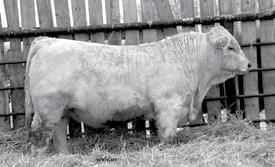




“We are taking a grassroots, regional approach to addressing issues related to climate change in agriculture,” said Garry Wasylowski, MAW board chair.
“Supporting farmers to implement BMPs related to nitrogen management, rotational grazing, and cover cropping will have a positive impact on Canadian agriculture. We are proud to have the opportunity to deliver this programming in Manitoba and Saskatchewan thanks to AAFC.”

Nicol pointed out the front-end work of the MFGA in the organizing of the regional group’s discussions around the proposal opportunity and says the framework and respective group networks, including conservation interests and agriculture groups, are in place to allow the group to move forward quickly under MAW’s leadership.
“This is a project for producers and has been since our very first steps together as a group,” said Nicol. “We are intent on producers seeing the great impacts they can make on their farmlands via this project and are confident in the strength of our delivery partners to move this project forward to communicate, mentor and engage producers efficiently while delivering the on farm climate actions identified by AAFC that are so paramount to this project. We expect more program details will be released in March.”
For More Information: Lynda Nicol, MAW executive director, 204-570-0164, lynda@manitobawatersheds.org
10 CATTLE COUNTRY March 2022 www.mbbeef.ca
QUALITY ANGUS since 1958 Offers for Sale by Private Treaty 50 Yearling Black Angus Bulls and 10 2 yr. old Bulls Sires Represented: *Bar-E-L Candidate 10C *BM Archer 29D *Young Dale Absolute 3D *BJ Harvestor *Young Dale Hi Definition 185B *Black Meadows Feel Good *Young Dale Eden 126E *Musgrave Sky High *Frey Cowboy Logic 181F Young Dale Absolute 3D Fed Responsibly to Ensure Longevity! All bulls are Bunk Fed TMR Silage Ration Fertility Tested and Delivery Available Musgrave Sky High 1535 The WALKERS Miniota, MB Call Bill at 204-567-3782 Several Packages of *Open Heifers (groups of 10) *Cow/Calf Pairs (available end of March) Son of Cowboy Logic 181F KEMBAR ANGUS Colin & Arlene Kirkpatrick, Brandon, MB Phone: (204)-725-3597 or C (204)-761-8526 email: ackirkpatrick@rfnow.com Registered Black Angus Yearling Bulls & Open Heifers for Sale Moderate Birth Weights Performance information available Good dispositions Bulls will be Semen Tested Sires include sons of: KR Cash, Mohnen South Dakota, Merit Sting & PF Fortitude. DIAMOND W CHAROLAIS & RED ANGUS Tuesday, March 22, 2022 – 1:30 pm JTM Livestock, Minitonas, MB 50 CHAROLAIS Two-Year-Old & Yearling Bulls 20 RED & BLACK ANGUS Two-Year-Old & Yearling Bulls 20th Annual Bull Sale Sale Manager: BY LIVESTOCK Helge By 306-536-4261 • Jon Wright 306-807-8424 charolaisbanner@gmail.com Catalogue & Videos online at www.bylivestock.com DIAMOND W CHAROLAIS Orland Walker • Box 235, Hudson Bay, SK S0E 0Y0 T 306-865-3953 C 306-865-6539 diamondw@sasktel.net Sound, semen tested and delivery available Dollars for Quality - As Good of Buying as You Can Do Sale broadcast live at DLMS.ca For more information contact:
43rd MBP AGM looks forward to a better 2022 for beef producers
BY: ANGELA LOVELL
At the Manitoba Beef Producers 43rd annual general meeting held virtually on February 10, Manitoba’s new Minister of Agriculture, Derek Johnson outlined changes to various programs to assist livestock producers who have faced multiple challenges over the past year, with severe drought topping the list.
Johnson announced that as of April 1, MASC’s lending limits will be increased. The limit for direct loans will increase to $4.25 million from $3.5 million to reflect increases in land values and other operating costs. Direct loans can be used to purchase land, buildings, equipment and breeding livestock, for construction or renovation of farm buildings or for debt consolidation and re-financing of some operating expenses.
The limit for stocker loans will increase to $750,000 from $500,000 and producers can make use of these short-term loans to purchase replacement heifers and feeder cattle, or as a cash advance for producers retaining their own feeder animals.
In his address to AGM delegates, Johnson said the limits had been raised to ensure they remain relevant to producers and support the sustainability, development and diversification of agriculture and the rural economy in Manitoba, and as an excellent tool to assist producers to rebuild their herds.
As well, the individual borrowing limit through the Manitoba Livestock Association’s Loan Guarantee Program will increase to $750,000. The maximum borrowing limit per association will also increase to $12 million from $8 million previously.
In late January 2022, the provincial and federal governments announced the expansion of eligible feeds and the addition of extraordinary expenses incurred by producers in accessing feed or pasture or hauling water under the Livestock Feed and Transportation Drought Assistance Program.
In closing, Johnson said: “My department recognizes how much our producers care deeply about their livestock, and these programs will help towards the recovery and ongoing sustainability and growth of our beef sector.”
Federal Agriculture and Agri-Food Minister MarieClaude Bibeau emphasized in her virtual message to delegates the important role that beef producers play in mitigating climate change, and the half-a-billion dollars of funding the federal government has committed to programs that support sustainable practices and clean technology in agriculture.
“The drought was a stark reminder that farmers and ranchers are on the front lines of climate change,” Bibeau said. “Manitoba cattle producers already play a significant role in meeting our sustainability goals, from carbon storage to preservation of wildlife and native forages. Our consumers and trading partners are demanding sustainable food, and Manitoba beef producers can deliver.”
Business risk management program changes
The AGM’s morning session began with an overview of some of the business risk management (BRM) programs available to livestock producers, including updates to existing programs and a few new options for 2022.
To date, Manitoba Agricultural Services Corporation (MASC) has paid out around $48 million to producers affected by the 2021 drought through various forage-related programs, said Jared Munro, President and CEO of MASC.
In addition to existing programs like basic and select hay insurance, forage establishment insurance, hay disaster benefit, pasture and pasture days insurance and greenfeed insurance, MASC is offering a new Polycrop Establishment Insurance Program, for 2022 which covers mixes of annual grazing crops.
There are also changes to the definitions of greenfeed for the Greenfeed Insurance Program to make it more flexible and include novel crops that some producers are using as greenfeed.
“These new programs are based on the input we have received specifically from MBP and your directors,” said Munro.
He also highlighted the Livestock Price Insurance programs (LPI) that provides the opportunity to manage price, basis and currency risk in one product. Producers can lock in a floor price for calves, feeders or fed cattle and the program provides flexible coverage for 75 per cent to 95 per cent of the expected price.
Munro says MASC is concerned that participation in LPI has dropped off over the past few years, and has put together an industry working group, including representatives from MBP, to try and find ways to address
to trigger AgriStability. Removal of RML has made the program much more responsive for some of these farms,” Funk explained.
Another change to AgriStability since 2020 is to private insurance treatment, that means producers getting payments from other private insurance programs will no longer offset and limit AgriStability payments. Instead, the private insurance payments can stack on top of AgriStability coverage.
“As far as the coverage level for the producer, those receipts (for private insurance) still build that reference margin making it more likely that you’ll get higher payments in the future, but when you do get a payment, it’s
issues that producers have identified as reasons for not participating in the program, such as premium volatility.
“Volatility in the futures market drives the premium cost, so looking at ways to dampen that a little bit and make a more stable product is certainly at the highest level of priority,” Munro said. “We are looking forward to continued involvement with the industry to try to make the product work better for producers.”
Next on the agenda was Steve Funk, Director of Ag Risk and Management Resources at MNP, who discussed changes to AgriStability, and tried to dispel some misconceptions around the program, such as how margin drop equates to the productivity of the farm.
The AgriStability margin has three components, Funk explained; production, price and direct inputs. The formula to determine revenue is production multiplied by price. Producers must incur a 30 per cent drop in margin before a payment is triggered under AgriStability, but what does that mean in terms of production, price or revenue?
The revenue component of the margin is highly sensitive to various changes that might trigger an AgriStability payment, Funk said.
As an example, a margin that has $100 of revenue, and $70 of expenses (direct inputs) would be a $30 margin. What is required to make that margin drop by 30 per cent is a $9 drop in revenue ($30 x 0.3 = $9). That represents a nine per cent drop in revenue if the revenue is $100.
“A nine per cent drop in revenue will equate to a 30 per cent margin drop,” Funk said. “What determines how sensitive the drop in revenue is going to be to trigger AgriStability payments is the proportion of expenses relative to the revenue.”
For cow/calf and grains and oilseeds the revenue drop required to trigger an AgriStability payment varies between 13.5 and 19.5 per cent, and for feedlots it is less than 10 per cent.
“This is important to remember because the revenue, price and production drops required to trigger AgriStability are always less than 30 per cent and often substantially less than 30 per cent,” Funk says. “The program is very sensitive to revenue drops and payments could be driven by prices going down, production going down, costs going up and any one of combination of those things. “
Funk also talked about the effect for some livestock and grain operations of removing reference margin limiting (RML) which was one of the recent changes to AgriStability.
“The RML made the program less responsive for some of these beef cow/calf and grain and oilseed farms depending on their eligible expense to eligible revenue ratio, because they would require a higher revenue drop
not going to offset your AgriStability,” Funk said.
MNP has tools on its website for producers to look up changes to AgriStability and access calculators to determine their revenue trigger point if they know the figures that make up their margin.
Market outlook for 2022
With ongoing disruptions in the beef supply chain, producers were looking forward to some predictions on where the market is headed for 2022, and according to Brian Perillat of Canfax, there is good news and some better prices on the horizon.
Both the global demand for beef and wholesale beef prices hit all-time highs in 2021, with exports up 20 per cent in volume and 37 per cent in value. Canadian cattle producers struggled to take advantage, though because of ongoing issues with drought-induced feed shortages that raised their production costs, and no increase in the size of the Canadian herd, so feedlots were importing more cattle from the U.S. to meet the demand from packers.
But, although the U.S. has record numbers of cattle on feed that is helping to keep the supply chain full, their herd has shrunk by around 1.6 million over the past three years, which Perillat says presents a good opportunity for Canadian beef producers.
“I am optimistic for calf prices going forward as we have gone through the peak of this cycle now and are going to be into some sharply lower cattle numbers for the next year or two,” Perillat said. “With less [feeders and calves] around, and less cattle at the processing plants, we will find a better equilibrium if demand remains strong, so there are a lot of dollars that can flow back to producers.”
Despite the drought, culling rates across the Prairies has not been high and there was only a modest decline in the breeding herd, which bodes well as the glut of cattle in feedlots today works its way through the system.
“Most cow/calf producers are resilient in finding some sort of feed, and we are seeing great demand for calves with some new feedlots and a little bit of expansion in the packing capacity in western Canada which has increased production by 30 per cent since 2015,” Perillat said. “Often, Manitoba feeder calf prices are among the strongest in Canada, and we are seeing some strong futures contracts, so we anticipate some stronger prices this year for calves.”
There are still challenges for the sector, including the ongoing competition for land that is driving land prices up in many areas, a potentially higher dollar, high feed costs that put the Canadian industry at a disadvantage to the U.S. and high inflation, that could potentially drive interest rates up. But there is plenty of room for the industry to share the wealth in the year ahead.
12 CATTLE COUNTRY March 2022 www.mbbeef.ca
“With less [feeders and calves] around, and we will find a better equilibrium if demand that can flow back to producers.”
“Wholesale prices were extremely high [in 2021] and fed cattle prices have been average or slightly above the five-year year average, which means producers are getting a smaller share of the consumer dollars,” Perillat said. “As cattle numbers tighten up and slaughter capacity has been tapped out or there’s been a bottleneck, less dollars flow to producers. But we are talking 1.6 million less cows and breeding stock around, that’s going to make the packing plants compete more for protein and there’s some big margins that means they can pass those dollars down to the feeding sector.”
MBP directors and executive update for 2022
The business portion of the AGM began with reports from President Tyler Fulton and General Manger Carson Callum. Both talked about the challenges producers faced over the past year such as drought and ongoing issues around the pandemic. They spoke to the many hours MBP directors and staff have put into lobbying for resources and assistance from the provincial and federal governments, as well as continuing to work on existing files such as changes to business risk management and agricultural Crown lands programs.
encourage you to talk about your experiences in raising beef and caring for the environment with anyone who asks for more information.”
Directors for the upcoming year remain unchanged from 2021, although there are vacancies in Districts 4 and 14. The MBP executive (elected by the Board prior to the AGM) also remains the same: Tyler Fulton, President; Melissa Atchison, Vice-President; Matthew Atkinson, 2nd Vice-President; Mark Good, Treasurer; and, Mike Duguid, Secretary.
The was only one resolution presented and approved this year, which recommends that MBP advocate for the reinstatement of cost-shared beneficial management practices related to the Verified Beef Production Plus program as part of any assurance programming that will be offered in the Next Policy Framework (20232028).

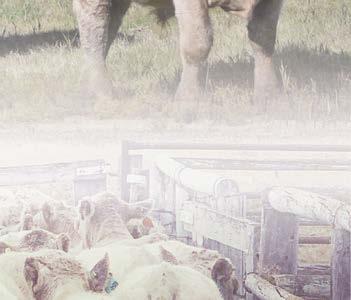


Feedlot industry struggled in 2021 but accomplished much
The feedlot industry imported a lot of cattle and feed from the U.S. last year and that’s driven up costs and hampered the ability of the sector to make money,



with other industry partners to help Canada achieve BSE negligible risk, negotiate Trusted Trader Designation for cattle convoys shipped to the U.S. and provide input into new feed and animal transportation regulations.
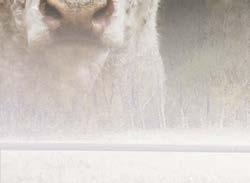
NCFA will chair the Canadian Beef Advantage for 2022 and will continue to lobby and work on outreach and advocacy initiatives, said Vander Ploeg, and work in the areas of digital technologies, climate change and business risk management programs, regulations, production and supply chain issues and the future growth and sustainability of the industry.
Last laugh

The conference concluded with a presentation by Quick Dick McDick (aka Dickson Delorme from Tuffnell, Saskatchewan). Delorme shared his personal story of his own mental health challenges following a 19-year career in the transportation industry during which he says he became addicted to work.
With humour and honesty, Delorme described how his journey back to the family farm led him to find the power of laughter, and to create his alter-ego, Quick Dick McDick, who, with his humorous parodies of farm and rural community life has become a social media phenomenon with over 74,000 YouTube subscribers and more than seven million views.
Any money Delorme raises through his videos he donates back to local charities and organizations and believes in the adage that ‘if you don’t tell your own story, someone will tell it for you’. His recipe for doing that:
• Always sprinkle funny into it (laughter helps people heal)
• Make it for Tuffnell (make it about and serving your local community)







Fulton said he is optimistic about the year ahead.
“Looking ahead there is still some uncertainty, but I think the fundamentals support a higher market, so there’s good reason for optimism,” he said. “There is strong demand for our safe and high-quality beef products, there is growing recognition of the valuable ecosystem services provided by beef production in Manitoba, especially as part of the climate change discussions. I
but it’s still managed to accomplish a lot in 2021 said Casey Vander Ploeg, Vice-President of the National Cattle Feeders Association (NCFA).
A joint industry statement was issued in April to support the development of UHF (ultra-high frequency) tag technology, that will put the beef sector on a better footing to be able to meet the enhanced traceability requirements on the horizon. NCFA was also involved

• No topic is off limits (sometimes the most uncomfortable conversations are the most important to have).
• Keep it as a side-gig (farming is the true end game)


• Don’t force it (just let it happen)
• Keep a big set of shoulders (don’t let the comments on social media get to you).
13 CATTLE COUNTRY March 2022 www.mbbeef.ca
and less cattle at the processing plants, remains strong, so there are a lot of dollars producers.” – Brian Perillat of Canfax
Find a complete list of Charolais breeders at WWW.CHAROLAISBANNER.COM/MCA Manitoba Charolais Association YOUR PROFITABLE CHOICE Make Charolais CHAROLAIS ARE YOUR MOST VERSATILE SIRE ON THE MARKETPLACE, CONSISTENTLY TOPPING THE MARKET WITH ANY TYPE OF COW THEY ARE CROSSED WITH! CHAROLAIS with the most premium driven breed... Cross Into Profit ^ @ MBCHAROLAIS FOLLOW US ON FACEBOOK AT
Province releases spring flood outlook
(February 18, 2022 Province of Manitoba News Release) Manitoba’s Hydrologic Forecast Centre’s spring flood outlook reports the risk of moderate to major flooding in most southern Manitoba basins is dependent on weather conditions from now until the spring melt, Transportation and Infrastructure Minister Doyle Piwniuk announced.
“Our government continuously monitors all watershed conditions across the province to remain vigilant and ready to respond to ensure that all Manitobans are protected should there be a risk for flood conditions,” said Piwniuk. “The Hydrologic Forecast Centre monitors river flows and lake levels daily throughout the year,
and we work in collaboration with municipalities and communities to best prepare for potential flood mitigation operations.”
The Hydrologic Forecast Centre advises that, while there is a risk of major flooding along the Red River and its tributaries, including the Roseau, Rat and Pembina rivers, water levels are expected to remain below community flood protection levels at all locations. There is also a risk of moderate flooding for most other southern Manitoba basins including the Assiniboine and Souris rivers and the Whiteshell lakes area. The risk of spring flooding is low for the Interlake region and northern Manitoba regions.
The Hydrologic Forecast Centre also reports that operation of the Red River Floodway is expected this spring to reduce water levels within the city of Winnipeg with some operation of the Portage Diversion anticipated to prevent ice jamming on the Assiniboine River, the minister noted.
The 2022 spring flood outlook report is available at: www.gov.mb.ca/mit/floodinfo/pdf/2022/february_2022_ flood_outlook_report.pdf
The next flood outlook will be released late March.
News Release
CCA pleased to see progression towards Canada-UK FTA
February 17, 2022
Ottawa, ON – The Canadian Cattlemen’s Association (CCA) is pleased to see progression on a future Canada-United Kingdom Free Trade Agreement (FTA) with the tabling of the objectives for negotiations on February 16, 2022, by the Honourable Mary Ng, Minister of Small Business, Export Promotion and International Trade
While Canada and the United Kingdom (UK) are currently operating under the interim agreement, CCA’s highest priority has been on achieving a long-term ambitious FTA with the UK that resolves existing trade limiting factors CCA continues to share its priorities with the Government of Canada as it is imperative that the beef industries in Canada and the UK can enjoy equal access and mutual benefit from and grow this trade relationship. The establishment of progressive trade parameters, such as those contained in the Comprehensive and Progressive Agreement for Trans-Pacific Partnership (CPTPP), will be CCA’s focus for future negotiations that can now start 30 days after the tabling of the negotiating priorities
“It is imperative that the beef industries in Canada and the UK both have the opportunity to benefit from this trade relationship,” says Bob Lowe, CCA President. “Currently, the trade relationship is unbalanced and correcting this will be our focus for this negotiation as well as future trade deals.”
Trade Facts:
• Imports from the UK increased in 2020, going from $15.9 million CAD in 2019 to $31.6 million. However, in 2021, there was a decrease to $16.3 million.
• Exports to the UK stood at $20.2 million in 2019, $17.7 million in 2020, and in 2021, they declined to $7.6 million.
• The trade balance for 2021 was -$8.7 million in favour of the UK.
• Under the interim Canada-UK Trade Continuity Agreement (TCA), Canada’s total access of hormone-free beef was 3,279 tonnes in 2021 and will be 3,869 tonnes cwe in 2022. Under the TCA, the UK has full duty access to Canada.
CCA will continue to monitor the beef trade balance between Canada and the UK and the forth coming negotiations
For further information, contact: Michelle McMullen
Communications Manager Canadian Cattlemen’s Association 403-451-0931| mcmullenm@cattle.ca
The CCA is the national voice for Canada’s beef cattle industry representing 60,000 beef farms and feedlots Visit www.cattle.ca

14 CATTLE COUNTRY March 2022
www.mbbeef.ca
Innovative agricultural insurance product to strengthen Manitoba forage and livestock sectors
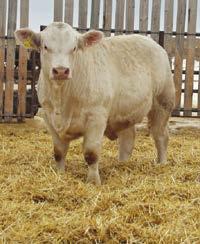
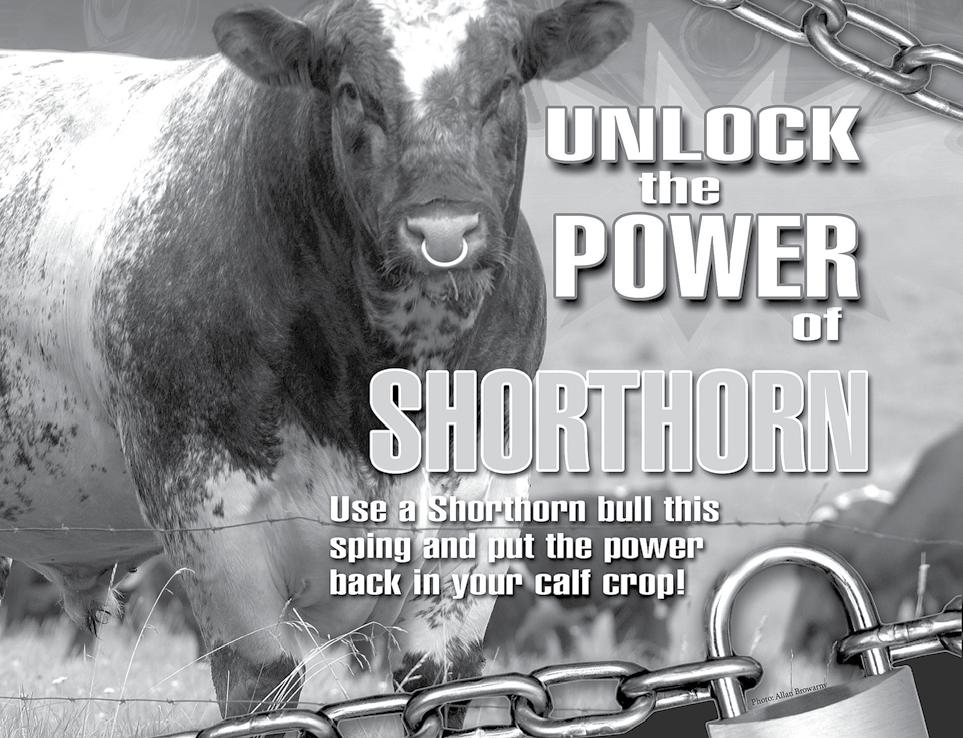
(February 16, 2002 Joint Federal/ Provincial Government News Release)


The governments of Canada and Manitoba are investing $253,600 through the Canadian Agricultural Partnership (CAP) to develop a new usage-based insurance (UBI) product, in collaboration with Dairy Farmers of Manitoba (DFM), to respond to needs expressed by forage crop growers and other stakeholders in a 2020 review of forage insurance programs, Manitoba Agriculture Minister Derek Johnson and Terry Duguid, member of Parliament for Winnipeg South, announced.
“The forage and livestock sectors in Manitoba have been vulnerable in times of substantial forage shortages, as was the case during last summer’s drought conditions, and traditional risk management and insurance methods used for other crops do not always work well for their specific needs,” said Johnson. “We are pleased to work with industry to develop this ground-breaking insurance product that will help forage growers better meet operational challenges, especially under extraordinary circumstances.”
“Forage producers have seen firsthand the impacts of ongoing climate-related challenges – most notably this past
year,” said Duguid. “By using scientific tools to gather and assess local conditions, projects like this will create new solutions for drought-affected producers in Manitoba.”
The province will enter a two-year contribution agreement (2021/22 to 2022/23) with DFM to provide up to $253,600 in CAP-Ag Action Manitoba Strategic Initiatives (industry-led) federal flow-through funding. The project will be led by DFM in partnership with Manitoba Beef Producers and four additional producer organizations.
“Dairy Farmers of Manitoba is pleased to work with the Canada and Manitoba governments and agriculture sector to support the development of this innovative UBI product that will benefit forage growers throughout the province,” said David Wiens, chair, Dairy Farmers of Manitoba. “Using leading-edge artificial intelligence, the product will measure and predict forage crop yields automatically and in near-real time based on satellite remote sensing, weather and geophysical data.”
The project will develop a usage-based, farm-specific index insurance product for Manitoba forage growers. It includes the integration of satellite
remote sensing and other big data, combined with an interactive web-based application that farmers can use to individualize their insurance, receive real-time and dynamic pricing, monitor forage production throughout the season and fast-track claims settlements, the minister noted.
AIRM Consulting will conduct the project over an 18-month period and develop a website with a geographic information system interface for farmers to purchase insurance, monitor their policies and support claims settlements.

The Canadian Agricultural Partnership is a five-year, $3-billion commitment by Canada’s federal, provincial and territorial governments that supports Canada’s agri-food and agri-products sectors. This includes a $2-billion commitment that is cost-shared 60 per cent federally and 40 per cent provincially/ territorially for programs that are designed and delivered by provinces and territories.
For more information, visit https:// agriculture.canada.ca/en/about-our-department/key-departmental-initiatives/ canadian-agricultural-partnership or www.manitoba.ca/agriculture
15 CATTLE COUNTRY March 2022 www.mbbeef.ca www.manitobashorthorn.com Upcoming sale March 26, 2022 at Manitoba Bull Test Station Manitoba Shorthorn Association
Proudly supporting junior members and 4-H youth across the province!
Jeff & Jackie Cavers Box 237, La Riviere, MB R0G 1A0 P: 204-242-3467 | C: 204-242-4448 www.C2charolais.com Annual Bull & Female Sale March 30, 2022 On The Farm La Rivière, MB - 1:00 PM 40 Head Sell Charolais Bulls Plus Heifers & Commercial Heifers T Bar C Cattle Co. Ltd 306-220-5006 View the catalogue online at WWW.BUYAGRO.COM SA L E M ANA GEME N T C2 Charolais_MBCattl Producers2_Jan22.indd 1 2022-01-07 1:59:30 PM
Outlook for cattle prices is starting to look better
As I sit down to write this in early February, the markets in Manitoba are experiencing their biggest volume week in 2022. The demand for the calves is strong, with interest on all classes from Ontario. The US is very strong on heifers under 750 pounds and good black-hided steers under 650. Alberta, despite a continued bottleneck at the packers that is creating a backlog of market-ready fed cattle, is looking for inventory. Local demand is strong for grass-type cattle, but there is little to no appetite for replacement-type heifers. Young, bred cows and heifers of good quality are meeting a better demand than before Christmas, with potential buyers mindful of their feed supplies.

Many of the cattle feeders in the west are paying special attention to feed inventories. Most have enough feed purchased to cover their existing inventory, but getting the feed delivered in a timely fashion is causing the industry additional stress. Most of the larger feedlots are bringing in corn and DDGs from south of the border. Supplies are tight and they have to bring feed from further away. Much of the corn is delivered by trains, which have been delivering seven to 21 days late. The result is that some of the feedlots have limited numbers of days of feed inventory on-site, and that is causing concern in the west. It is hard to imagine the number of b-trains of corn and barley, along with the feed additives that are consumed daily in the big feedlots in Alberta and Saskatchewan.
The situation has been somewhat compounded by the requirement by both the US and Canadian governments that require truckers crossing the border to be vaccinated. A large percentage of the Canadian truckers who regularly transport goods back and forth between Canada and the US are vaccinated. There is no doubt that the service they supply is an essential service. The livestock hauling industry has been short of truckers for a number of years. Long-haul cattle haulers are a dying breed, and I shudder to think of what the cattle transportation industry will look like in five years’ time. This
RICK WRIGHT The Bottom Line
concern has nothing to do with a vaccine mandate; the problem has been manifesting for years. There were a few cattle haulers who joined the convoys to protest in the provincial and federal capital; that is their right and I respect that. Their absence had little to do with the truck shortage we are currently experiencing in the cattle business. The fact is, there are not enough cattle trucks available to handle the demand. This shortage has also caused a spike in the freight rates. The cost of trucking cattle to Ontario this spring has ballooned from 10 cents per pound to nearly 15 cents per pound. With diesel fuel costs on the rise, we have experienced two price increases for loads destined to Alberta since the fall. American truckers are so busy in the south that they have no desire to come up to Canada to pick up loads for American destinations.
The use of electronic logs, combined with the lack of infrastructure to accommodate the current livestock hauling regulations, has made cattle hauling an undesirable occupation. In February of this year all cattle moving from western Canada have to be unloaded for feed and water at rest stations like “The Barn” near Thunder Bay. The regulations, which are now enforceable, state that the maximum time cattle can be off feed and water is now 36 hours down from 48, with the extension to 40 if close to destination. The duration of the rest stop has been increased to eight hours from six hours. This has created bottlenecks for the trucks moving cattle east. Throw in the odd winter storm or road closures, and the backlog of trucks waiting to unload is even longer. There are only two official feed and water stations on Highway #1 east of Winnipeg.
Expect to hear more about “transfer of care” documents in the coming months. This is another section of the latest revisions of the transportation regulations. CFIA has the authority to have the owner of the livestock being hauled document when the livestock last had access to feed and water, along with documentation that the cattle were suitable for transport when loaded. The transporter is then required to take the document with the livestock to the next destination (auction, assembly yard, feedlot, or any other intermediate site). On delivery, the receiver is expected to take the document and sign off that the livestock were received in “good condition.” The intermediate site is expected to keep the document on file in case there is a situation where CFIA is required to do an investigation. The majority of producers are totally unaware of this requirement, and the industry suggestion of an educational promotion fell on deaf ears. Some intermediate sites have been getting pressure from CFIA inspectors for not demanding the documents when livestock arrive. The Livestock Markets Association of Canada has proposed that cattle that are hauled less than 300 miles be exempt. The majority of these cattle will have access to feed and water well within the 36 hours cited in the transport regulations.
The outlook for cattle prices is starting to look better despite the grain markets holding firm. Fed cattle contracts for later in the year are well over the $3.00 mark on the rail. Yearling prices off grass are strong. Steers for August at 1000 pounds are close to $2.00 per pound. 900 pounders are $205.00 with 1000-pound heifers for August and September between $1.88 and $1.90.
The fall calf prices are still up in the air, but one thing for sure is that there will be a lot fewer calves for sale this fall than last year. The contraction of the North American beef cow herd should trigger strong prices, provided we get some average crops in the major grain growing regions.

Until next time, Rick.
•
•
•
16 CATTLE COUNTRY March 2022 www.mbbeef.ca
Livestock Price Insurance (LPI) is an insurance program that provides price risk management to beef producers when market prices are volatile.
Get forward price coverage for calves you plan to market between September and February 2023 with the LPI – Calf program.
Coverage options are available to choose from every Tuesday, Wednesday, and Thursday from 3 p.m. - 12 a.m. (CT).
The last day to purchase LPI – Calf policies is June 9, 2022. Visit LPI.ca or phone 1-844-782-5747 for program details. Protect yourself from market price Changes Livestock Price Insurance (LPI) ad Size: 9.63”wide x 7.75”deep Half page
Hearty beef stroganoff keeps late winter chills at bay
BY: TAMARA SARKISIAN, RD
March is here which means spring is near! Although spring is quickly approaching, we can often experience some chilly days this month, so why not make a cozy bowl of beef stroganoff to keep you warm. This recipe is a quick spin on a classic beef stroganoff and would be perfect for a weekend meal shared with your loved ones or even on a weeknight!
The best thing about this dish is that you can use various cuts of beef. I used sirloin steak, but any tender cut of beef or fast fry beef works well. In some cases, you can even use ground beef for a more affordable option too.
Many kids love pasta, so if you have any fussy eaters in your household, this could be a great dish to try. Beef is an excellent source of iron and vitamin B12 which are essential nutrients for both children and adults. Did you know that vitamin C can help to increase the absorption of iron? You can pair your beef stroganoff with a side

Beef Stroganoff
Ingredients:
• 1 lb sirloin or tenderloin steaks
• 1 package egg noodles
• 3 cups mushrooms, sliced
• 1 onion, sliced
• 3 garlic cloves, crushed
• 1 Tbsp butter
• 1 tsp Dijon mustard
• 1 tsp Worcestershire sauce
• 1¼ cup beef stock
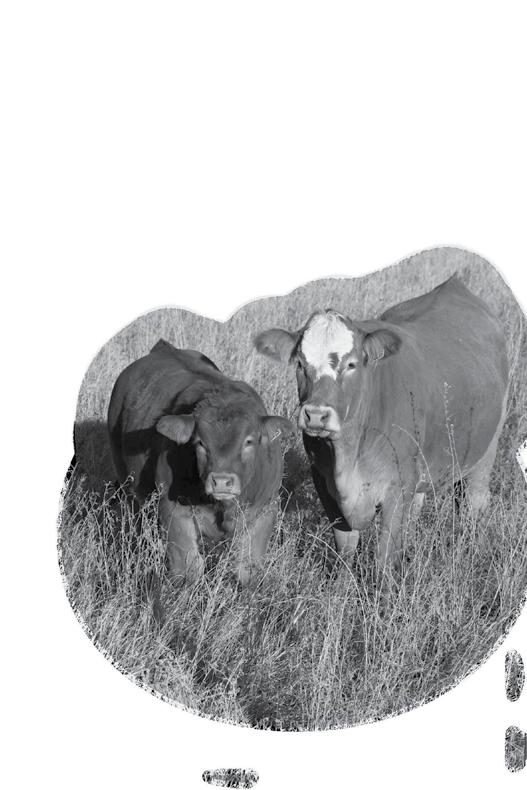

• 2 Tbsp flour
• ½ cup dry white wine
• ½ cup sour cream
• salt and pepper to taste

DIRECTIONS
Step 1:
Cook noodles according to package directions and set aside.
Step 2:

In a large skillet, sear steaks on medium-high heat for 2-3 minutes on each side. Remove steaks from heat and set aside.
Step 3:
In the same pan, add butter and sauté onion, mushrooms, and garlic for 7-8 min. Add white wine to deglaze pan and stir in Dijon mustard. Cook for another 5 min. Whisk in flour, Worcestershire sauce and beef stock. Simmer for 5 min then mix in sour cream until everything is well combined.
Step 4:

THIS SPRING, USE A LIMOUSIN BULL Get in on what other producers already k now to be true TAG THEM LIMO Limousin RFID Tags Available MORE POUNDS = MORE PROFIT Amaglen Limousin 204-246-2312 / 204-823-2286 View bulls and females for sale online at www.amaglenlimousin.ca Campbell Land & Cattle 204-776-2322 Bulls and females available by private treaty on farm and Douglas Bull Test on March 26. Email cam.limousin@gmail.com Cherway Limousin 204-736-2878 Red and black polled bulls and females for sale www.cherwaylimousin.ca Circle Dot Ranch Wayne Yule 204-383-5390 Yearling Limousin and Limo x Angus bulls for sale on farm selected from 45 years of breeding. Visitors welcome. Diamond T Limousin 204-838-2019 / cell 204-851-0809 2 Year old and Yearling bulls for sale by private treaty on the farm. Email diamondtlimo@gmail.com Hockridge Farms Brad 204-648-6333 Glen 204-648-5222 Bulls for sale on farm www.hockridgefarms.ca L & S Limousin Acres 204-838-2198 Bulls sell March 26 at Douglas Bull Test Maplehurst Farms Bob 204-274-2490 Bulls for sale on farm and at the Douglas Bull Test, March 26 Park Performance Limousin Rick 701-340-2517 Breeding stock available private treaty on farm. Calves for sale in fall of 2022. Triple R Limousin Art 204-856-3440 / 204-685-2628 45 2-Year-Old and Yearling bulls available on farm. Limousin, plus Angus and Limo x Angus. Look for fall female sale. MANITOBA LIMOUSIN ~ ASSOCIATION ~ FIND US ON FACEBOOK manitoba_Limousin_Association
Photo credit: Tamara Sarkisian
StockTalk Q&A
Feature Brought to you by Manitoba Agriculture
Elizabeth Nernberg Livestock Specialist Manitoba Agriculture

Elizabeth.Nernberg@gov.mb.ca
Question: I have heard that the drought assistance program available in Manitoba has been expanded to include additional items eligible for assistance. I am so confused by the funding that’s available. Can you please clarify the programs and application deadlines?
Answer: Through AgriRecovery, a disaster relief framework under the Canadian Agricultural Partnership, three different programs are available to help support Manitoba livestock producers affected by the 2021 drought conditions. They are:
1. Livestock Feed and Transportation Drought Assistance
2. Livestock Transportation Drought Assistance
3. Herd Management Drought Assistance
These programs offer assistance to help producers recover from the extraordinary costs such as:
• buying, testing and moving feed from distant locations
• replacing breeding animals due to winter feed shortages
• moving your livestock to alternate feeding locations
• hauling water, renting extra pasture and harvesting extra acres for feed (NEW) Producers do not need to be enrolled in AgriInsurance, AgriInvest or AgriStability to participate in these AgriRecovery drought assistance programs. Further details and deadlines on these programs can be found below.
The Livestock Feed and Transportation Drought Assistance helps producers source feed to maintain their breeding herd during the June 1, 2021 to March 15, 2022 timeframe with a maximum per head payment of $250. Changes to this program were made to expand the eligible feeds to include feed additives and premixes, such as molasses based products, vitamins, minerals, and oils and fats, retroactive to June 1, 2022. Funding is available for a wide range of feeds including hay, silage, greenfeed, straw, grain and concentrates. Annual crops purchased for grazing are eligible. Complete feeds are also eligible with the exception of feed intended for young stock.
We want to hear from you
For the next issue of Cattle Country, a Manitoba Agriculture forage or livestock specialist will answer a selected question. Email your questions to Tim.Clarke@gov.mb.ca
StockTalk Q&A for Cattle Country is brought to you by Manitoba Agriculture. We encourage you to email your questions to our department’s forage and livestock team, who have a combined 175 years of agronomy experience. We are here to help make your cattle operation successful. Contact us today.
Elizabeth Nernberg Roblin 204-247-0087 Elizabeth.Nernberg@gov.mb.ca
Pam Iwanchysko Dauphin 204-648-3965 Pamela.Iwanchysko@gov.mb.ca
Tim Clarke Arborg 204-768-0534
Tim.Clarke@gov.mb.ca
Shawn Cabak Portage 204-239-3403 Shawn.Cabak@gov.mb.ca
Juanita Kopp Beausejour 204-825-4302 Juanita.Kopp@gov.mb.ca
It includes the following:
• rental of extra pasture, forage, crop acres for livestock feed




• temporary fencing for supplemental grazing
• hauling drinking water for livestock due to drought
• transportation of feed you produced from distant locations
• harvesting feed you produced on acres that you do not normally use for livestock feed production
You can claim these expenses by submitting a one-time declaration of extraordinary expenses.
For harvesting and hauling feed and water, you can claim custom fees and the fuel and paid labour for using your own equipment. Crops seeded for grain and harvested for greenfeed or silage, slough ditches and other acres not normally harvested, straw baled from someone else’s acres, and crop regrowth are examples of harvesting costs that can be claimed.
To accelerate the processing time of your application, ensure you have the necessary documents required besides your application form such as the declaration of eligible breeding animals. In addition, invoices are required for each feed and transportation purchase claimed. Provide proof of payment for each invoice (e.g., cleared cheques, bank statement, credit or debit card receipt, eTransfer). For extraordinary expenses, you do not have to submit invoices or proof of payment with your application, but they must be available if requested. However, a Declaration of Extraordinary Expenses declaring the total dollar value of each type of expense claimed is required.
When you submit your invoices and proof of payment for eligible feed purchases, and declaration of extraordinary expenses as part of the application process, a producer share is applied when you submit your first application. The producer share is the value of initial eligible feed invoices and declared extraordinary expenses submitted but not cost shared. The producer share for beef cattle is $50 per breeding head. The level of extraordinary expenses used in the payment calculation is also capped, at a level of $133.33 per breeding head for beef cattle
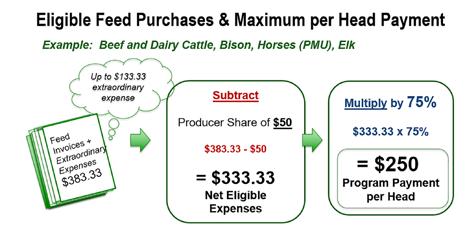
Livestock feed transportation assistance is provided for the movement of eligible feed transported between June 1, 2021 and March 15, 2022, for a minimum distance of 40 kilometres (km) up to a maximum one-way distance of 600 km. For feed you produced, transportation is claimed as an extraordinary expense and limited by the $250 per head cap for feed purchases and extraordinary expenses. Funding assistance transportation of purchased feed is above and beyond the $250 per head cap. Program rates apply to both the claims for hauling purchased feed and feed you produced. April 15, 2022 is the application deadline for feed purchases, extraordinary expenses, and feed transportation claims.
Livestock Transportation Drought Assistance is also available to help offset freight expenses associated with moving livestock to alternate feeding locations required to manage breeding herd feed shortages. The animals had to be transported between August 1, 2021 and June 30, 2022, for a minimum distance of 40 km up to a maximum one-way distance of 1,000 km. The return trip is eligible for up to 1,000 km oneway. The breeding animals must return to your farm operation when the temporary feeding at the alternate location ends. The application deadline for this program is July 30, 2022.
Herd Management Drought Assistance provides assistance to replace breeding females culled due to drought and to support returning the applicant’s inventory of breeding females to pre-drought levels. Females can either be purchased or retained from your own herd. For beef, a $250 payment/head will be made for replacement of eligible breeding females culled, based on the increase in your drought impacted breeding female inventory on March 16, 2022, and the recovery inventory on January 31,2023. No payment is made for increases beyond your pre-drought inventory on March 16, 2021.
For Herd Management, April 15, 2022 is the deadline to apply declaring your pre-drought and drought impacted inventory of breeding females. You then submit a second declaration of your recovery inventory after Dec 1, 2022 so that your payment can be calculated.
As highlighted, important deadlines are coming up for some of the programs that are currently available to livestock producers affected by drought. For complete details on these programs please visit www.manitoba.ca/agriculture/canadian-agricultural-partnership/business-risk-management-programs/index.html or call 1-844769-6224.

18 CATTLE COUNTRY March 2022 www.mbbeef.ca
Additional assistance was recently added to the Livestock Feed and Transportation Assistance Program for extraordinary expenses that may have occurred due to the drought.
Brothers Sell PrimePlus_MBCattle_Feb22.indd 1 2/5/2022 2:27:35 PM
Vet column: weak calf syndrome

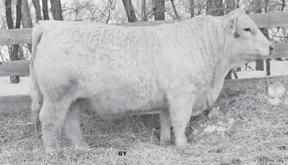 BY: DR. TANYA ANDERSON, DVM
BY: DR. TANYA ANDERSON, DVM
Drought years mean changes in feed programs. Unfamiliarity with different feeds and failure to feed test, evaluate water quality and work with a nutritionist or veterinarian can mean inadvertent deficiencies of vitamins, minerals, energy, and protein. This puts your herd at a high risk for weak calves at birth. These “dummy” calves take up valuable labour resources and if not dealt with aggressively, many die within the first week. While every herd can expect to experience one or two slow calves, outbreaks do occasionally occur. This article will review the most common causes with tips to deal with individual cases.
Calves born with “weak calf syndrome” are often depressed and unable to stand, walk or nurse on their own. Some die shortly after birth while others live for a few days with supportive care before fading away. Deaths occur despite adequate colostrum consumption.
If you are experiencing higher than expected calf mortality, contact your veterinarian for advice. Post mortems should be conducted and tissue samples as per lab protocol should be sent for analysis. Unfortunately, a quick diagnosis during the postmortem is rare unless there is an obvious congenital abnormality. Data from research through the Western College of Veterinary Medicine and the Western Interprovincial Scientific Studies Association revealed that many of the calves that died within a few days of birth had low levels of selenium, Vitamin E and Vitamin A. Calves noted to have had difficult births often had abnormalities of the thyroid glands and muscle tissue. Only lab testing can detect these abnormalities and help guide you to the specific problem in your herd. Doing a quick external exam of a dead calf provides little value.
risk to produce weak calves. One red flag is cows losing weight in late gestation. Calving time is not the time to be reviewing your nutrition program. Work with a qualified nutritionist in the fall to ensure adequate feed (quality and quantity) and appropriate vitamin/trace mineral supplementation. Feed test for mycotoxins, nitrates and energy and protein levels. Body condition score your cows and sort them into groups based on their feed needs. Remember that heifers, second calvers and old cows generally require additional attention. This would be a good time to review your genetics and cull those “hard-keepers” that don’t fit into your management program.
Arrange for a herd visit to assess if there are cow factors contributing to calf weakness. Although you may have had your veterinarian out in the fall at pregnancy test time, things can rapidly change at the herd level over the winter, particularly if extreme cold, wind and abnormally high snowfall conditions exist. Even a mild winter with rain/sleet/snow with wide temperature fluctuations creates hardship for herds if nutrition is inadequate.
Don’t waste feed energy feeding lice and internal parasites. Use a pour-on endectocide in the fall after freeze up to prevent a lice infestation. Due to warm fall weather, a second treatment early in the year is becoming more the norm. Even if calving season is well underway, it is not too late to use a pour-on now. Just be sure to treat all calves on the ground and those that are born within two weeks of the herd being treated. Have fecal analyses done on late gestation cows to assess whether deworming is required in your herd or not. A strategic deworming program can yield a 25lb weight gain per weaned calf by improving milk yields and reducing pasture contamination. However, my experience has been that not all herds require deworming so test before implementing that management changes.
(requiring assistance at calving) or failing to wean their calves. Select bulls for calving ease and low birthweights. Provide shelter with ample bedding for young calves to minimize trampling and hypothermia as a result of wind and moisture. Wintering and calving cows in the same area allows a buildup of infectious disease in the straw pack, elevating the risks of calf scours and navel infection. Practice the two-week rule bymanaging cow/calf pairs in groups where all calves are within two weeks of age of each other. Mixing different aged calves increases the risk of scours transmission.
Weak calf syndrome doesn’t develop overnight nor is it easy to correct with a quick injection or treatment. If you are in crisis mode, identify “at risk” calves and provide special care. Help them nurse or provide supplemental colostrum. Ensure calves are warm, dry, and nursing regularly. On the advice of your veterinarian, consider vitamin (A and E) and selenium injections –for both cows and calves. With the help of your veterinarian, get an accurate diagnosis and take preventative action to avoid more dummy calves next calving season.
Arrange for a herd visit to assess if there are cow factors contributing to calf weakness. Although you may have had your veterinarian out in the fall at pregnancy test time, things can rapidly change at the herd level over the winter, particularly if extreme cold, wind and abnormally high snowfall conditions exist. Even a mild winter with rain/sleet/snow with wide temperature fluctuations creates hardship for herds if nutrition is inadequate.

Cows on low protein (less than two pounds/head/ day) and/or low energy diets in late gestation are more at
Review your vaccination program. BVD (Bovine Virus Diarrhea) has been identified as a factor in some herds with weak calf syndrome. IBR and Leptospirosis are common causes of abortion. Weak calves are also more at risk for developing scours and pneumonia. Today’s vaccine selection provides safe alternatives for vaccinating at all stages in a cow’s life – pregnancy or pre-breeding. Discuss the best options for your herd with your veterinarian.
Be vigilant at calving time – this is the cattleman’s “harvest time.” Calving difficulty is a major factor associated with early calf losses. Early examination and assistance (if >1 ½ hours after waterbag evident) will minimize the number of calves born weak as a result of a difficult, prolonged birth. Head (think brain) and tongue swelling contribute to poor oxygen levels, failure of nursing and poorer absorption of colostrum. Check cows for mastitis, teat trauma and milk production. Cull cows with dystocia
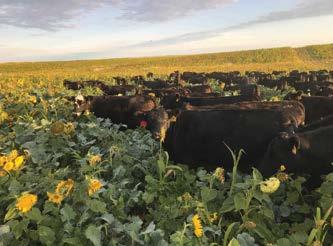
19 CATTLE COUNTRY March 2022
On Offer: 65 YEARLINGS • All are Polled Your source for calving ease, performance and maternal genetics Pleasant Dawn Charolais Trent & Ashley Hatch trent.hatch@gmail.com 204-855-3078 C 204-721-3078 20th Annual Bull Sale • 2:00 PM Saturday, March 19, 2022 Video Sale at the farm, Oak Lake, MB Pleasant Dawn Charolais Catalogue and videos are online at www.pleasantdawn.com Internet bidding available at www.bylivestock.com Sale Manager Helge By 306-536-4261 Jon Wright 306-807-8424 Graeme Finn, Union Forage 403-312-2240 Amber McNish, Union Forage 204-264-0609 Jonathan Bouw, Edie Creek Angus 204-471-4696 Jason Bednarek, 2B Land & Cattle 204-768-0184 Ben Fox, Fox Technologies 204/638/4181 / 204-647-5060 Ken Van Driesten, Nutrisource/Dairytech/Bullseye 587-727-0433 Michael Mott, Michael Mott Livestock 204-861-0319 Joey Bootsman, Bootsman Ag Enterprises 204-720-8386 Darren keown, 3K Holdings 204-937-7333 Scott & Darryl Perkin, Perkin Seed & Soil Company 204-534-8137 YEAR ROUND Forage and Grazing PERENNIAL FORAGES • ANNUAL COVER CROP FORAGES • DROUGHT GRAZING FORAGES Toll Free: 1-877-COW-CHOW WWW.UNIONFORAGE.COM GRAZE YEAR ROUND Perennial Forages | Annual Forages High Performance Alfalfa | Hybrid Fall Rye
Emergency management workshops and other planning resources for livestock producers




A serious animal disease outbreak is recognized as an industry’s greatest vulnerability because of the potential impact it could have on the affected industries and livestock sectors. Knowing what to do when a serious animal disease is suspected on your farm is key to limiting the spread and impact of a disease outbreak.
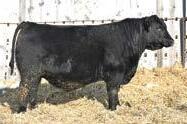
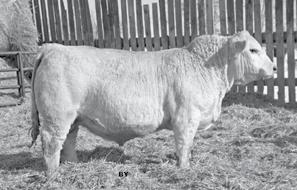

“The First 48 Hours for Producers” is a NEW quick reference tool developed by the Animal Health Emergency Management (AHEM) project that lists the key Communication, Enhanced Biosecurity, and On-farm Investigation actions to take to protect yourself, your animals, and business after being notified by the Canadian Food Inspection Agency (CFIA) that there is a suspicion of a federally regulated disease on your farm. See: https://animalhealth.ca/wp-content/ uploads/AHEM-CFIA-48hrs_InfoSheet.pdf

This resource can be used alongside other AHEM producer tools and handbooks found at www.animalhealth.ca/resources to proactively plan, prepare and
respond to an animal disease emergency event.
AHEM is offering a new three-part series of engaging virtual webinars geared for livestock producers In each 60-minute interactive webinar we share vital information, tips, and tools for understanding how to prepare and respond during a serious animal disease emergency.
Webinar 1: Navigating the Unexpected – Emergency Management 101
A general overview of emergency management along with producer roles and responsibilities. The information is designed to boost preparedness with proactive steps and to provide insight into the knowledge and skills required during a serious animal disease outbreak.
Upcoming webinar dates: March 22 (English & French) and April 5. All workshops are one hour starting at 10:00 am (Mountain) / 11:00 am (Central) / 12:00 pm noon (Eastern).
Webinar 2: Resourced and Ready – Exploring Proactive Disease Management Tactics and Tools
Explore the concepts and support tools found in the AHEM resources and ask questions about animal health emergency management.
Upcoming webinar dates: March 17 and April 14 (English and French). All workshops are one hour starting at 10:00 am (Mountain) / 11:00 am (Central) / 12:00 pm noon (Eastern).
Webinar 3: Testing, Testing, 1-2-3 – Scenarios for producer Handbook application


Participants will be introduced to AHEM’s producer-oriented simulation workshops, which give a practical understanding of how AHEM resources are used as guidance before, during and/or after a serious animal disease outbreak.
Upcoming webinar date: July TBD, 2022. Registration for this webinar is coming soon.
Visit www.animalhealth.ca/workshops for more information including webinar dates and registration.

20 CATTLE COUNTRY March 2022 www.mbbeef.ca HUNTER CHAROLAIS 11th Annual BULL SALE THURSDAY APRIL 7th, 2022 1:30 pm • AT THE FARM, ROBLIN, MB 49 Yearling Bulls 45 Charolais, 3 Hereford, 1 Shorthorn A Charolais family operation for over 30 years • Complete Performance Data Available • Bulls can be viewed anytime • FREE DELIVERY in Manitoba and Saskatchewan Hunter Charolais Box 569, Roblin, MB R0L 1P0 Doug & Marianne Hunter 204-937-2531 C 204-937-7737 Jimmy Hunter 204-937-0219 Michael & Candace Hunter 204-247-0301 @HunterCharolais • huntchar@mymts.net Sale Manager Helge By 306.536.4261 Jon Wright 306.807.8424 charolaisbanner@gmail.com www.bylivestock.com • Online bidding available on DLMS.ca • Contact us for more information or a catalogue Catalogue and videos will be available at www.huntercharolais.com Did you know? MBP distributes a free, weekly ENewsletter to members and partners on timely beef topics. Subscribe Today! mbbeef.ca/news/ Half-page and full-page advertising opportunities also available. Contact David for more information. 204-558-4502 Cattleman’s C onne ction Bull Sale Friday, March 31, 2022 at 1:00 PM At The Farm, Oak River, MB They Sell! HBH Angus Farms Inc. Box 94, Oak River, MB, R0K 1T0 Sale Managed By: T Bar C Cattle Co. Ltd. Chris: 306-220-5006 Shane: 403-363-9973 Ben: 519-374-3335 www.buyagro.com Brayden Heapy Ph: 431-282-3085 braydenheapy19@gmail.com Visitors are always welcome! Please stop by to see the bulls and have a visit. Let us look after your purchase until April 15 and we will deliver him to you FREE OF CHARGE! Darcy Heapy Ph: 204-365-7755 dheapy@mymts.net HBH Johnny Cash 5J Sire: Vin-Mar Jonny Cash 3513 CE 6.0 BW 1.7 WW 60 YW 113 Milk 23 HBH Vision 50J Sire: Everblack Vision 119F CE 6.0 BW 0.4 WW 54 YW 98 Milk 27 HBH Perfect Storm 49J Sire: HF Perfect Storm 198E CE 7.0 BW 1.5 WW 61 YW 111 Milk 26 www.HBHAngusFarms.com New Date!
SAFETY ALERT
SAFETY ALERT
Stay on the right track while snowmobiling
Stay on the right track while snowmobiling
It’s winter in Manitoba and that means another season of fun for snowmobile enthusiasts. But just as you wouldn’t hit the trails without your helmet and other essential gear, you shouldn’t head out for a ride without knowing a few guidelines to help you get home safe.
It’s winter in Manitoba and that means another season of fun for snowmobile enthusiasts. But just as you wouldn’t hit the trails without your helmet and other essential gear, you shouldn’t head out for a ride without knowing a few guidelines to help you get home safe.
Reduce your speed around utility poles.
Reduce your speed around utility poles.
Guy wires that anchor the poles have yellow, reflective covers to make them more visible, but sometimes the covers become damaged or hidden by drifting snow. Darkness, fog, or blowing snow can also make them difficult to spot.
Guy wires that anchor the poles have yellow, reflective covers to make them more visible, but sometimes the covers become damaged or hidden by drifting snow. Darkness, fog, or blowing snow can also make them difficult to spot.
Steer clear of downed poles and power lines.
Steer clear of downed poles and power lines.
A fallen power line may energize nearby objects. Stay at least 10 metres away from the entire area and report the damage to Manitoba Hydro at 1-888-MBHYDRO or 911.
A fallen power line may energize nearby objects. Stay at least 10 metres away from the entire area and report the damage to Manitoba Hydro at 1-888-MBHYDRO or 911.
If someone does contact a downed power line, either directly or through their machine, do not touch them or any objects around them. Call 911.
If someone does contact a downed power line, either directly or through their machine, do not touch them or any objects around them. Call 911.
Stay off the ice near hydroelectric dams and generating stations.
Fluctuating water levels and strong currents may result in unstable ice conditions.
Stay off the ice near hydroelectric dams and generating stations.


Avoid sledding near substations and other hydroelectric facilities.
Fluctuating water levels and strong currents may result in unstable ice conditions.

Unmarked terrain and trespassing on private property can contain unexpected and deadly hazards.
Avoid sledding near substations and other hydroelectric facilities.
Plan your route before heading out.
Unmarked terrain and trespassing on private property can contain unexpected and deadly hazards.



Becoming disoriented or lost is much more likely to happen at night or on a large frozen lake. Make a point of riding with individuals familiar with the area and always tell someone where you are going and when you plan to be back.
Plan your route before heading out.
Visit hydro.mb.ca/safety for more information.
Becoming disoriented or lost is much more likely to happen at night or on a large frozen lake. Make a point of riding with individuals familiar with the area and always tell someone where you are going and when you plan to be back.
Visit hydro.mb.ca/safety for more information.
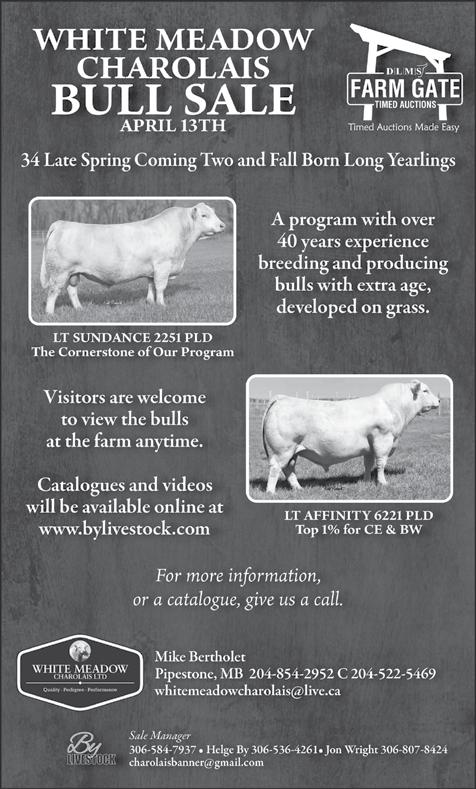
Safety. It’s in your hands.
Safety. It’s in your hands.
2PM TAYLOR AUCTIONS MELITA, MANITOBA March 23 FRASER FARMS Jeff & Nancy Fraser Melita, MB 204-522-5964 RAMROD WEST Tyler and Rheanne Dekeyser Redvers, SK 306-840-7701 RAMROD CATTLE CO. Tony & Jody Dekeyser 204-264-0270 Ryan & Lacey Brown 204-747-5991 Medora, MB email• ramrod@xplornet.ca BULL SALE ANGUS Cow-Boys Consignors LIVE BROADCAST THROUGH DVAUCTION SALES CONSULTANT CASTLEROCK MARKETING January/February 2022 Available in accessible formats upon request.
www.mbbeef.ca
January/February 2022 Available in accessible formats upon request.
Check out the new issue of Check out the new issue of the Outlook at the Outlook at www.cdnangus.ca/manitoba www.cdnangus.ca/manitoba -angus-association/the-angus-association/theoutlook/ outlook/ Facebook: @Manitoba Angus
Beefing up our understanding of biodiversity
BY THE NATIONAL CENTRE FOR LIVESTOCK AND THE ENVIRONMENT, UNIVERSITY OF MANITOBA
Imagine trying to count and map a thousand different species of mammals, birds and plants, lichens, mosses and soil mites, and using this information to explore the benefits and impacts of the beef industry.
It might seem impractical, if not impossible. But now this quantitative snapshot of land use practices and biodiversity has been produced through a collaboration of the Alberta Biodiversity Monitoring Institute (ABMI), the National Centre for Livestock and the Environment (NCLE) and Agriculture and Agri-Food Canada (AAFC). By combining ABMI’s rich data set and modeling expertise with the detailed knowledge of cattle production systems possessed by NCLE and AAFC, they’ve created a new tool for understanding the impacts and relationships.

“We are proud to be part of the first and only team in Canada examining biodiversity associated with cattle production systems at this scale,” says NCLE director and animal science professor Kim Ominski.
“A richness of species is the mark of a healthy agroecosystem, and cattle producers retain the open spaces that make that richness possible. Studies like this help us understand how cattle producers can operate those levers, so they can maximize benefits while mitigating any potential harm.”
Part of an international effort
The NCLE researchers involved in this benchmarking project are part of a team of scientists and cattle sector partners helping to map the biodiversity footprint of beef production in Alberta, with the intent to continue these efforts across Canada. This project is linked to an international effort led by the Livestock Environmental Assessment and Performance Partnership (LEAP) of the Food and Agriculture Organization (FAO) of the United Nations.

Canada’s representative, AAFC researcher Tim McAllister, is the current chair of the LEAP steering committee and has also served as the LEAP Biodiversity Technical Advisory Group Leader. McAllister encourages researchers all over the world to use LEAP assessment methods, which are also the foundation of the approaches used by the Canadian Roundtable for Sustainable Beef. In this way, LEAP is bringing a consistent approach to the measurement and study of biodiversity in livestock production systems everywhere.
McAllister says it’s an important step for the study of biodiversity, which until recently had no single common unit of measurement.
“Biodiversity is intrinsically complex – and perhaps this is why it’s left out of many environmental assessments of the livestock sector,” he explains. “Now, thanks to this international effort, we have a life cycle assessment model that gives us common measures and language for understanding the biodiversity impact of livestock production in different contexts. We can express the biodiversity impact per tonne of protein produced.”
Leveraging data to find the answers
The mammoth task of mapping cattle production impact on biodiversity is made possible by the use of comprehensive datasets and advanced computer modeling. When combined, researchers can determine the biodiversity impact of different types of livestock operations in specific contexts.
For assessments here in the Prairies, the starting point is the vast biodiversity and habitat dataset collected by the ABMI. The institute has counted and recorded more than 1,000 species, from mammals to lichens, at over 500 sites extending across beef-producing regions in Alberta
At each of these sites, ABMI has recorded the abundance of each species, as well as local habitat characteristics such as soil, climate, and land use variables.
“This is a unique opportunity to link what is one of the world’s most comprehensive databases on biodiversity and habitats with detailed information on Alberta’s beef production practices,” says Majid Iravani, applied research scientist at ABMI. “With this data, we’ve been
able to quantify the impacts of the entire beef sector on biodiversity in a consistent way across Alberta and determine how different beef production stages and systems lead to loss and gain in animal and plant biodiversity.”

Researchers then overlaid regional land use data showing where different types of beef cattle operations are located, and the land use types supporting these operations.
When the two datasets are run through biodiversity models, researchers can determine how individual spe cies and biodiversity as a whole are impacted by different types of cattle operations – from cow-calf systems on range through to large commercial feedlots.
“The collaboration and the synergy behind this project are a great example of what NCLE is all about,” says Ominski. “We’re combining data and expertise across a range of disciplines, and then producing out comes that are more than the sum of their parts.”
“The ultimate goal is to add the biodiversity findings to a larger life cycle analysis, combined with measure ments of greenhouse gases, nutrient movement, carbon sequestration and water quality. Approaches developed in Alberta will then be applied across the country,” adds Mohommad Reza Marami Milani, the postdoctoral fellow working on this project.
“NCLE researchers and partners have been studying all of these sustainability factors, and now we have one more area of knowledge to bring to the table,” Ominski says.
Among those at the table are producers who want to make their operations more sustainable, efficient and trusted by the public, she says.
“As cattle producers turn inedible forms of plant life into highly nutritious food, they can also support biodiversity. In this way they can help regulate our air, water quality and climate, while preserving the rich biodiversity in native grasslands, one of Canada’s most threatened ecosystems. This kind of data modelling shows us how.”
Researcher Team
Tim McAllister (PI), AAFC Lethbridge
Kim Ominski and Marcos Cordeiro, Animal Science, University of Manitoba
Majid Iravani, Alberta Biodiversity Monitoring Institute, University of Alberta
Sarah Pogue, Agriculture and Agri-Food Canada Lethbridge
Project postdoctoral fellow (PhD)
22 CATTLE COUNTRY March 2022 www.mbbeef.ca
Funders and Partners
Mohammad Reza Marami Milani (University of Manitoba)
Beef Cattle Research Council, Canadian Cattlemen’s Association Mitacs
At the farm , South of Glenboro, MB 1:00 p.m. HAMCO CATTLE CO. Selling 50 Red & 50 Black Angus Yearling Bulls Selling 12 Red & 20 Black Angus 2 Year old Bulls Angus Bull Sale Your source for Elite Angus Genetics! 24th Annual Saturday, March 19, 2022 üSired by AI Sires & Top End Herd Bulls üAll bulls have passed a semen test üBulls on home performance test - data available Developed on a high forage TMR ration Selected from a 550 purebred cow herd Hamco Bull Insurance program available Delayed Payment Plan available Free Board until April 15 Online Bidding with DLMS Bull Videos will be available on line For more information or catalogues view us on line at hamcocattleco.com or contact us The Hamiltons Glen & Carleen (204) 827-2358 Larissa & Kyle (204) 526-0705 Cell larissa_hamilton@hotmail.com Dr. David & Shelley (204) 822-3054 (204) 325-3635 Cell Embryo@mymts.net
Alberta Biodiversity Monitoring Institute
Photo credit: Alberta Biodiversity Monitoring Institute
What’s new in 2022? MBFI events and on-farm demonstration
 BY: DR. MARY-JANE ORR, MBFI GENERAL MANAGER
BY: DR. MARY-JANE ORR, MBFI GENERAL MANAGER
The fall and winter of 2021-2022 marks the completion of all current demonstration studies that have been ongoing over the last three to six years at Manitoba Beef & Forage Initiatives (MBFI). Findings are shared in presentations and added to our website research page. Stay tuned in the coming weeks for exciting news on a new platform being rolled out in April to share MBFI findings and interesting discussions in industry news.

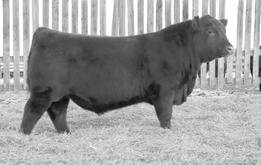
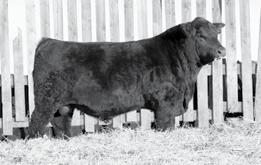
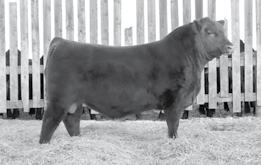
MBFI is looking forward to hosting a series of workshops and field tours in collaboration with Manitoba Agriculture. Starting in April, a full day workshop will be held at both the Eriksdale (April 13th) and Grandview (April 14th) community centres featuring Steve Kenyon of Greener Pastures Ranching Ltd presenting on how to build pasture productivity with pasture planning. In the afternoon, additional speakers will illustrate free tools to map your pastures and provide pointers on how to develop successful applications for cost sharing grazing projects.
Follow up events over the summer include workshop #2 (June 1st) at the MBFI Brookdale Farm which will highlight electric fence design and construction, solar power solutions for remote watering systems, and pasture water pipelines. Workshop #3 (July 6th) will provide hands-on learning at the MBFI First Street Pasture for taking pasture health assessments, and at the Brookdale Farm for collecting and evaluating soil health measurements. Workshop #4 (August 3rd) at the MBFI Brookdale Farm will feature annual forages for crop-livestock integration and have presentations on developing alternative feed rations.
Over the last three years we have been learning as MBFI staff worked to build capacity and collaborative partners to lead producer-inspired projects. We have been listening to feedback from producers and getting inspired for the next round of work through attending field tours, webinars, and conferences. The majority of proposals submitted for review by the MBFI Research Advisory Committee (RAC) were developed by MBFI staff bringing forward questions initiated through oneon-one conversations with Manitoba producers.
The MBFI RAC gathered in January to review studies proposed and rank recommendations to the MBFI Board of Directors for on-farm research and demonstration studies to be carried out in the 2022 field season. Committee members provide independent advice on the scientific, technical, and real-world production merits of proposed studies. Their recommendations improve the quality of study design, identify potential collaborators,
and evaluate the impact of proposed work for the beef and forage industry.
The RAC membership includes twelve representatives with a balance of beef producers, industry specialists, and scientific community members. Half of the committee members are appointed by our core partners of Manitoba Beef Producers, Manitoba Forage and Grassland Association, Ducks Unlimited Canada, and Manitoba Agriculture, and half are invited to the committee by the MBFI Board of Directors. A few highlights of the 2022 projects to start this spring can be summarized by the following questions.
How does growing a diverse intercrop with a cereal greenfeed change forage yield, forage quality, and soil health measures? MBFI staff Clayton Robins, Leah Rodvang and Ron Kristjansson, started noticing changes in the soil structure of fields grown with intercrops and proposed a side-by-side comparison over three production years of a monoculture cereal greenfeed rotation compared to the same cereal with a diverse intercrop mix. We will be targeting a field that has been in continuous corn production and has a prominent hard pan soil layer. Benchmark measures of soil health will be collected in the spring to establish a baseline and each following year to capture changes, and differences in forage yield and quality will be tracked over production years.
How do grazing management options change forage productivity and pasture health indicators? MBFI will be starting two large grazing studies building on previous work. One is at First Street Pasture in collaboration with Mae Elsinger (Rangeland Biologist, AAFC) to monitor the impact on forage productivity and range health from grazing interval and rest, comparing short daily moves with longer five to eight day moves targeting the same utilization rate.
The second study will be led by Pam Iwanchysko (Ag Adaptation Specialist, MB Ag) at the Brookdale Farm to evaluate the impact of grazing utilization rate and rest to increase forage productivity and rejuvenate pastures. We will be comparing the take-half-leave-half (i.e. 50% utilization) planned grazing with 75-day minimum rest to total grazing (i.e. 80-90% utilization) with longer up to full season rest.
How can MBFI support on-farm evaluation of innovation in Manitoba and promote knowledge transfer across the province? MBFI is enthusiastic to build relationships in areas of Manitoba outside our home base of Westman. We want to work with producers taking the lead in trying new practices on their home operations and contribute our know-how and support
in coming up with monitoring plans to put data behind observations to objectively evaluate impacts in the field. Showcasing is through coordinated field days with local innovators in different regions starting with a focus in the Parkland, Interlake, and Eastern Manitoba.
Save the Dates
April 13, 2022; Eriksdale Community Centre –Grazing Basics with Steve Kenyon


April 14, 2022; Grandview Kinsmen Community Centre – Grazing Basics with Steve Kenyon
June 1, 2022; MBFI Brookdale Farm – Electric fencing, solar power, and pasture water pipelines

July 6, 2022; MBFI First Street Pasture & Brookdale Farm – Pasture and soil health assessments

Aug 3, 2022; MBFI Brookdale Farm – Annual forages and alternative feed rations
For more information or to start a conversation please email MBFI at information@mbfi.ca
23 CATTLE COUNTRY March 2022 www.mbbeef.ca
Bruce & Ione | Austen, Katie & Finley | Breanna Austen: 204-281-3560 | Bruce: 204-281-0851 Austen@andersoncattle.ca | andersoncattle.ca Annual Bull Sale Tuesday, March 29, 2022 On the Farm: Swan River, MB On offer 58 Black & Red Angus Yearling & Two Year Old Bulls Featuring Progeny from: Red U-2 Foreigner 413B- NCJ Coming In Hot 24E- Red Halls Barry 40CRed ACC Nozeka 81G- ACC Stunner 14G- ACC Buckaroo 39G- HF Gold Buckle 92E- Paintrock Trapper Sale Broadcast and Videos available through: Sale Management: /ManitobaBeefProducers1 /ManitobaBeef www.mbbeef.ca
MORE RESEARCH = BETTER RETENTION
Tag retention is important to a successful traceability system and the Canadian Cattle Identification Agency (CCIA) has done our research. Ongoing tag testing trials, intensive research and direct producer feedback on their experiences have resulted in manufacturers improving their tag offerings. To learn more about CCIA’s research activities visit https://www.canadaid.ca/traceability/research/
IMPROVED TAGS = BETTER RETENTION

SHEARWELL RFID — An innovative one-piece wrap-around beef tag, the first of its kind. The microchip is overmolded in a plastic insert so readability and read range of the transponder are never compromised.

DESTRON DMR RFID — Upgraded version of the Destron eTag. Improvements include a fully molded outer tag housing for better durability and water resistance with an enhanced locking mechanism for greater retention.
ALLFLEX - Is continually striving for the improvement of their product and the new design and manufacturing methodology for their male tag stud is in response to tag retention issues reported by producers.

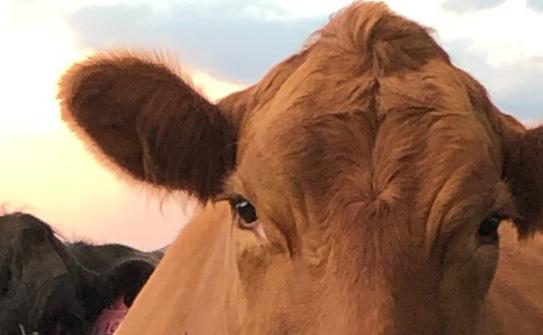
BEST PRACTICES = BETTER RETENTION
Better tag application practices mean better tag retention. Always use the manufacturer recommended applicator with the tag and follow placement guidelines.

24 CATTLE COUNTRY March 2022 www.mbbeef.ca Check out our new and improved tag offerings at tags.canadaid.ca or contact us directly at info@canadaid.ca | 1-877-909-2333 To provide feedback on your tag experience, fill out and return the Approved Indicator Quality Control Form found at: https://www.canadaid.ca/wp-content/uploads/2021/11/Approved-Indicator-Quality-Control-Form_fillable-2021-11-19.pdf CCIA CANADIAN
AGENCY canadaid.ca
CATTLE IDENTIFICATION
CCIA CANADIAN CATTLE IDENTIFICATION AGENCY
Photo courtesy of Canadian Gelbvieh Association
CONCERNED ABOUT TAG
RETENTION? WE ARE LISTENING
Forage insurance and managing drought risk
 BY RON FRIESEN
BY RON FRIESEN
Like most Manitoba beef producers, Ray Bittner had a really tough year in 2021 because of a crippling drought which ravaged crops and pastures throughout the province.
But unlike many producers, Bittner had a backstop that helped to keep his operation going: forage insurance.
“In years like this it really comes in handy for sure,” Van Deynze says. “It is production based and production was hard to come by in a lot of Manitoba this year. It was a very useful tool for a lot of our customers. It is something that I think will help farmers get through a very challenging year.”
For Bittner, forage insurance helped keep his operation afloat during last year’s drought crisis. Unfortunately, he is a minority among cattle producers.
road allowances and ditches. Still others try to carry a full year of extra hay into the next year, providing old stock to fall back on. Some vary the size of their herds during the winter to accommodate the amount of hay on hand. Also, forage is typically a low input crop and producers tend to see insurance premiums as an expense they’d rather not incur.
All of which creates a struggle for MASC to increase the enrolment for forage insurance, says Van Deynze.
Canada achieves BSE negligible risk status



“2021 was a big claim year for myself and many of my neighbours in the North Interlake which had rainfall amounts of 30-40% of normal during the growing season,” Bittner wrote in a recent e-mail to Cattle Country
BY RON FRIESEN
It took 18 years, but Canada has finally been declared BSE-free.
“I personally would have reduced my herd a great deal if I had not been in forage insurance in 2021. But through forage insurance and the AgriRecovery program I am continuing on with the same herd size and looking forward to the future.
That means good news for both traders who export beef and ranchers who produce it, industry officials say.
Figures from Statistics Canada show that Manitoba had 1.35 million acres of forages in 2021. Of that, 1,453 forage producers insured 340,000 acres - only 25 per cent of the total, according to MASC.
Lowe.
The World Organization for Animal Health (OIE) has recognized Canada as a country with negligible risk of bovine spongiform encephalopathy (BSE), giving it the most preferred status under the OIE’s system for evaluating BSE risk.

“AgriInsurance is a program that more producers should enroll in,” Bittner continues. “Producers should not look at it as a gamble that will occasionally compensate them for their premium costs. Producers should look at it as when a very bad year comes, there is a backstop that will keep them in business.”


“The difference will be the ability to access markets that we otherwise weren’t able to because we didn’t have that status,” said Tyler Fulton, Manitoba Beef Producers president.
That’s better than in 2020, when 1,298 clients insured 286,000 forage acres for a 21 percent coverage rate. But it is still a pittance compared to annual crops which MASC regularly insures to the tune of 90 per cent of seeded acres.
“There are some options they make use of that seem to work for some producers,” he says. “It’s a mixture of a number of things but at the end of the day, from our perspective, we would sure like to see more producers participate in the insurance programs we have.”
The industry has asked Ottawa to encourage Canada’s trading partners to recognize the OIE’s ruling and accept Canadian beef without restrictions, he said.
If forage insurance is so helpful to beef producers, as Bittner says it is, why is the take-up rate so low?

In a May 27 statement, federal Agriculture Minister Marie-Claude Bibeau said the government will do so.
was detected in an Alberta cow and international borders immediately slammed shut to Canadian beef exports.
Those programs cover a wide range of options, including basic hay insurance, forage establishment insurance, pasture insurance, forage seed insurance, greenfeed insurance, and others, says Van Deynze.

Since 50 per cent of beef in Canada is exported, producers suddenly found themselves with collapsed market prices and animals they could not sell because the market could not absorb them.
The announcement in May removes the final trade barrier against Canadian beef exports.
Negligible risk status means importing countries no longer have any grounds for restricting beef from Canada because of BSE.
Bob Lowe, Canadian Cattlemen’s Association (CCA) president, said some Asian countries still limit Canadian beef imports to cattle under 30 months of age, citing BSE concerns. Now they no longer have reason to do so.
David Van Deynze hears that a lot. As chief product officer with the Manitoba Agricultural Services Corporation, Van Deynze regularly has clients telling him they consider AgriInsurance the first line of defense among business risk management (BRM) programs for farmers hurt by natural disasters such as drought.
“Assuming that the world is based on science-based trade, there’s no reason to have those restrictions anymore,” said
Part of the reason, according to Van Deynze, is that forage growers can mitigate their risk in a number of ways, of which insurance is only one. A MASC forage review a few years ago found that producers often own or operate more forage acres than they actually need for themselves, providing little incentive to insure them all. Some producers have access to roughage - sloughs and cattails - that they can access for feed in really dry years. Others mitigate risk by accessing other acres, such as
“Canada will inform those trading partners of Canada’s BSE negligible risk status and will undertake immediate work to support expanded global market access for Canada’s high-quality cattle, beef and beef products,” Bibeau said.
The question now is whether last year’s disaster will encourage more beef producers to sign up for forage insurance. Van Deynze is optimistic, noting the number of insured forage acres increased by nearly 20 per cent between 2020 and 2021.
“Hopefully, participation will continue to grow after a challenging year. We think for the most part it works quite well, so it’s status quo for 2022,” he says.
It has been a long and difficult journey for Canadian beef producers since that black day in May 2003 when a case of BSE
He adds MASC will know better after March 31, which is the enrollment deadline for the 2022 crop year.
The result was cataclysmic for the industry. CCA estimates direct economic losses between 2003 and 2006 alone ranged between $4.9 billion and $5.5 billion. Some 26,000 beef producers left the industry between 2006 and 2011. More than 2.2 million acres of pasture lands were converted to crops, creating a major negative environmental and ecological impact.

www.mbbeef.ca PUBLISHED BY MANITOBA BEEF PRODUCERS JULY 2021 POSTMASTER: PLEASE RETURN UNDELIVERABLE COPIES TO: MBP, UNIT 220, 530 CENTURY STREET, WINNIPEG, MB R3H 0Y4 CANADIAN PUBLICATIONS MAIL PRODUCT SALES AGREEMENT NUMBER 40005187 POSTAGE PAID IN WINNIPEG. President's Column Page 2 Weatherrelated emergencies Page 4 Reliable summer water Page 12
Laura Plett, of Sawmill Creek Livestock near Stead, enjoys some family time with son Dustin between filming segments on her property for the upcoming Season 32 of Great Tastes of Manitoba. (Photo credit: Donalee Jones)
Page
2
BY MANITOBA BEEF PRODUCERS FEBRUARY 2022
Page 2 PLEASE RETURN UNDELIVERABLE COPIES TO: MBP, UNIT 220, 530 CENTURY STREET, WINNIPEG, MB R3H 0Y4 CANADIAN PUBLICATIONS MAIL PRODUCT AGREEMENT NUMBER 40005187 POSTAGE PAID IN WINNIPEG. President’s Column Page 2 2021 MBP scholarship recipients Page 8 Recipe for a healthy heart and happy stomach Page 15
Calving season is underway at farms across Manitoba, including Lazy J Ranch, where 45 calves (and counting) have joined the herd. Photo credit: Sarah Ramsey
2021 a challenging year for cattle producers A closer look at risk management
The 2021 production year proved challenging for cattle producers, with the drought-related feed and water shortages, continued disruptions related to the COVID-19 pandemic, the threat of a strike at our largest beef packing plant, and the discovery of an atypical BSE case found in a cow in Alberta. Any one of these risks can represent a real threat to the viability of a cattle operation, but together they impacted the whole industry in a way not seen for almost 20 years when BSE was first discovered in Canada.
As small business owners, we are inherently risk takers. We bet on our own work ethic and skills to competitively raise healthy and sustainable beef with the hope of earning a living and supporting our families. However, sometimes events outside our control can wreak havoc on our farms and ranches, such as they did this past year.
Managing risk is important for all types of agricultural operations across different sectors. For the last 15 years I have been a cattle producer in Birtle, Manitoba, but I have also held an off-farm, part-time job as Director of Risk Management for a hog marketing coop called HAMS. The better part of my off-farm career has been spent informing hog producers of market risks and devising tools to mitigate price risk. Over this period, independent hog producers have adopted risk management practices that have helped them survive the market downturns.
Beyond the farm practices that help us to be resilient, the beef sector has business risk management (BRM) tools available that can help mitigate some of the effects of these risks. Some specific examples include MASC’s forage insurance program suite under AgriInsurance, Livestock Price Insurance (LPI), and the federal/provincial/territorial program, AgriStability.
When I started using forage insurance about three years ago, I was skeptical that I would see a benefit and I struggled to rationalize another expense on my farm. However, the past two years of dry weather and a more uncertain climate have confirmed to me that the program has real value. The most convincing argument for joining is this: over time, your coverage becomes based
Bittner, who is also the Livestock Predation Prevention Project Lead for Manitoba Beef Producers, says a long-term strategy is necessary for forage insurance to be effective. That includes:
• Keeping forage crops under four years of age because they produce better yields and receive better coverage from MASC.
• Having pure stands of alfalfa because they are covered much better than mixed grass-alfalfa in dollars per tonne.
• Producers with multiple years of production are covered with their own data rather than regional data.
“While the above practices take a few years to implement, they are well worth it,” Bittner says. “To defend against 2022 forage losses, signing up now is critical and getting forages inspected before season is also important.”
Manitoba cattle producers also received emergency assistance from other business risk tools in 2021 with varying degrees of success.
TYLER FULTON President’s Column
on your own production and the governments of Canada and Manitoba cover 60% of the premium costs. I have found this to be the most effective tool to help address some of the types of risk associated with a drought.
Livestock Price Insurance (LPI) is the simplest way you can manage the price risk associated with your calf or feeder sales. The coverage levels are based on an estimate of steer calf or feeder prices that incorporate feeder cattle futures, the Canadian dollar, the cost of feed and historical basis levels. The program provides various marketing periods and levels of coverage for which you can purchase a policy. If, when you sell your calves, the index price is lower than your coverage, then you are entitled to a payout. While the premium cost is not shared by government, the administration costs are supported by federal and provincial governments. To learn more about whether it might work for you I recommend following the coverage levels and costs for a few weeks on their website (LPI.ca) and comparing them to the price that you received for your calves in recent years. It may surprise you.
AgriStability is a risk management program offered under the Canadian Agricultural Partnership between the federal and provincial/territorial governments. It is a broad program that addresses significant declines in income, whatever the cause. If your production margin for the program year falls more than 30% below your historical reference margin, you are entitled to a payment. Previous to 2021, the program design was not favourable to cow/calf type operations as they had limits to reference margins related to expenses that made it more difficult to trigger a payment. However, the program was changed early in 2021 and it is now more equitable to cow/calf operations. For those producers in
Western Canadian provincial governments moved quickly to make it more flexible for producers to deal with drought-stressed crops and make them available for grazing or greenfeed, said Dennis Laycraft, Canadian Cattlemen’s Association executive vice-president.
Producers also received drought relief aid under AgriRecovery to purchase, test and transport feed to maintain breeding herds. Another program promised help in rebuilding cow herds depleted by producers forced to cull animals because of feed shortages.
Laycraft said it won’t be known until later this winter how helpful the support has been. “But it certainly did help in terms of allowing more hay to be kept at home.”
Other programs were less rewarding. Laycraft said AgriStability still needs improvement, although adjustments to reference margins announced last year were beneficial for cow-calf producers.
But Livestock Price Insurance failed to gain support in 2021. Manitoba producers insured only about 20,000 head of cattle under the program in 2020-21, a drastic drop from the three previous years when clients insured up to 50,000 head annually.
the hardest hit areas of drought who were forced to buy most of their feed, I believe AgriStability would have been the most beneficial program to help maintain the viability of their farm or ranch.
In Manitoba, three specific programs have been developed jointly by the federal and provincial governments via the AgriRecovery framework to help address the worst outcomes of the drought of 2021 on the beef cattle sector. The Livestock Feed and Transportation Drought Assistance program has helped some producers to secure feed to maintain their cow herd. The Livestock Transportation Drought Assistance program provides help to offset freight expenses incurred for moving livestock to alternative feed supply areas. And, for those producers who were forced to sell a portion of their breeding herd due to shortages of winter feed, the Herd Management Drought Assistance program will provide modest support to help rebuild their breeding herd in the year ahead.
Program administrators recently introduced some changes to the Livestock Feed and Transportation Drought Assistance program that will help more producers by expanding the list of eligible expenses. For example, feed additives and premixes, including molasses based products, vitamins, minerals, and oils and fats, are now eligible. The change is retroactive to June 1, 2021.
AgriRecovery is intended to work together with the core BRM programs to help producers recover from natural disasters like droughts and floods. It is important to note that AgriRecovery programs are not permanent and can’t be relied upon in future production years. Each disaster is assessed separately to determine whether or not programs will be provided under AgriRecovery.
The purpose of all of these programs is to help provide tools that producers can use to manage the risks that threaten their farm. They are not perfect and will not address all the risks that we face, but I have found them helpful for managing our operation and hope that you might consider them for your farm. They could strengthen your operation and as result, positively impact your mental health.
Producers have expressed dissatisfaction with LPI ever since the program was introduced in 2014. Part of the problem is that producers pay all of the premiums, unlike crop insurance where premiums are cost-shared between producers and government. (Van Deynze points out, however, that the administration cost for LPI is paid entirely by the two levels of government, the same as AgriInsurance.)
Another concern is that producers find prices and coverage to be very volatile, leading one to call LPI “very frustrating and unpredictable.”
All of which leaves crop insurance as producers’ best option for risk management, especially if the drought continues in 2022, says Bittner.
“So far soil moisture is lacking, snow cover is minimal, forages were damaged in 2021 and there is no residue left from the past year. This is a recipe for low yields in 2022 unless dramatic rain occurs in April/ May/June,” he says.
“While producers look at older fields on their land with difficulty affording fertilizer and difficulty justifying an additional crop insurance bill in fall, 2022 is likely the best year to sign up for forage insurance and try to cover the potential forage shortfall that could arise.”

2 CATTLE COUNTRY February 2022 www.mbbeef.ca
DISTRICT 13 MARY PAZIUK R.M. of Shell River, Shellmouth,Hillsburg, Boulton Grandview Gilbert Plains Ethelbert, Mossey River, Dauphin, LGD Park COMMUNICATIONS AND MARKETING LEAD David Hultin OF FIC E A SS ISTANT Jennifer Patryluk D ES IGNE D BY Print Studio One CATTLE COUN TR Y EDITOR David Hultin LIVESTOCK PREDATION PREVENTION PROJECT COORDINATOR Ray Bittner FINANC E Deb Walger DISTRICT 14 JIM BUCHANAN R.M. of Minitonas, Swan River Mountain, The Pas MA NI TOB A BE EF PROD UCERS Ph: 1-800-772-0458 Un i t 220, 530 Centur y Stree t Wi nn ipe g, MB R 3H 0Y 4 PH - (204) 772-4542 FX - (204) 774-3264 info@mbbeef.ca www.mbbeef.ca Carson Callum GEN E RA L M AN AGER DISTRICT 1 ALFRED EPP R.M. of Albert Cameron, Whitewater, Edward, Brenda, Winchester Morton DISTRICT 2 NANCY HOWATT R.M. of Riverside Strathcona Argyle, Lorne, Turtle Mountain Roblin Louise, Pembina DISTRICT 3 ANDRE STEPPLER R.M. of Portage la Prairie, Cartier, Roland Morris Stanley Rhineland, Montcalm DISTRICT 4 KEVIN DUDDRIDGE R.M. of Richot, Ste Anne, Hanover, De Salaberry, La Broquerie Franklin, Stuartburn, Piney LGD Reynolds DISTRICT 5 STEVEN MANNS R.M. of Elton, North Cypress, North Norfolk Cornwallis Oakland South Cypress, Victoria, South Norfolk DISTRICT 6 MELISSA ATCHISON R.M. of Wallace, Woodworth, Daly, Pipestone Sifton, Whitehead, Glenwood DISTRICT 7 TYLER FULTON PRESIDENT R.M.
of Russell, Silver Creek, Rossburn, Ellice, Birtle, Shoal Lake Strathclair, Archie Miniota, Hamiota, Blanshard
DISTRICT 8 MATTHEW ATKINSON 2ND R.M. of Harrison, Clanwilliam, Rosedale, Glenella, Saskatchewan, Odanah, Minto, Langford Lansdowne, Westbourne, LGD Park
DISTRICT 9 TREVOR SUND R.M. of Woodlands, Rockwood, St. Andrews Rosser St Francis Xavier, Bonnet Brokenhead, St. Clements LGD of Alexander, Pinawa DISTRICT 10 MIKE DUGUID SECRETARY R.M. of Bifrost, Gimli, Fisher, Armstrong
DISTRICT 11 ARVID NOTT VEIT R.M. of Siglunes, Grahamdale, Eriksdale, Coldwell, St. Laurent
DISTRICT 12 MARK GOOD TREASURER R.M. of Lawrence, Ochre River, Ste Rose, McCreary, Alonsa
Maureen Cousins
POLI CY AN ALYST
Page 1
Reasons for optimism in 2022
Happy New Year!
As I look ahead in the new year, I have a great deal of optimism for the beef sector. There are a lot of positives to look at, even after coming off a really challenging year in 2021.
Even with all the negative press that the beef industry has been getting over the last number of years, demand globally for Canadian beef is extremely high. The recognition by many in the public eye of the high quality protein and other nutritional attributes provided by beef is good to see. However, it’s still important to continue to promote Canadian beef both domestically and internationally to dispel any myths about the product and to keep the positives in the forefront.
I was very pleased with the success of one of these promotion efforts this past year, which was the 32nd season of Great Taste of Manitoba (GTOM). Each of MBP’s two episodes featured a recipe wonderfully prepared by our Food Expert Tamara Sarkisian. Unfortunately for MBP, Tamara is moving back to Ontario to be closer to family, so we only had her on the team for a short time. Tamara recently welcomed a new addition to her family, a baby boy. I personally wish her and her growing family all the best, and thank her for everything she contributed to the beef industry. I know she will continue to be a beef advocate in her own nutrition business as well.
During each episode of GTOM, a Before the Plate segment was also aired. These two segments featured Stead-area beef producer Laura Plett and her family, Tim Sopuck from Manitoba Habitat Heritage
CARSON CALLUM General Manager’s Column

Corporation (MHHC), and Brandon-area beef producer Brett McRae’s family. They touched on topics such as beef production and the environment, including ecosystem services. Each segment was very well done and demonstrated a positive message for the sector. I want to thank all involved for their willingness to take part in these features and for doing such an amazing job.
As we think of public trust, the top message I deliver to folks in my circles is how much benefit the Canadian beef industry provides to the environment. I often raise its importance in the battle against climate change as well. As we know, beef producers maintain precious grassland habitat that is disappearing at alarming rates. These habitats provide many benefits from an ecological perspective, but when cattle are able to utilize them, they also produce quality food for the global population. A main MBP focus in 2022 will be continuing to advocate for producers to be supported for maintaining these important lands, such as recognition of ecosystem services, thereby helping to level the playing field with commodity crops. If producers aren’t supported through land payments, carbon credits, etc., then we will continue to see total acres of important
grassland ecosystems decline through land conversion. Beef producers are champions for environmental sustainability, and there are many wheels in motion to get some support for this effort.
Looking forward in 2022, I hope we have fewer crises to deal with such as drought or floods, and see a positive production year. We can then continue efforts of importance, such as the environment file I referenced or the agricultural Crown lands challenges that need resolve, among other key files. We have a great team to accomplish many of these important tasks. We are also looking forward to working with Derek Johnson, MLA for Interlake-Gimli, who was recently appointed Minister of Agriculture. And MBP thanks outgoing Minister Ralph Eichler for his years of service to the agriculture sector.
In light of the recent pandemic-related challenges, MBP’s board and staff have decided to change the format of our 43rd AGM to be strictly virtual, rather than a hybrid in-person and virtual event as originally planned. Although I was greatly looking forward to an in-person event, it is the responsible decision to make in consideration of the health and safety of all involved. Conditions permitting, we are planning on doing a summer BBQ and knowledge transfer event to allow for the fellowship in the Manitoba sector that we’ve all been missing as a result of the pandemic. Watch for more details in the months ahead.
Here’s to a safe and productive calving season!
against most predators. A pen will be custom installed and is up to five acres in size. The installation cost is very reasonable with the producer only responsible for a 25% share of costs.
Fladry wire is a polywire with streamers sewn on intended to ward off wolves and coyotes due to the streamers’ movement and the electric shock upon contact. While their use is a short-term practice for birthing periods or while you have compromised livestock under care, it is claimed to be effective at limiting coyote and wolf movement and it is portable. Fladry wire, fence posts, gates, and a solar-powered fencer is all included in the package.
Livestock Predation Prevention Pilot Project update
Are predators taking a bite out of your livestock?

Literally?
The Manitoba Livestock Predation Prevention (LPPP) Pilot Project is seeking producer cooperators who are interested in trying different risk mitigation practices (RMPs) for reducing the possibility of predator problems in their herds.
Manitoba producers who have had previous predator claims with the MASC Wildlife Damage Compensation Program for Livestock Predation are eligible to apply for the RMPs that are still open. These projects will be set up and evaluated in summer 2022,
Ray Bittner Project Lead

so if you are interested, please contact me as soon as possible at the number or email provided at the end of this article.
The following is an overview of available RMPs which are offered through the project.
Game cameras are very useful tools in species identification of predators and predator numbers. They sense animal movement and snap photos of the field of view so you can correctly identify predators and their behaviors on your operation. Game cameras can be used 24 hours a day, but the top priority is choosing a predator traffic location. Preference will be given if these are used in combination with other RMPs.
Composting pens are intended to assist in the removal of food sources predators may scavenge. While this will not totally eliminate on-farm predator activity, it will help reduce the frequency of predator visits and the threat of interactions with livestock. Pens will be custom installed and are up to 60 by 60 feet square. The installation cost is very reasonable with the producer only responsible for a 25% share of costs.
Predator resistant livestock penning is a heavy duty livestock pen built with multiwire high-tensile electric fence wires and predator resistant gates. This type of pen can provide multiple acres with protection
Vet assessments and consultations are another option. Animal husbandry is an important component of a predation management strategy. This RMP involves an on-farm livestock assessment and consultation by a local veterinarian. The intent is to discuss management practices related to optimal herd health, and to reduce the risk of weak animals on the farm. Such animals can be prime targets for predators, and animals which die due to other causes can attract predators. More than 10 additional farms can apply for this RMP.
As well, trapper assistance is provided at no cost to producers via the provincially-funded Problem Predator Removal Services Program (PPRP) run via the Manitoba Trappers Association (MTA). Producers who have made a predation loss claim through Manitoba Agricultural Services Corporation (MASC) can apply for trapper assistance to remove problem predators. For more information about how the program operates, contact the MTA at 204-295-1512.
Consideration is being given to delivering workshops this spring or summer to raise awareness of risk mitigation practices producers can use on their farms and ranches, or initiatives they can access, such as the PPRP. Check MBP’s website and social media channels for further details.
For more information or to enquire taking part in the LPPP project please contact Ray Bittner at (204) 7680010 or RBittner@mbbeef.ca
Individual RMP factsheets, photos and diagrams can be found by visiting https://mbbeef.ca/producers/ and clicking on the Livestock Predation Prevention Project icon on the left side.
Project funding is being provided by the Manitoba Agriculture, Manitoba Beef Producers and the Manitoba Sheep Association. Guidance is being provided by members of the Livestock Predation Protection Working Group, which includes the aforementioned entities, as well as the Manitoba Trappers Association, Manitoba Agricultural Services Corporation, and Agriculture and Agri-Food Canada.
3 CATTLE COUNTRY February 2022 www.mbbeef.ca







Cattle producers continue efforts to protect grasslands and species at risk

 BY WAYNE HILDEBRAND
BY WAYNE HILDEBRAND
Allan and Jacqueline Downey are 4th generation Melita area cattle producers who have worked with Manitoba Habitat Heritage Corporation (MHHC) for close to 20 years to protect native grassland pastures and species at risk along the Souris River Valley.
“Our main pasture is along a five mile stretch of the river valley starting at the USA border,” said Allan. “The pasture is almost all native grassland on the wide river flats and banks.”
“My great grandfather homesteaded the farm in the late 1880s,” Allan said. “He fenced the Mixed Grass Prairie that was grazed by huge herds of buffalo.” Over thousands of years the plants, birds and animals adapted to survive and thrive in the grasslands of this dry corner of the province.
Eighty per cent of Manitoba’s Mixed Grass Prairie is now gone. The grasslands of the Downey farm are helping to protect many prairie species, including the endangered Ferruginous Hawk, Baird’s Sparrow, and Sprague’s Pipit.
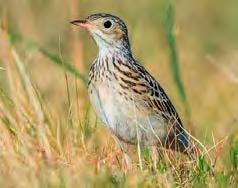
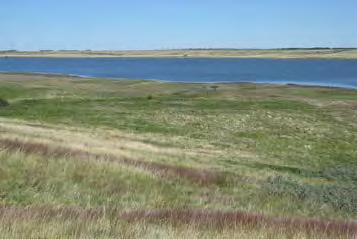
“Jacqueline and I signed Conservation Agreements with Manitoba Habitat Heritage Corporation to permanently protect our native grassland pastures in 2003, 2006 and 2011,” said Allan. “In 2020 Tom Moran from Manitoba Habitat Heritage contacted me about a new
program aimed at protecting threatened and endangered species on grass pastures. Tom explained that the program provided funding that included the cost of fencing materials. No one had ever offered to buy me fence posts before, so we looked into it.”
“It is common for our habitat programming to change over time,” said MHHC Habitat Conservation Specialist Tom Moran. “Recently MHHC has developed incentive programs for beef producers that recognize the positive connection between grasslands, cows, wildlife habitat and protection of species at risk.”
“Over time you build a relationship with area landowners,” said Tom. “It was easy for me to contact Allan, Jacqueline and their son Ryan to discuss and explain the new program for cattle producers and their pastureland. The program provides funding for several things including perimeter pasture fencing, cross fencing, dugouts, watering systems and shrub mowing. Program funding is available for 2022 projects.”
“We really appreciated Tom contacting us to discuss the new program,” said Allan. “The financial assistance helped, and the new fence sure looks nice. In the end, the funding MHHC provided allowed us to replace nine miles of permanent perimeter fence, put in 2.6 miles of temporary cross fence, and build 6 new dugouts.”
“The summer of 2021 was one of mixed blessings,” Allan said. “It was so dry that for the first time we never
baled any hay, but we had time to pound posts and replace old fence.”
“We care a lot for our cows and native prairie grasslands,” said Allan. “There are fewer cattle producers every year and 2021 was a tough year for many. It is encouraging that MHHC understands that beef producers are protecting their grasslands, raising food, and helping endangered species at the same time. It is nice to feel appreciated.”
5 CATTLE COUNTRY February 2022 www.mbbeef.ca
Sprague’s Pipit species at risk in southwestern Manitoba (Photo credit: MHHC)
Polled purebred Simmental (Photo credit: Allan Downey)
HIGH QUALITY BULLS from Reputable Breeders FEB 18 Stephen Charolais & Guests Bull Sale, Whitewood (SK) Auction Mart MARCH 13 Steppler Farms Bull Sale, Steppler Sale Barn, Miami, MB MARCH 19 Pleasant Dawn Charolais Bull Sale, at the farm, Oak Lake, MB MARCH 22 Diamond W Charolais, Red & Black Angus Bull Sale, JTM Livestock, Minitonas, MB MARCH 23 HTA Charolais & Guest Bull Sale, at the farm, Rivers, MB MARCH 29 Prairie Distinction Charolais Bull Sale, Beautiful Plains Ag, Neepawa, MB APRIL 7 Hunter Charolais & Hereford Bull Sale, at the farm, Roblin, MB APRIL 9 Brimner Cattle Co. Bull Sale, at the farm, Manor, SK APRIL 13 White Meadow Charolais Online Bull Sale, Pipestone, MB For more information contact: 306.584.7937 Helge By 306.536.4261 Jon Wright 306.807.8424 124 Shannon Rd, Regina, SK S4S 5B1 charolaisbanner@gmail.com Catalogues and Videos available online a month prior to the sale at www.bylivestock.com
Native prairie - Souris River Valley (Photo credit: Allan Downey)
Producers can apply for drought assistance via three programs through AgriRecovery

Manitoba beef producers affected by the drought conditions are reminded they may be able to receive assistance via two programs under the AgriRecovery framework aimed at helping with the extraordinary costs incurred for feed and transportation.
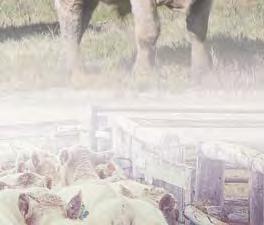
As well, there is a herd management program to assist livestock producers in offsetting the cost of replacing breeding animals when culling is above normal due to shortages of winter feed.

Under the Canadian Agricultural Partnership, the Livestock Feed and Transportation Drought Assistance program helps producers purchase and test feed for livestock to maintain their breeding herds including transporting purchased feed from distant locations.
The Livestock Transportation Drought Assistance program offers assistance to help offset freight expenses associated with moving livestock to alternative feed supply areas.

Eligible animals under the Livestock Feed and Transportation Drought Assistance program are breeding animals of beef and dairy cattle, horses raised for pregnant mare urine (PMU), sheep, goats and bison. Producers must be supporting a minimum of 10 animals to qualify for assistance and the program covers feed and feed transportation expenses between June 1, 2021, and March 15, 2022. Feed must have been delivered from a supplier at least 40 kilometres away and assistance is available for hauling feed for up to a maximum one-way distance of 600 km. Eligible feed purchases are those made between June 1, 2021, and March 15, 2022.
The Livestock Transportation Drought Assistance program offers help for producers with extraordinary costs to transport breeding animals of beef cattle, sheep and goats to alternate locations to feed, up to 1,000 km. This program does not cover moving animals to market or sale.
Applications are available at https://www.gov.mb.ca/ agriculture/livestock/agrirecovery-feed-purchase-transport-assistance.html and must include receipts for feed purchases and transportation.
The Herd Management Drought Assistance program will assist livestock producers in offsetting the cost of replacing breeding animals when culling is above normal due to shortages of winter feed. Producers may be eligible to apply for assistance to:
• purchase replacement breeding females






• retain replacement females from their existing herd or flock


The replacement is to assist in returning the applicant’s inventory of breeding females to pre-drought levels.

Of note, the breeding females culled due to drought can be replaced by purchases or retaining replacement females from the applicant’s existing herd or flock. The replacement must contribute to an increase in the applicant’s inventory of eligible breeding females on January 31, 2023. Any increase in the inventory above pre-drought levels is not eligible.
The following replacements are eligible:
• Purchases of mature cows, mature ewes, mature does, bred heifers, bred ewe lambs, and bred does.

• Purchases of females that will be bred by Jan. 31, 2023
• Retaining females from the applicant’s existing herd to be bred for the first time by Jan. 31, 2023.
The replacement animals must be maintained in the herd or flock until Jan. 31, 2023 or later.
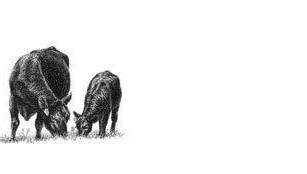
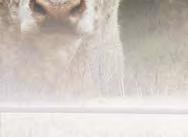
Animals culled under the Herd Management Drought Assistance program are not eligible for assistance under the other two AgriRecovery programs launched on Aug. 31, 2021. The application package can be accessed online at the Manitoba Agriculture and Resource Development website (www.manitoba. ca/agriculture), in-person at ARD and MASC Service Centres, or by calling 1-844-769-6224 to receive a copy in the mail.
There are also a number of resources on this site to provide more details on the three programs, such as frequently asked questions, program guides, certain application forms, explanatory videos, and important deadline reminders.
For explanatory videos see: https://www.youtube. com/playlist?list=PLD7OiKfhYvB8p4bxsvxcT_hxQpCL1Ykea


Manitobans can also stay up to date on Manitoba’s agricultural programs and services by following @ MBGovAg on Twitter https://twitter.com/MBGovAg.
Keystone livestock
Lois McRae & Joyce Gordon
RR 1 Box 57 Brandon, Manitoba R7A 5Y1 h: 204-728-3058 c: 204-573-5192 f: 204-727-7744 marmacfarms1@gmail.com

6 CATTLE COUNTRY February 2022 www.mbbeef.ca
Find a complete list of Charolais breeders at WWW.CHAROLAISBANNER.COM/MCA Manitoba Charolais Association YOUR PROFITABLE CHOICE Make Charolais CHAROLAIS ARE YOUR MOST VERSATILE SIRE ON THE MARKETPLACE, CONSISTENTLY TOPPING THE MARKET WITH ANY TYPE OF COW THEY ARE CROSSED WITH! CHAROLAIS with the most premium driven breed... Cross Into Profit ^ @ MBCHAROLAIS FOLLOW US ON FACEBOOK AT
specializing in livestock insurance for over 45 years LIVESTOCK INSURANCE
SERVICES
Measuring range and pasture health
BY: DR. MARY-JANE ORR, MBFI GENERAL MANAGER


Investing your time in range and pasture health assessment provides a snapshot in time of each range or pasture’s ability to support livestock grazing capacity. In reading and attending training opportunities I’ve observed two scales of focus for implementing range and pasture health assessments. The first being farm focused to quantitatively identify issues in the land base to prioritize interventions and to monitor the impact of management to sustain and improve productivity over time. The second focusing on access to labeled supply chains for financial incentives through farm accreditation or verification.
The Manitoba Range and Pasture Health Assessment (RPHA) Workbook, produced and available through the Manitoba Forage and Grasslands Association webpage, is a resource for producers to build awareness and field skills to recognize impacts on their land. The Manitoba RPHA workbook defines health as the degree to which the integrity of soil, vegetation, water, and air, as well as the ecological processes of the ecosystem are balanced and working together relative to the site’s ecozone potential. Ranking assessments are made on five indicators: 1) plant community composition, 2) community structure, 3) site soil stability, 4) litter levels for nutrient cycling and water regulation, and 5) invasive weeds. The resulting health score is summed for an overall health rating of either healthy, healthy with problems, unhealthy.
The RPHA Workbook goes into depth on the implications of each indicator, and the Beef Cattle Research Council (BCRC) resource page on Rangeland & Riparian Health provides further reading and resources. The Grazing Response Index (GRI), developed by Agriculture and Agri-Food Canada, is a tool that can help evaluate a grazing plan for the current season and help to understand health assessment indicator score results. While the GRI does not monitor overall health, the rating value represents the expected response of forages to the current grazing plan, taking into consideration grazing frequency, grazing intensity, and opportunity for the plants to recover.
Seeking improvements in pasture health will increase the capacity of the land to resist detrimental damage and shorten the recovery period following a disturbance. In-field observations of previous management outcomes may also indicate warning signs that pastures are compromised and require rejuvenation to sustain targeted carrying capacity. Beyond sustaining production, assessments identify areas to enhance Ecological
Goods & Services (EG&S) to regenerate the natural capital in the land. Range and pasture EG&S include food production, water regulation, carbon sequestration, soil formation, erosion control, pollination, and wildlife habitat biodiversity. Evaluating and planning management approaches to address areas of improvement will benefit producers on the farm through lower feed costs, increased stability of forage production, lower forage stand maintenance costs, and increased flexibility and efficiency for extending grazing.
Documenting outcome-based indictors over time has an added value of being a resource to show evidence of improved management. Outcomes-based accreditation provides a pathway to incentivize practices through label recognition for product premium supply chains. The Canadian Roundtable for Sustainable Beef (CRSB) collaboratively developed the Sustainable Beef Production Standard, where certified operations are eligible to use the CRSB Certification Mark to promote sustainability by direct marketing customers, supply chain purchasers, and the public. The certifying bodies of the Standard include Verified Beef Production Plus (VBP+) and Where Food Comes From Inc., who work with operations to identify areas for improvement and prepare for certification audits.
In the CRSB Sustainable Beef Production Standard, natural resources are one principle in the framework in addition to people and the community, animal health and welfare, food safety and quality, and innovation. The emphasis under CRSB is that each certified operation manages natural resources responsibly and improves ecosystem health. The Standard requirements were designed for broad adoption with tiered levels to be accessible to individual operations, support continuous improvement of beef production, be relative to the regional conditions, and support awareness building around beneficial practices. Under this certification framework, carrying out a range and pasture health assessment would place the operation in the top level of Excellence for the goal of grasslands, tame pastures, and native ecosystems being maintained or enhanced.
Building on this initiative, Cargill’s certified sustainable beef program markets beef at a premium and provides a credit per head for cattle processed at Cargill that were retained in certified operations throughout the production cycle. A challenge in the rollout of the program, especially for cow-calf operations, is having livestock remain in the certified supply chain over potentially multiple sales. Increasing uptake of VBP+ certified producers, direct contract cattle to other certified operations, marketing livestock in special VBP+ auction
sales, and promoting certification status will all work towards increasing the benefits to individual producers.
Savory Institute’s Land to Market program, under development to be rolled out in Canada, similarly markets a branded product premium to consumers that is verified to be sourced from producers using regenerative practices to improve their land. The Ecological Outcome Verification (EOV) takes observations and measurements, built on similar principles to the Manitoba RPHA, over short- and long-term time intervals to verify producers are regenerating their farms. Holistic Management Canada is the Regional Hub Verifier and working to bring the program to Canadian producers.
Manitoba Beef & Forage Initiatives (MBFI) is a VBP+ audited operation, and automatically CRSB certified through the single audit process. Having completed the Holistic Management EOV monitor training program in January 2022, we are looking forward to establishing monitoring sites at both the Brookdale and Johnson Farm stations. For the 2022 field season, we are building an on-farm research study utilizing the MB RPHA and EOV over short- and long-term time frames to establish soil health, forage, and livestock productivity measures to benchmark whole farm operations. For more information email MBFI at information@mbfi.ca

Resource Links: Manitoba Forage and Grassland Association: Manitoba Range and Pasture Health Assessment Workbook (https://mfga.net/rangeland-pasture-health)
Beef Cattle Research Council: Rangeland & Riparian Health (https://www.beefresearch.ca/research-topic.cfm/ rangeland-riparian-health-82)

Canadian Roundtable for Sustainable Beef: Sustainable Beef Standard (https://www.crsbcertified.ca/ producers/beef-production-standard )
Savory Institute: Land to Market program Ecological Outcome Verification (https://savory.global/ land-to-market/eov)

7 CATTLE COUNTRY February 2022 www.mbbeef.ca
MARCH 12 2022 50 RUGGED 2 YEAR OLD BLACK & RED ANGUS BULLS +4 FLECKANGUS BULLS MODERATE MATERNAL EASY CALVING EASY FLESHING www.ediecreekangus.com EDIE CREEK BIG TIME 848C OCC EASY RED 868A ASHERN, MANITOBA FOCUSED ON BREEDING MATERNAL GRASS BASEDgenetics SALE STARTS AT 1PM (204) 471-4696 JONATHAN (204) 232-1620 STEFAN 20 BRED HEIFERS AVAILABLE ON SALE DAY!
Dr. Mary-Jane Orr (Photo credit: MBFI)
MBP scholarship recipients
TYLER PANKIW
Hi, my name is Tyler Barrie Pankiw. I am a 3rd generation beef farmer on my mother and father’s sides of my family ‒ Green Bush Angus and Honey Land Farms, respectively. My grandfather Barrie Baker gave me my middle name, and spent most of his life raising black Angus cattle. So, you could say I was born with the title of pro beef.


Like many Canadian beef farmers’ sons and daughters, I spent my school breaks on the farm or in the pasture. Waking up in the minus 35 nights of November and March to check cows and care for newly-born calves. Everyone has their methods of doing this, but I was happy once spring finally rolled around and my fingers were no longer numb from collecting colostrum.
I love showing up to work and seeing my family there with me. We go through it all together. The brisk mornings are spent cracking jokes, checking the herd, and hoping not to step on a fresh cow pie. It is truly a different type of experience. You learn about parts of life that are sometimes looked away from, and we do that together. Sure there might be a row here and
BROOKLYN WIRGAU
Growing up on a farm raising a purebred and commercial Gelbvieh herd has taught me a lot about the beef industry as well as the importance of it.
I enjoy being in agriculture as it has allowed me to learn lifelong skills and well as create long-lasting relationships. I have gained many experiences from being involved in the beef industry that shaped me into who I am today. The beef industry means a lot to my family; we don’t know life without being involved in it. From a marketing perspective it has helped
MATTHEW PAULS
Raising cattle isn’t just another job: it truly is a way of life.
Having grown up on a beef producing farm, I am very proud to say that I have been able to experience this lifestyle and all it has to offer. The cattle industry is one that has a great amount of significance to me, my family, my community, and the province as a whole, and that significance is why I feel so strongly about being able to be part of this great industry.
My family has been raising beef cattle for as long as I can remember, and my father for his whole life. As any cattle producer will tell you, this takes a great deal of commitment. It means spending long hours putting up hay in rough sloughs, and equally long hours pulling calves on freezing winter nights. This is a lot for one person to handle, so as soon as my brother and I have been able to, we have helped our parents in any way that we can with the haying, feeding, treating, birthing, and fixing required to maintain the operation. Without a doubt, working as a family with the cows is not the most relaxing experience. Uncooperative cattle seem to have a way of pushing everyone’s buttons, so to speak, and can be extremely frustrating. However, I can say with confidence that having the opportunity to work together through joy and adversity has brought my family much closer together. Being in the cattle industry provides much more than beef. To us, it gives both meaningful work and a closer bond.
there on how work should do things, but we learn in the end. I am trying to say that beef farming can be challenging, just like many other industries. But we like it the way it is; otherwise, we would not be here. Those in the community that like fresh beef like it just as much. The farm provides jobs for members of the community that want to work in the outdoors, farmhands, large animal vets, and techs. Our farmhands learn how to operate machinery through training and time, to prepare safe, clean environments for the livestock, to feed and care for them. These people work in close-knit groups, often requiring quality communication skills to avoid problems. They might work different hours than us, but we all end up getting our boots dirty by the end of the day, whether it be the sun setting or rising.
Our black and red Angus cattle provide for the province.
our herd expand, both buying and selling cattle. The industry has not only taught me, but my family what hard work and determination is to be able to run a beef farm.
Being a past 4-H member it has been a huge eye-opener on how important it was to raise my 4-H projects, as well as market them. Over the years I have sold many steers and by doing that I have been able to provide food for many people in the community. Being involved in the industry I have had the opportunity to help my community.
Growing up in Lundar I have been able to see all the other local farms within the community; as a small town
They do the most demanding job of all, transforming energy into a more compact and usable form. At the same time, they stand through the harsh winter days or bask in a pond during the hot summer months. It is not only the beef that they produce that is important to us, but also the manure. All the nutrients left after they have processed the feed we give them are essential to us. This solid manure we dry out and spread across the fields in the area. The manure breaks down, and the nutrients are then usable again for crops to grow. Higheryielding crops mean more bushels in the bin or, better yet, the elevator.
Everyone in agriculture works together, in one way or another. You can always count on someone to give you a hand or two when things are tough, and that is why I am a Manitoba beef producer.
in rural Manitoba the majority of the families live on cattle farms. There are a lot of youth who grow up on farms and are understanding the importance of continuing their family farm in future years. It is great for our community as there is lots of local meat to buy. Without all our local farmers being involved in the industry we would not be the community we are today. People in our community are proud to be farmers and proud to support them to help make the industry grow.
Throughout Manitoba the beef industry is a fairly diverse industry; everyone involved is passionate about it and wants to continue to grow the industry as well as make it better for future generations. The industry has helped our economy grow, which means a lot to our province. The industry depends on beef produces across the province. I hope to see in future years younger generations continuing to carry on what past generations created and for everyone in Manitoba to continue to support beef producers.
My community also has strong ties to the beef industry. Despite a slight downward trend in recent years, many family cow-calf operations still exist in our region. Such farms are an important part of our area as they provide a way of life for many area residents. Beef producers also have much impact on the community through their support of the Beef 4-H program. In addition, the prevalence of smaller cow-calf farms has led to growth in the feeder steer market. Many families simply buy steers from the cow-calf farms and raise them to slaughter for beef. Such trade showcases the important connection between beef farmers and the community at large.
Finally, beef production has a lot of significance to Manitoba. Despite the fact that our province has less massive feedlots, we still have the third most cattle by province in Canada. This means that many smaller cow-calf operations and small feedlots are more prevalent. This smaller-scale setup translates into more localized transactions, supporting the many butcher shops across the province and providing an important economic benefit to Manitoba. In fact, many businesses, from cattle equipment manufacturers, logistics companies, restaurants, and everything in between have some sort of “steak” in the cattle industry.
In closing l want to emphasize how glad I am to have had the opportunity to grow up in this industry. Being involved in agriculture has allowed me to develop relationships with my family, community, and our animals. I’ve been able to learn the importance
of hard work, the responsibility that comes with animal husbandry, and a diverse skillset I wouldn’t have if I didn’t live on a farm. In fact, my experience with our cattle is the primary reason I intend to pursue Veterinary Medicine at the Western College of Veterinary Medicine. Despite the difficulties it brings, I simply can’t imagine a life in which I’m not connected to agriculture in beef production in some way, and I wouldn’t trade that for the world!

8 CATTLE COUNTRY February 2022 www.mbbeef.ca
RILEY JANKE
My family has been involved in the beef industry for four generations. I am proud to say I am a fourth-generation beef farmer. My great grandpa started our heard with 10 cow-calf pairs, and we have since grown our heard to 140 cow-calf pairs. Our herd consists of Red and Black Angus. My family and I are very dedicated to our animals. We pride ourselves on showing our animals respect, as well as making them as comfortable as possible.
Ever since I was young, I have been surrounded by cattle. I willingly spend every morning during the summer months checking pastures. Watching my own animals grazing fresh green grass on a summer morning is very relaxing. Ensuring my animals are healthy and comfortable is my top priority. I believe my passion for cattle comes from my father. He has taught me how to properly maintain a healthy herd. From dragging myself out of bed at 2 a.m. during a snowstorm to check for newborns, to spending my Friday nights shoulder deep pulling a calf, it’s all in my best interest to sustain a healthy herd.
MEGAN BESWITHERICK

The beef industry is one of the most important industries in the world, feeding the world and helping to control CO2 levels with the required pastureland. Not only does the world rely on the beef industry, but so does my family, my community, and Manitoba.
The beef industry means everything to my family. It has been our life and passion for the past 25 years, my community because it runs on the charity
My grandpa once told me that if I loved my job, I would never work a day in my life. I could never imagine myself not being a beef producer. I pride myself on the fact that our beef operation is run strictly as a family-owned and operated business. Everyone pulls their weight which is what makes the job so enjoyable. Working with my family can be challenging at times, but in the end, I know that we all have the same goal, which is to do best by our animals.
I find it disappointing with the number of farms opting out of cattle. In the last decade I have seen many neighbors in my rural area do away with their beefers. I believe the beef industry is the keystone in my community. Marquette is a wonderful environment to house cattle. Our pastures are well treed, and the grass is never greener on the other side of the fence!
Along with my community, the beef industry is vital to the identity of Manitoba. Local beef producers are all in the game together. If the neighbors’ cows get out, your friendly neighbor is often there to help regather the herd. This reputation is what our beef industry should be built on. I for one believe Manitoba beef producers build their own entities on those bases.
and support of the surrounding beef farmers, and Manitoba because it is protecting the environment and keeping the costs of nutritional beef products in Manitoba low.
My family has been heavily involved in the beef industry since before I was even born, it has always been our way of life. My parents started our company, B2 Cattle Co. in 1997, transitioning from our generational dairy farm to a new start with beef, never looking back since. Not only has growing up on a beef farm taught me a passion for animals, but it has also taught me resilience and forward-thinking. The beef industry is important to my family and me, it is our way of life and our passion. My parents have never ceased to be passionate and proud of their accomplishments with their cattle, passing that along to my two sisters and myself. The influence and help of my parents have allowed one of my sisters and me to start our own cattle company, Lil Chicks Cattle Co., and pursue our dream of raising purebred Simmental cattle.
To say that the beef industry means everything to us is an understatement, it has allowed us to follow our dreams and love what we do every single day. All of these traits are the reason why I love, am proud to be a part of, and will forever enjoy the freedom of the agriculture industry.
The small community of Austin and area is an agriculture-based community, where over double the residents live in the country than in the town itself. It is not uncommon to see tractors and grain trucks
pulling into town to pick up groceries on the way by. One of the main industries in is the beef industry, which makes up a large portion of jobs available in the area. From the ranchers, other business opportunities arise, such as feedlot cleaning, manure spreading, vet clinics, and butcher shops. The beef industry is an essential part of the economy of my community, and to the non-for-profit organizations in the community, because beef producers are among some of the most charitable in the community.
As for Manitoba, the beef industry is one of the largest industries in the province and is a part of our identity. Due to a large number of fields and pastureland belonging to farmers and ranchers occupying friendly Manitoba, the CO2 levels in the province are very low, showing that we, as a whole, are doing our part to help the environment. Not only does the beef industry positively impact the environment, but it also allows the nutrition of beef products to come at a more affordable cost in Manitoba because of little to no transportation costs.
After reviewing all the positive impacts that the beef industry makes on the environment, community, and Manitoba, it is clear that the industry is an important part of our society. Not only does it provide a positive effect on the health of our economy in the prairies, but also the common passion for the success of the industry due to the large numbers of participants. The beef industry means everything to me and is a beacon of hope to do good for our economy in trying times.
JILLIA MEGGISON
What the beef community means to my family, my community, and Manitoba is not simply a paycheck.

Although many of the families in my community make their living on raising and breeding beef, it is more a lifestyle than a career. Being raised on a beef and mixed grain farm, I have been around cows my entire life. I have grown comfortable with them to the point where I know how to safely handle cows, and when to run and seek safety behind a fence.
Working with such large animals as a teen and young adult has taught me to love working with cattle and to be patient even in the most frustrating times, and that although they may seem tame and calm, they can become dangerous very quickly. I have learned to pick up on the signs of when they become stressed and are less safe to work with. When I was first starting to help with the cows, my dad made sure I knew to be careful, keep my head up, stay on my toes, be loud, and always be paying attention while in the pen with the cows. I’ve also learned about their eating habits, how to check a herd to make sure everyone looks healthy, and that cattle always come running for oats!
The beef industry was part of my childhood, not just because beef products are ingredients in most of
my favourite foods, but because I learned to anticipate that around mid-February, I could watch as my dad pulled a cow, or that in the fall we’d have a crew at our house to help with preg checking all the cows.
I’ve learned about the responsibility of growing animals that will feed others. Each morning with only the odd break, my father and grandfather go out with the tractor and feed, water, and check the cows. Unable to go on long vacations, and always needing to stay close by when calving season comes along is a large part of their lives, and commits beef producers to their jobs. This shows how deeply beef producers are rooted in their jobs. When they get their livestock, they cannot abandon the animals and choose a new career. When you become a producer, you’re in it for the long run, through tough seasons and tough markets. In the town I grew up in, cattle brought the community together, whether it was because someone needed help with a big job, or just everyday conversation about how things are going with the animals.
What it means to be a beef producer is being willing to help out fellow producers with big jobs, committing your time and life to raising cattle and supplying beef feeding your country. It means learning the behaviors of the animals and knowing how to respond. Being a beef producer means being a part of
a community that helps each other out, that is sustained by hard work and long hours. Becoming a beef producer is a large investment of time and money, but it is time and money well spent and I’m proud to be the daughter of a beef producer.

9 CATTLE COUNTRY February 2022 www.mbbeef.ca
2021: A perfect storm for beef producers
BY: ANGELA LOVELL
If there ever was a perfect storm of things that could go wrong, beef producers weathered it in 2021, continuing to wade through the tough trends set in motion the previous year.
Michael Young, President of Canada Beef, has been in the industry a long time, and has never seen so many headwinds lined up as this past year, including widespread drought across Western Canada that affected grain and forage production, the ongoing pandemic and livestock diseases that disrupted markets and the supply chain.
“We went into 2021 with a huge opportunity to fill gaps that existed in the market [because of African Swine Fever in Asia which decimated the hog industry there in 2020], and then COVID-19 hit and everyone was challenged to maintain supply chains and get the volume up and into the market,” Young says.
But, as Canadian beef producers faced these challenges, they also had some good news, as beef demand stayed strong, and the industry adapted to be resilient to whatever came its way. The industry had learned valuable lessons since the onset of the pandemic in spring 2020. It is estimated that the meat processing industry in North American spent around $1.5B on measures to protect its employees and be able to continue to operate during the ongoing pandemic.
“As we went through wave after wave of COVID, we were able to ensure our processing plants could continue operating on a full capacity basis,” says Dennis Laycraft, Canadian Cattlemen’s Association (CCA) Executive Vice-President. “That was important because we were seeing record demand for our products.”
Despite the slowdowns in processing in 2020, Canadian beef exports still set a new record for value that year, and in 2021, surpassed that record by 27 per cent. That growth was due to continued strong demand particularly from the United States (which saw the strongest beef demand in 33 years) and Asia.
“When we went through the challenges with supply chains, and people were staying home and doing more home meal preparation, beef became one of their favourite meals again,” Laycraft says.
Promoting sustainable, nature-based solutions
There have been massive and concerted efforts by the beef industry to debunk common misconceptions about beef production and consumption, and emphasize its sustainable practices, and positive role in protecting fragile ecosystems and addressing climate change.
In June, various industry partners including Canada Beef, CCA, Beef Farmers of Ontario and Media Planet launched an online “Untold Stories About Canadian Beef” campaign. In May, the award-winning video, Guardians of the Grasslands, a co-project of CCA, Ducks Unlimited Canada and the Nature Conservancy of Canada, was publicly released, and has since received more than 15,000 views on YouTube and been shown in many schools across the country.
Another highlight of the year was the first ever United Nations Food System Summit that was held in New York in September. At the summit, there was much discussion about plant-based proteins, which mobilized the global animal protein industry to share its story about the sustainability of its products, with Canada leading the way.
“What we saw was that the animal industries from across the world got more involved and there was very
strong support from the cropping sector as well about the importance of livestock in agriculture and the need for nature-based solutions,” Laycraft says.
There are few animals that are more integral to nature-based solutions for agricultural sustainability than cattle production, whether it’s preserving grasslands, practising regenerative agriculture, or being able to utilize low quality grains for feed.
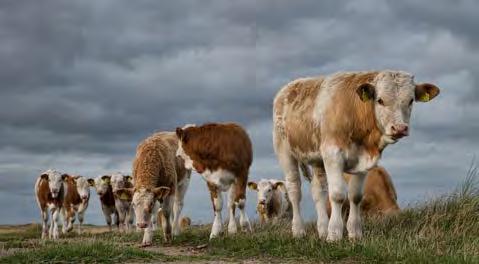
“Canada’s [government] representative talked about how sustainable Canada’s livestock industries are, and having positive comments come out about livestock industries in Canada was quite significant,” Laycraft says.
A year of drought
The summer of 2021 brought more challenges for beef producers across Western Canada as the second year of widespread drought, wildfires and floods affected different regions. The severity of the drought, which extended to northwestern parts of the United States, meant producers faced feed shortages as pastures and feed crops struggled to produce adequate yields. The issue was compounded by the fact that China had been buying up vast quantities of grains and oilseeds in late 2020 and early 2021 as its hog industry began to revive from the African Swine Fever outbreaks that had decimated it in the previous two years.
“We entered the drought with some of the lowest inventories of grains and oilseeds that we’ve ever had,” Laycraft says. “We needed a good crop to get through that and we didn’t get a good crop, so we had a shortage of feed and high prices for feed heading into it, so it made the drought an even more severe event than it would have been if we had gone into it with normal grain inventories.”
Even though western Canadian beef producers were able to import feed corn from the U.S., the added transportation costs and high corn prices had a negative effect on cattle prices as the year progressed.
Adversity, though, often brings out the best, like the efforts of farmers in Eastern Canada, who had some of their best forage crops in years, to get hay to their counterparts in the west. It also demonstrated the importance of producer organizations across every province from Ontario to British Columbia, that continued to work to help alleviate issues for their members.
“As we went through water shortages, drought, and wildfires that were wreaking havoc in British Columbia, and then the floods, CCA worked closely with all of the organizations, and the federal and provincial governments to get some disaster assistance and drought relief available for producers,” he says. “It shows how important organizations are, when you get into difficult circumstances, to work together and get that strong message to government. We’re going to lose some of our herd this year, that’s inevitable when you have a drought the size that it is, but it would have been far worse without the type of support that we were able to get from government.”
That support also extended to changes in AgriStability to make it more useful to beef producers, with the reference margin limits adjusted to make it easier for cattle producers to qualify.
Promoting the positive story of Canadian beef
Although Canada didn’t suffer from actual food shortages during the past year, consumers did face higher food costs based on inflation and distribution challenges relating to the pandemic. Consumers also noticed a sharp increase in the price of all of animal
proteins at the meat case and on the menu. The Canada Beef team was quick to roll out value-based marketing strategies to help the retail sector merchandise lower priced cuts and preparation methods to support consumers looking to stretch the food budget.
“Beef always represents some of the highest valued protein choices in the meat case or on the menu, so we were faced with formidable challenges to support beef’s market share,” Young says. “Canadians will always purchase more ground beef when the prices go up, so our team was quick to provide additional merchandising options for the retail sector and preparation ideas for the ground beef category to support consumer choices.”
The development and launch of the Canadian Beef Information Gateway (Gateway) has provided an innovative solution that will deliver huge returns on investment for the Canadian cattle and beef industry, as it moves through and beyond pandemic conditions, says Young. The Gateway is a digital ecosystem of consumer information to simplify selection, preparation, and enjoyment of a wider variety of beef cuts more often. The Gateway is accessible via a QR code or the UPC bar code already on every package of beef.
“The idea for development of the Gateway became obvious when our team noticed the resurgence of Quick Response (QR) codes using handheld smart phones and tablets to provide consumers with the information they need when they wanted it,” Young says. “Consumer research by Canada Beef confirmed that consumers are looking for more information about beef nutrition, cooking methods, recipe videos, food safety and beef quality and grading information. Surveyed shoppers who purchase beef at least once a week expressed interest in accessing this information by scanning a QR code.”
The Gateway is an exciting new approach to support consumers who are already eating beef, and to persuade new customers to try different beef products. It also provides the opportunity to make connections with younger people who don’t have the same connection as their parents did with beef and cooking at home.
“We’ve been challenged for years to make a connection with millennials and Gen Xs. The pandemic created a situation that has brought families back to the kitchen to prepare and enjoy meals at home,” Young says.
It was also the year that Canada finally achieved negligible risk status for BSE from the World Organisation for Animal Health, which Young says is a big step forward in being able to close the door on BSE and move forward in getting the same equitable trade access as Canada’s global competitors.
Progress on beef sustainability
A total of 7.4 million lbs. of beef were sold with a Canadian Roundtable for Sustainable Beef (CRSB) certified sustainable claim in 2020-21, a 35% increase over the previous year, totalling over 17 million lbs. since 2018. Five new retail, restaurant and foodservice companies joined the CRSB certified sustainable beef program last year, and sourcing by existing partners remained strong, with some expanding.
“Sourcing commitments by retailers demonstrate on-going consumer demand into the future, and it is a great time for beef producers to seize opportunities through this certification program,” says Monica Hadarits, Executive Director of the Canadian Roundtable for Sustainable Beef (CRSB).
CRSB also conducted a survey for the Certified Sustainable Beef Framework, and held two virtual workshops to gather feedback on what’s working well and what needs to be improved from individual producers, as well as producer organizations.
10 CATTLE COUNTRY February 2022 www.mbbeef.ca
“We had the opportunity to connect year across the beef supply chain stories have been truly inspiring. faced, and continue to face, hardships. kindness, understanding and continue to support each other sustainability impacts.”
“The feedback will help to ensure our internal discussions in 2022 are grounded in practical experiences,” Hadartis says.
During 2021, the CRSB also initiated a review of the National Beef Sustainability Assessment, by conducting a beef producer survey, receiving over 300 completed surveys. These surveys will be aggregated and used to inform key national sustainability metrics that will be calculated and released in 2023, to indicate progress towards the goals set out in the 2016 National Beef Sustainability Strategy.
“These metrics are critical advocacy and communication tools with stakeholders, policy makers and the public about the global leadership role that Canadian beef farmers and ranchers play in sustainability outcomes,” Hadarits says.
In April, building upon the five-year goals that were outlined in the 2020-2024 National Beef Strategy, the industry collaborated to launch a suite of ambitious tenyear goals that provide clear messaging about the process to continually improve how cattle are raised and enhance the natural environments under the care of beef farmers and ranchers. They include goals to improve water and soil quality, support the health and safety of people throughout the supply chain, improve beef quality and incorporate technology to improve efficiencies.

The goals underscore the vast benefits of raising beef cattle in Canada, beyond supplying global protein demand, and address all five principles of beef sustainability which have been adopted by the Canadian beef industry: natural resources, people and community, animal health and welfare, food, and efficiency and innovation.
“The CRSB was very pleased to participate in the goal development process,” Hadartis says. “These 2030 goals provide the foundation to bring stakeholders together and build partnerships for future success, and we look forward seeing what emerges to make these goals a reality.”
The goals were also highlighted at the Global Conference on Beef Sustainability, as well as featuring prominently in dialogues at the United Nations Food Systems Summit, held in New York in September.
Communicating Canada’s sustainability story
Lastly, the CRSB joined two new initiatives that bring the food system together to measure and communicate Canada’s sustainability story, and streamline reporting for producers — the Canadian Agri-Food Sustainability Initiative (CASI) and the National Index on Agri-Food Performance. The CRSB has leadership roles in both of these initiatives.
“We were proud to see recognition of our efforts on the 2030 Goals and public campaigns through nominations by the Best of CAMA (Canadian Agri-Food Marketers Alliance) Awards, and to share our expertise in communicating sustainability with marketing professionals across the Canadian agriculture industry,” Hadartis says.
Not to say that 2021 has been without its share of challenges such as drought, fires and floods, that have affected the productivity of CRSB-certified farms along with other cattle producers.
“The supply of beef from CRSB-certified farms and ranches to meet the growing demand has been a challenge, and we have been working with the value chain to help address the challenge, and will continue to do so in 2022,” Hadartis says. “Aligning communications efforts across the value chain and answering the questions producers have about participation in the program are ongoing priorities this year, as well as continuing the dialogue with consumers and the public about the positive role that Canadian beef production plays in a healthy and sustainable food system.”
Hadartis says the CRSB will continue to share the outstanding sustainability performance of Canadian beef to audiences beyond the industry. Marketing partnerships with Canada Beef, Public and Stakeholder Engagement, Ducks Unlimited Canada, Nature Conservancy of Canada, Birds Canada, and others have proven to be highly impactful, and these efforts will continue.
“Our committees will be hard at work this year calculating those new metrics for the assessment, updating the standards for the certification program, and continuing to communicate Canada’s beef sustainability story,” Hadartis says. “Being part of the Global Roundtable for Sustainable Beef, we can say that many regions around the world do not have those metrics and/or a program to share - these have proven to be beneficial when engaging with stakeholders such as banks, retail and food service companies, NGOs, researchers and governments.”
Canadian beef industry looks ahead in 2022
Looking ahead to 2022, Young says a big concern is increasing inflation, that will continue to put pressure on the food budget, and will mean more competition at the meat counter and on the menu.
The past year has not affected everyone equally. While export demand for beef is up and the retail sector has thrived, the food service industry in Canada has been hard hit by successive COVID-19 measures that have seen many restaurants close their doors for good. That’s meant the industry is working hard on strategies and support programs to provide beef product solutions that are better suited for many foodservice categories and emerging concepts like home meal replacement, meal kits, take-away and delivery.
“The volume shifted to retail, and they saw double digit increases, and part of that was food service simply walking over to retail,” Young says. “We are challenging ourselves to be the group that brings solutions to the table for that sector.”
Competition for the stomach has always been fierce, and we see that getting fiercer,” Young says. “Many folks mention the price increase of beef these days, even though, pork, chicken and plant-based proteins have gone up in price as well,” he says.
“There are many, lower value cuts that can work well for Canadians, so an important part of our job is to present those options to consumers to buy it, retailers and food service people to offer it and provide ideas about how to prepare it, so it’s going to be a satisfying experience for the consumer that can fit any budget.”
Canada Beef has also identified a growing trend, and a huge opportunity, to bring ethnic recipes and preparation methods to the table, as many retail clients are asking for culturally appropriate recipes that can utilize Canadian beef.
“We want to make sure that there are beef choices that fit different levels and different price points,” Young says. “We are creating recipes and cooking methods that are culturally acceptable to different Canadians. The gateway is helping us to customize recipes we never had before for different regions of Canada that represent a huge population of customers we’ve never spoken to before.”
What will Mother Nature do?
But, as with most years in agriculture, everything hinges on what Mother Nature will bring and 2022 is no different. With it being a La Niña year, statistically speaking, producers in Western Canada could expect a lot of snow over the winter that would definitely help the drought situation going into spring, but at time of writing, it’s too early to tell how that scenario will pan out.
But, if producers can get adequate moisture to provide good grain and oilseed yields north of the border and corn in the U.S., that should start to lower feed prices to a more manageable level as inventories, without the overheated demand seen from Asia last year, continue to recover.
But with dugouts dry and aquifers badly depleted in many areas, if the rains don’t come, producers could be heading into a third straight year of serious drought and continued to experience shortages of feed and potable water.
“This year can move in either a positive or negative direction,” Laycraft says. “We know beef demand is going to remain strong. The only thing limiting our exports right now is our supply. We could easily sell more product as we move forward under the favourable terms we have with the CPTPP (Comprehensive and Progressive Agreement for Trans-Pacific Partnership) countries. It could shape up to be a very strong year for the industry, but we need Mother Nature to cooperate.”
Supporting the future of the industry
Canada Beef is also taking a lead educational role in the industry, with efforts to encourage the next generation of not only producers (through partnering with CCA on its Cattlemen’s Young Leaders mentorship programs) but also supporting the culinary arts and butchery industries.
“We are plugged in now, in a way we’ve never been before, to support young people getting into the business of preparing food,” Young says. “We are also doing our best to make the economic indicators line up so that it is encouraging for young producers to get into the business, because the demand is there and it’s growing longterm. We’re working hard to bring the value back, and bring that profitability back to the producer.”
11 CATTLE COUNTRY February 2022 www.mbbeef.ca
connect with many this past chain and beyond, and their inspiring. Many of our members hardships. Through listening, collaboration, we can other and make meaningful – Monica Hadarits, CRSB. DBD_MBCatCountry_Jan22.indd 1 2022-01-07 1:57:56 PM
University of Manitoba research aims to increase production, profitability and enhance environmental sustainability
BY: PETER FROHLICH, NATIONAL CENTRE FOR LIVESTOCK AND THE ENVIRONMENT, UNIVERSITY OF MANITOBA
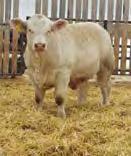
As the new year begins, the National Center for Livestock and the Environment (NCLE) and University of Manitoba (UM) researchers are continuing to support research priorities laid out by the Canadian beef industry. Research teams have hit the ground running with a palette of projects that address both Beef Cattle Research Council and the Manitoba Beef Producers research priorities. Ongoing projects address competitiveness and cost reduction, improve beef demand and quality and enhance public confidence by focusing on environmentally sustainable production methods within the beef value chain and beyond. Several projects have received seed funding dollars from beef producer groups. This funding is then stretched further by matching dollars provided by collaborations and funding programs at federal, provincial and industry levels.
Researchers with the Faculty of Agricultural and Food Sciences are spending grower dollars effectively by practicing systems-based research. With this approach, several research questions are answered in a single project through collaboration with scientists from different disciplines within the university, as well as external partners including universities, government, industry and conservation groups.
Nutrition, feed efficiency and forage utilization
Challenges associated with drought including feed availability and rising feed costs, as well as climate change and public trust are ever-present for cattle producers. University of Manitoba researchers, collaborators and producers are working together to buffer change and create new feed management strategies that will enable livestock production to prosper. Effective use of forages and extending the grazing season can translate to increased profitability. Intercropping corn with high protein forages can equal higher yielding pastures and precision feeding can improve cattle performance.
Researchers with the departments of Animal and Plant Science are evaluating the benefits of intermediate wheatgrass as a dual-purpose crop that can function as a cash food grain crop and as a high-quality forage for grazing beef cattle in late fall/early winter. In this integrated crop-livestock research project, the team is measuring soil productivity, cattle performance, environmental footprint and economic potential of same season food and feed crop. In addition, the group is assessing the suitability of this system to serve as a habitat for songbirds and nesting waterfowl.
A project on corn intercropping strategies for extended winter grazing is in the works for 2022. Animal and Plant Science researchers are planning to use prairie-wide small plot and large pasture studies, coupled with economic analysis, to evaluate the effectiveness of intercropping corn with high-protein forages. The purpose of this practice will be to increase the yield and nutritive value of the pastures for beef cattle grazing in late fall/early winter.
To round up the feed priority, researchers with NCLE have been exploring the use of precision feeding systems to improve performance on pasture through supplementation. An early outcome of this study has shown that precision feeders can be used to supplement cattle on pasture to improve performance without compromising forage utilization.
Environmental sustainability
Addressing our natural environment and its sustainability through research not only ensures we can continue to farm effectively for decades to come but also enhance on-farm profitability. With public and industry interests focused on greenhouse gas emissions, preserving biodiversity, carbon footprinting and overall environmental stewardship in agriculture, the solutions are based in sound research.
Animal Science researchers together with teams from Agriculture and Agri Food Canada (AAFC) and the Alberta Biodiversity Monitoring Institutes (ABMI) are assessing the effects of beef production on biodiversity in Alberta. This project investigates the effects of beef production on many plant and animal species including vascular plants, mosses, lichens, birds, mammals and mites. ABMI holds one of the world’s most comprehensive databases on biodiversity and habitats and when linked with detailed information on Alberta’s
beef production practices the pair can provide a powerful tool in understanding the effects of beef production on biodiversity. Approaches developed in Alberta will then be applied to other regions in Canada.
Should productivity-enhancing technologies be limited in cattle production systems? A research team from Animal Science together with AAFC are examining the impact of productivity enhancing technologies (PET) such as implants and natural feed additives on cattle productivity, GHG’s, ammonia and water use. Results indicate that removal of PETs would increase the environmental footprint including GHGs, ammonia, as well as land and water use associated with beef production.
Researchers with the departments of Animal and Soil Science are investigating the impact of feeding and manure management practices on GHG emissions. Together with a team at Virginia Tech University the researchers are reinforcing the importance of beef production by studying the impact of removing livestock from the landscape with a focus on GHG emissions and on the nutritional adequacy in Canadian populations.
Another study looks at the impact of cattle grazing on water dynamics and nutrient cycling in prairie pasture landscapes. Researchers have collected data on the weather, soils, land use, topography, and land management practices in several watersheds in the western provinces. As a result, the team can define grazing management scenarios and simulate pasture productivity, quality as well as examine nitrogen and phosphorus excretion estimates.
Scientists with Animal Science and AAFC are testing a feed additive to see is if influences methane production. Biochar, a charcoal known for its carbon sequestration capacity was tested to see if its addition to cattle diet would decrease methane production. Results show that addition of Biochar to rations and hay-based diets did not mitigate methane production in cattle.
UM researchers use a holistic approach to address environmental sustainability. Scientists at the University of Manitoba are partnering with conservation groups to better understand the interaction between beef production and our ecosystem to preserve natural environments that are vital to the health of our planet.
Scientists with Institute for Wetland and Waterfowl Research at Ducks Unlimited Canada are working with AAFC and Universities of Manitoba and British Columbia to quantify ecosystem services such as carbon stocks, water quality and biodiversity associated with wetlands in beef production landscapes. The teams have completed the first year of mapping wetlands including 48 sites in the prairie provinces.
The World Health Organization has a priority to recycle food resources and reduce food waste. In one year alone Canadian’s waste over 35 million metric tons of food. Researchers at the Universities of Manitoba and Lethbridge along with AAFC and Manitoba Agriculture are conducting life cycle assessments that calculate environmental impact to determine the land sparing effect and reduction in GHG emissions associated with substitution of cereal grain-based animal feeds with by-products and surplus foods.
Economics and profitability
Working towards a better understanding of on farm management practices will result in increased profitability and a stronger bottom line.
Research teams from Animal Science and AAFC have partnered with Canfax to assess on farm management practices of cow-calf operations with a focus on cost of production, as well as GHG emissions. Canfax, a division of the Canadian Cattlemen’s Association is a group that provides information on market analysis and industry trends to farmers to maximize profits. The research team is using bench marking data gathered from 24 producer groups across Canada to examine on-farm practices effecting cost of production as well as GHG emissions. This research will identify best management practices that can be targeted for policy development and program delivery to improve economic and environmental sustainability of the Canadian cattle industry.
Food Safety
Eliminating incidences of food borne illness due to

microbiological contamination and minimizing expensive food recalls are priorities for the food processing industry and for UM food scientists.
Researchers at the department of Food and Human Nutritional Sciences are determining the ability of E. coli found on stainless steel and polyurethane surfaces to survive and transfer to fresh beef surfaces during processing. The team is also investigating sanitizer resistance and learning which sanitizers are most effective to eliminate E. coli biofilms found on food processing equipment.
Health and Welfare
Information generated by projects that address on farm health and welfare ensure healthy animals, address worker safety, farmer mental health and overall enhance public perception of cattle production systems.
Animal Science Researchers and collaborators from AAFC and the University of Alberta are evaluating Redosier dogwood extract as an alternative to antibiotics to improve growth and health of newly-weaned calves. Red-osier dogwood is a locally grown deciduous shrub well known for its many uses and health enhancing properties, especially with Indigenous groups.
Researchers at the department of Entomology are investigating the relationship between ticks, known transmitters of anaplasmosis, their abundance and risks to cattle and livestock workers. The team has completed the first year of assessments where they determined tick quantities on pasture and their relationship to biting pressure on cattle, horses, and humans.
To further expand research capacity in animal health and welfare, effective January 2021 the University welcomed Meagan King as the Assistant Professor in the Department of Animal Science. King has completed her PhD in Animal Behaviour and Welfare at the University of Guelph. She intends to develop a research program that examines interactions between livestock species and their environment to develop best management practice that support raising animals for food. King is also planning to start a project focused on producer mental health.
Visit the Faculty of Agricultural and Food Sciences outreach website Manitoba Agriculture and Food Knowledge Exchange (MAKE) http://www.makemanitoba.ca for select project highlights on beef production and additional topics in agriculture.
NCLE Team
Animal Science
Emma McGeough
Kim Ominski
Marcus Cordeiro Meagan King Plant Science
Doug Cattani
Yvonne Lawley Soil Science
Mario Tenuta David Lobb
Francis Zvomuya
Entomology

Kateryn Rochon Agriculture Economics Derek Brewin Agriculture and Agri Food Canada
Sara Pogue, Tim McAllister Aklilu Alemu
Emma Stephens Wenzhu Yang
Alberta Biodiversity Monitoring Institute Majid Iravani Ducks Unlimited, Wetland and Waterfowl Research Pascal Badiou Lauren Bortolotti University of Alberta Lingyun Chen

12 CATTLE COUNTRY February 2022 www.mbbeef.ca
Jeff & Jackie Cavers Box 237, La Riviere,
P:
| C:
www.C2charolais.com Annual Bull & Female Sale March 30, 2022 On The Farm La Rivière, MB - 1:00 PM 40 Head Sell Charolais Bulls Plus Heifers & Commercial Heifers T Bar C Cattle Co. Ltd. 306-220-5006 View the catalogue online at WWW.BUYAGRO.COM SA L E M ANA GEME NT C2 Charolais_MBCattl Producers2_Jan22.indd 1 2022-01-07 1:59:30 PM
MB R0G 1A0
204-242-3467
204-242-4448

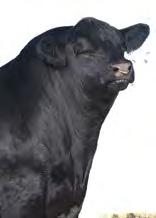








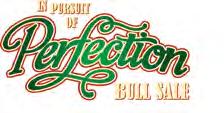







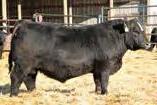








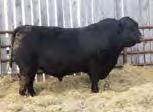








13 CATTLE COUNTRY February 2022 www.mbbeef.ca SimmentalAnnual & Angus Bull & Female Sale March 3, 2022 On the Farm mcauley, manitOba View the catalogue online at www.BuyAgro.com SALE MANAGED BY T Bar C Cattle Co. Ltd. info@tbarc.com | www.buyagro.com Chris Poley: 306-220-5006 Shane Michelson: 403-363-9973 Ben Wright: 519-374-3335 SELLING SIMMENTAL & ANGUS BULLS PLUS COMMERCIAL BRED HEIFERS Glenn & Barry Lowes Eric & Melissa Pateman McAuley, MB Glen: 204-851-5669 | Barry: 204-851-0342 Eric: 306-434-8567 brookecanart@gmail.com mmwilson87@hotmail.com www.jpcattle.com Watch & Bid Online March 10, 2022 1:00 pm at Spring Creek Ranch, Moosomin, SK 90 Red & Black Simmental, Black Angus & Sim/Angus bulls Brian McCarthy & Family Box 467, Moosomin, SK S0G 3N0 Cell: 306.435.7527 Email: brian.mccarthy@live.ca Sale Managed By: Red Simmental Black Simmental Black Angus Sim/Angus Springcreek MB Cattle Country 2022.indd 1 2022-01-07 4:32:15 PM T Bar C Cattle Co. Ltd. Chris: 306.220.5006 C i T Y Old B ll 50 BULL SALE Sunday, February 27, 2022 Black and Red Simmental, Angus and Simm-Angus Bulls www.mjsimmentalangus.com | www.glasmanfarms.com M&J Farms MB Cattle Country Jan22.indd 1 2022-01-07 1:58:53 PM Cattleman’s C onne ction Bull Sale Friday, March 31, 2022 at 1:00 PM At The Farm, Oak River, MB HBH Angus Farms Inc. Box 94, Oak River, MB, R0K 1T0 Sale Managed By: T Bar C Cattle Co. Ltd. Chris: 306-220-5006 Shane: 403-363-9973 Ben: 519-374-3335 www.buyagro.com Visitors are always welcome! Please stop by to see the bulls and have a visit. We will deliver FREE OF CHARGE! Darcy Heapy Ph: 204-365-7755 dheapy@mymts.net www.HBHAngusFarms.com Son’s Sell Brayden Heapy Ph: 431-282-3085 braydenheapy19@gmail.com HF PERFECT STORM 198E EVERBLACK VISION 119F JL ADMIRE 8004 REMITALL F CONNECTION 82G HBH Angus MB Cattle Country 2022.indd 1 2022-01-07 1:54:41 PM Miles & Bonnie Glasman Jared & Chelsey Glasman Russell, MB Home: 204.773.3279 Miles’ Cell: 204.773.6275 Jared’s Cell: 204.796.0999 mjsimmentalangus@gmail.com www.mjsimmentalangus.com Matthew & Leanne Glasman Russell, MB Home: 204.773.3209 Matt’s Cell: 204.773.6055 mlg@glasmanfarms.com www.glasmanfarms.com Sale Managed By: T Bar C Cattle Co. Ltd. Chris: 306.220.5006 Coming Two Year Old Bulls 50 BULL SALE Sunday, February 27, 2022 find us on: Black and Red Simmental, Angus and Simm-Angus Bulls Watch & Bid Online www.mjsimmentalangus.com | www.glasmanfarms.com M&J Farms MB Cattle Country Jan22.indd 1 2022-01-07 1:58:53 PM Miles & Bonnie Glasman Jared & Chelsey Glasman Russell, MB Home: 204.773.3279 Miles’ Cell: 204.773.6275 Jared’s Cell: 204.796.0999 mjsimmentalangus@gmail.com www.mjsimmentalangus.com Matthew & Leanne Glasman Russell, MB Home: 204.773.3209 Matt’s Cell: 204.773.6055 mlg@glasmanfarms.com www.glasmanfarms.com Sale Managed By: T Bar C Cattle Co. Ltd. Chris: 306.220.5006 Coming Two Year Old Bulls 50 BULL SALE Sunday, February 27, 2022 find us on: Black and Red Simmental, Angus and Simm-Angus Bulls Watch & Bid Online www.mjsimmentalangus.com | www.glasmanfarms.com M&J Farms MB Cattle Country Jan22.indd 1 2022-01-07 1:58:53 PM
Thoughts on the markets and what might be in store for cattle producers in the new year
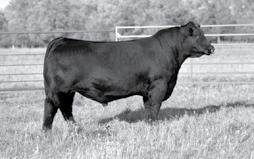



Like every other year before, 2022 has opened with optimism in the beef cattle sector. The question on the table is whether cattle feeders and producers will come away disappointed at the spring prices.
Like every other year, the fundamentals in mid-December were all pointing to an aggressive market in the spring. Fed cattle prices were showing strength and export markets for Canadian beef continued to improve. Even though the feed grain prices did not experience the seasonal drop as expected and supplies of corn from the USA were getting harder to find, feeder cattle demand was still strong. The supply of feeder cattle for the spring sales was predicted to be lower, as many feed strapped producers sold their calves in the fall rather than holding them until spring. With a smaller projected supply, the “supply and demand” ratio should indicate strong prices.
The Christmas break brought cold weather, but it also brought snow, which will create some much needed run off for dugouts and creeks and might help raise the water table. The American feeder cattle market on the lightweight calves under 700 pounds was strong, and with the USA dollar strengthening, the American feedlots started looking north for feeder cattle, putting more competition in the market, especially on the heifer calves. A few of the bigger feeders started offering forward contracts for the fall, which looked appealing. 950-pound steers off grass for August delivery at $200.00 per hundredweight looked attractive as a seller if you already owned the inventory. Some producers contracted open yearling heifers off the grass for late August delivery at $188.00 per hundredweight. Those prices were 10 to 12 cents per pound higher than the top end cash prices paid
RICK WRIGHT The Bottom Line

Cash prices for cattle in Manitoba in late December and early January looked pretty good. 950-pound eastern quality steers averaged around $195.00, 850-weight steers at $197.00 and 800 pounders at $200.00. This made anyone who purchased calves during the peak of the fall run, or held their calves back, feel good about their fall decisions.
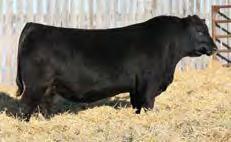
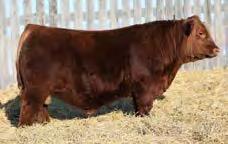
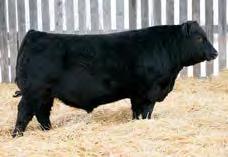
2022 has a couple of ‘Black Swans’ that are circling the cattle market. Just how big of an impact they have on the Canadian cattle market remains to be seen but they certainly have some in the cattle feeding business feeling nervous.
Black Swan number two is the announcement in January that both China and South Korea were banning the imports of Canadian beef. The ban was the result of the discovery of an older cow on a farm in Alberta with a case of atypical BSE. The cow never made it to the processor, and there was no chance that the meat was in the food chain. Once again, China is flexing their ‘economic muscles’ on Canadian agriculture. China is the fastest growing beef importer in the world. China increased their imports from the USA 110% in 2021. If they are not buying Canadian beef, they fill their needs elsewhere. If Japan happens to follow suit, the result would be short of catastrophic for the beef industry.
This will also mean that we depend on the USA to absorb more of our surplus beef. Last year, Canada was the biggest source of beef imports into the USA. Canada accounted for 28.6% of all American beef imports. The USA imports beef to fill the supply gaps that are linked to their export markets. Experts on the south side of the border are predicting small imports of beef from all sources in 2022. The packers are almost certain to use the reduction of export opportunities to keep the fed cattle prices under pressure in the short term.
has all the potential to see record prices for cattle! The big ‘if’ is the weather, and if we don’t get favourable seeding and pasture conditions, well that is another story for another time. Like all cattle producers, here is hoping for rain, greener pastures, good crops, and higher cattle prices.

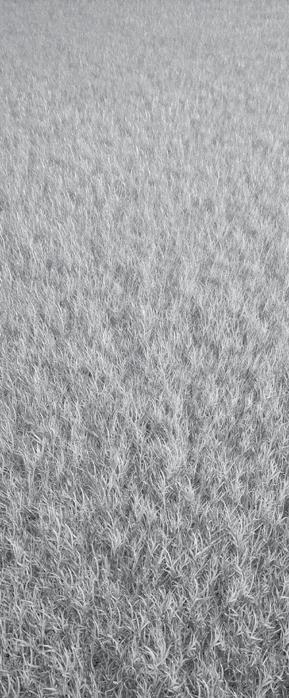


Black Swan number one is the Omicron variant and the latest wave of COVID-19. This fast spreading, extremely contagious mutation is causing labour issues at many of the packing and processing plants across North America. None of the processors have had to close completely, but many are not at capacity because of workers on quarantine. If the harvest lines or the processing shifts are short, the packers need fewer cattle. Fewer cattle mean more cattle backed up, and with the supply chain backed up, there is little reason for the

One other cause for concern is the shrinking supply of feed grains and no reason to indicate any price relief in the first four to five months in 2022. On the 10th of January, Lethbridge barley was at $450 metric ton, with corn priced at $418 mt. Corn in Nebraska was at $5.84 (US) per bushel.
If the ‘Black Swans’ land, the heavier feeder cattle have potential for a downward correction. The lightweight cattle under 700 pounds should remain very strong as the “grasser” operations build inventory gambling that there will be enough grass for the summer.
Until next time, Rick.
14 CATTLE COUNTRY February 2022
MCRAE LAND & LIVESTOCK Brett & Chantel McRae 204-729-1018 ANGUS VALLEY FARMS - Bruce McRae 204-242-4502 MC-THREE FARMS - Tyson McRae 204-726-3205 WEDNESDAY 9TH 2022 March VIEW CATALOGUE & VIDEOS ONLINE AT WWW.MARMACFARMS.NET BLACK ANGUS FEATURING YEARLING AND TWO YEAR OLD BULLS Power & Calving Ease Bulls WE INVITE YOU TO TOUR THE BULLS ANYTIME & JOIN US AT THE FARM SALE DAY MAR MAC FARMS BLAIR, LOIS & MELISSA MCRAE BLAIR 204-729-5439 | LOIS 204-573-5192 RED ANGUS BULL SALE BLACK ANGUS Red & Black Angus & Simmental SIMMENTAL At the farm , South of Glenboro, MB 1:00 p.m. HAMCO CATTLE CO. Selling 50 Red & 50 Black Angus Yearling Bulls Selling 12 Red & 20 Black Angus 2 Year old Bulls Angus Bull Sale Your source for Elite Angus Genetics! 24th Annual Saturday, March 19, 2022 üSired by AI Sires & Top End Herd Bulls üAll bulls have passed a semen test üBulls on home performance test - data available Developed on a high forage TMR ration Selected from a 550 purebred cow herd Hamco Bull Insurance program available Delayed Payment Plan available Free Board until April 15 Online Bidding with DLMS Bull Videos will be available on line For more information or catalogues view us on line at hamcocattleco.com or contact us The Hamiltons Glen & Carleen (204) 827-2358 Larissa & Kyle (204) 526-0705 Cell larissa_hamilton@hotmail.com Dr. David & Shelley (204) 822-3054 (204) 325-3635 Cell Embryo@mymts.net 2022
Happy Heart Health Month! Tips for a happy and healthy heart
BY: TAMARA SARKISIAN, RD
Did you know that February is Hearth Health Month? And not because of Valentine’s Day, but simply for raising awareness around heart disease and how to keep your heart healthy. Many factors can influence our heart health and diet plays a huge role in this process. It is important that we get a balance of nutritious foods daily to keep our hearts pumping efficiently.
A wholesome diet that includes a variety of vegetables, fruits, lean proteins, and whole grains is ideal for
Beef Shepherd’s pie
POTATO LAYER
Ingredients:
• 6 medium potatoes, peeled and cut in halves
• 1/4 cup plain Greek yogurt
• 1/2 cup milk
• 2 T bsp butter
• 1 tsp garlic powder

• salt and pepper to taste
BEEF LAYER

Ingredients:

• 2 tbsp olive oil
• 1 large onion, diced

• 2 carrots, peeled and diced
• 3 cloves garlic, minced
• 2 cups mushrooms, diced
• 1 ½ lb lean ground beef



• 1 tsp marjoram
• 1/2 tsp thyme
• 3 tbsp flour
• 1 ½ cup beef stock









• 2 tbsp tomato paste
• 1 cup corn
• 1 cup frozen peas
• salt and pepper to taste
keeping our blood pressure in check and adding less strain on the heart muscles. Lean cuts of beef are great sources of protein that can be beneficial for our heart health as they provide us with vitamins and minerals which contribute to healthy blood flow. For a healthy heart, we also want to focus on including ½ your plate vegetables to assure that you are getting enough vitamins, minerals, and fibre. Potassium, a mineral found in potatoes, is beneficial for lowering blood pressure and fibre (usually abundant in most vegetables) helps to keep your cholesterol in check which can all contribute to
DIRECTIONS
Step 1: Mashed potato layer
In a large pot, boil potatoes until soft and drain water. Place pot of potatoes back onto stove top on low heat, add plain yogurt, milk, butter and garlic powder and mash together until potatoes are smooth. Season with salt and pepper to taste.
Step 2: Ground beef layer
In a separate large saucepan, add olive oil and sauté onion, garlic, and carrots for 3-4 min on high heat. Add mushrooms and cook for another 5-6 minutes or until mushrooms soften. Transfer sauteed vegetables onto a separate plate and place pan back onto stove top. Cook ground beef on medium high heat in the same pan, breaking it up with a wooden spoon and cook until meat is brown. Return cooked vegetables into ground beef and mix in marjoram and thyme. Sprinkle flour, pour in beef stock and stir in tomato paste until well combined. Simmer on medium high heat for 6 min. Add frozen corn and peas and cook for another 2 min.
Step 3: Putting it all together
In an oven safe Pyrex dish (12 x 8-inch) or large cast iron pan, spread ground beef mixture evenly at the bottom of the dish. Top with a spoonful of mashed potato and spread evenly to create a second layer. Bake on 400 degrees for 20-25 minutes and garnish with fresh parsley if desired.
keeping your heart healthy.
If you are looking to make a healthy and comforting meal for this cold month of February, you can still enjoy your favourite foods without compromising your health. My mom’s famous shepherd’s pie is a meal that screams comfort but can still be healthy as it includes a balance of fibre, protein, and nutrients! See below for my mom’s classic shepherd’s pie recipe.

15 CATTLE COUNTRY February 2022 www.mbbeef.ca
Nerbas Bros. Angus Black Angus Seedstock Shellmouth, MB / 2km South PUREBRED & COMMERCIAL “Commercially Based Forage Genetics” NERBASBROSANGUS.COM • (204) 773-6800 QUALITY ANGUS since 1958 Offers for Sale by Private Treaty 50 Yearling Black Angus Bulls and 10 2 yr. old Bulls Sires Represented: *Bar-E-L Candidate 10C *BM Archer 29D *Young Dale Absolute 3D *BJ Harvestor *Young Dale Hi Definition 185B *Black Meadows Feel Good *Young Dale Eden 126E *Musgrave Sky High *Frey Cowboy Logic 181F Young Dale Absolute 3D Fed Responsibly to Ensure Longevity! All bulls are Bunk Fed TMR Silage Ration Fertility Tested and Delivery Available Musgrave Sky High 1535 The WALKERS Miniota, MB Call Bill at 204-567-3782 Several Packages of *Open Heifers (groups of 10) *Cow/Calf Pairs (available end of March) Son of Cowboy Logic 181F
Photo credit: Tamara Sarkisian
StockTalk Q&A Feature Brought to you by Manitoba Agriculture
Tim Clarke Livestock Specialist - Beef Manitoba Agriculture

Beausejour, MB R0E 0C0
204-768-0534 Tim.Clarke@gov.mb.ca
Question: How do I utilize high nitrate and canola silage feeds safely?
Answer: Canola regrowth this past summer proved to be a blessing for many producers looking for additional feed. On a dry matter basis, crude protein in canola forage that is in the late flower/early pod stage of maturity generally averages 12 to 14 per cent and can be as high as 18 per cent. Total Digestible Nutrients TDN (energy) typically ranges from 55 to 60 per cent. As the crop matures, the levels of protein and energy decrease significantly. A feed analysis is recommended to determine actual nutrient values. Canola tends to accumulate nitrate and sulphur. It is recommended that both parameters be included in the feed analysis.
Cattle may develop scours when fed canola hay or silage as the predominant source of roughage. It is recommended that canola hay or silage comprise no more than 50 per cent of the total feed intake, depending on nutritional analysis. Canola contains high levels of sulphur (0.5 to 1.3 per cent). It is recommended that total dietary sulphur not exceed 0.4 per cent on a dry matter basis. If cattle diets exceed this level of sulfur intake, there may be several implications.
Cattle fed long-term diets of these roughages may develop a condition called Haemolytic Anaemia and die. Feeding at levels of 50 per cent or less should prevent this condition from occurring.
Feeding canola forage to cattle for long periods may inhibit the use of trace minerals, particularly copper and selenium. Copper deficiency leads to poor fertility, and selenium deficiency leads to white muscle disease in newborns. Ensure that recommended levels of copper and selenium are fed daily.
In some situations, high levels of dietary sulphur create hydrogen sulfide gas in the rumen. This can lead to sulfur-induced polioencephalomalacia (PEM), a dietary disease that can cause lesions to form in the brain. Clinical signs include a lack of muscle co-ordination, facial muscle tremors, teeth clenching, circling, stupor and blindness. These conditions are soon followed by recumbency, convulsions and death. Fatal cases of PEM have been confirmed in Saskatchewan. It was determined that these were caused by the consumption of large amounts of canola forage with high sulfur levels.
Sulphur is present in groundwater, as well as in feed. It is a good idea to check the sulphur level of both the feed and the water to avoid the cumulative build-up of sulphur in the rumen.
may not be safe enough to feed if original levels were extremely high.
Some plants are more likely to accumulate nitrates, including Canada thistle, pigweed, lambs quarter, kochia, wild sunflower, smartweed, Russian thistle, oats and barley. Perennial forages, such as brome grass and alfalfa, are not normally high in nitrates, but should be monitored if you are planning on cutting immediately after a fall frost.
Younger plants, and especially annual plants, tend to contain higher nitrate levels. For that reason, it is always important to test all feeds after poor growing conditions. Concentrations tend to be highest in the stems, then leaves, then grain.
Try to avoid feeding high nitrate feeds to sick, hungry, pregnant or lactating animals. These animals have a lower tolerance level to the nitrate as compared to healthy cattle. Make sure all animals have access to plenty of clean drinking water as this will help dilute the nitrate in the animal’s body. To effectively dilute high nitrate feeds, you should have a feed test done. Once you know how much is in the feed, you can dilute it to the safe level of 0.5 per cent nitrate (NO3) (dry matter basis). Table 1 shows the different levels and effects of nitrates in your forage.
Table 1.
% Nitrate DM basis Effect on Animal 0-0.3 Virtually safe 0.3-0.6 Moderately safe in most situations, if animals are stressed, limit to 50 per cent of the ration 0.6-0.9 Potentially toxic to cattle, do not use as sole feed source 0.9 and up Dangerous to cattle, often causes death
Animals will need to be adapted slowly to feeds containing nitrates. After a period of adaptation (one to two weeks), the animal’s tolerance level to nitrates increases and higher levels can be fed. However, if the animals are off high-nitrate feeds for a few days, they will need to be re-adapted to the problem feed if it is to be fed again. Adaptation periods can be sped up by feeding limited amounts of the ration frequently throughout the day, instead of one large feeding once a day. As mentioned above, the low and high nitrate feeds need to be blended together to decrease the toxicity. This does NOT mean putting out one bale of low and one bale of high nitrate hay free choice because the animals may eat only the high nitrate feed, which could be toxic.
Feeding supplemental grain (two to five lbs./head/day) with high nitrate forages can assist with the dilution of the nitrate level. The energy provided by the grain also helps the rumen micro-organisms convert the nitrite into ammonia, which can then be excreted via urine and feces. Balancing rations is important with feeding high nitrate feeds, since the nitrate level can increase the animal’s requirements of vitamin A. If the ration requires supplemental protein, avoid using non-protein nitrogen (NPN), such as urea, since this can make the situation worse.
Symptoms of nitrate poisoning include rapid pulse rate, increased respiration rate, labored breathing, muscle tremors and weakness and the mucosal membranes will be darker in colour (blue colour on inside of lips and tongue) and the blood will be a chocolate brown in colour. Different classes of livestock have different tolerance levels, as shown in Table 3 below.
Table 3. Maximum safe levels (dry matter DM basis) % in ration
Animal Type %NO3 Feedlot Ruminants (feeder cattle) 0.74 Pregnant Cows 0.49 Young Calves 0.49 Pregnant Horses 0.92 Horses 1.23 Pregnant Sheep 0.49 Sheep 0.74 Dairy 0.15
NITRATES
Feed tests on canola and other types of annuals for greenfeed or silage are coming back with high levels of nitrates. When growing conditions are normal, nitrates are not a bad thing. They are the building blocks of proteins. They are absorbed by the roots and sent to the leaves where the sun’s energy (photosynthesis) turns them into proteins.
However, when growing conditions are disrupted (e.g., frost, drought, hail, extended cloudy periods, spray drift) excess nitrate levels can accumulate. Nitrates can also accumulate in crops that are grown in soils with high levels of nitrogen fertilizer. This is typically the case in the mid-growing season when nitrogen (N) levels have not been depleted by crop growth, or late in the season if crop growth has been delayed by cool temperatures or dry conditions. This year, we see nitrate issues as a result of the excessively dry conditions and/or in crops with delayed growth and excess levels of N left over in the soil. After an extended dry period, moisture along with warm temperatures are needed to resume growth and convert built up nitrates into protein (>22°C is optimum). As fall temperatures drop to 10°C, growth will continue to slow and nitrates may continue to accumulate.
Since nitrate levels do not dissipate during the hay curing process, options are to wait a few days to see if temperature improves enough for growth to resume, or to cut and ensile the forage. Ensiling generally reduces nitrate concentrations by 40 to 50 per cent.
After a hard killing frost, cut the crop immediately as there is no chance for the plants to use up the nitrates by photosynthesis, and you will cut off the nitrate supply from the roots. Always test before feeding, because a 50 per cent reduction in nitrates
We want to hear from you
For the next issue of Cattle Country, a Manitoba Agriculture forage or livestock specialist will answer a selected question. Email your questions to Tim.Clarke@gov.mb.ca
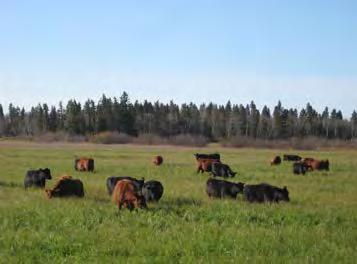
StockTalk Q&A for Cattle Country is brought to you by Manitoba Agriculture. We encourage you to email your questions to our department’s forage and livestock team, who have a combined 175 years of agronomy experience. We are here to help make your cattle operation successful. Contact us today.
Marnie McCracken The Pas 204-620-1545 Marnie.McCracken@gov.mb.ca
Elizabeth Nernberg Roblin 204-247-0087 Elizabeth.Nernberg@gov.mb.ca
Pam Iwanchysko Dauphin 204-648-3965 Pamela.Iwanchysko@gov.mb.ca
Tim Clarke Arborg 204-768-0534
Shawn Cabak Portage 204-239-3403
Glenn Friesen Winnipeg 204-770-7266
Tim.Clarke@gov.mb.ca
Shawn.Cabak@gov.mb.ca
Glenn.Friesen@gov.mb.ca
Juanita Kopp Beausejour 204-825-4302 Juanita.Kopp@gov.mb.ca
16 CATTLE COUNTRY February 2022 www.mbbeef.ca
Photo credit: Manitoba Agriculture
2022 bull sales
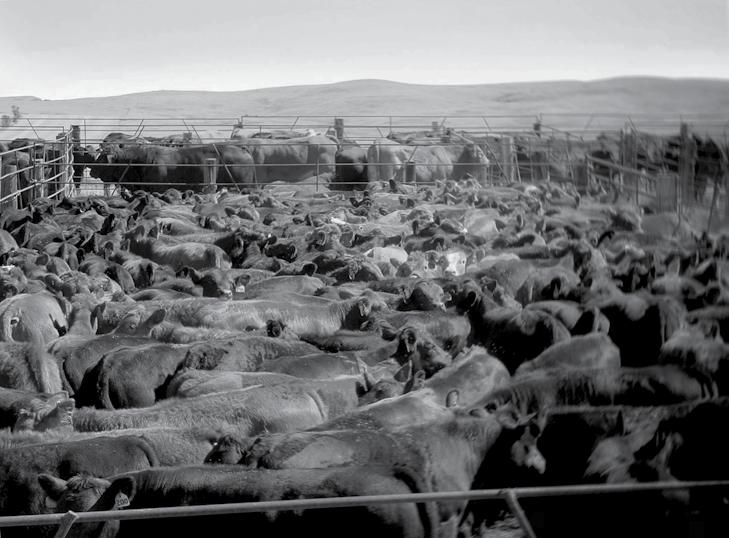
www.mbsimmental.com

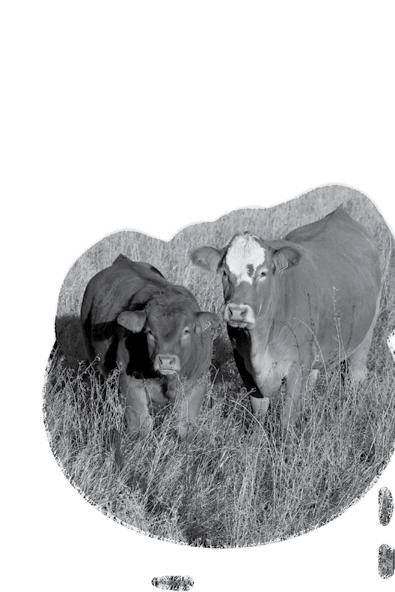
President: Melissa McRae 204-573-9903
Secretary: Laurelly Beswitherick 204-637-2046 b2@inetlink.ca

Feb. 21 Rendezvous Farms 18th Simmental Bull & Female Sale, Ste. Rose du Lac, MB
Feb. 27-28 Horner / Downhill/ TSN Online Simmental Bull Sale, FarmGateAuctions.ca
Feb. 28 M&J / Glasman Farms Simmental & Angus 2 year Bull Sale, Russell, MB
Mar. 2 Maple Lake Stock Farms Kick off to Spring Bull Sale, Hartney, MB

Mar. 3 JP Cattle Co. Annual Simmental & Angus Bull Sale, Mcauley, MB
Mar. 7 Canadian Central Bull & Female Simmental Sale, Neepawa, MB
Mar. 8 Bonchuk Farms Annual Bull Sale, Virden, MB
Mar. 9 Mar Mac Farms & guests Simmental, Red & Black Angus Bull Sale, Brandon, MB

Mar. 11 Rainbow River Simmentals 7th Annual Bull & Female Sale, FarmGateAuctions.ca
Mar. 11-12 83 South Simmental Bull Sale, FarmGateAuctions.ca
Mar. 12 Rancher’s Select 3rd Annual Simmental Bull Sale, Neepawa, MB
Mar. 13 Crowe Bros. Online Bull Sale, FarmGateAuctions.ca

Mar. 13-14 McIntosh Ranch Online Simmental Bull Sale, FarmGateAuctions.ca
Mar. 13-15 AJB Online Simmental Bull Sale, FarmGateAuctions.ca
Mar. 14 Oakview/Perkin/Triple R Simmental Bull Sale, Darlingford, MB
Mar. 15 Prairie Partners Bull & Female Sale, Killarney, MB

Mar. 17 Transcon’s Premium Beef Simmental Bull Sale, Neepawa, MB
Mar.
Mar.
Mar.


17 CATTLE COUNTRY February 2022
18 High Bluff Stock Farms Charolais & Simmental Bull Sale, Inglis, MB
21 Transcon’s Cattle Country Bull Sale, Neepawa, MB
check us out at UNMATCHED ACCESS ���� THIS SPRING, USE A LIMOUSIN BULL Get in on what other producers already k now to be true TAG THEM LIMO Limousin RFID Tags Available MORE POUNDS = MORE PROFIT Amaglen Limousin 204-246-2312 / 204-823-2286 View bulls and females for sale online at www.amaglenlimousin.ca Campbell Land & Cattle 204-776-2322 Bulls and females available by private treaty on farm and Douglas Bull Test on March 26. Email cam.limousin@gmail.com Cherway Limousin 204-736-2878 Red and black polled bulls and females for sale www.cherwaylimousin.ca Circle Dot Ranch Wayne Yule 204-383-5390 Yearling Limousin and Limo x Angus bulls for sale on farm selected from 45 years of breeding. Visitors welcome. Diamond T Limousin 204-838-2019 / cell 204-851-0809 2 Year old and Yearling bulls for sale by private treaty on the farm. Email diamondtlimo@gmail.com Hockridge Farms Brad 204-648-6333 Glen 204-648-5222 Bulls for sale on farm www.hockridgefarms.ca L & S Limousin Acres 204-838-2198 Bulls sell March 26 at Douglas Bull Test Maplehurst Farms Bob 204-274-2490 Bulls for sale on farm and at the Douglas Bull Test, March 26 Park Performance Limousin Rick 701-340-2517 Breeding stock available private treaty on farm. Calves for sale in fall of 2022. Triple R Limousin Art 204-856-3440 / 204-685-2628 45 2-Year-Old and Yearling bulls available on farm. Limousin, plus Angus and Limo x Angus. Look for fall female sale. MANITOBA LIMOUSIN ~ ASSOCIATION ~ FIND US ON FACEBOOK manitoba_Limousin_Association
25 Cattle Capital Bull Sale, McCreary MB
Vet Practice Pearls
BY: DR. TANYA ANDERSON, DVM
A new year and new challenges… many uncharted. It is at times extremely difficult to remain positive but positivity fuels a drive for change and improvement. And change is good… nothing moves ahead without taking the time to reflect on what works and what does not.

This month’s topic is about quick pearls in beef practice — some dos and don’ts for keeping replacements. Bull buying has started as has heifer selection for retention and sale. Get out your calving records and review them prior to going out to the pens.
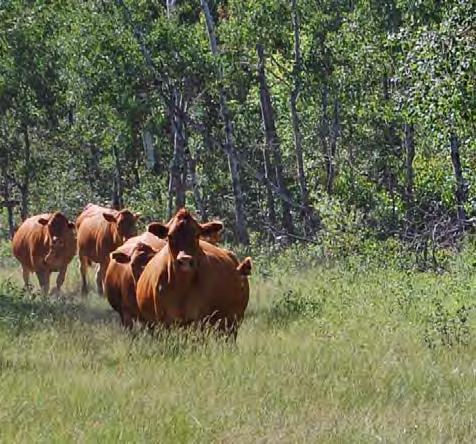

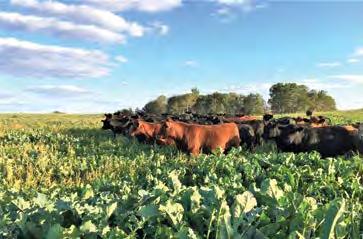

Tip #1 - Sick as a calf means no as a replacement

Remember that calves treated at <3 months of age are 2.5x more likely to die before reaching maturity and will have a decreased growth rate pre-weaning. These animals never reach their genetic potential for pro duction — for milk production, frame size, muscling. Remember that the leading causes of nursing calf health problems are diarrhea, pneumonia and navel ill. These all result as a failure of passive transfer. These calves did not get enough colostrum… whether through lack of access (poor mothering, bad weather, etc.), poor quality (genetic, malnutrition) or too little quantity (malnu trition, genetic, twins, leakage/theft pre-calving). The causes are many and varied. If you have sick calves every year, work with your veterinarian and look at the problem from all angles and consider all the possible reasons rather than only the reasons that you want to see as the issue.
Then XX them out of your potential replacement list. Cows that get pneumonia almost always have chronic lung abscesses that rupture or reactivate to cause repeat ed pneumonia episodes that ultimately result in death or premature culling with lowered lifetime production. Calves that have recovered from septic disease where bacteria from a navel infection or severe pneumonia or diarrhea get into the blood stream and disseminate throughout the body organs are particularly at risk of future health issues. This can be a cause of joint stiffness (vertebral bones in the spine, hips, hocks, knees), general malaise (liver, kidney, bone, heart or lung abscesses) and infertility (seminal vesiculitis in bulls)… just to name a few.
I really hope this is not a trend but I am now seeing at least two to three cases a year of navel abscesses in mature cattle. The ones I get to necropsy are often the purchased purebred high value animals. I wish I had a video of the fountain of pus blasting upward after I opened a navel abscess in a yearling bull that was a poor
doer from the day he was delivered to a client’s farm. Don’t get me wrong…he was a great looking prospectsale pictures and stats were excellent but he had navel ill as a calf and it haunted him.
Tip #2 - Don’t keep replacements off cows that you help calve Hard-calving cows produce hard-calving heifers. The most common cause of dystocia in cattle is fetopelvic disproportion. This is most common in heifers when the fetus is of normal size for its breed but the maternal pelvis is not big enough, or the fetus is unusually large and cannot be delivered through a pelvic canal of normal size. If you have a heifer or cow that cannot deliver a calf of “usual size” on her own, she needs to leave. Cows that have difficulty during calving have significantly lower fertility at rebreeding and their calves are more prone to failure of colostral transfer and subsequent neonatal disease.
Note that this does not mean dystocia due to other issues — uterine issues, malpresentations (head back, legs back, breech, etc.). Those are individual circumstances and not repeatable. However, scar tissue or intrapelvic masses will not resolve and would be valid reasons for culling but are not a genetic issue. Ask
your veterinarian for advice on culling during dystocia management.
Tip #3 - Bull scrotal size does matter
Fertility is a difficult trait to select for since most fertility traits are lowly heritable and difficult and time-consuming to measure (e.g. - cow longevity). Cross-breeding and good nutrition are well documented to improve herd reproduction but too broad to apply quick easy measurements to improve performance.
Scrotal circumference is one easy to measure and highly heritable trait that is one of the most accurate indicators of puberty in bulls. It predicts sperm output as well as the future sperm producing characteristics such as motility and an increased % normal. Having fertile bulls available to breed cows through multiple breeding seasons is essential for herd profitability.
Research also has shown that selecting for increased scrotal circumference leads to decreased age at puberty in the female offspring. While this seems like a bit of a negative — smaller heifers getting bred younger, heifer pregnancy rate is an important measurable trait that has significant economic benefit. Cattle that conceive early in the breeding season tend to calve early the remainder of their lifetime and have greater lifetime productivity.
18 CATTLE COUNTRY February 2022 www.mbbeef.ca
Graeme Finn, Union Forage .........................................................403-312-2240 Amber McNish, Union Forage ......................................................204-264-0609 Jonathan Bouw, Edie Creek Angus .............................................204-471-4696 Jason Bednarek, 2B Land & Cattle ..............................................204-768-0184 Ben Fox, Fox Technologies.................................204/638/4181 / 204-647-5060 Ken Van Driesten, Nutrisource/Dairytech/Bullseye ...................587-727-0433 Michael Mott, Michael Mott Livestock ........................................204-861-0319 Joey Bootsman, Bootsman Ag Enterprises ................................204-720-8386 Darren keown, 3K Holdings ..........................................................204-937-7333 Scott & Darryl Perkin, Perkin Seed & Soil Company ..................204-534-8137 YEAR ROUND Forage and Grazing PERENNIAL FORAGES • ANNUAL COVER CROP FORAGES • DROUGHT GRAZING FORAGES Toll Free: 1-877-COW-CHOW WWW.UNIONFORAGE.COM GRAZE YEAR ROUND Perennial Forages | Annual Forages High Performance Alfalfa | Hybrid Fall Rye WWW.FARMGATETIMEDAUCTIONS.CA ONLINE Bull Sale MARCH 2022 4-5 TH TH of OfferingYEARLING & TWO YEAR OLD GELBVIEH BULLS bulls are available for viewing at the farm anytime vist our website jsjlivestock.com JAMES:431-740-5443 | SHAYLA:204-741-0018
Agricultural Crown Land Lease Auctions Being Held Online


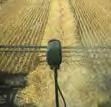


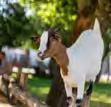
January 31 to February 4
(Province of Manitoba News Release)

The Manitoba government’s agricultural Crown land lease and permit auctions will be held online beginning Monday, Jan. 31, Agriculture and Resource Development Minister Ralph Eichler announced January 12.
“The online auction format ensures we can offer all Manitoba producers the opportunity to lease agricultural lands while remaining in accordance with current public health orders,” said Eichler. “Potential bidders are encouraged to become informed prior to the auction by researching the parcels and units of interest and becoming familiar with lease or permit obligations.”



A number of agricultural Crown land parcels will be available to rent for haying, grazing or cropping. The official listing of agricultural Crown lands available for rent can be found at: http://resd.ca/leases_and_permits/LPproperties. aspx#agLeasePermit.

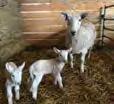

The online auctions will be hosted by Garton’s Auction Service from Jan. 31 to Feb. 4, with further information to follow on https:// gartonsauction.com/.
These leases and permits are available to farmers and ranchers to provide an additional land base to conduct agricultural activities. The Agricultural Crown Lands Leasing Program supports the sustainable expansion of the livestock herd in Manitoba, contributes to ecological goods and services, and supports mitigation and adaptation to climate change.

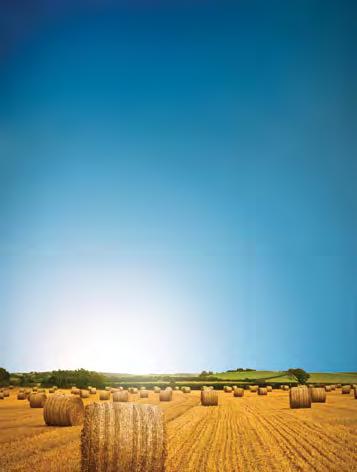
For more information about the upcoming auctions, visit www.manitoba.ca/agriculture/ land-management/crown-land or contact your local ARD and MASC Service Centre.


19 CATTLE COUNTRY February 2022 www.mbbeef.ca 43rd Annual General Meeting FEBRUARY 10, 2022 Register at: mbbeef.ca JOIN US ONLINE 58th Annual Manitoba Test Station Bull And Female Sale March 26, 2022 Starting at 1:00 p.m. sharp MANITOBA LIVESTOCK CASH ADVANCE INC. Interest Free Loan Advances available up to $100,000 www.manitobalivestock.com Producer total Advance Limits have been increased to $1,000,000 #212-530 Century St. Winnipeg MB R3H 0Y4 Subject to Credit Approval 1-866-869-4008 Loan Advance Commodities include: Livestock, Grains & Oilseeds Low Interest Bearing Loan Rates “Our friendly staff await your call!” Satur day, Feb 19th, 2022 2:00 P.M. @ Ste. Rose Auction Mar t 56 Bulls Sell 3 Br eeds Red Angus, Charolais, Red Angus x Simmental– Hybrids Denbie Ranch Denis and Debbie Guillas 204-447-2473 Cell: 204-447-7608 Myhre Land and Cattle Hans Myhre Cell: 204-648-6416 Bar J Jack Robertson 204-843-2246 Justin Robertson 204-871-3086 Red Angus Charolais Hybrid –Red X Simmental Two year old, Long Yearling and Yearling Bulls that are well grown out and N Not Pushed! T They will last! View Catalogue and Videos of Bulls @www.dlms.ca – cattle vids or srauction.ca and Denbie Ranch Facebook COVID protocols will apply Denbie Ranch & Guests Bull Sale Sale Day Online Bidding with DLMS Schedule on farm visits to view bulls prior to sale date.
MORE RESEARCH = BETTER RETENTION
Tag retention is important to a successful traceability system and the Canadian Cattle Identification Agency (CCIA) has done our research. Ongoing tag testing trials, intensive research and direct producer feedback on their experiences have resulted in manufacturers improving their tag offerings. To learn more about CCIA’s research activities visit https://www.canadaid.ca/traceability/research/
IMPROVED TAGS = BETTER RETENTION
SHEARWELL RFID — An innovative one-piece wrap-around beef tag, the first of its kind. The microchip is overmolded in a plastic insert so readability and read range of the transponder are never compromised.

DESTRON DMR RFID — Upgraded version of the Destron eTag. Improvements include a fully molded outer tag housing for better durability and water resistance with an enhanced locking mechanism for greater retention.
ALLFLEX - Is continually striving for the improvement of their product and the new design and manufacturing methodology for their male tag stud is in response to tag retention issues reported by producers.
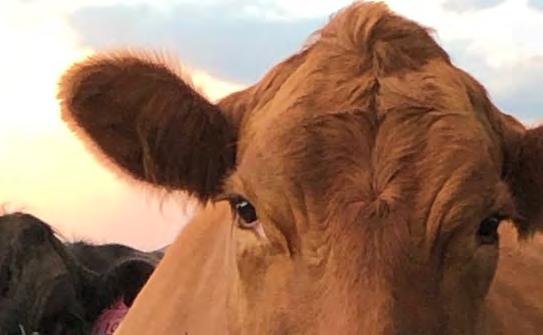
BEST PRACTICES = BETTER RETENTION

Better tag application practices mean better tag retention. Always use the manufacturer recommended applicator with the tag and follow placement guidelines.


20 CATTLE COUNTRY February 2022 www.mbbeef.ca Check out our new and improved tag offerings at tags.canadaid.ca or contact us directly at info@canadaid.ca | 1-877-909-2333 To provide feedback on your tag experience, fill out and return the Approved Indicator Quality Control Form found at: https://www.canadaid.ca/wp-content/uploads/2021/11/Approved-Indicator-Quality-Control-Form_fillable-2021-11-19.pdf CCIA
AGENCY canadaid.ca
CANADIAN CATTLE IDENTIFICATION
CCIA
CANADIAN CATTLE IDENTIFICATION AGENCY
Photo courtesy of Canadian Gelbvieh Association
CONCERNED ABOUT TAG
RETENTION? WE ARE LISTENING





 TYLER FULTON President’s Column
TYLER FULTON President’s Column






































 BY WAYNE HILDEBRAND
BY WAYNE HILDEBRAND



 Elizabeth Nernberg Livestock Specialist Manitoba Agriculture
Elizabeth Nernberg Livestock Specialist Manitoba Agriculture










 BY THE NATIONAL CENTRE FOR LIVESTOCK AND THE ENVIRONMENT, UNIVERSITY OF MANITOBA
BY THE NATIONAL CENTRE FOR LIVESTOCK AND THE ENVIRONMENT, UNIVERSITY OF MANITOBA
 BY DR. TANYA ANDERSON, DVM
BY DR. TANYA ANDERSON, DVM




























































 BY ANGELA LOVELL
BY ANGELA LOVELL

















 BY ANGELA LOVELL
BY ANGELA LOVELL

































 BY: RON FRIESEN
BY: RON FRIESEN


















 BY: ANGELA LOVELL
BY: ANGELA LOVELL





 BY: WAYNE HILDEBRAND
BY: WAYNE HILDEBRAND








 BY: DR. SUSAN MARKUS (LAKELAND COLLEGE, LIVESTOCK RESEARCH SCIENTIST) & DR. MARY-JANE ORR (MBFI, GENERAL MANAGER)
BY: DR. SUSAN MARKUS (LAKELAND COLLEGE, LIVESTOCK RESEARCH SCIENTIST) & DR. MARY-JANE ORR (MBFI, GENERAL MANAGER)


 BY PETER FROHLICH, NATIONAL CENTRE FOR LIVESTOCK AND THE ENVIRONMENT (NCLE), UNIVERSITY OF MANITOBA
BY PETER FROHLICH, NATIONAL CENTRE FOR LIVESTOCK AND THE ENVIRONMENT (NCLE), UNIVERSITY OF MANITOBA














































 BY PETER FROHLICH, NATIONAL CENTRE FOR LIVESTOCK AND THE ENVIRONMENT (NCLE), UNIVERSITY OF MANITOBA
BY PETER FROHLICH, NATIONAL CENTRE FOR LIVESTOCK AND THE ENVIRONMENT (NCLE), UNIVERSITY OF MANITOBA












 BY: DR. MARY-JANE ORR, MBFI GENERAL MANAGER
BY: DR. MARY-JANE ORR, MBFI GENERAL MANAGER

 BY RON FRIESEN
BY RON FRIESEN





















































































 BY: WAYNE HILDEBRAND
BY: WAYNE HILDEBRAND


















































 BY: DR. TANYA ANDERSON, DVM
BY: DR. TANYA ANDERSON, DVM


































 BY RON FRIESEN
BY RON FRIESEN


















 BY WAYNE HILDEBRAND
BY WAYNE HILDEBRAND




















































































































